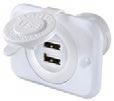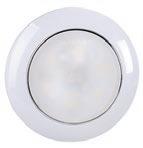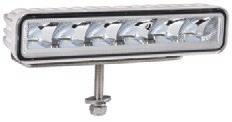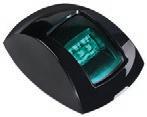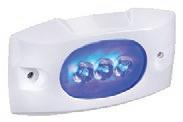

























Summer means different things to thousands of anglers in various parts of the country. Throughout the tropical north, for example, the Wet Season is about to kick off. It rains almost daily and it’s hot and humid for much of the time, but it can still be a productive period to fish for a variety of species if you are prepared to put up with the conditions. At the opposite end of the continent it’s usually hot, dry and windy during summer, with many of the most popular angling targets available in good numbers. Melbourne’s Port Phillip Bay and Westernport are usually at their best for snapper, SA’s mulloway surf fishery is firing on all cylinders, and trout fishers in Tassie can look forward to some of the year’s best dry fly action.
Summer is often a season of climatic extremes, with the recurrent La Nina phenomenon compounding things and doing its best to push our collective weather tolerance to the limit. New South Wales looks like recording its wettest year on record, severely impacting not only the freshwater scene, but also a lot of estuary, inshore and offshore fishing situations. Perpetually dirty coastal water has pushed a lot of pelagics further out to sea, while many of the more popular estuary systems have been rendered virtually unfishable for weeks at a time. The same applies in South-East Queensland and, to some degree at least, in North-East Victoria. It’s certainly been a trying time along much of the continent’s East Coast, and we all hope the rain stops as summer rolls on, allowing a big chunk of the country’s population to regain some sort of normality.
Although I’m not a huge fan of hot weather, I really enjoy some of the fishing action that comes with it in my home state. These days, chasing yellowfin whiting on the flats is right up there with my favourite things to do. These fabulous fish have become warmwater icons in SA and WA, gathering a cult-like following, particularly among top-water lure tossers. Our yellowfin, which are very closely related and look similar to the East Coast sand whiting, are readily accessible around the state once the inshore waters start to warm up. They are keen lure chasers and fabulous fish to eat — a combination that has rocketed them to superstar status in recent times. Our tackle stores love them, as most serious flats specialists carry an imposing arsenal of expensive whiting surface poppers and mini stickbaits, many of which are fished on $500-$700 finesse outfits.
Summer is also the time when billfish venture within trailer boat range of Narooma, Port Stephens, Jervis Bay and dozens of other East Coast ports, and although El Nina may force anglers to travel wider to locate them this year, the action should still be worth all the effort. Catching a 100kg black or striped marlin from a 6m trailer boat is
•
•
•
•





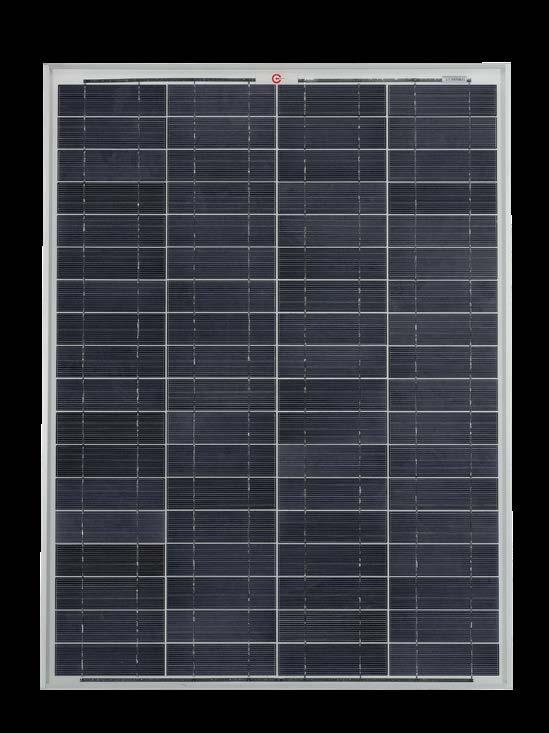

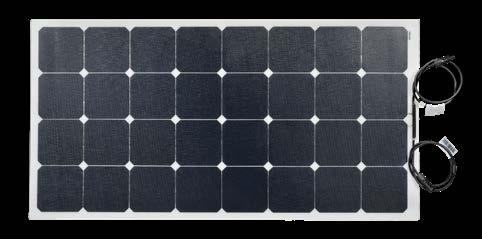
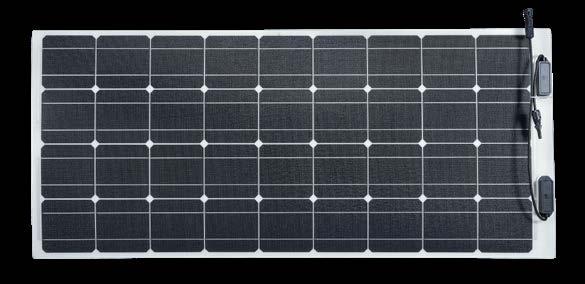
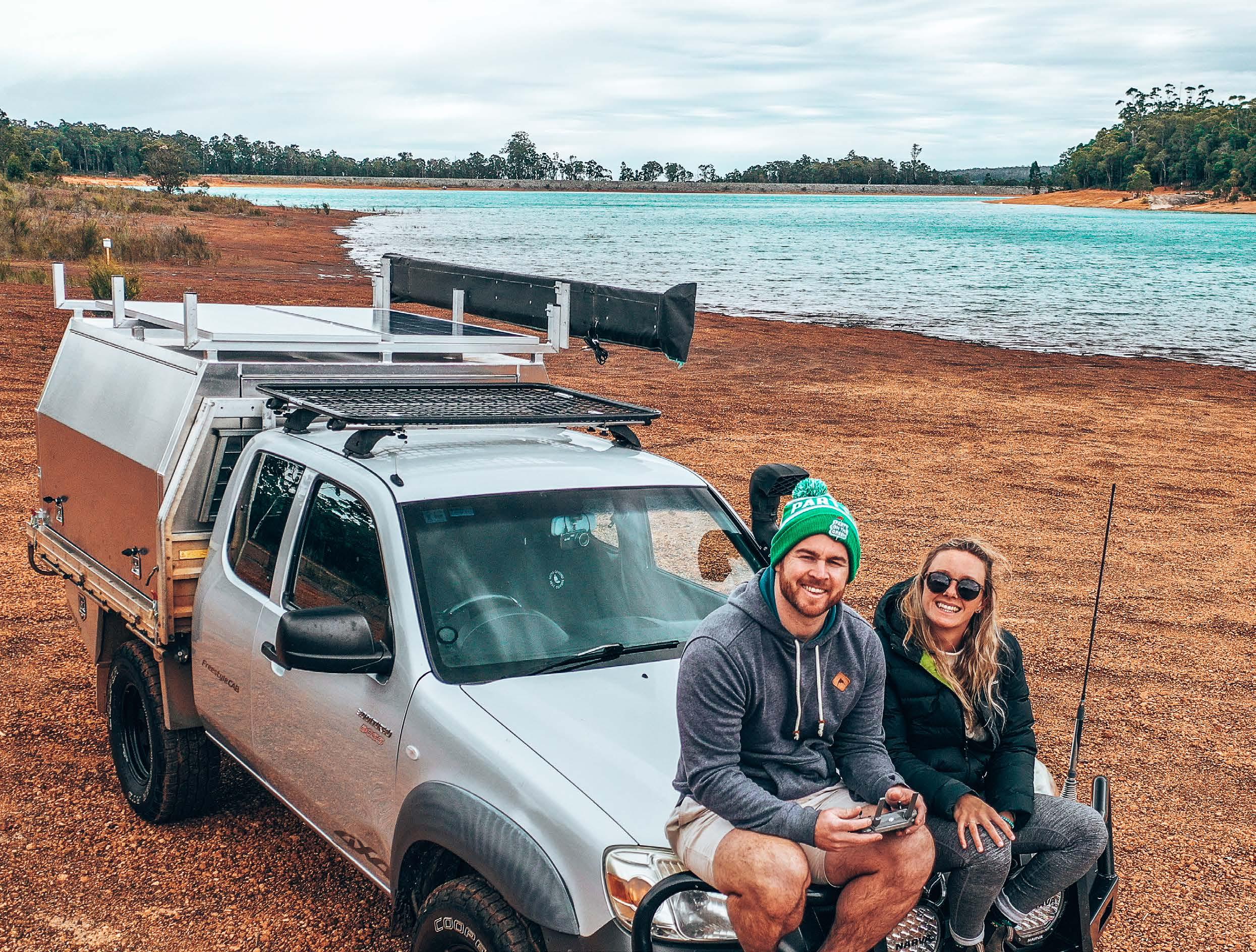
spectacular fishing, and something that will always keep blue water enthusiasts coming back for more. I’ve only ever caught one trailer boat billfish — a black marlin of around 80 kilos — and I can tell you it was 30 minutes of my fishing life I’ll never forget!
For those in the southern half of the country, warm summer water usually brings with it those succulent blue swimmer crabs. We catch them by the bucketful down here in SA, and it’s the same over in the West, particularly in locations like Mandurah’s Peel-Harvey Estuary, where the season opens on December 1 and runs through the warmer months. Blue swimmers (also known as blue manna) occur in all states except Tasmania, but are definitely more prolific in SA and WA — and they are simply delicious!
Another renowned location that fishes at its very best in the summer months is WA’s Steep Point. Famous for its land-based action on big Spanish and shark mackerel, sailfish, yellowfin tuna and even marlin at times, Steep Point is a true LBG Mecca, drawing anglers from Perth and other southern locations between November and March. As the productive rock ledges in this spot face north, they are favoured by prevailing offshore summer winds that facilitate gas ballooning — the technique that accounts for the vast majority of gamefish hook-ups. I’ve been lucky enough to fish Steep Point on three occasions over the years, and can tell you it’s among the most spectacular and productive land-based locations in the country.
So, whether it’s brown trout on a dry fly, mulloway from the surf, mackerel from the rocks or marlin from a tinny, the next three months should offer decent helpings of action. Whether or not La Nina throws more spanners in the works remains to be seen, of course. All you can do is tackle up, keep an eye on what’s happening in your desired location and go for it when conditions permit!
Congratulations to our competition winners from last issue, 1st - Ryan DeGraaff (VIC), 2nd - Steve Beard (VIC) and 3rd - Jordan Bramble (NSW), will all receive their prizes from Barambah Lures.










TASMANIA HAS A WELL-DESERVED REPUTATION AS AUSTRALIA’S TROUT FISHING MECCA... BUT IT’S STILL POSSIBLE TO MISS OUT, OR TO FARE BADLY, ESPECIALLY IF YOU AREN’T WELL PREPARED. IN THIS PRICELESS GUIDE STARLO CLEARLY SPELLS OUT THE CRITICAL ELEMENTS THAT GO INTO PLANNING A SUCCESSFUL TASSIE TROUT TRIP, AND OFFERS SOME INVALUABLE TIPS THAT CAN HELP TURN YOUR FIRST OR YOUR FIFTIETH VISIT INTO THE TRIP OF A LIFETIME.
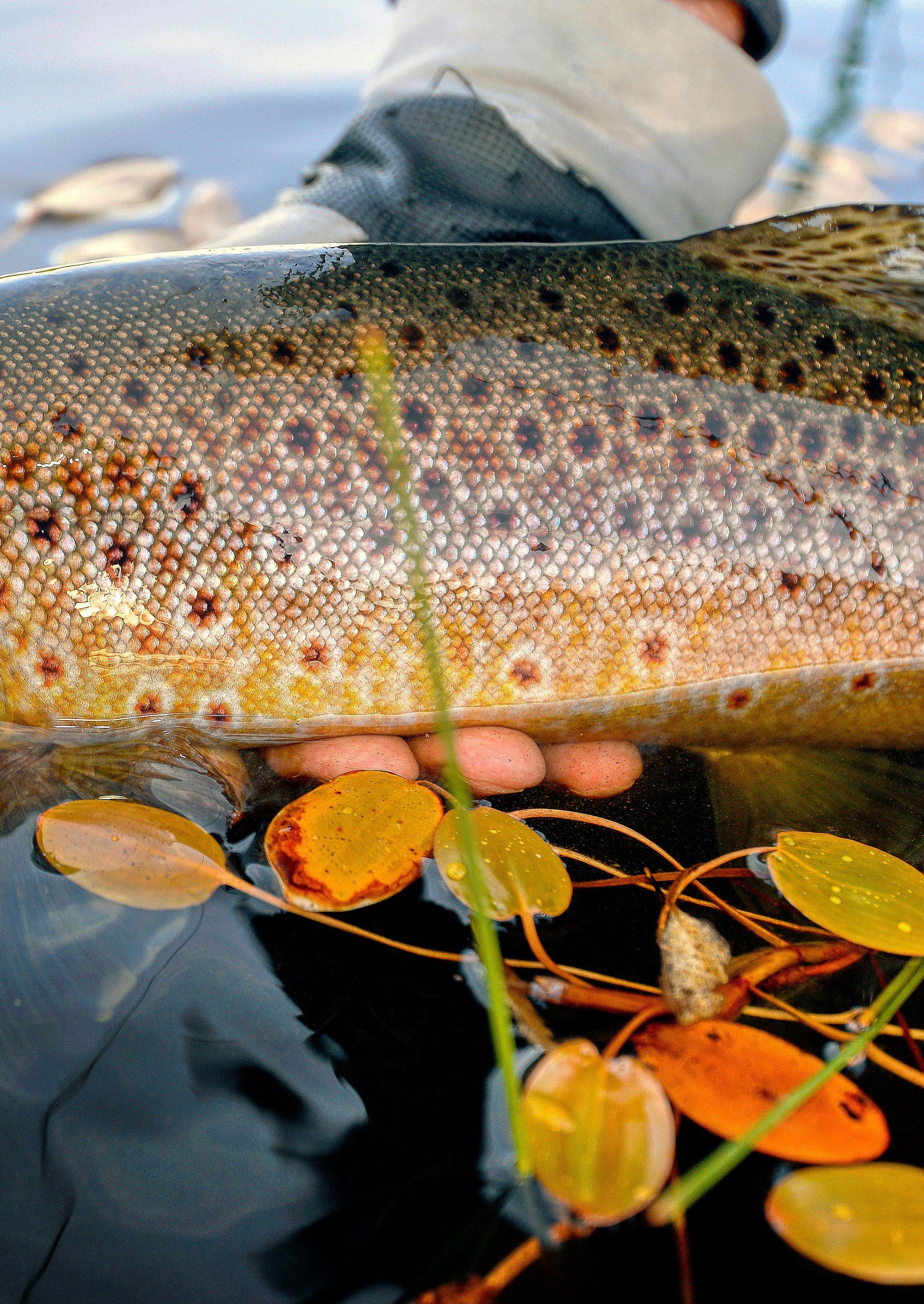
Our island state of Tasmania is justifiably renowned throughout the angling world for its exceptional standard of trout fishing. Cool temperatures, abundant clean water, a mountainous central plateau and a relatively sparse human population all combine to create the perfect environment for salmonid species, despite the fact that these fish are not native to this part of the world, and only reached far flung Van Diemen’s Land thanks to the Herculean efforts of a few diehard European settlers who wouldn’t take no for an answer.
The saga of exactly how fertilised trout and salmon eggs were transported literally from one end of the earth to the other — nestled in layers of moss sandwiched between sheets of ice in the dank holds of creaking sailing ships — makes for fascinating reading.
A gorgeous Tasmanian wild brown comes to the net, fighting all the way.
Not surprisingly, there were several failures before the eventual success of this epic endeavour in 1864, and it’s worth remembering that the addition of brown trout eggs to that fragile cargo was really something of an afterthought. The fish species those early sportsmen (yes, almost all of them were men) really wanted to relocate and “acclimatise” in the antipodes was the highly esteemed Atlantic salmon. But, as it turned out, salmon were largely unsuited to their intended new home. Once liberated, they migrated down Tasmania’s rivers to the ocean beyond and simply vanished. Today, the descendants of those salmon provide the basis for a valuable aquaculture industry, but apart from semi-regular escapees fleeing the floating sea cages, salmon don’t play a particularly big part in Tasmania’s recreational fishing fortunes. However, the same certainly can’t be said of trout!
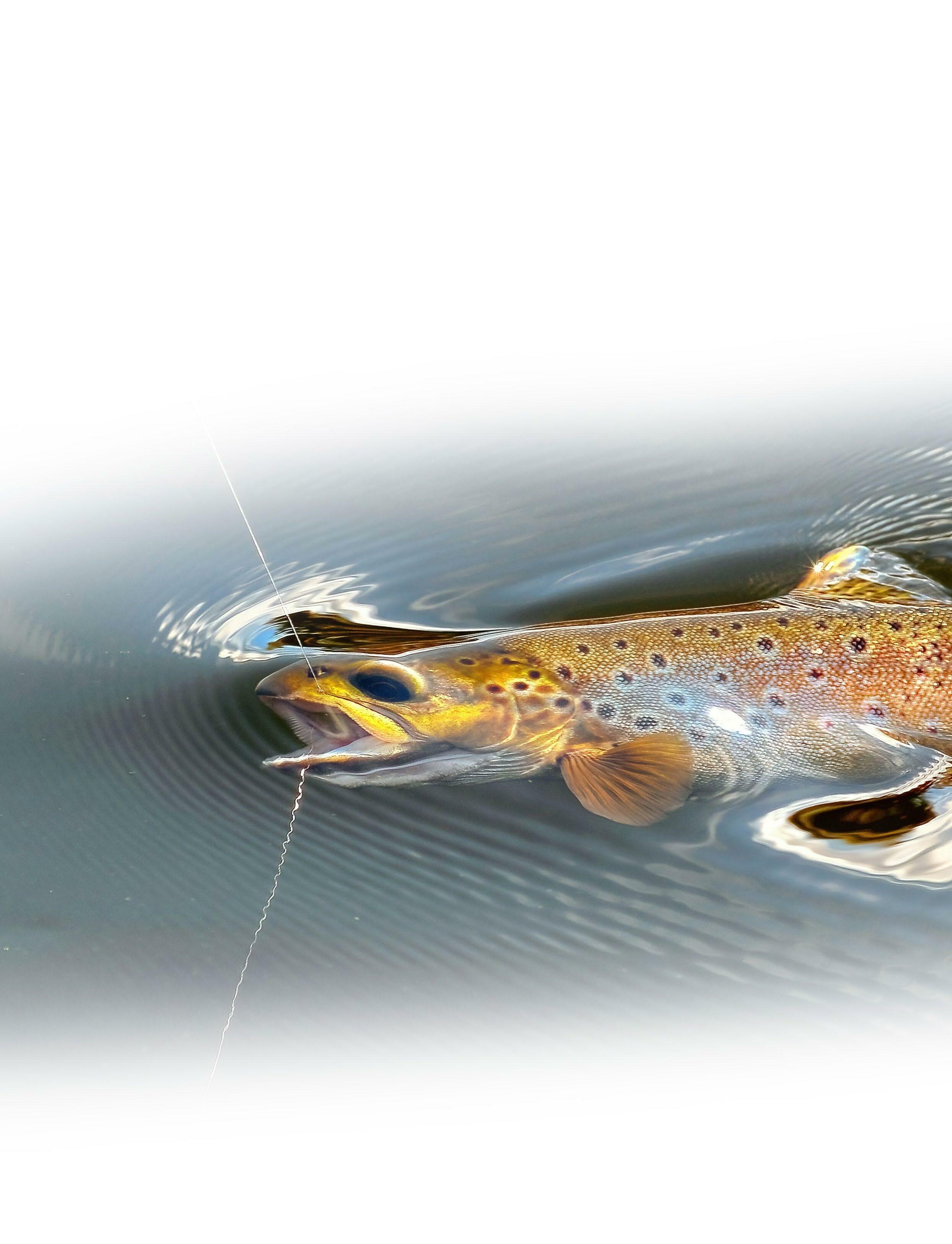
Brown trout from distant British waters such as Lochs Leven and Lomond in Scotland thrived in their new Tasmanian homes, as did the chrome-bright Californian rainbows that arrived to join them a few decades later. Today, this pair (along with a sprinkling of brookies and tiger trout) provide the basis for a bountiful sport fishery that has grown to become a vital component of the overall Tasmanian economy, and a massive drawcard for footloose fishers from the mainland and much further afield.
But make no mistake: as trout-rich as Tasmania’s rivers and lakes are, this is not always the easiest of fisheries to unlock. The vast majority of Tassie trout — especially the browns — are wild-spawned progeny of hundreds of generations of “immigrants” that have evolved and adapted beautifully to their adopted home on
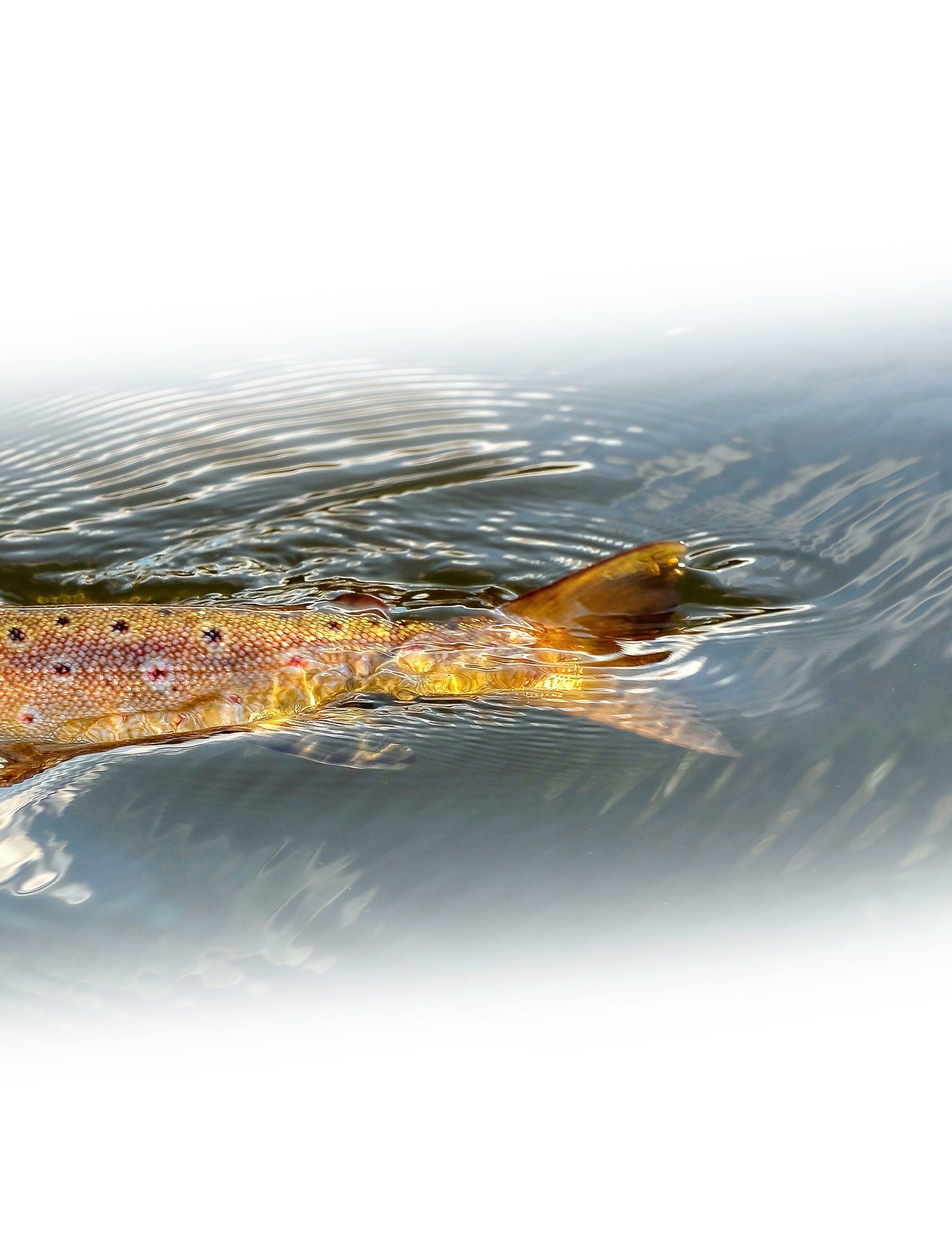
this rugged island, set deep in the storm-tossed Southern Ocean. They are wily, cautious, well-educated and often fickle creatures living in a harsh, changeable environment. Consistently fooling them with a bait, lure or fly can sometimes call for a significant level of cunning. You will generally earn your Tasmanian trophy trout. In many ways, that simply makes them even more valuable prizes… But it also means it’s reasonably easy to miss out, especially if you get a few important details wrong.
I suspect that more than the odd first-time fishing visitor to the Apple Isle comes home from their trip somewhat disappointed at the results achieved. My aim in writing this feature is to help you avoid joining those ranks of the underwhelmed and disheartened by equipping you with some of the basic knowledge needed to plan a successful trout foray to the Devil’s Playground… So, pay attention!
www. spooledmagazine .com.au
If the stereotypical New Zealand trout scenario is one of big, rambunctious rainbows living in deceptively deep, powerful, snowfed rivers, then its Tasmanian equivalent is a more refined and genteel vision of red-spotted wild brownies sneakily finning their way through the weedy, ankle-deep margins of a shallow highland lake, selectively sipping tiny insects from the surface layer.
Naturally, there are a myriad exceptions to these fishing clichés, as there are to any stereotypes. New Zealand has more than its share of “educated” still-water browns, and Tasmania boasts some great river fishing for rainbows. But those hackneyed images still make a good starting point for getting a handle on the unique nature of Tasmanian trouting.
The bottom line is that a little bit of finesse often goes a long way in Tassie. If you’re a fly fisher, that can mean long leaders with fine tippets, and possibly smaller flies than you’re familiar with at home. If you cast or troll lures, it might mean more discrete offerings than you’d typically choose on Eildon or Eucumbene. Regardless of the gear you use, it also equates to an increased necessity for stealth and subterfuge: camouflaged or neutrally-coloured clothing, slow movement, quiet voices, and a willingness to simply sit silently and watch, rather than barge up and begin casting. Tasmanian trout tend to reward the patient, the careful and the cunning. No matter how experienced you might be at catching trout on the mainland or in other parts of the world, I would strongly suggest hiring a professional fishing guide for at least one full day, especially on your first Tasmanian foray. You will learn more from a competent guide in just a few hours on the water than you would discover on your own, by trial and error, over the course of a couple of weeks. It can literally be a fasttrack to success, and you’ll be able to apply the lessons you learn well beyond that particular day and waterway. Trust me, it’s money well spent.

When it comes to finding a guide, make sure you end up with a certified, qualified and experienced operator. The best way to do that is to check that they’re a member of Trout Guides and Lodges
Tasmania (TGALT): the peak body for such professionals in the island state. Searching TGALT’s website is the perfect way to identify the right guide for you. Just go to: www.troutguidestasmania.com.au
Tracking down a guide should be just a part of your “homework” before departing for Tasmania on a trout trip. You’ll also want to bone up on the current rules and regulations, study relevant material on the various locations you plan to fish (as well as some back-ups), and learn at least a little about the changing habits and food sources of Tassie trout across the season.
This homework might also help you decide on the best time window and itinerary for a visit, depending on exactly what you’d most like to achieve.

A good guide will not only help you find and catch fish, but also offer valuable pointers to improve your casting and presentation strategies… Well worth the money!

Roger Butler of Red Tag has been guiding for many years, but is now stepping down to hand the business over to Ray Curran.
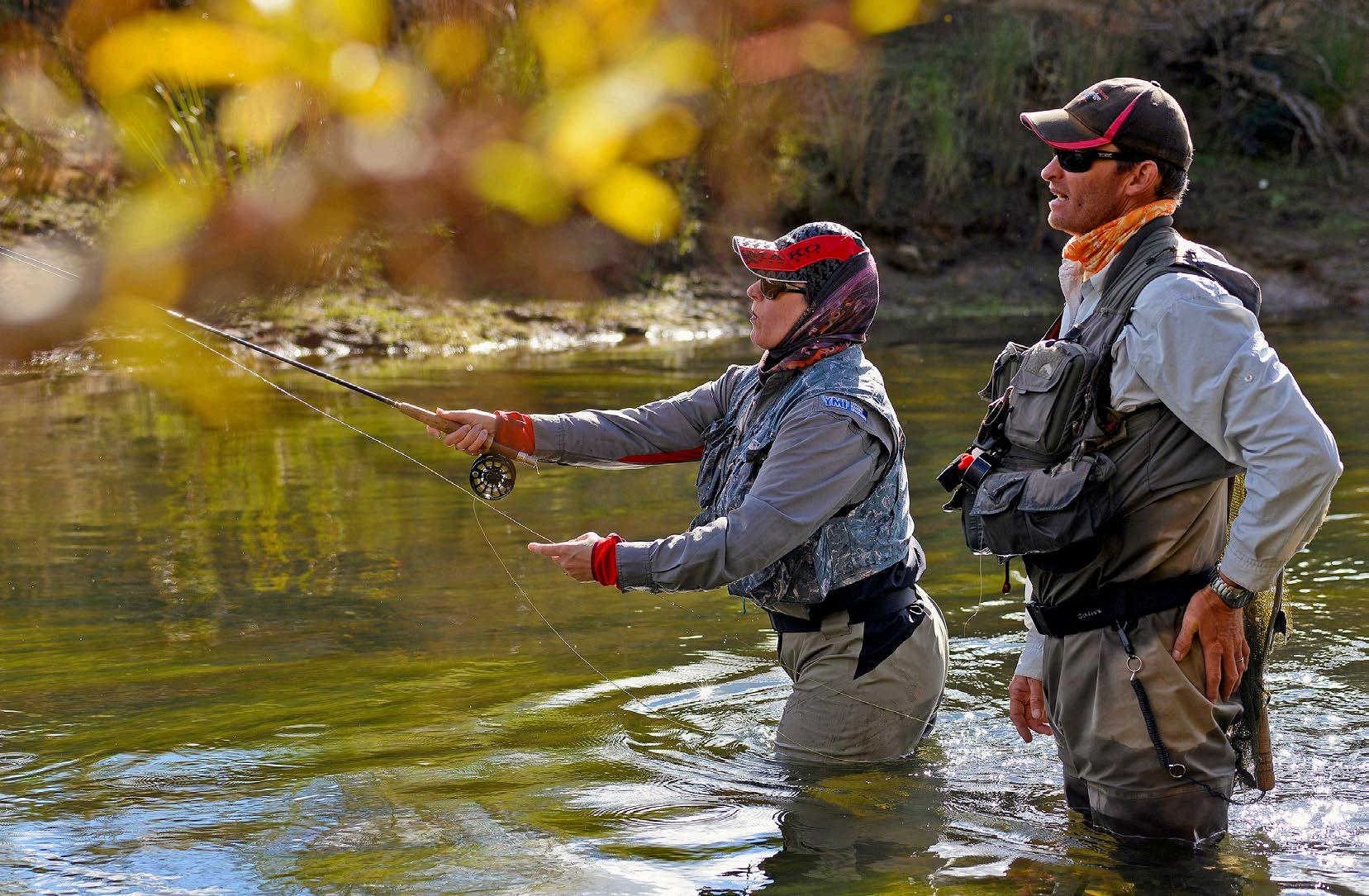
Despite what some Aussies still seem to think, there is no shame whatsoever in hiring a guide, especially on a new water, or when pursuing a method you haven’t tried before or are still trying to master. If you pick a good guide, the lessons you learn will dramatically fast track your fishing, and pay handsome dividends for many years to come.
Tasmania has a wonderful peak body for professional guides and lodges in the form of TGALT (Trout Guides and Lodges Tasmania). You’ll find a full listing of all their registered fishing guides, as well as accommodation options and other service providers at: www.troutguidestasmania.com.au
Jo and I have been fortunate enough to fish with quite a few Tassie guides over the years. Here (in no particular order) are just a few of our favourites, all of whom we are very happy to personally endorse:
Ken Orr’s Tasmanian Trout Expeditions: Ken is Tasmania’s longest-serving professional fishing guide, with well over 40 years of on-water experience. He’s also a certified FFF Casting Instructor. Ken and his Xtreme Guiding Team will create a package to specifically fit your skill levels and expectations. www.orrsometassietrout.com.au
Roger Butler’s Red Tag Trout Tours: Roger is another veteran Tasmanian guide, and has made a specialty of putting fly fishers onto trout in Tasmania rivers and streams. While gradually retiring from active guiding himself, Roger is in the process of handing over to the very skilled Ray Curran. Roger and Ray can craft a unique package for you that includes everything from accommodation and transport to wonderful meals, and even a nice drop of red to wash them down with! www.redtagtrout.com
Nick May’s The Highland Fly: Nick is Hobart based ,but also has digs in the Central Highlands. He can personalise an individual tour for you, provide advice on accommodation, and get you into some brilliant fishing from his Quintrex Hornet on any of the highland waters or beyond. Along with Ken Orr, Roger Butler and Ray Curran, Nick also runs wonderful introductory fly workshop days at Herne Lodge, which has its own private lake. www.thehighlandfly.com.au
Rod Turton’s Trout Flat Out: Rod is a Hobart-based guide with a great boat and a willingness to guide anglers of all skill levels using any form of tackle, in both salt and fresh water. While his passion is trout on the fly, Rod also chases bream, flathead and even kingfish on lures, and is one your best bets if you hanker to catch a sea-run brown trout in the Derwent estuary or beyond. www.troutflatout.com.au/tfo/
Peter Donati’s Unique Fishing Tours Tasmania: Rather like Rod Turton, Launcestonbased Peter Donati is a true “all-rounder” who’s happy to guide anglers in the fresh or salt, using bait, lures or flies. He’s an absolute gun on big King George whiting, bream and even surf casting for gummy sharks and salmon, but his abiding love is chasing trout on fly: in either the streams of the north and north east, or any of Tasmania’s myriad lakes. One of Peter’s favourite still waters is Launceston’s Four Springs — a world-class trophy trout fishery. www.uniquefishingtours.com.au
There are many other great guides in TGALT, too, including the likes of Peter Hayes, Jason Garrett, Chris Stopp, Daniel Hackett, Matt Stone, Scott Murphy, Peter Broomhall, Mike Tenner, Gary France and others. You’ll find them all (and more) on the TGALT website, which I strongly recommend checking out.
Some visitors are surprised to learn that the Tasmanian trout season on many of the State’s waters opens at the beginning of August — much earlier than in most other Australian and New Zealand jurisdictions. In reality, however, you need to be a fairly hardy soul (and perhaps a tad mad!) to want to chase trout up in the Central Highlands during August! That said, there can be some excellent action at lower altitudes in August and September, especially for spin fishers.
August through to November also encompasses the annual “whitebait” run in most Tasmanian coastal rivers and, as such, is the perfect time to chase so-called sea-run trout. These are mostly wild browns that choose to drop down into tidal estuaries to hunt the little baitfish as they migrate upriver, although there are also isolated pockets of tidal water rainbows to be found in a couple of waters.
The author with a “sea-run” or estuary-dwelling brown trout from the tidal reaches of Hobart’s Derwent River, taken on a lure and light spin gear. Three casts later he caught a bream!

Sea-runners are best targeted with baits, lures or various wet flies. They can be notoriously difficult to find and fool, but if you crack it, they’re very special fish to catch. There are also a few genuine monsters mixed in among them, especially on the north west coast, although even Hobart’s Derwent produces the odd trophy sea-runner each year.
By the time Hobart Show Day rolls around in late October, keen fly fishers are expecting to see more regular hatches of insects such as mayflies, especially at lower altitudes and on prolific waters like Four Springs Lake, near Launceston, as well as the many lowland rivers and streams. However, spells of milder weather can also see mayfly duns popping up like little sailing boats on the higher lakes, such as Penstock, Arthurs, Woods, Great Lake and Little Pine.

By early to mid-November, it’s very much “game on” for fly fishing across most of the island state, with the trout action switching between nymphs and dries, depending on the day and even the hour… Be adaptable!
This little river-dwelling brown was tripped up with a mayfly pattern.
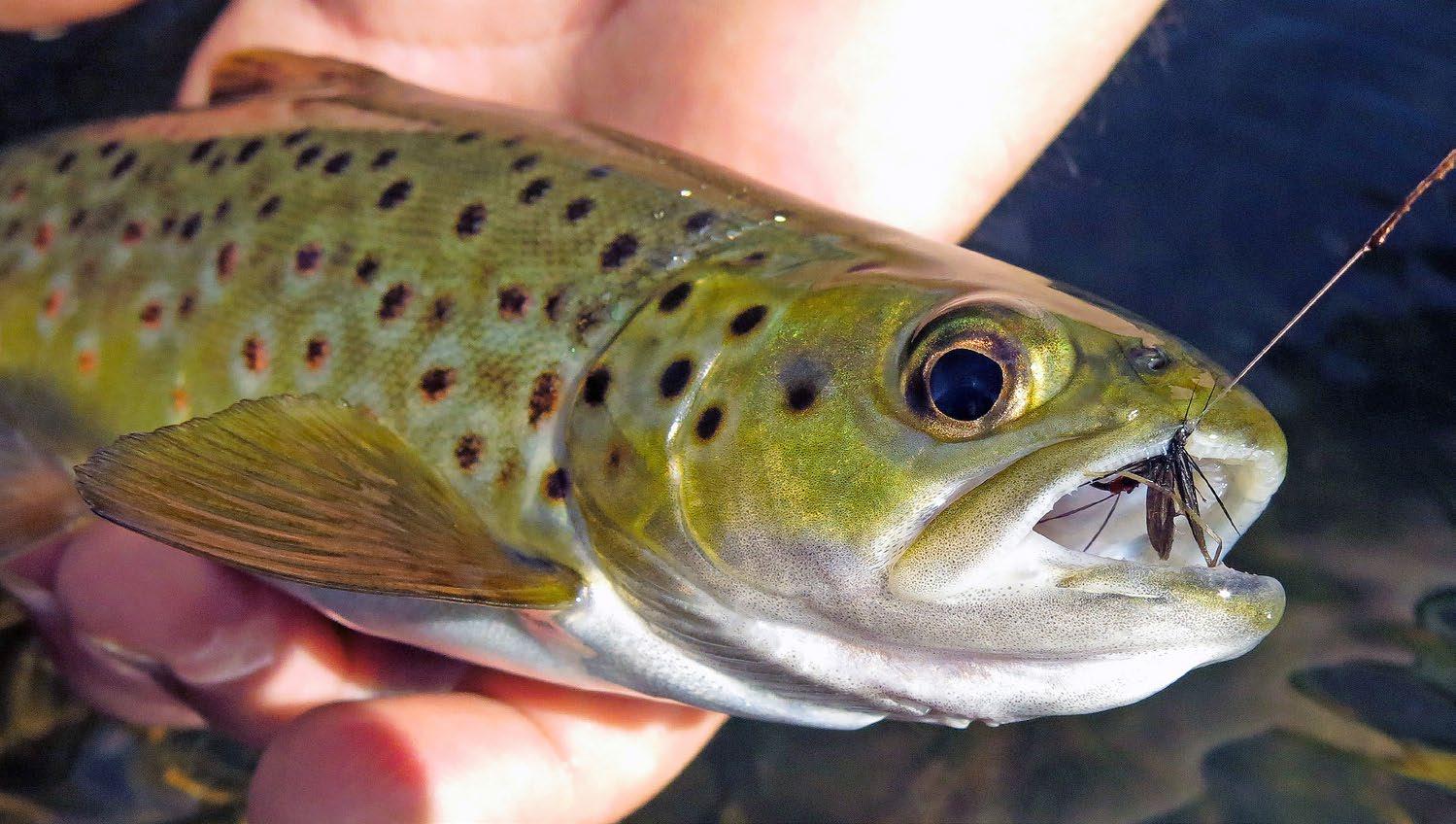
What you wear and how well you prepare for your time on Tasmanian trout waters can not only spell the difference between success and failure, or pain and comfort — it can literally be a matter of life and death!
Tasmania is the land of four seasons in a day, and sometimes it cycles through all four of them in much less than 24 hours. In fact, perhaps the only predictable part of Tasmanian weather is its unpredictability. This aspect intensifies as you travel to more elevated altitudes in the Central Highlands, and is especially applicable in the shoulder seasons of spring and autumn. That said, remember that it can (and often does) snow somewhere on the island at any time of year, even in December and January… Be prepared!
Whatever the weather is like when you set out in the morning, always carry extra clothing, and especially a quality wind- and water-proof jacket that can be worn over either waterproof pants or waders. In addition, consider packing a complete change of spare clothing — from thermal underwear, socks and various layers to an outer shell and beanie — all stored in a sealed dry bag stashed safely in your backpack, vehicle or boat. It can be a life saver… literally!
Two brands of apparel really stand out for me when I consider dressing for Tassie trout fishing, and both have their origins in cold climates. Firstly, Ridgeline. This respected clothing brand originated in New Zealand, but now also has a very strong presence here in Australia. Immensely popular with hunters and hikers, Ridgeline is carving itself a strong niche in the local cool weather fishing market with its superb line-up of garments: from base layers, tees, shirts and fleeces to pants, jackets, gloves and headwear. Best of all, these are all available in various neutral, natural tones, as well as several camouflage patterns that are ideally suited to stalking spooky trout in skinny, clear water. For more info’, go to www.ridgelineclothing.com.au
Waders are also critical for many forms of trout fishing, and it’s hardly surprising that Tasmania boasts its own local wader manufacturer in the form of Fly N Dry: a subsidiary of Anchor Wetsuits. These warm, high-quality waterproof neoprene waders, thigh boots and launch boots are produced in a factory located right on the shores of Hobart’s Derwent River. Learn more at: www.anchorwetsuits.com.au
The secret to staying warm, dry, safe and happy on Tassie trout waters in any weather is to build multiple layers when dressing. These can then be pared back if conditions warm up, and quickly replaced if it cools down again… Expect the unexpected!
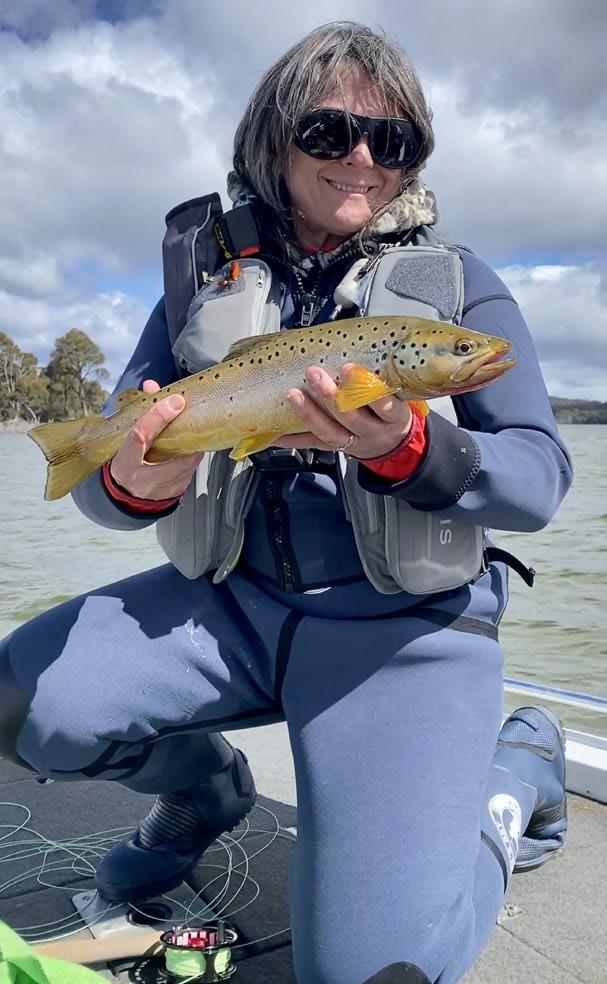
As the weather continues to warm into December, insect activity rapidly ramps up and tasty morsels such as damsel flies, gum beetles and grasshoppers become an important part of the trout’s daily diet. These are obviously halcyon days for fans of the fly, but trout will also happily whack a lure or a bait in waters where these styles of fishing are permitted.
January and February can actually produce spells of weather that are uncomfortably hot for trout at lower elevations, but these are top months in the cooler Central Highlands and Western Tiers. Whether you’re walking the tarns of the Nineteen Lagoons on a bluesky day, sight-casting to spotted torpedoes, or drifting in a boat out on Great Lake in a boisterous nor wester while scanning for “sharks” riding the chop in search of drifting gum beetles in the well-defined wind lanes, these are great months to be in Tasmania.
The weather generally begins to cool (especially at night) and settle through March and into early April. These can be some of the finest and most pleasant weeks of the entire year, and while insect activity begins to slow now, there’s still more than enough happening on the water to make a fly fisher’s arm twitch involuntarily!
Some years, there will be surface activity well into April, especially if there are falls of terrestrials such as jassids. Other times, you’ll need to go sub-surface to get the “eat”. Don’t get locked into any one style of presentation… go with the flow.
The trout season on many Tasmanian waters closes at the end of April to protect spawning browns, but other systems remain open yearround and the lure fishing, in particular, can be excellent in May and even into early June, despite the increasingly cold weather.
Deciding exactly when to schedule your trip will come down to the styles of fishing you most enjoy, and what you want to tick off your bucket list. But be sure to give yourself a minimum of 10 days in Tassie to allow for spells of inclement weather. Two weeks is a much safer bet.

Tasmanian trout waters can basically be divided into three distinct categories: public streams, public lakes and private waters. All have much to offer, and I’d urge you to try all three on your next (or first) sojourn to the Apple Isle.
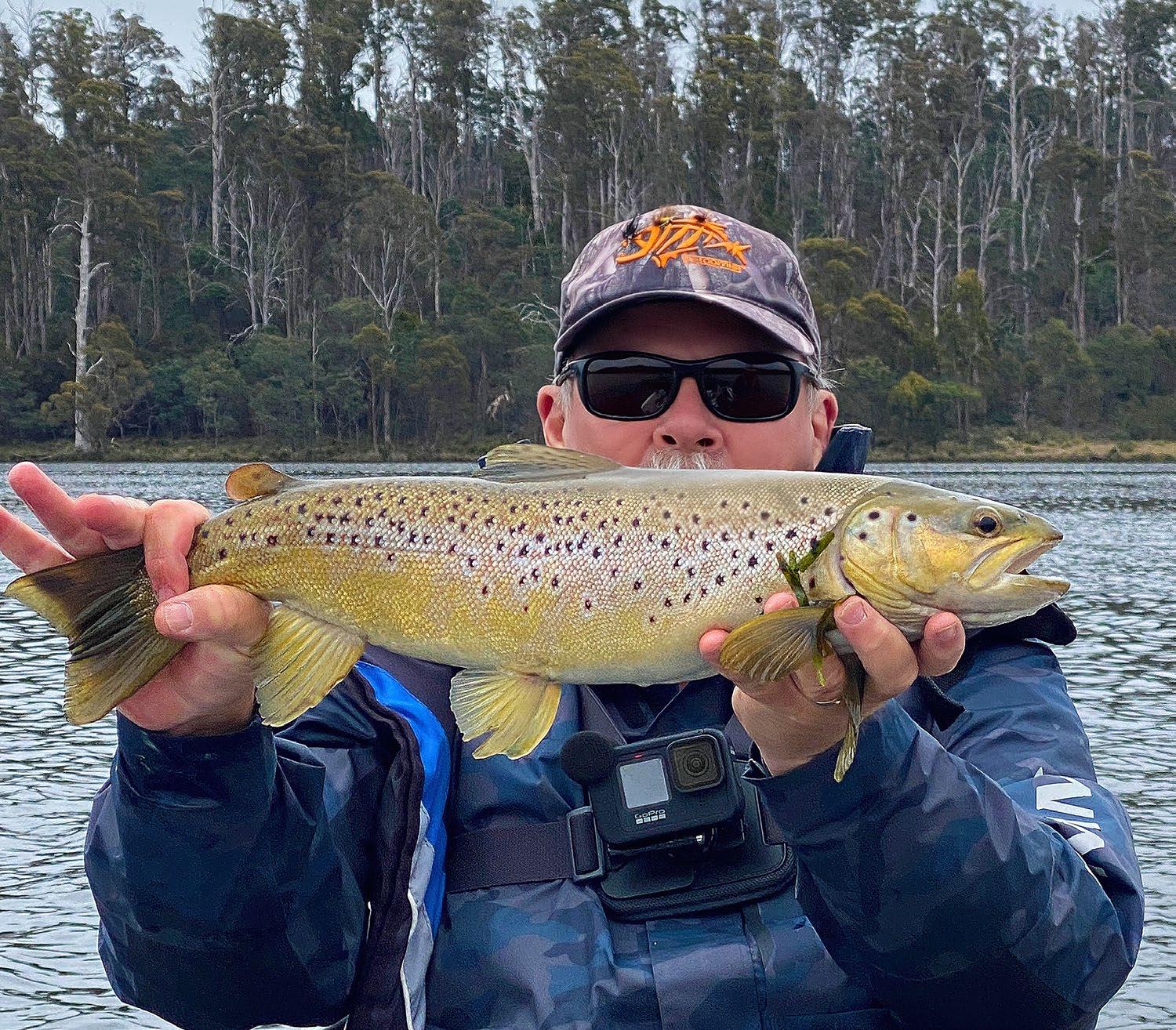
Public streams run the gamut from tiny brooks and “twigwaters” you could literally step across, right up to major rivers and even tidal estuaries. Some have lots of public access points, other flow for much of their length across private property and you’ll need to seek permission to access them. Fortunately, the Tasmanian Inland Fisheries Service (IFS) offers an excellent Angler Access program, as well as a growing collection of brochures (printed or electronic) showcasing lots of different waterways. Use these valuable resources. You’ll find them at www.ifs.tas.gov.au Oh, and purchase your licence while you’re at it!
Believe it or not this is a “smaller” brown from Launceston’s Four Springs Lake! They are all magnificent wild fish, relocated from Great Lake.
While Tassie is possibly more famous for its still-water trout fisheries, the stream fishing can be absolutely superb, especially if your measure of success isn’t based solely on size. Rivers like the Tyenna (a tributary of the Derwent) hold an incredible density of trout, and while many of these fish are quite small, this is certainly not a blanket rule! The Tyenna is a haven for those who are into their Euro-nymphing, but it also offers great “standard” nymphing, as well as red hot dry fly action on the right day.
Others streams like the Esk, Macquarie, Meander and St Patricks all have their own special charms and different characters. The average fish in most of them may be under an old-fashioned pound in weight, but don’t be fooled: any decent pool is likely to harbor at least a couple of trout that are two and three times that size, or more — but remember, they didn’t grow to those dimensions by being dumb!
While a lot of the focus tends to be on Tasmania’s trout lakes, the island state also boasts plenty of truly wonderful streams.
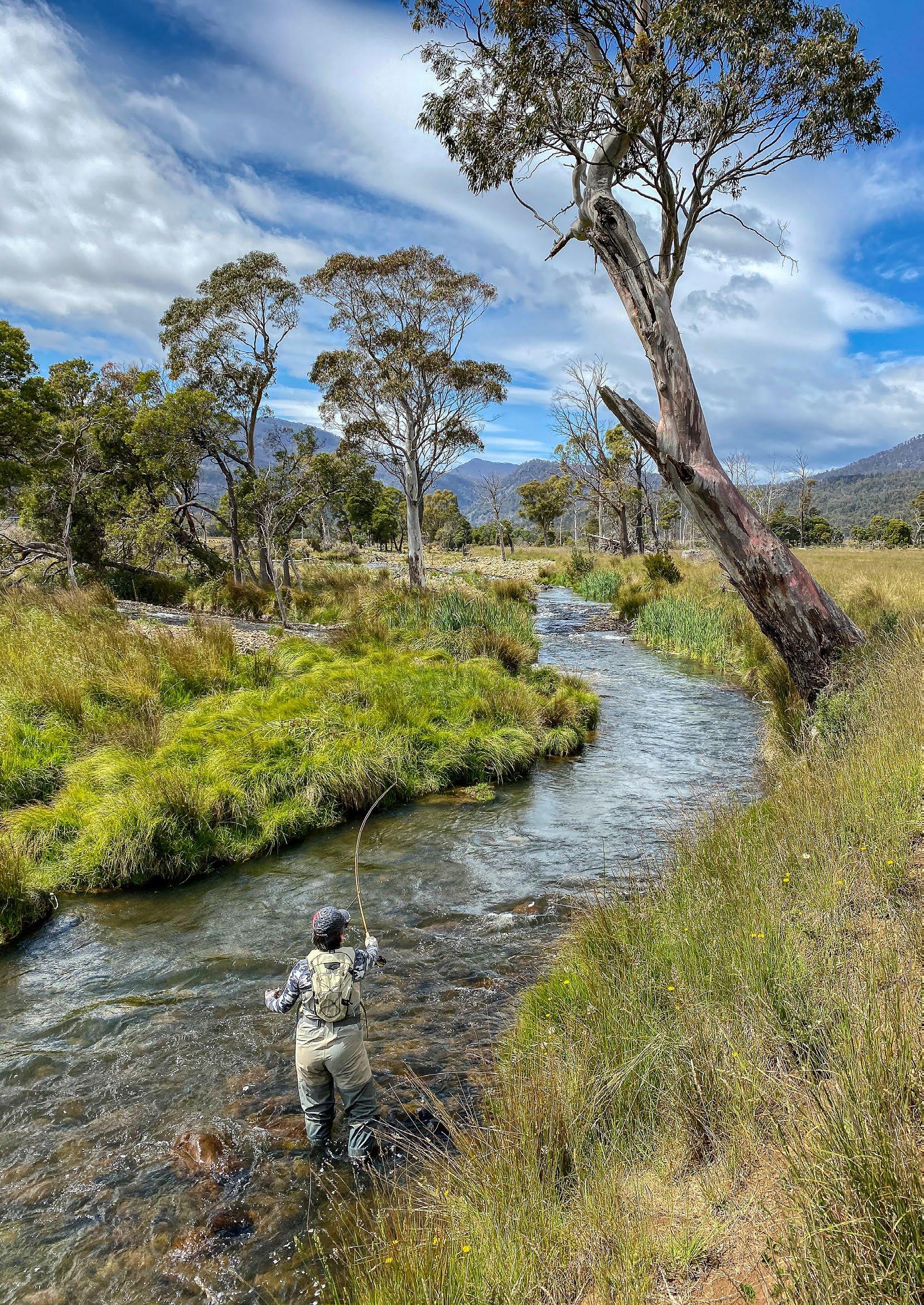
Of course, it’s trout lakes that Tassie is most famous for: from the tiny glacial tarns and linked lagoons of the Western Plateau to the deep, cold hydro dams, as well as true giants like Pedder and the aptly-named Great Lake. Ideally, you’ll need a boat to fish some of these, but others are eminently walk-able and wade-able. Explore them all!
Finally, don’t dismiss Tasmania’s many private waters. Most are little lakes or small dams where, for a fee, you can fish for a day or a week — with or without a guide or instructor. Some also offer accommodation options on site. Forget about them being anything like “shooting fish in a barrel”, too. The best are very natural and quite similar to public waters, but without the crowds or the competition. They give you the time and the opportunity to learn and to hone your skills. The trout in them are no “dumber” than anywhere else, either. In fact, many are “wild” trout, transported from King William or Great Lake… They’re sassy, smart and super wary.
Just like hiring a guide, paying to fish on a private water can dramatically fast-track your learning process, and teach you valuable lessons that are applicable elsewhere. My personal favourites are Currawong Lakes, 28 Gates and Herne Lodge Lake, but there are others, too, and new ones coming on line all the time. Check them out…
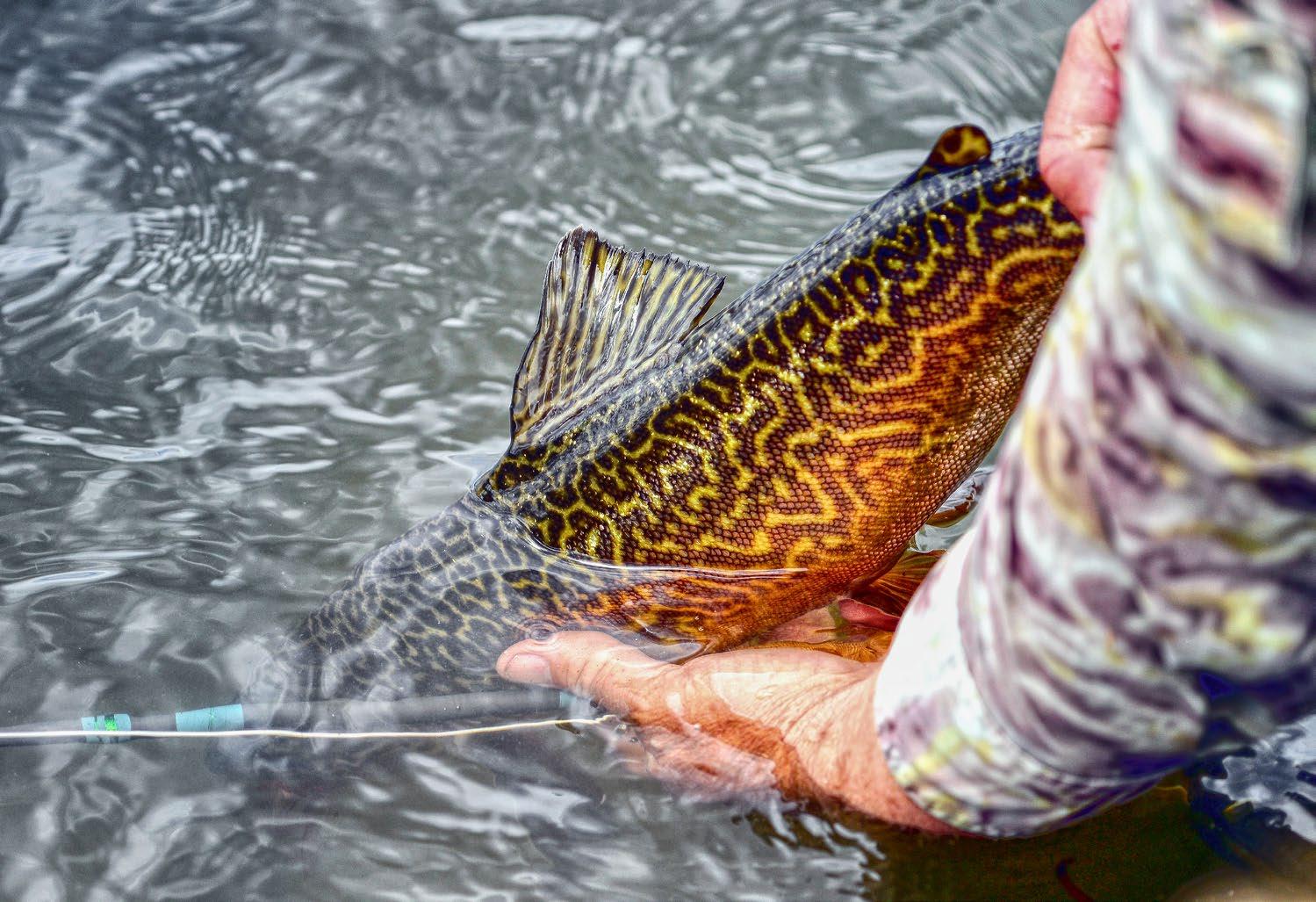
Rather like guides, some Aussie fishers seem to look down on privately owned waters and fisheries. My advice is: don’t knock pay-to-fish waters until you’ve tried a few! In Tasmania, most are a long way removed from the heavily-stocked “stew ponds” of Britain. In Tassie they are often relatively large, very natural bodies of water populated with wild browns translocated from other waters, as well as stocked rainbows and sometimes even more exotic offerings such as brookies, tigers and Atlantic salmon. These are our two favourites:
CURRAWONG LAKES: Located not far from Lake Leake, inland from the picturesque Freycinet Peninsula on Tasmania’s stunning east coast, Currawong is a truly worldclass trout fishery in every possible way. Its gorgeous fish (especially the wild browns) are far from a pushover to catch, but with no competition from other anglers, you’ll have plenty of time to work them out. Buy a day ticket, go with a guide, or stay in one of the super-comfortable accommodation options available on the property and spoil yourself for several days! For all the intel’ go to: www.currawonglakes.com.au
Currawong Lakes is one of the Starlings’ favourite private waters in Tassie. With several levels of accommodation and three awesome lakes, it’s a magnificent place to spend a couple of days.
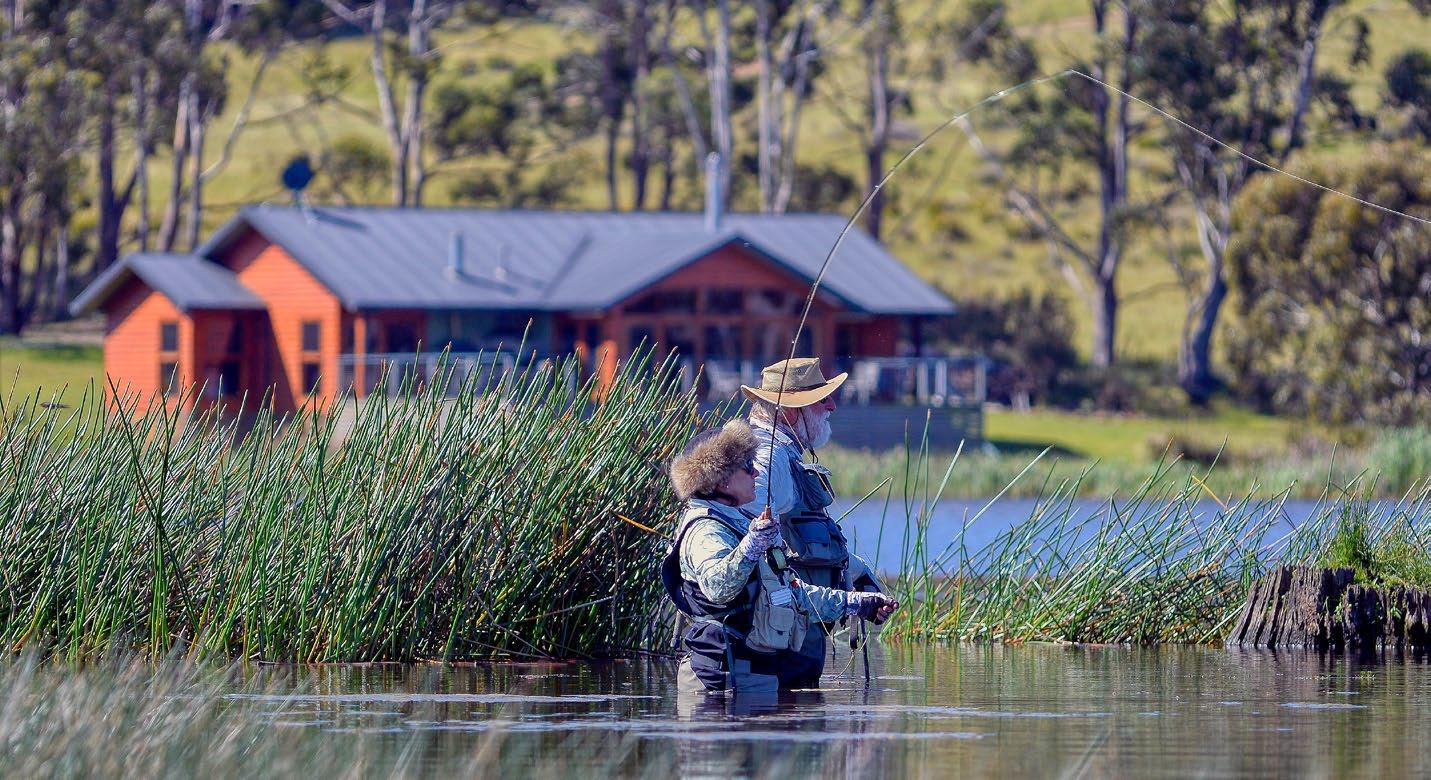
28 GATES: While the lakes are smaller here than at Currawong, the fish are — if anything — even bigger! There are also some stunning tiger trout lurking in these placid waters for those keen to tick that particular prize off their bucket list. You can pay to fish on your own, go with a guide, or bunk down in the very classy farm-stay and enjoy fishing rights as part of the deal! Excellent for families. Check it all out at: www.28gatesfarmstay.com.au
Jo with a cracking brown from 28 Gates, another of the Starlings’ favourite private trout fisheries.

Tasmanian trout streams come in all shapes and sizes.
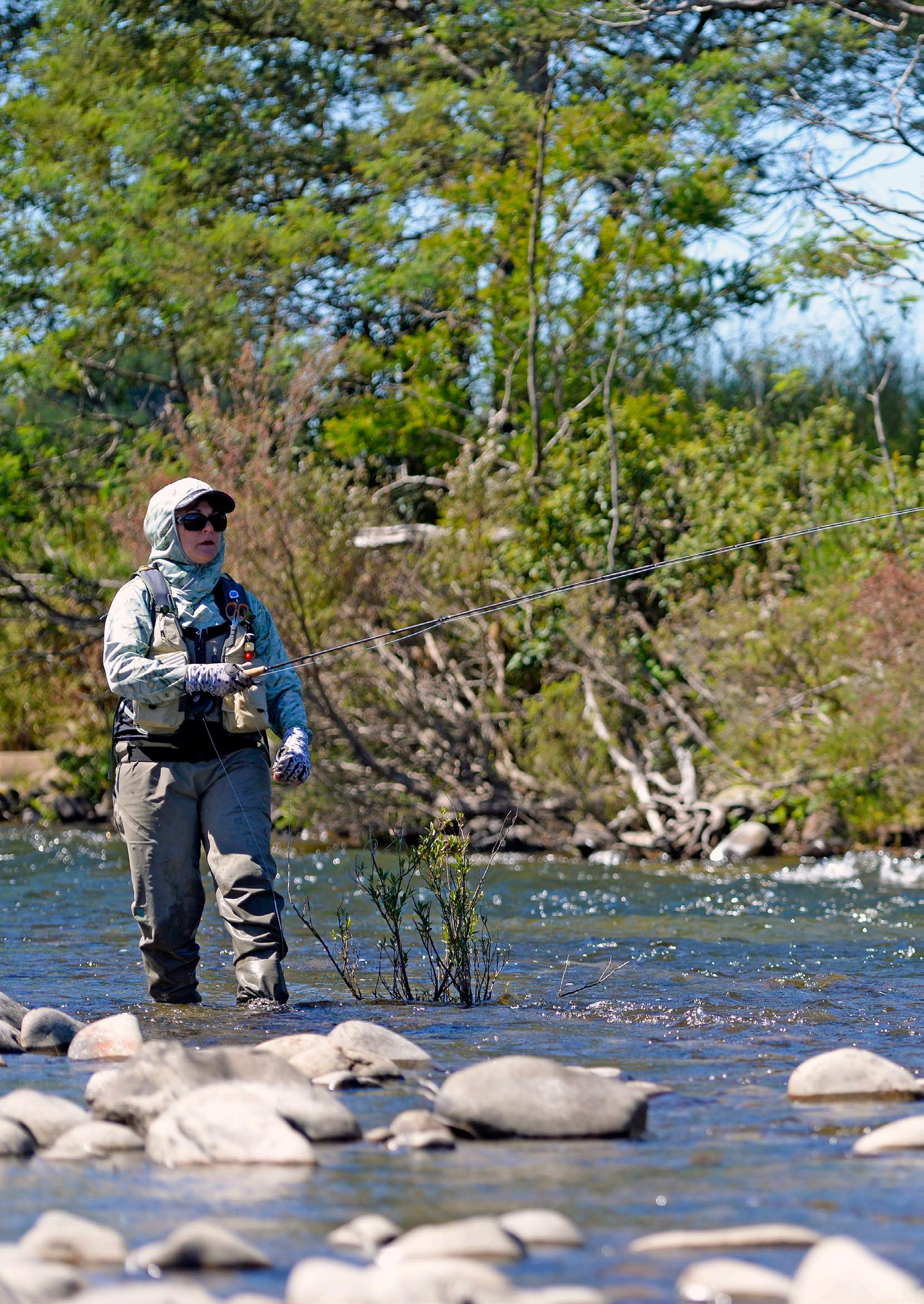
Catching a perfect little trout like this on a featherweight cane fly rod from a small Tasmanian stream is a very special experience.
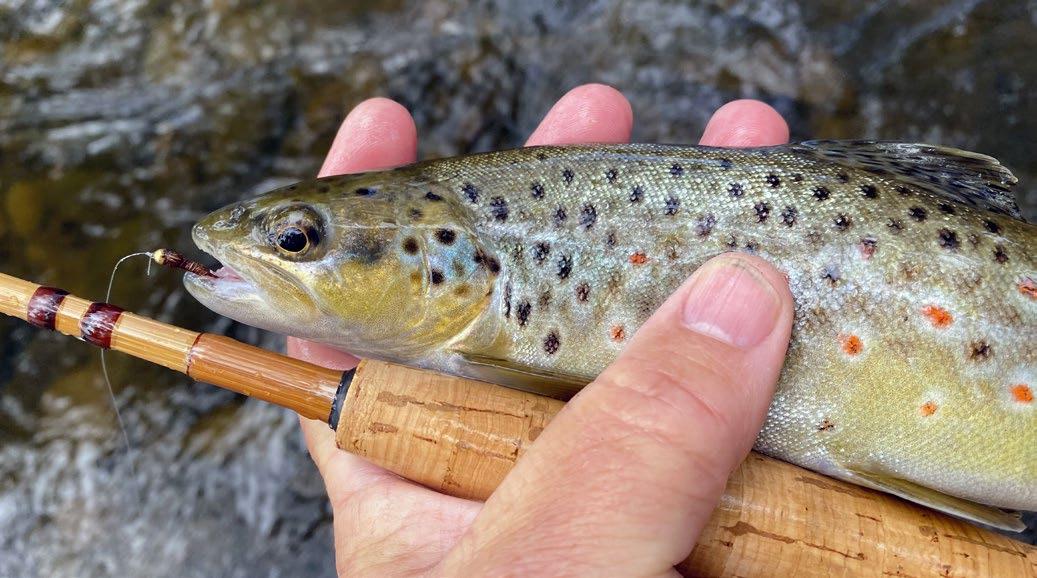
25
Fishing
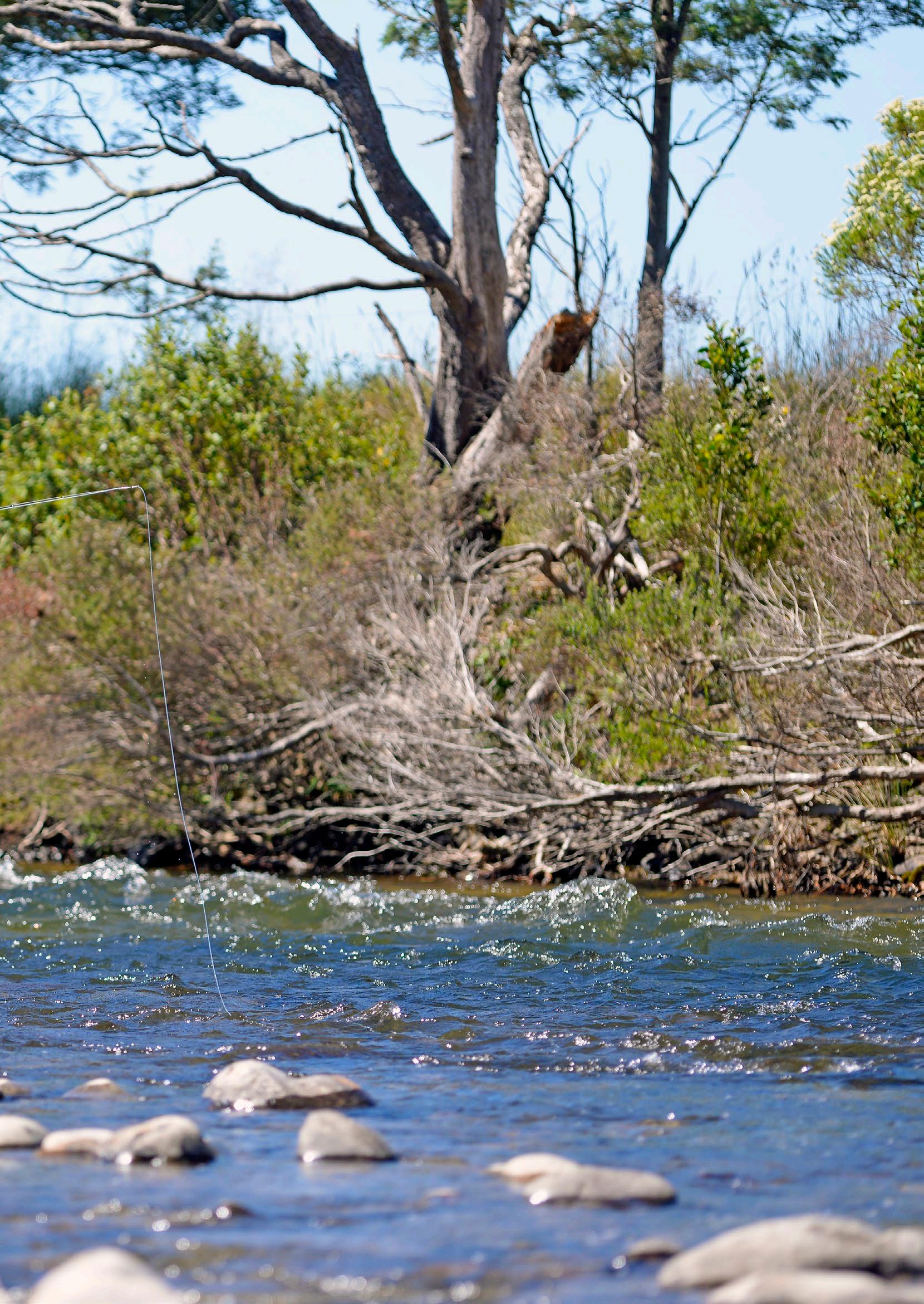
helped get Jo onto this gorgeous brown at 28 Gates.
Wayne
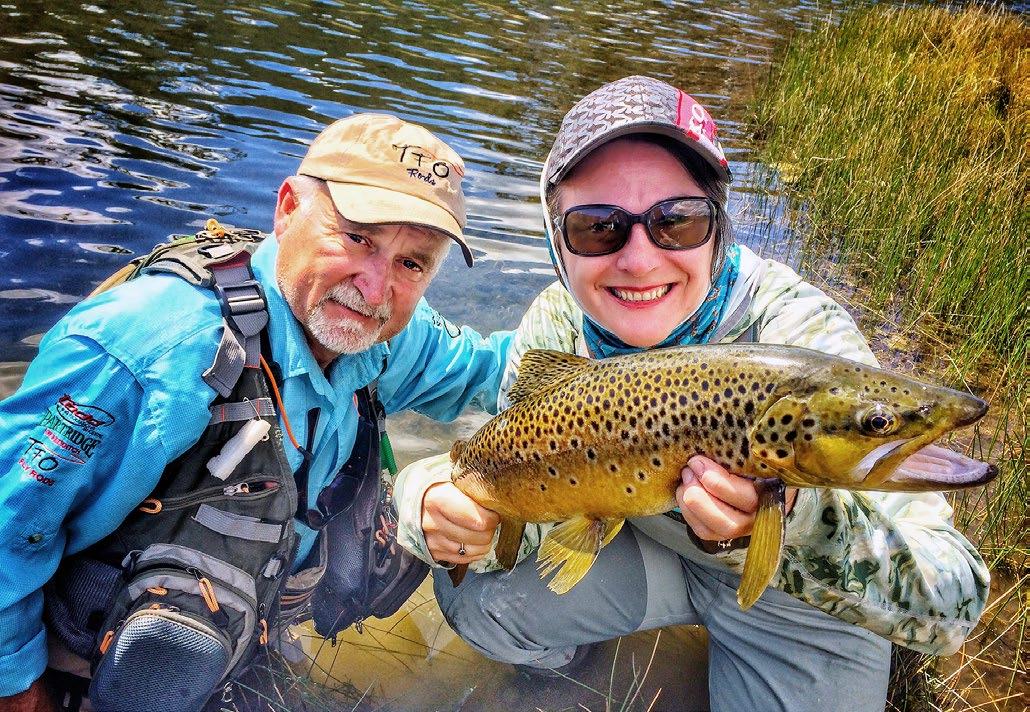
In closing, I’ll offer you my five golden rules when it comes to planning your next (or first) Tassie trout trip:
1. Do your homework. Seriously, put some effort into studying the fish, the fishery and the locations well before you go. There’s so much great material on-line nowadays… Use it!
2. Know what you want to achieve. Would you rather fish with bait, lures or flies? On streams or in lakes? Do you want lots of fish, big fish, or a specific target, such as your first sea-runner, brookie or tiger trout? These important decisions will largely dictate the when, where and how of your trip.

3. Book a guide. There’s no shame in going guided, or even spending a day on a private water — or both! Not only are you supporting the local economy, but you’ll also dramatically fast-trick the learning process. Trust me, it’s well worth it!
4. Have back-ups and alternatives. Don’t set your heart and mind inflexibly on one location, one target or one technique. Be adaptable and flexible — change your game plans to suit the conditions. Roll with the punches.
5. Slow down! As I said earlier, Tasmanian trout reward the patient, the careful, the contemplative and the cunning. Sometimes, 10 minutes spent simply sitting and watching a piece of water will pay far greater dividends than an hour’s frantic casting… Fish smarter, not harder!



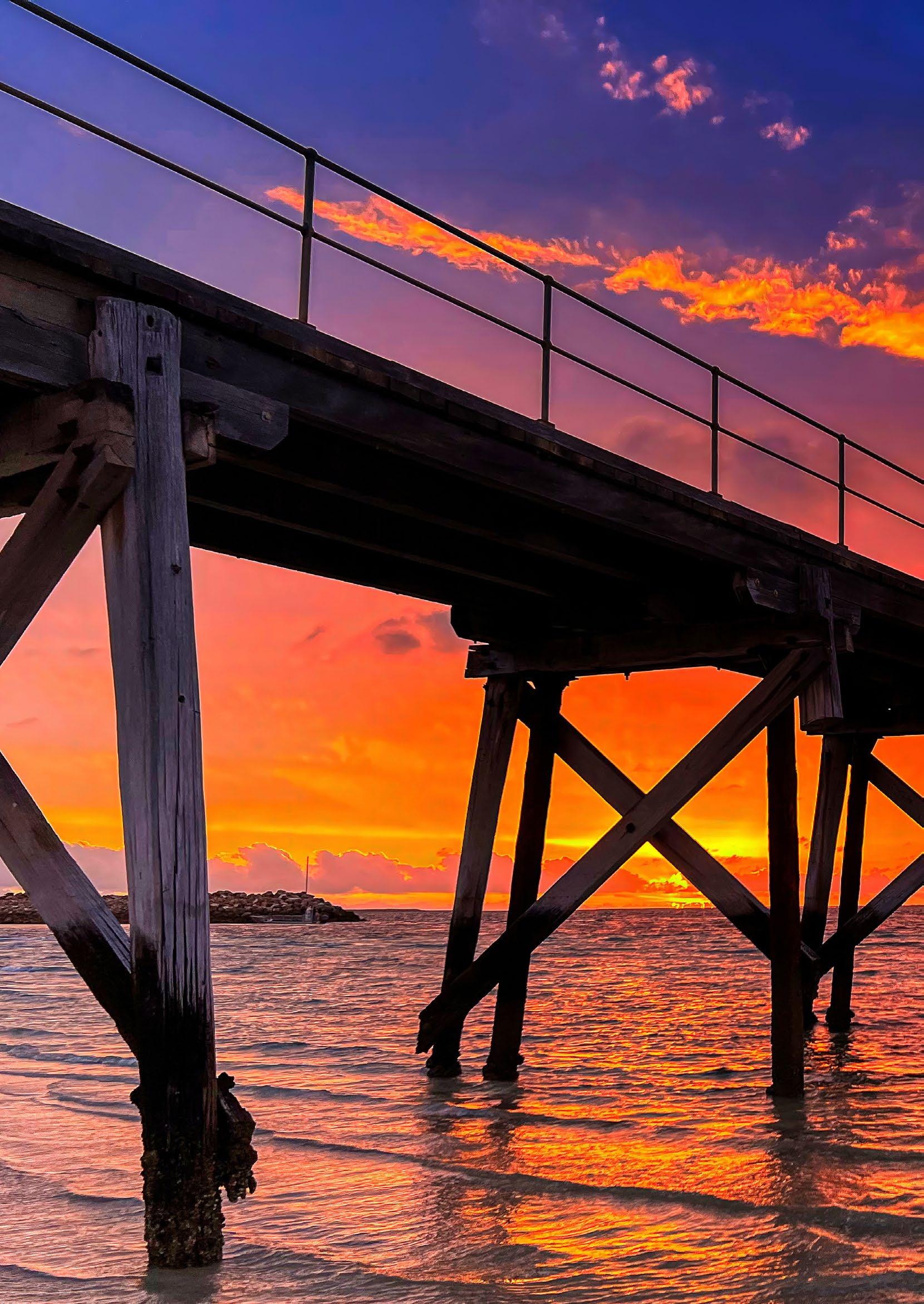

Coming from a non-fishing family, I can still remember my excitement when Mum and Dad announced that our family holiday would be to a seaside location. Like most kids, the thought of beach cricket, snorkelling and getting ‘washing machined’ by the shore break thrilled me to no end. However, above all else, a holiday by the sea meant one important thing to me. It was an opportunity to go fishing. As bags were packed and the Tarago’s nose pointed for the coast, I desperately hoped that our destination would be home to a jetty, as for me this meant hours of freedom, fishing and learning about the game I love so much.
Looking back on those days, I have many great memories from the jetty. I vividly recall the time my Dad and I watched garfish dance around my pencil float for what seemed like hours on a Yorke Peninsula (SA) jetty, only to have the only victim for the day jump off the hook a metre from our feet! I also remember a New Year’s Eve spent on Kangaroo Island when a school of Australian salmon made light work of our under-gunned tackle, wrapping my siblings and I around every pylon nearby. Fortunately, Dad came through as the hero that day, landing one fish – much to the delight of us all!
Jetties provide a great space to unwind and watch the world go by.
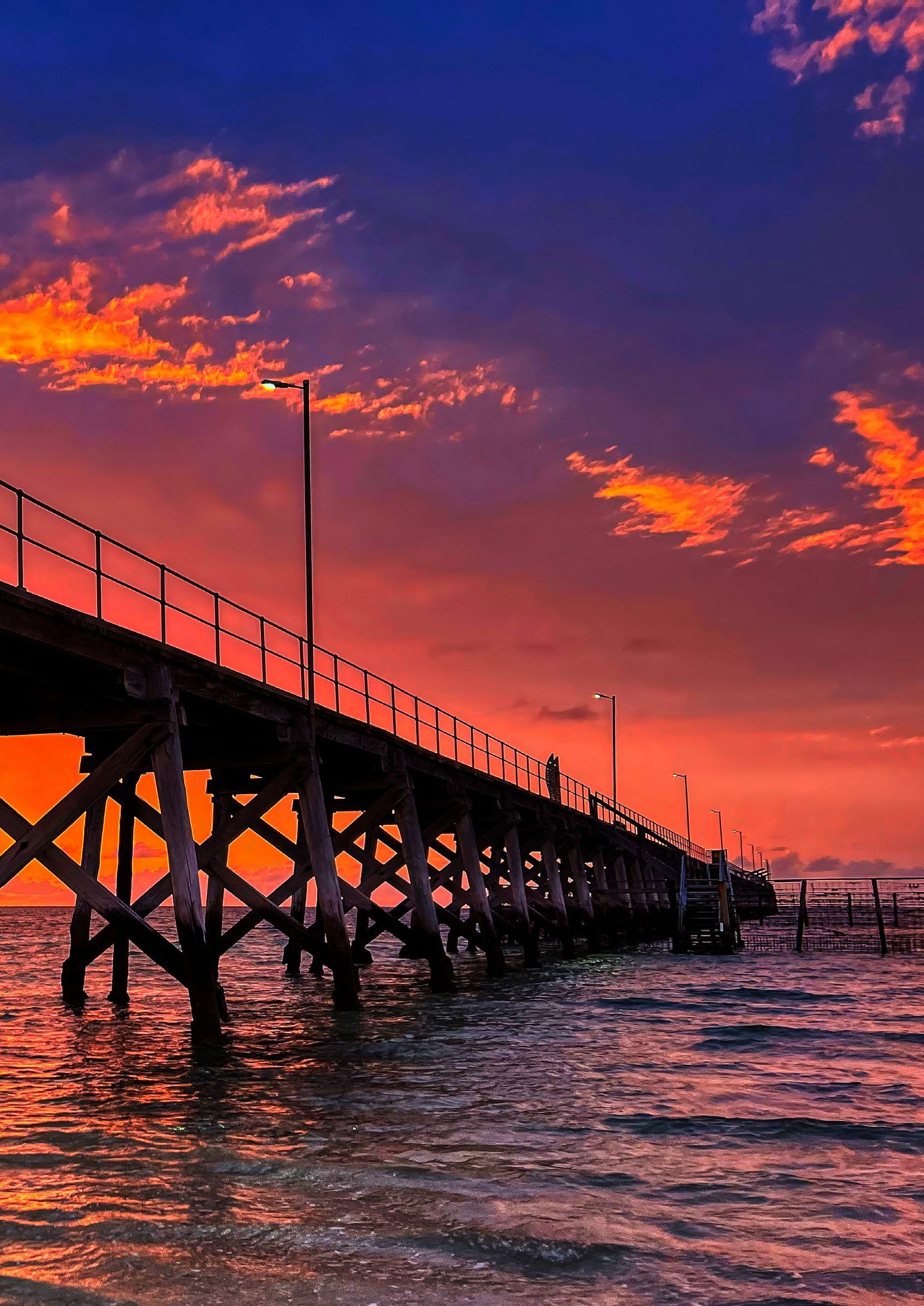
These memories are precious and my time on the jetty as a youngster, either solo or with the family, were the humble beginnings of what has now been a life of fishing all around the country. Given the array of species available from jetties around Australia, and the countless methods of targeting them, this article will focus on assisting newcomers and families in enjoying their time on a jetty – in homage to my dear parents who patiently put up with my obsession! It is hoped that this article will help budding fishos (or clueless parents) understand a little more about fishing the timber so that they too can enjoy some time on the pine.
While jetties, wharves and piers are technically different to one another by definition, for the purpose of this article we’ll classify them under the same umbrella and discuss any man-made structures protruding from the shoreline that provide a relatively safe and flat platform for anglers to cast a line. As a now much older fisho and proud owner of a kayak, small boat and shed full of beach fishing gear, I still find myself being drawn back to jetties on a regular basis. Not only are they easy and relatively safe places to fish from, I regularly have a ball catching a wide variety of species due to a number of important factors.

Jetties become a hive of activity as summer arrives.
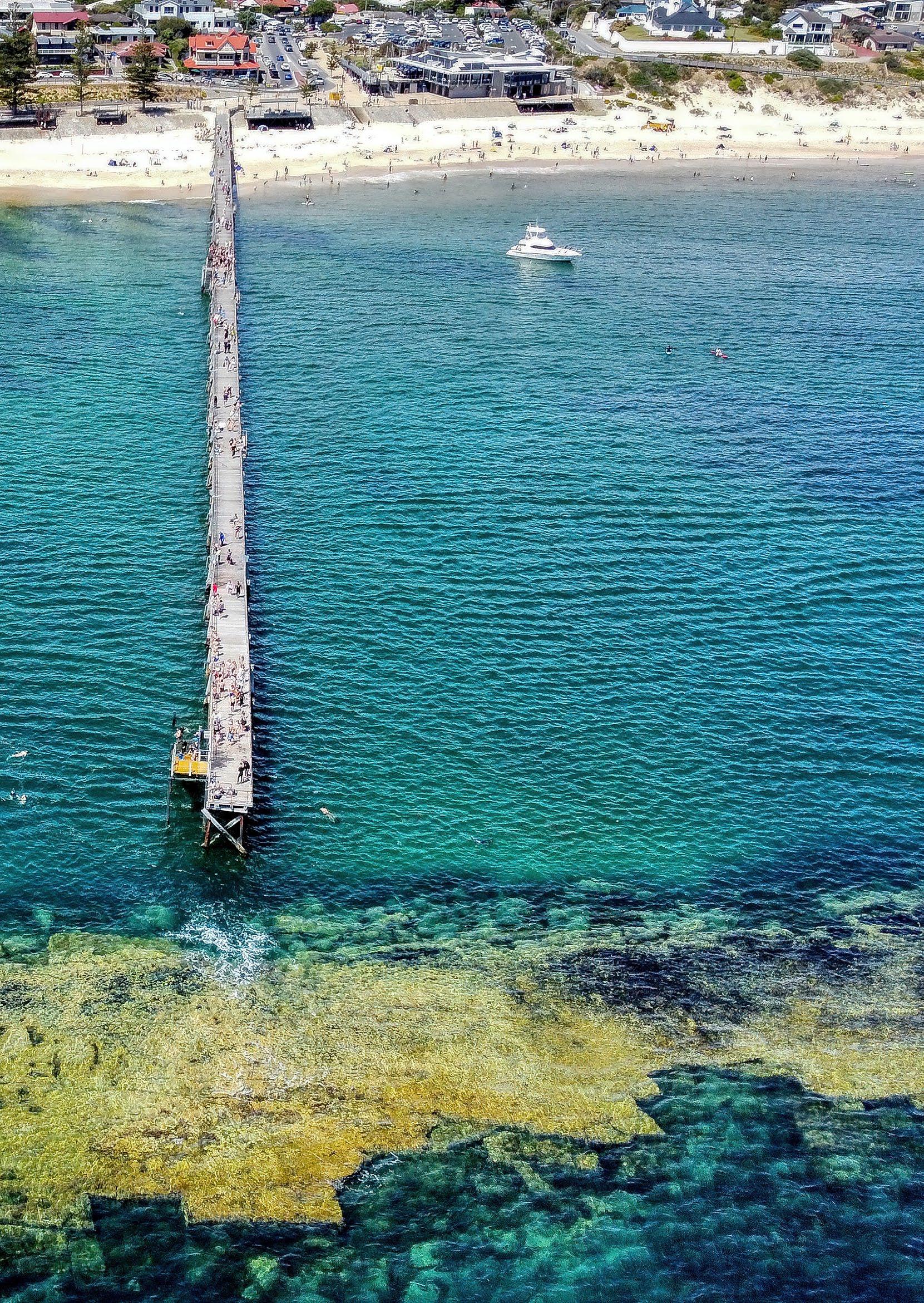
Jetties offer permanent structure for marine life to call home.
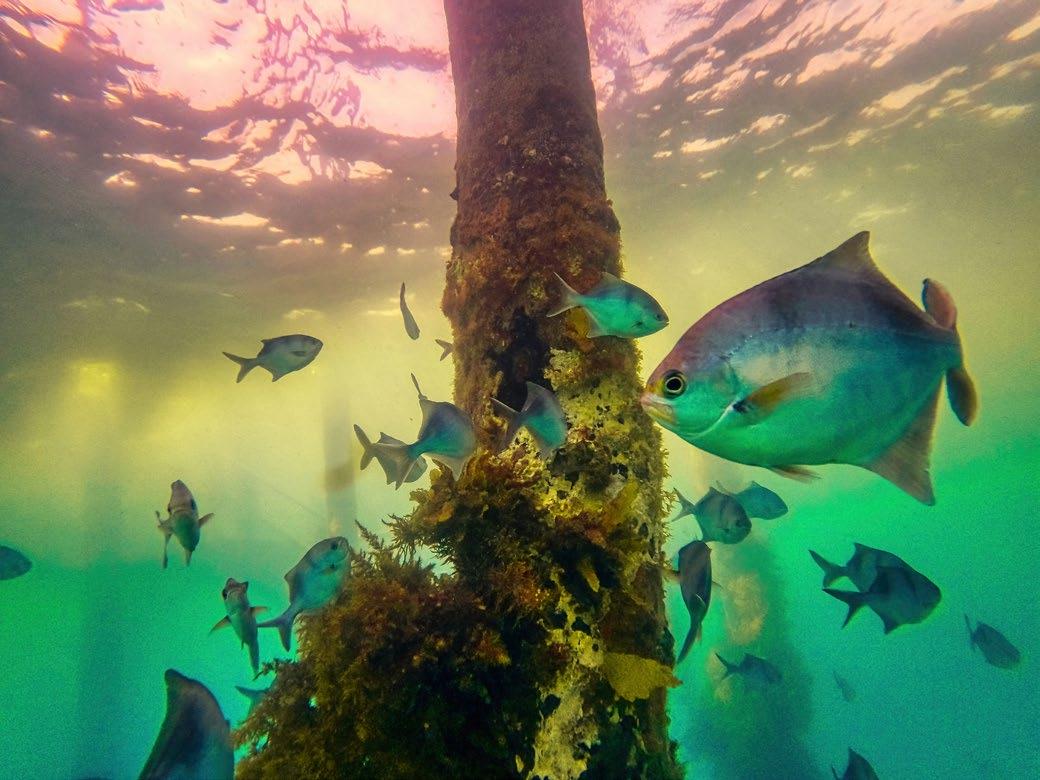
Firstly, jetties are permanent structures. As a result, they offer marine life consistent shelter from currents, swell and predators, thanks to jetty pylons and the like. It’s common to see fish hugging the leeward side of these structures, enjoying some respite from the elements, as often a jetty will be the only major form of solid structure within a region. Furthermore, this structure leads to a consistent presence of algae and barnacle growth. This provides an all-important presence in the food chain and usually provides enough tucker to support a healthy baitfish population. Combine this with the regular presence of bait and berley from anglers, and you’ve got a fish nirvana, resulting in regular check-ins from larger predators looking for a feed.
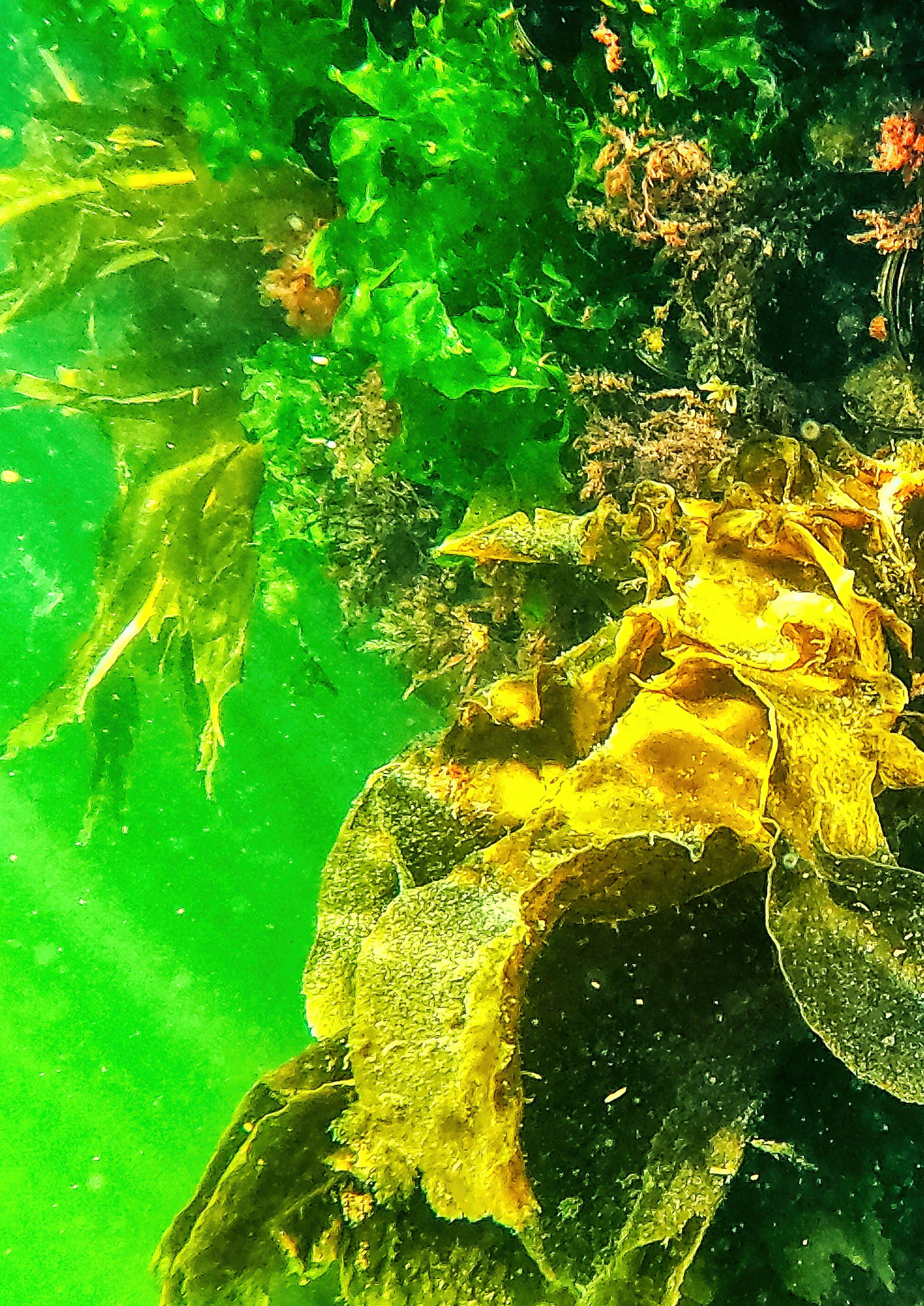
Weed and barnacle growth on jetty pylons provide nourishment and protection for an array of species.

Another factor that makes most jetties so productive is the fact they offer a range of water depths to fish in. This means they allow access to a huge variety of different target species, from shallow water foragers to blue-water predators, and hence can be fruitful locations to fish year round. It’s not uncommon for fisho’s to set up and target a particular species in one depth and, after catching a few, move to a new depth to target something completely different. Such is the flexibility of a jetty.
Finally, many jetties come to life once the sun goes down, thanks to the presence of lights. It is wellknown that light can attract a range of marine critters and jetty lights have been behind some serious afterdark hauls. I don’t think I’ll ever tire of seeing small bread and butter species such as herring and garfish schooled up under a light, with larger predators mooching around the edges, picking off an unsuspecting victim. It’s a gold-class view from the top!
A walk down the jetty on a summer’s afternoon in school holidays provides a sight to behold. Pleasingly, jetties tend to be a hive of activity, with anglers of all ages and experiences, and many interested onlookers, keen to get a taste of the excitement. With this diversity of experience and keenness comes a wild array of equipment, and a stroll down the jetty is often like taking a walk through a museum of angling history – there’s a fascinating collection of concepts and contraptions! While getting out and having a go with any tackle available is, of course, better than hitting the jetty with nothing but an ice cream, there are some basic principles that new anglers or families can consider in the event they wish to purchase something specifically for their jetty fishing escapades.
When it comes to rods and reels, light generalpurpose outfits will get the job done in the vast majority of instances. While there are, of course, exceptions, particularly in the north of the country, most species regularly caught by jetty hopefuls don’t demand specialist tackle, and there’s certainly no need for newcomers to break the bank. Spin or ‘egg-beater’ style reels are a simple and user-friendly option, and usually a 2500 size reel spooled with 12-15lb line is sufficient. Braid is certainly a nicer material to fish with, as it tends to cast further and has greater sensitivity to bites, however it can tangle easily, so monofilament is recommended for those with a more casual approach to their fishing…or kids!
Consider pairing these reels with rods in the 7-8 foot range, rated at 4-6kg and you’ll be in business. Of course, one can refine their equipment to the nth degree if targeting a specific species, but for the weekend warrior the above guidelines are a good place to start. These days most large-scale tackle companies offer great entry level ‘combos’ and it’s quite surprising to see what you can get for your money, thanks to large-scale production.

Don’t forget to back off the drag if taking a more casual approach to your jetty fishing!
With the endless number of potential ways of catching a fish, I pity any newcomer or bewildered parent armed with the task of buying fishing tackle for the first time. The good news is that the most commonly sought-after species can be attained by using the five options outlined below. If you’re fishing regularly, it’s important (and more economical) to be able to tie these presentations yourself, however if fishing is a holiday-only activity, pre-tied rigs are now available in most tackle stores, and they make the prospect of casting a line a lot less daunting! Keep in mind that when tying or buying rigs, big fish can be caught on small hooks, but small fish not on big hooks. If in doubt, opt for a smaller hook size to keep your options open.
A paternoster rig refers to a set-up where one or two hooks are tied above a sinker, resulting in baits usually sitting 30-50cm above the sea floor. These rigs are designed to catch fish that feed in the lower portion of the water column amongst sand and weed beds, such as whiting, mullet and leatherjackets, and are an excellent option for many fishing applications. Given that the hooks are elevated from the sea floor, they are a little less likely to become embedded in weed and rendered useless, which is a particular advantage to those who are yet to hone their casting accuracy. Further to this, the presence of two hooks allows an angler to fish with two different baits at a time, increasing the likelihood of offering something of interest to the fish and gives one a second chance if the first bite is missed!
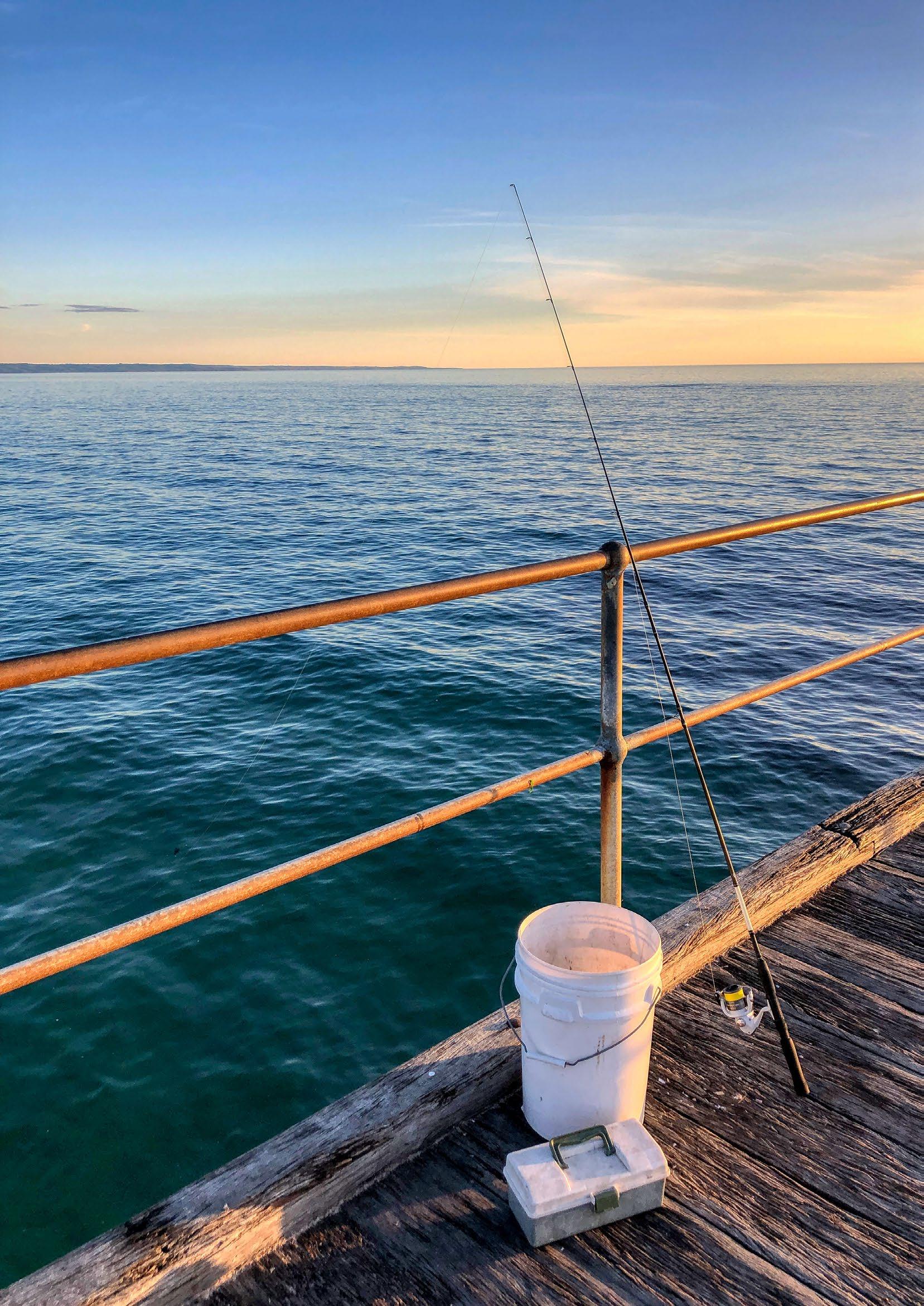
Running sinker rigs are another versatile option suitable for a huge variety of target species from the jetty. Put simply, these rigs have the sinker positioned above the hook, with the sinker either free to run directly down to the hook eye or, as I prefer, separated from the hook by a small swivel and a short portion of line. Like the paternoster, this rig is for targeting the bottom dwellers, however it offers a more natural bait presentation, given that the hook and bait are somewhat free to drift around with current, tide or swell influence.
Baited with portions of prawn, beachworm or cockle, this set up puts you right in the game for the likes of flathead, bream and the often snobbish yellow-fin whiting. For the laid-back fisho who prefers to kick back and rest the rod on the jetty railing, this is the option for you, and the use of a circle hook will reduce your need for attentiveness as the fish will more often than not hook themselves; it doesn’t come much easier than that! Given that your bait will be in contact with the bottom, look to fish this rig predominantly over sand and don’t be afraid to fish the shallows. There’s often gold to be found just behind the breakers!
Whilst sometimes overlooked, leatherjackets boast some pretty special markings.
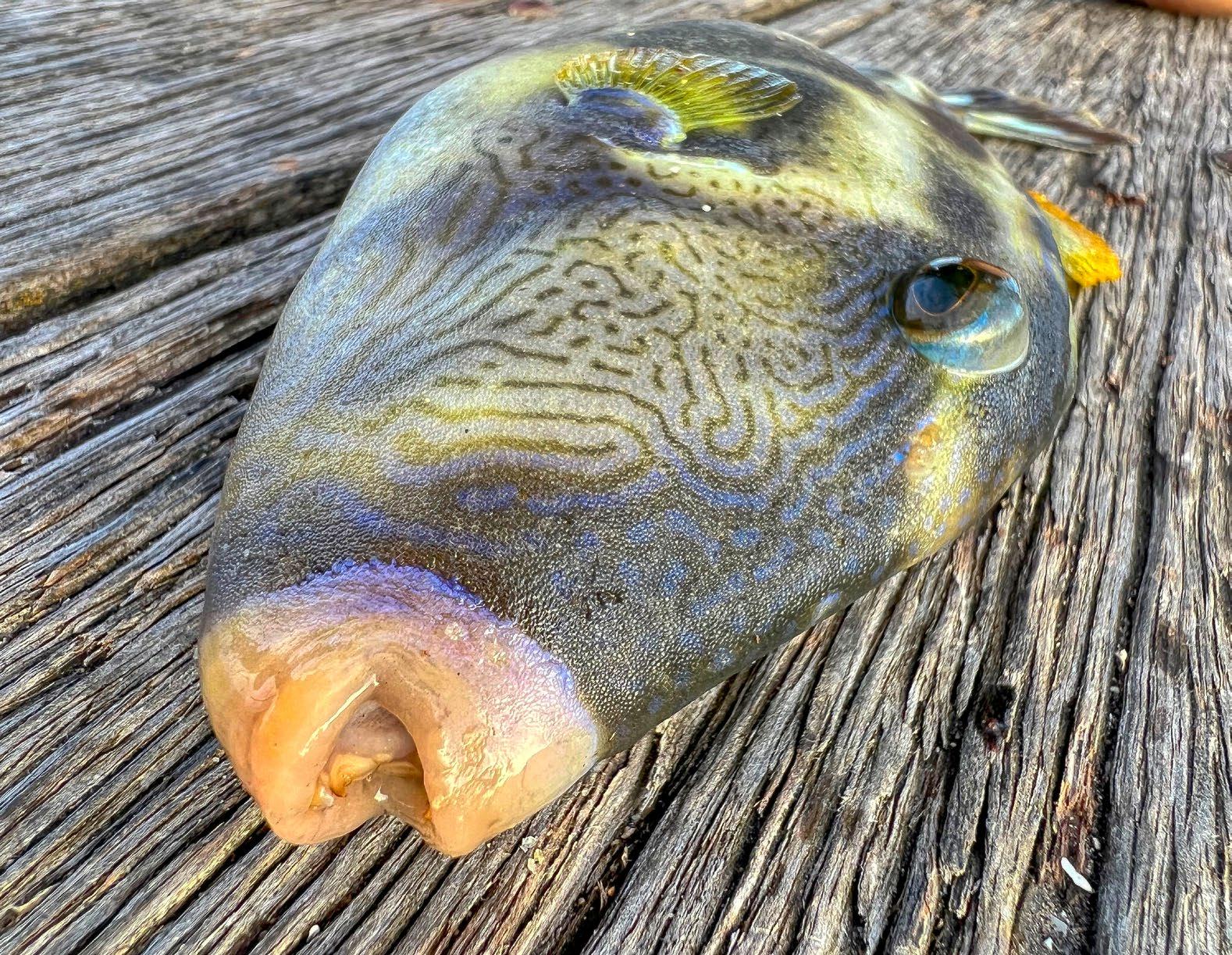
Clip and cast. Pre-tied rigs are a good option for beginners.
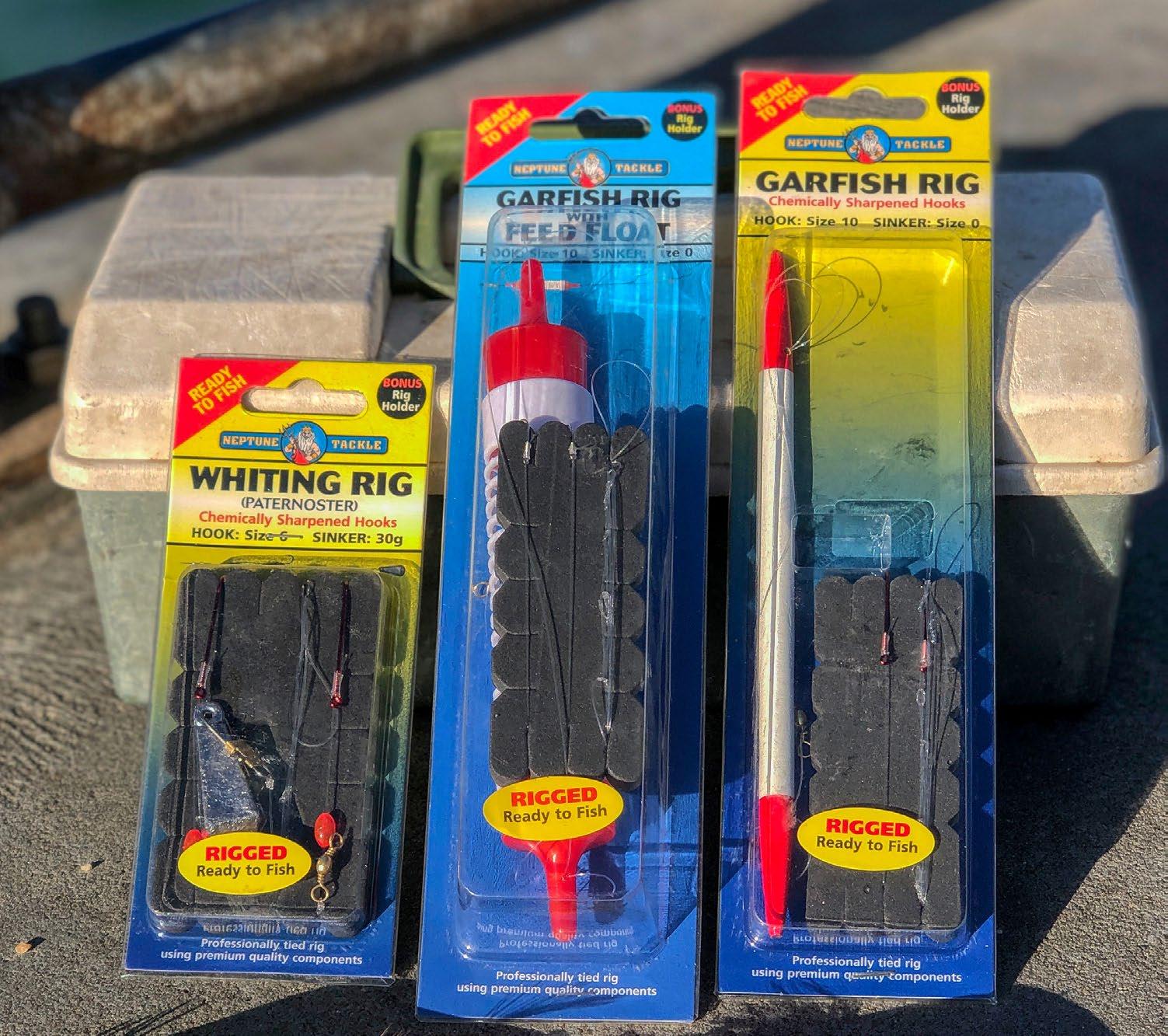
While bottom-based rigs put you in the game for a large number of species, it’s important not to forget about the top-water targets that can often present in large schools around jetties and wharfs, particularly when berley is used. Although there are numerous ways to rig for fish that feed at the top, one of the most common and simple set ups is the use of a pencil float rig. This arrangement consists of a long, thin float (in the shape of a pencil) that sits above a length of line that runs down to a split-shot sinker and hook. The float will suspend your bait in the feeding zone and will be pulled under water, or at least moved from its standard position, when an unsuspecting victim engulfs the bait.
Float fishing is a terrific option if fishing with young ones, as they can eagerly watch for the tell-tale sign of a bite, without needing to be ‘on the ball’ and feeling for a strike. Although float fishing can be extremely effective from the planks, things do get a little tricky when wind is a factor, given the limited weight in the rig. When setting up, be sure to choose the area of the jetty where the wind will be in your back, as this will aid your casting and reduce the likelihood of you, or a bystander, copping an unplanned piercing!
It pays to keep an eye out for clues along the jetty. Bait remains, scales and ink marks can all form pieces of the puzzle.
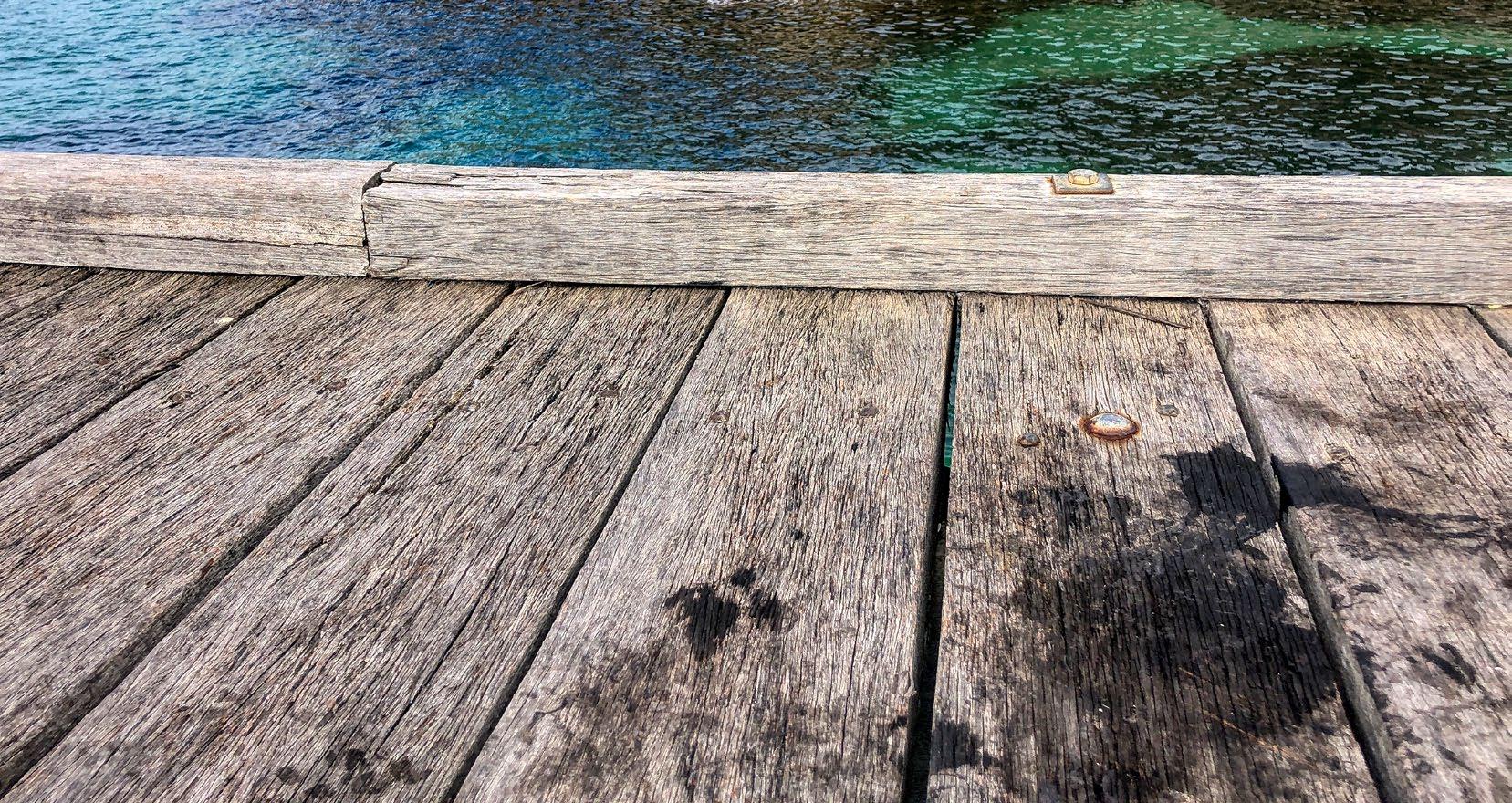
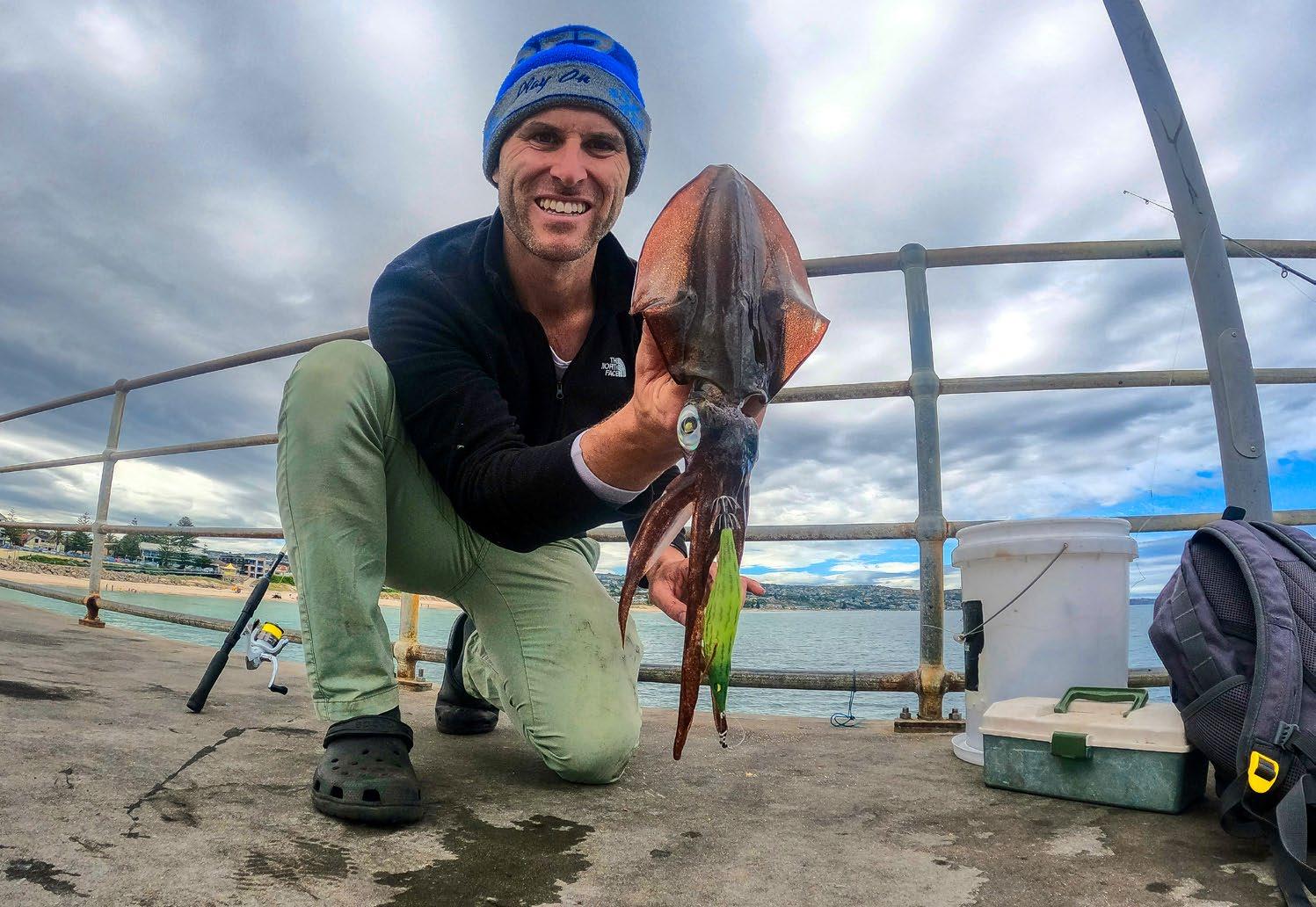
It would be remiss of me to discuss jetty adventures without mentioning the humble, versatile and ever popular squid. While the species on offer can differ, depending on where you’re fishing around the country, squid are often the jetty dweller’s gem and can be converted into sensational meals or used to top up the bait stocks. Famous for their protests of ink when nearing their captor, a walk along your local pier will likely reveal inky tales from recent captures, and this is usually a good indication to start casting! If
The humble squid – a jetty dweller’s gem.squid are your target, casting jigs and slowly retrieving them over weed beds and through illuminated water under jetty lights is a great way to go. Ensure there are lots of pauses in your retrieve and, when possible, work your way along the jetty to cover as much ground as you can. If stationary, consider suspending an artificial or baited jag under a float and have it drift out with the wind and tide beyond casting range as a means of tapping into untouched territory. It’s also important to adjust the length of your leader so that your jig sits just above the weed beds, as this will get you in the game if the squid are playing hard-to-get. The sudden absence of your float will indicate the plan has paid off!
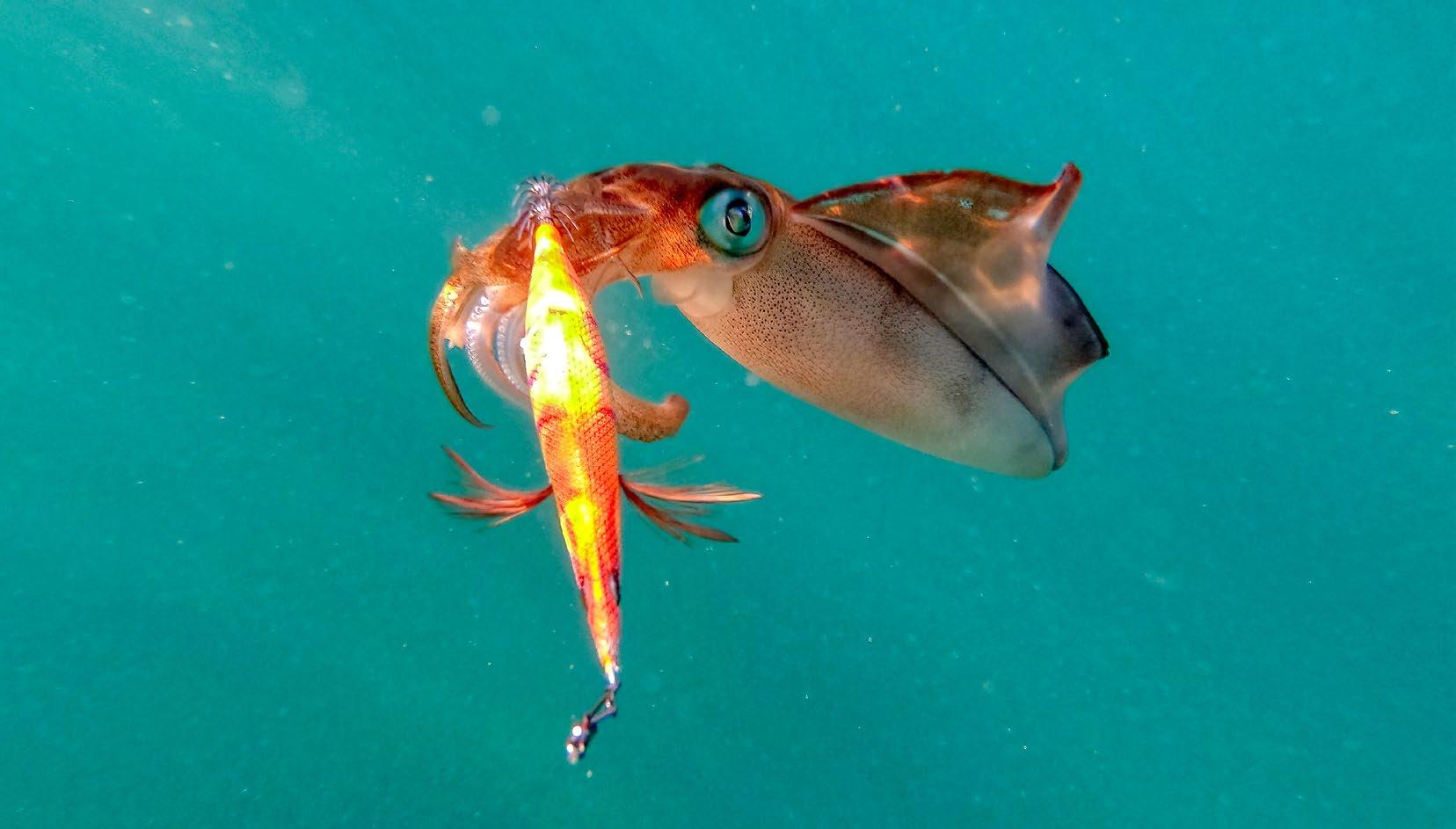
The use of a snap swivel or lure clip allows you to experiment with jag colour until you find the winning formula.
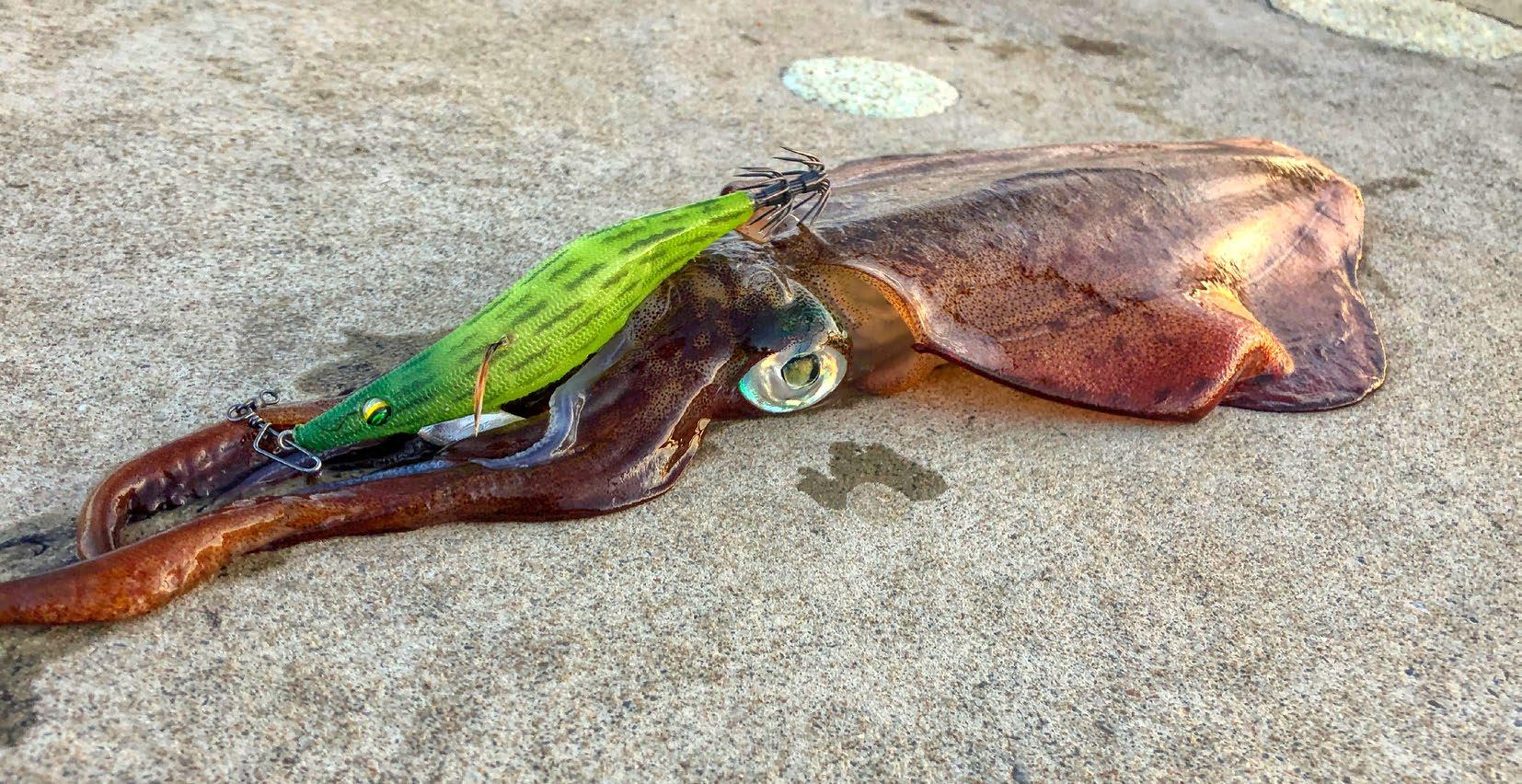 Good quality squid jags are worth their weight in gold.
Good quality squid jags are worth their weight in gold.
A nice mixed bag to start the day.
Dinner is served! There are endless recipes to try when it comes to cooking squid.
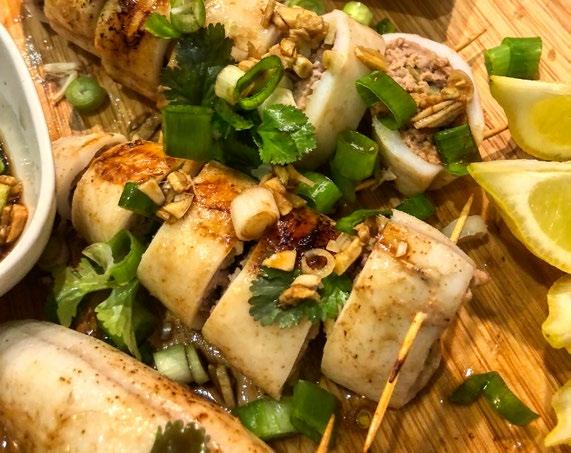
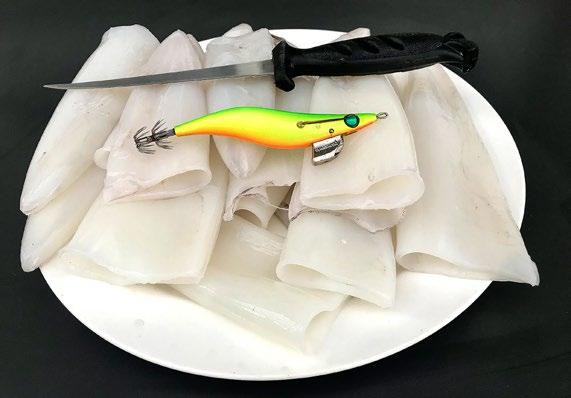

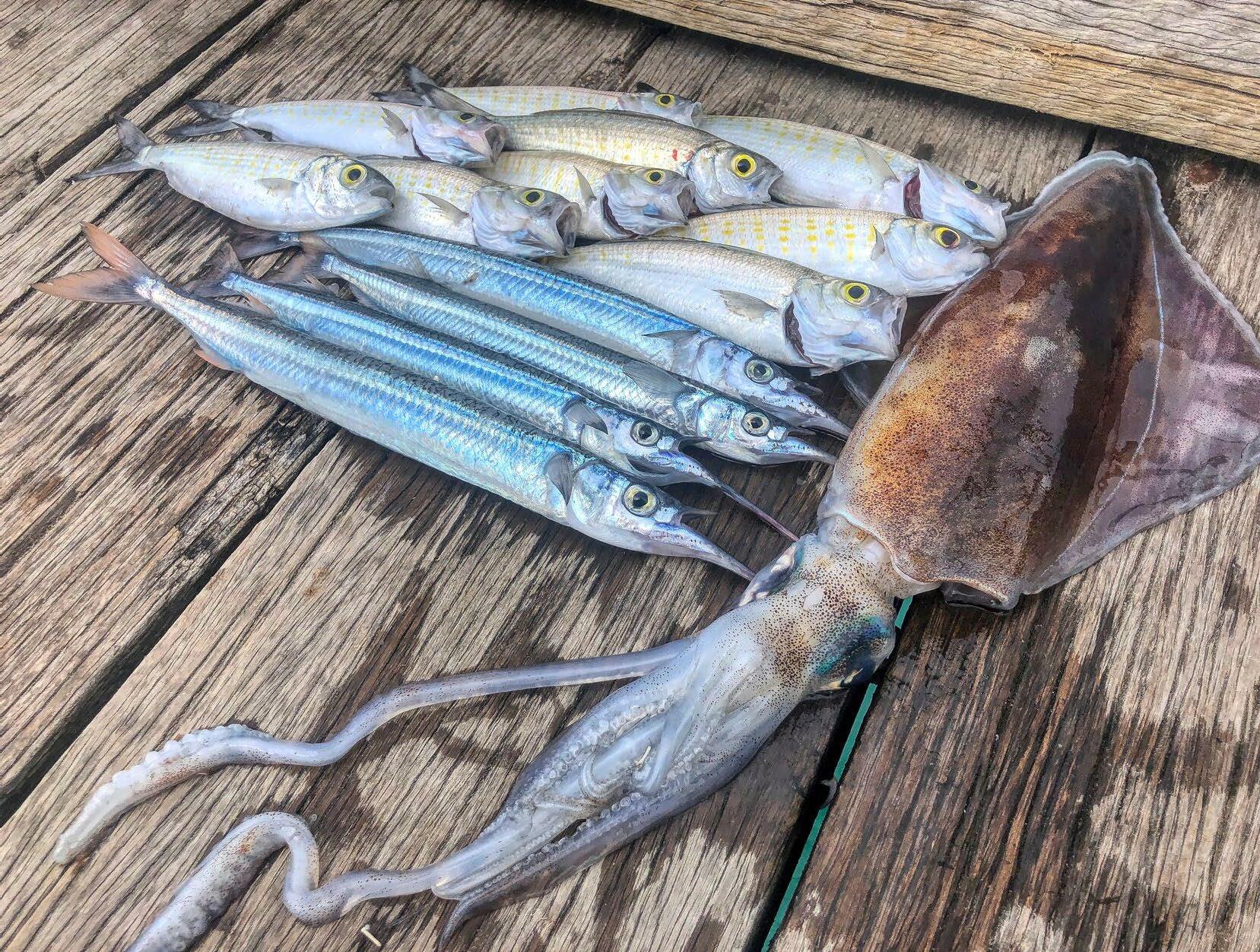
While bait fishing is most common along our jetties, a small collection of lures make for a great edition to the tackle box. On a recent trip to a favourite jetty of mine, my usually reliable ploy of casting baits into a berley stream was not getting the job done. Unsatisfied with the lack of action, I opted for a small diving minnow to see if I could rustle any inquiries, and the results were immediate. For the next 45 minutes I enjoyed a hit per cast and left with a good haul of Australian herring. Still perplexed by their lack of interest in my baits, my questions were answered at the filleting table, when scores of small whitebait were found in each of the fish. It certainly doesn’t hurt to change things up! If looking to add some ‘bling’ to the tackle box, consider small hardbodies such as the Savage Gear Gravity Twitch and the Daiwa Double Clutch, as well as small, natural coloured soft plastics with a thin body profile.
Lures provide a no-fuss option and are ideal for a quick explore along the timber.
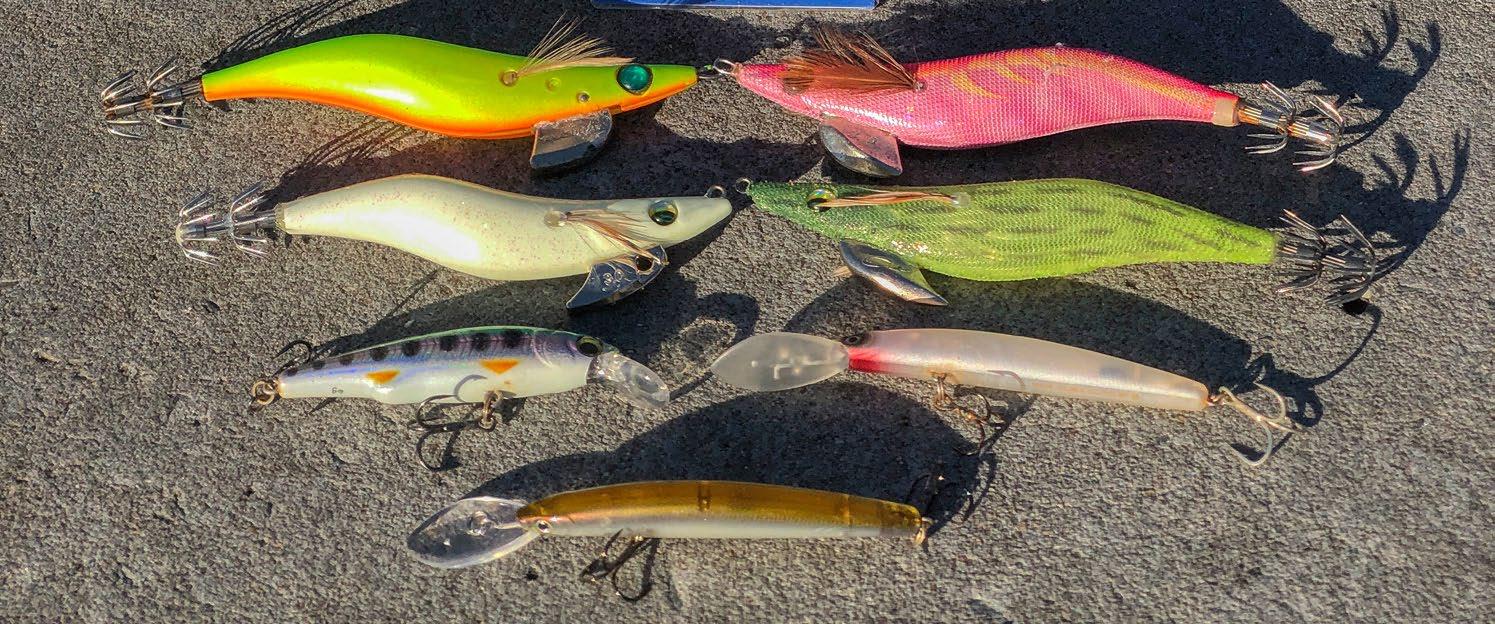
Small baitfish impersonations can fool a host of jetty lurkers.
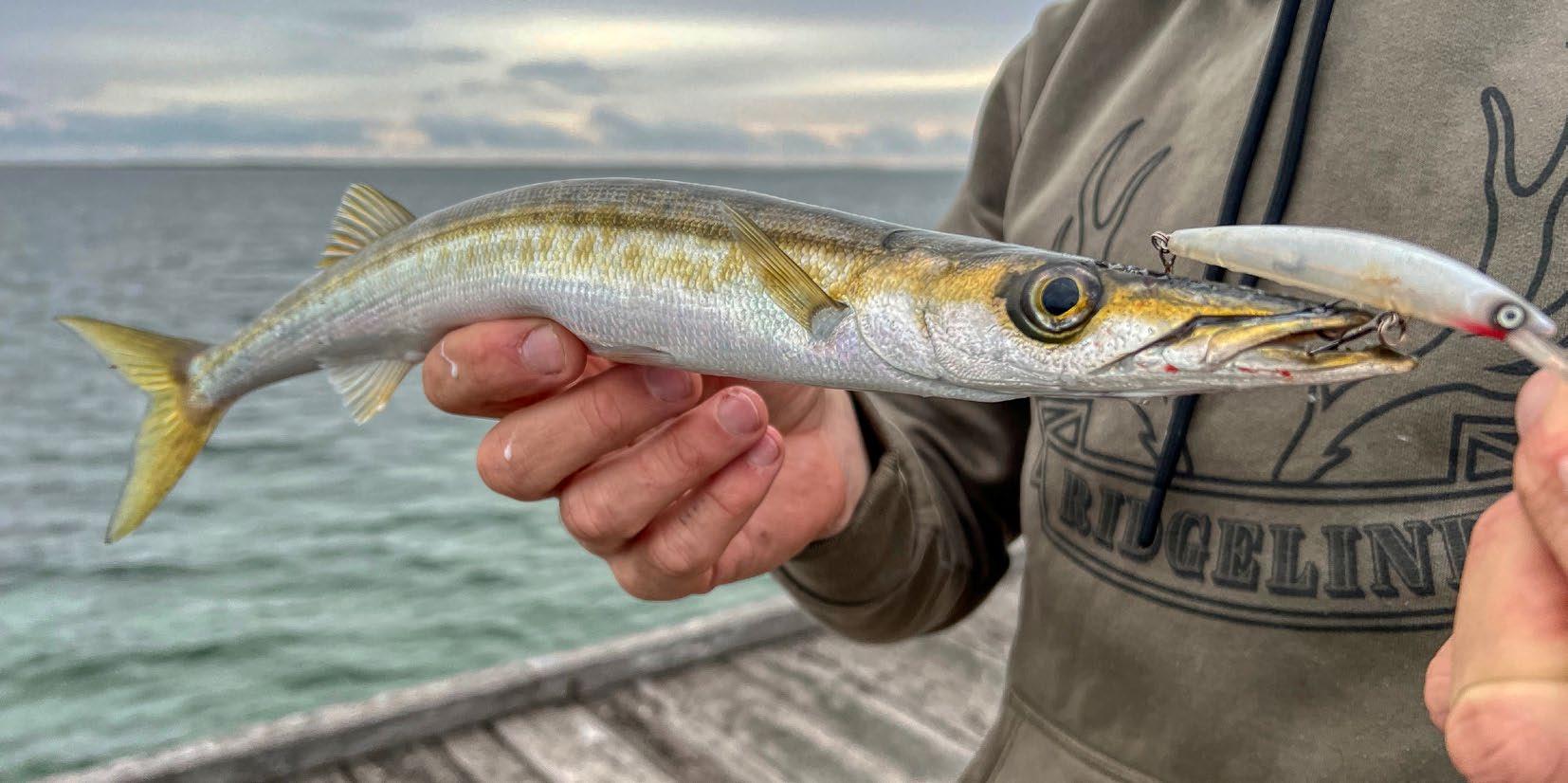
Arguably the most important factor to success on the planks is the effective use of berley. I simply never fish without it. A good berley trail not only attracts smaller species to your spot on the jetty, but the presence of fired up baitfish can quickly attract predatory species that are available from the pine. After a lot of trial and error, I’ve come to realise there’s a fine balance between a consistent supply of berley and having too much in the water. Furthermore, I don’t like large chunks of berley in my trail, as I feel that fish follow it as it drifts away from the jetty. As a result, I opt for a simple concoction of sliced bread and tuna oil in a berley pot with very fine holes and suspend this on the surface of the water. The fine holes prevent large portions of bread entering the slick and leading fish away from the area. Furthermore, I like to make up a mixture of breadcrumbs and tuna oil and throw a small handful into the water every five minutes or so. Dispersing a cloud of fine oily crumbs into the water can bring the fish back on the chew if they turn a little coy or need some further encouragement.
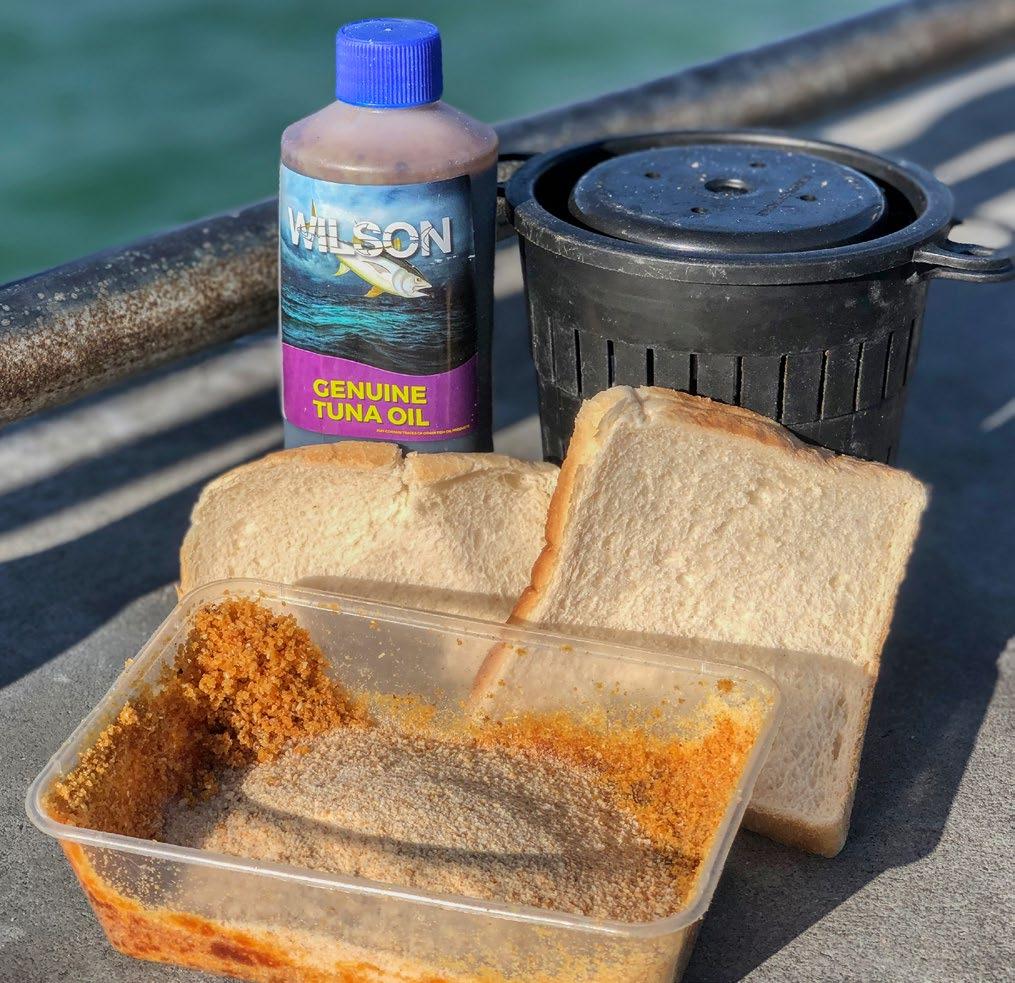
Bait or plate? Garfish are a prized meal and not just for anglers!
Berley is simple but essential. It really is a game changer.

Baited and ready to go. Jetties are a great platform for targeting crabs.
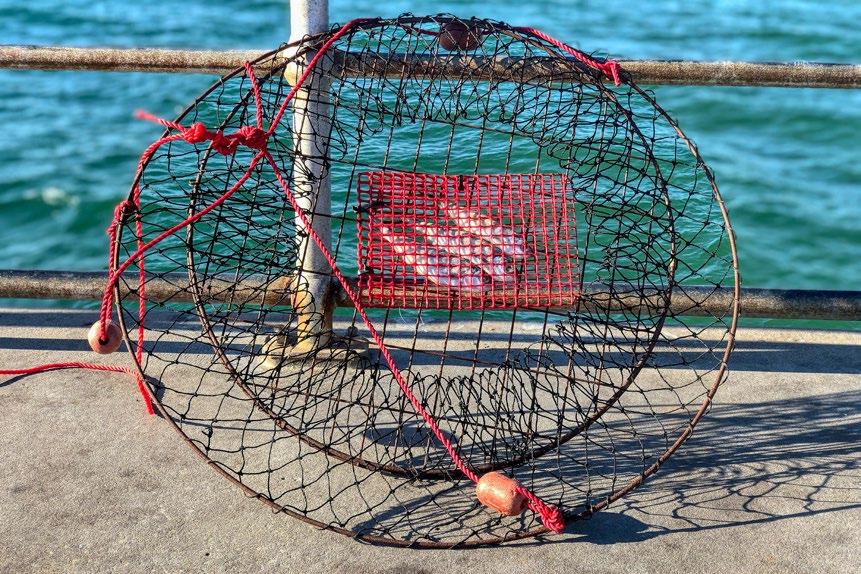

The spider web of ropes hanging from jetties around the country indicates that crabs are on the march. In the southern states, this usually means blue swimmer and sand crabs in the warmer months, but in the north mud crabs are the holy grail. These are a terrific target for people new to the game, especially kids. Simply bait up your nets, send them over the edge and check them every 20 minutes or so (perhaps a little longer if using steel mesh pots up north). Fresh, oily baits are ideal and can quickly be converted into a good feed. Make sure you’re familiar with the local regulations and that you are always armed with an appropriate crab measuring implement. These crustaceans are imperative to the food chain and our fishery, so take only what you need for immediate use.
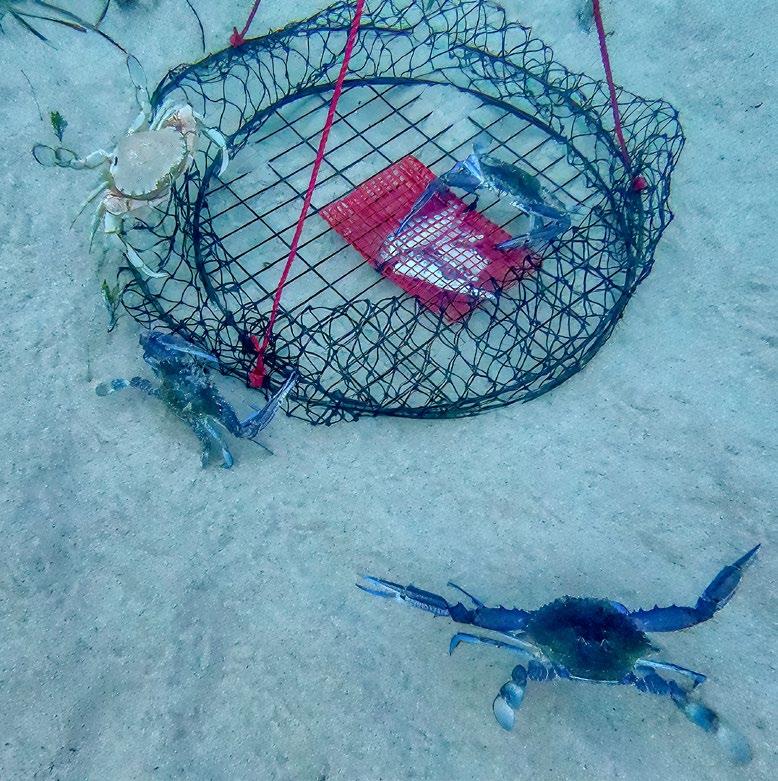
Given that this article is particularly targeted at new anglers and families who are keen to have a go, it’s worth noting some basic safety and etiquette considerations. While generally considered safe platforms to fish from, it doesn’t take long for things to take a turn for the worse without some care. If you’re a non-swimmer, or taking kids for a day out, it makes sense to don a life jacket. Sure, you won’t win a prize for best dressed down the jetty catwalk, but the alternative isn’t worth the gamble. Further to this, consider looking for jetties with railing as a protective measure; it makes your fishing easier too!
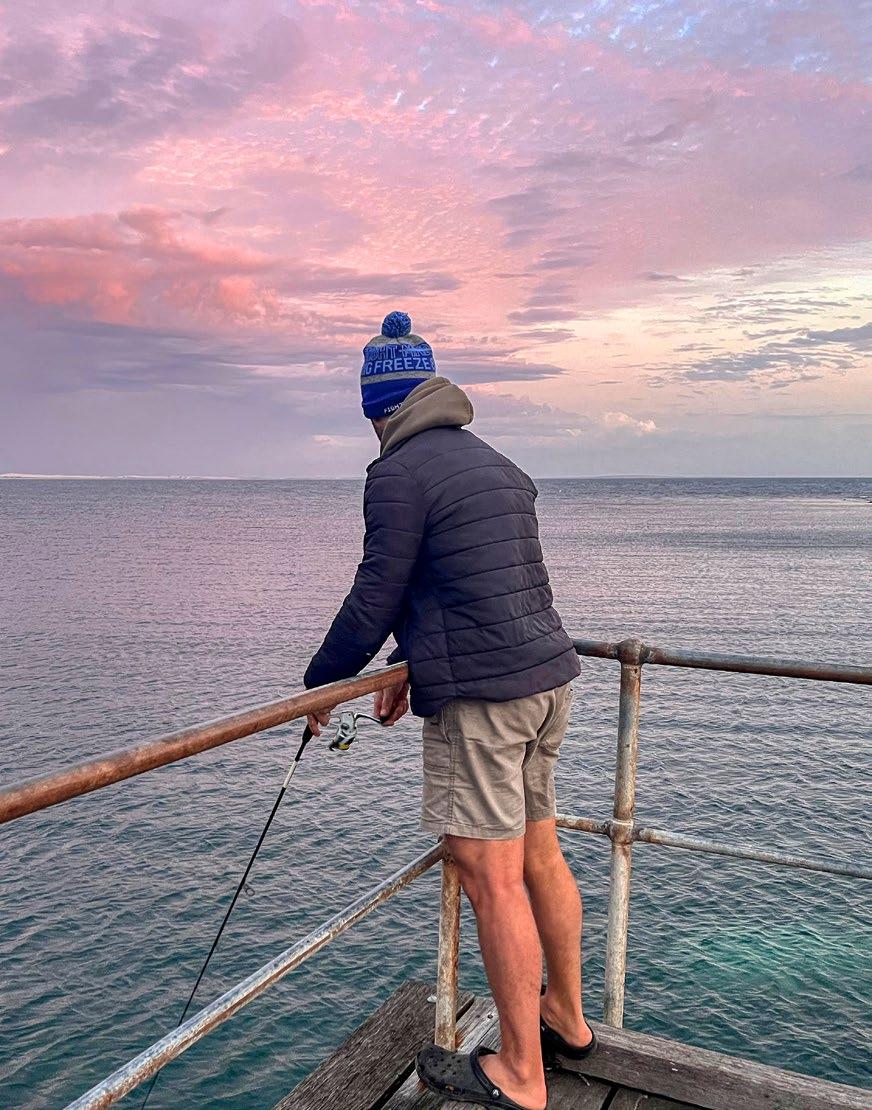
Moreover, jetties can at times become crowded and, with this in mind, it’s important to remember some basic courtesy. It really is as simple as finding your own space to fish so that you’re not encroaching on another person’s area and tangling lines. Where possible, choose to fish on days where the wind will be running perpendicular to the jetty so that your line doesn’t drag across in front of others. Avoid being the person to have a rod stationed every 10m along the jetty, and be mindful that there are likely to be young families and non-fishing visitors enjoying the space, so keep things clean!
Finally, jetties often attract some wonderful local characters who have frequented the pine for years. Provided you are respectful and are not fishing in their pockets, most are more than willing to share a yarn with you, and you will undoubtedly learn a few tricks of the trade from them – priceless!
When it comes to safe and easy to fish from locations, jetties are right up there with the best. They make for sensational platforms to learn the basics and, with a little thought, can produce good hauls of a wide array of species that anglers of all experiences can enjoy. With summer upon us and holiday cheer in the air, why not rally the troops for a jetty patrol –you never know what lurks below!
Jetty railing can be a handy safety buffer.
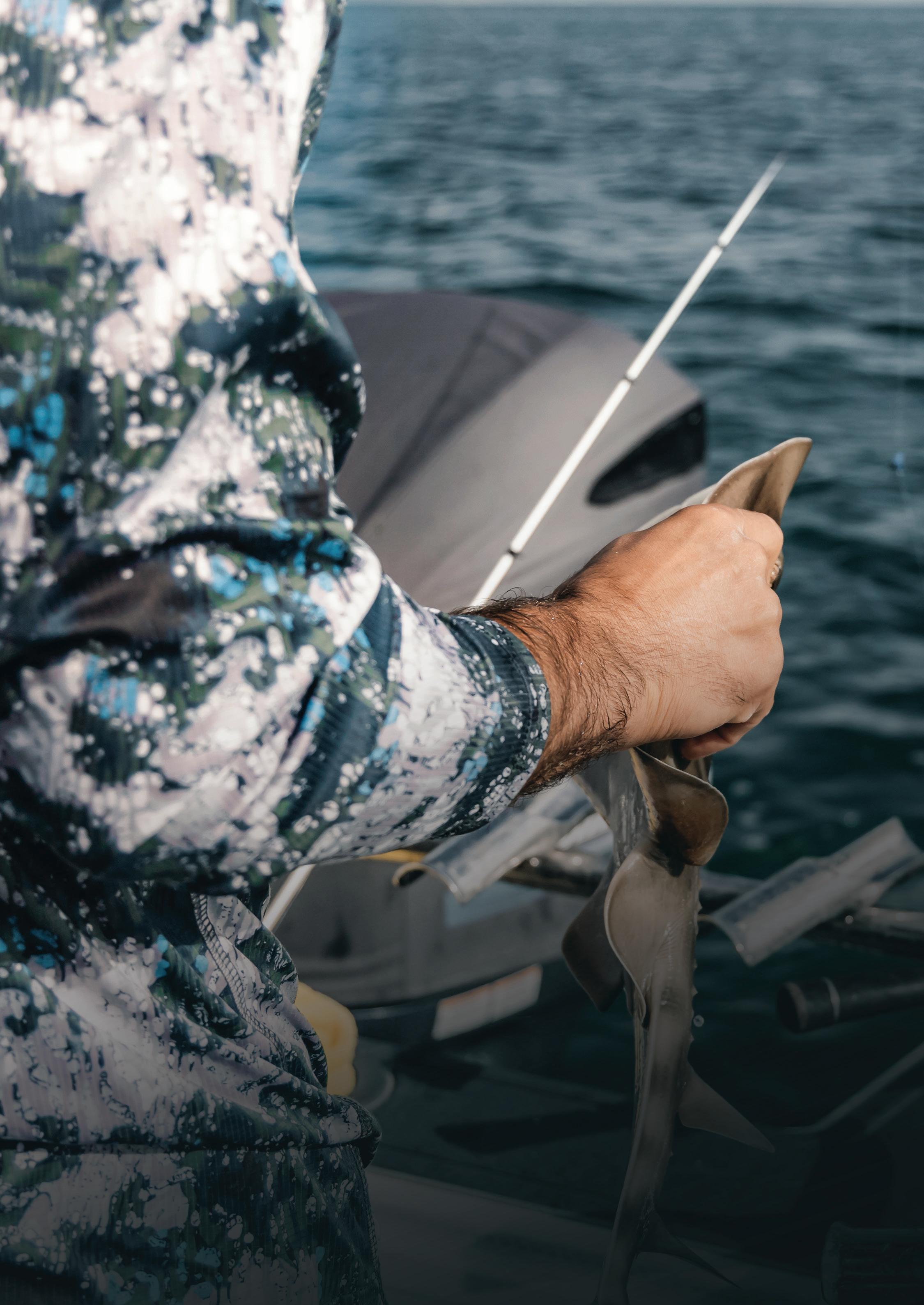
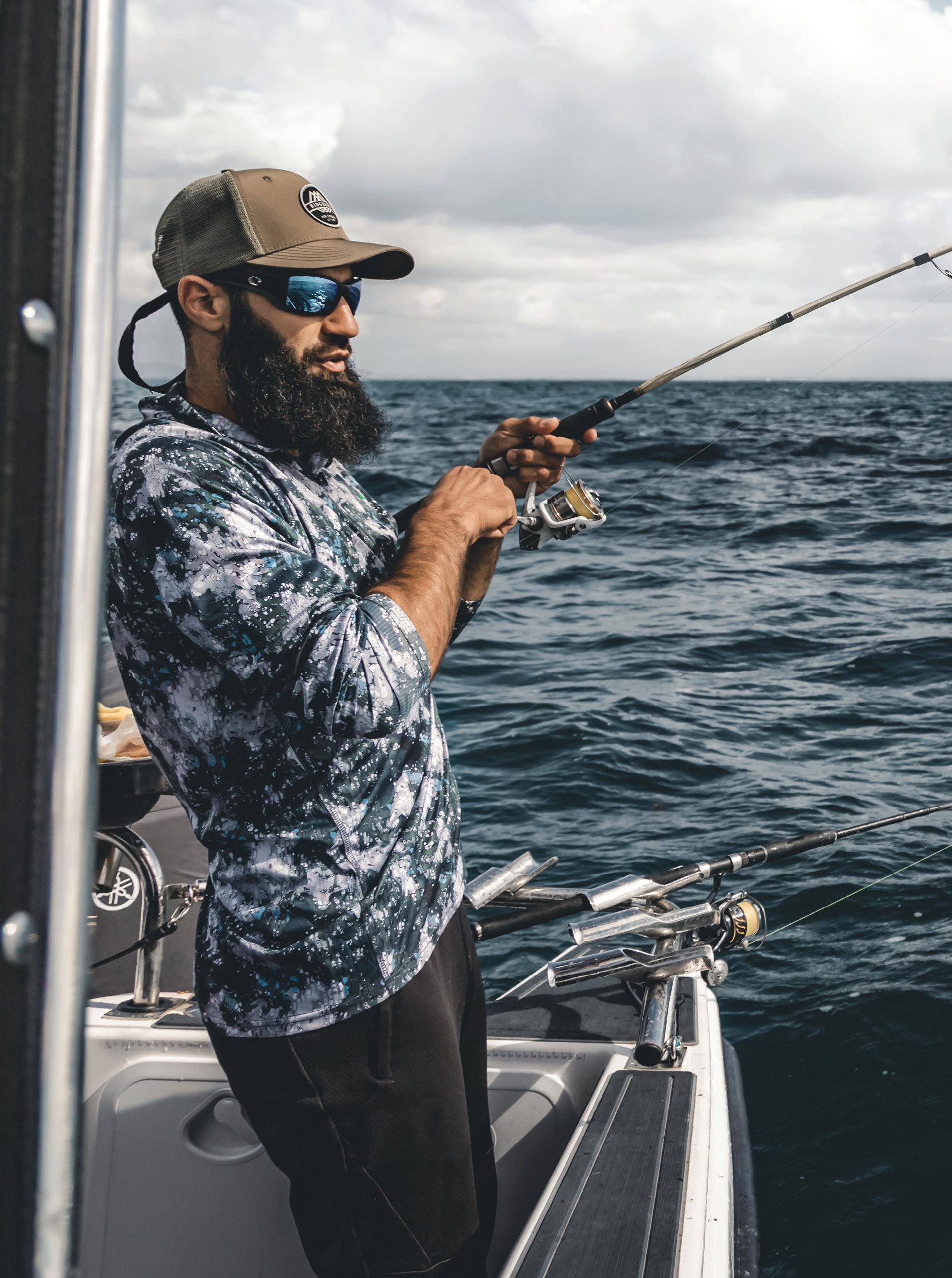


The annual stand-down for Australia’s Murray cod anglers has drawn to a close, and with it comes a renewed sense of hope for the upcoming angling season. Flooding rains in recent months have done their best to dampen spirits, but there’s still plenty of action available for those with the incurable ‘itchy palm syndrome’ brought on by three months of wistfully counting down to December 1.
Whether you’re a devout worshipper at the ‘church of cod’ or new to the scene, summer has traditionally been the ideal time to hit the water in pursuit of your next personal best. However, with impoundments at capacity and rivers regularly bursting their banks, this season is shaping up to look a little different.
Whether it’s searingly hot and humid days followed by bug riddled nights, or overcast dreariness with low water temperatures, success is more likely to favour the prepared angler. While the natural instinct is to hit the river as soon as the calendar flips to December, taking the time to plan your attack before heading out may prove the difference between the dreaded donut and your best day yet.
With our storages all full to the brim, releases will inevitably need to occur to manage ongoing flood risk. With these releases will come a different set of challenges, none more evident than faster flow rates and cooler water temperatures. Increased flow can be a major challenge for native species, both for us as anglers and for the fish as residents. While regular environmental flows are a necessary and welcomed trigger
Water flow rates are a significant factor in choice of location
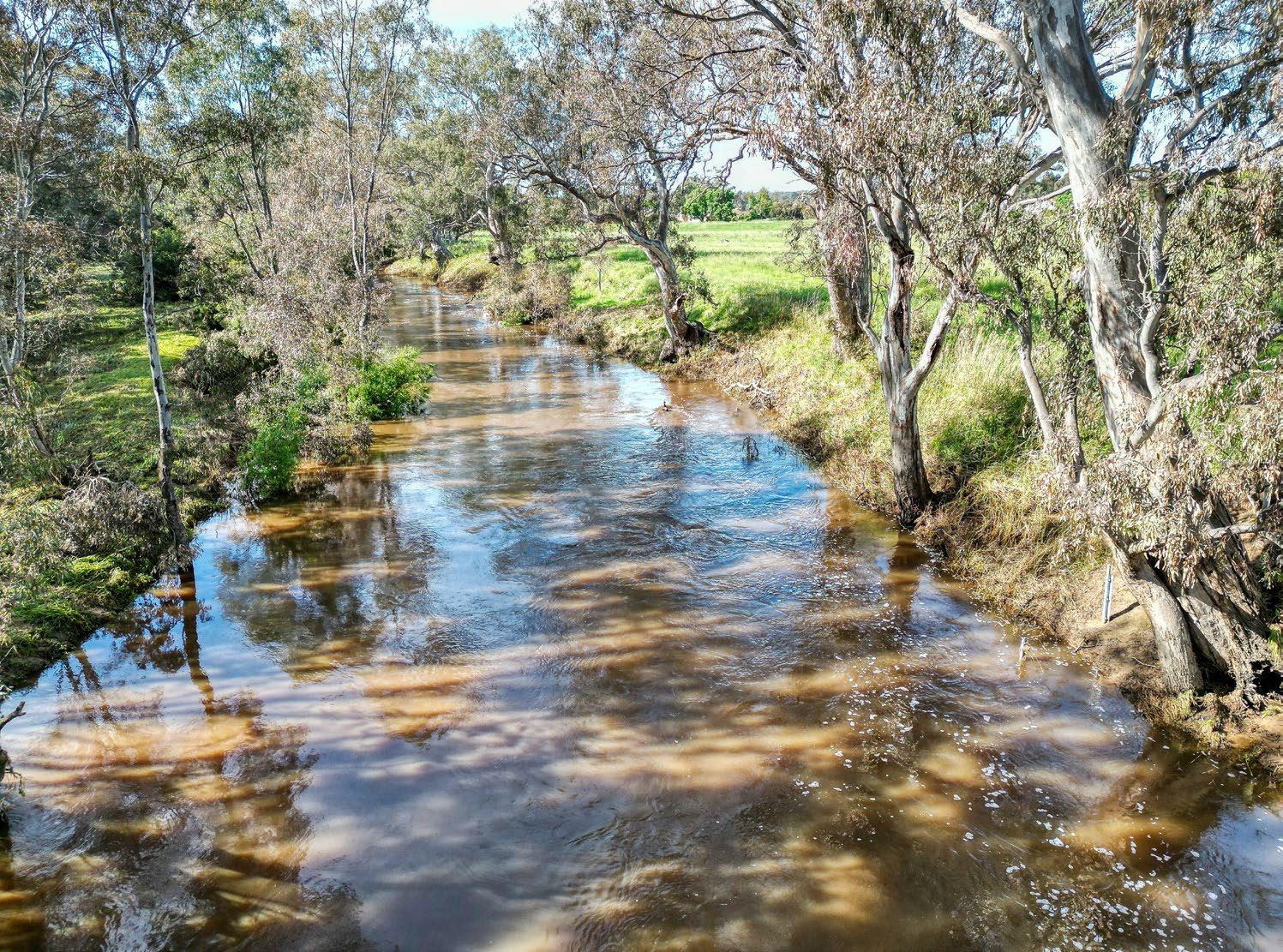
for spawning, sustained high flows play havoc with breeding cycles, degrade habitat and erode our precious riverbanks. Depending on headwaters and catchment areas, most flows will also increase sediment levels in the water, gifting us low visibility, chocolate milk downstream. From an angling perspective, fast and dirty flows will inevitably shut fish down. Logistically, safety in a nice secure snag or eddy is priority number one during times of instability, with feeding number two. Fishing will be quieter, but like any of us, they have to eat sometime, so those putting in the effort will cross paths with the target eventually.
Water temperatures on the whole are likely to be lower than usual on any river controlled by a water storage. As dam gates are lifted bottom up, the water spills from the depths first, where water is naturally colder than on the surface. Generally speaking, the colder the water, the slower the fish, not dissimilar to what we experience in winter. As a result, techniques that would usually dominate the summer season, like fishing surface lures and frogging, may prove less effective this year. Focus your efforts on identifying areas where there’s potential for a temperature change. With fish being cold blooded, even half a degree warmer can be enough to boot their metabolism into gear and put them on the hunt.
So, what can you do? Thankfully, it’s not all doom and gloom, and with a few tweaks to the usual strategy you’ll be opening your account in no time.

Bug spray. Anyone who says otherwise clearly hasn’t been chewed to oblivion by mosquitoes or copped a bug in the ear while fishing.
With the deluge of water we’ve seen in most inland areas, access to rivers and in turn, our success, is likely to be varied until well into autumn. The entry points you might’ve once used could now be underwater, and likewise, your favourite snags may now be entirely submerged or even downstream. Areas that were once reliable feeding grounds have likely changed completely. Search for new ground, taking particular note of areas where flow might be better regulated through the likes of natural bottlenecks, weirs or dams.
Where Google Earth and Maps would once have been the best tools in your arsenal for finding new honey holes, waterways may have changed drastically in recent months. While these are still a great start to identify potential hotspots, laying eyes on your target water before heading out is the only way to guarantee you’re onto a fishable spot. Use the cold, rainy days that would normally see bums glued to couches to jump in the car and explore. This tactic will pay dividends in maximising time on water, and it’s likely that if you put the miles in, you’ll come across water less frequented by casual anglers.
Spend some time contemplating the best transport method to fish your chosen water. Chucking the kayak in could result in a long day of constant paddling and not much else. Likewise, submerged timber and electric prop’s don’t mix well. While some look down their nose at land- based angling, the humble foot falcon could just prove the most effective method.
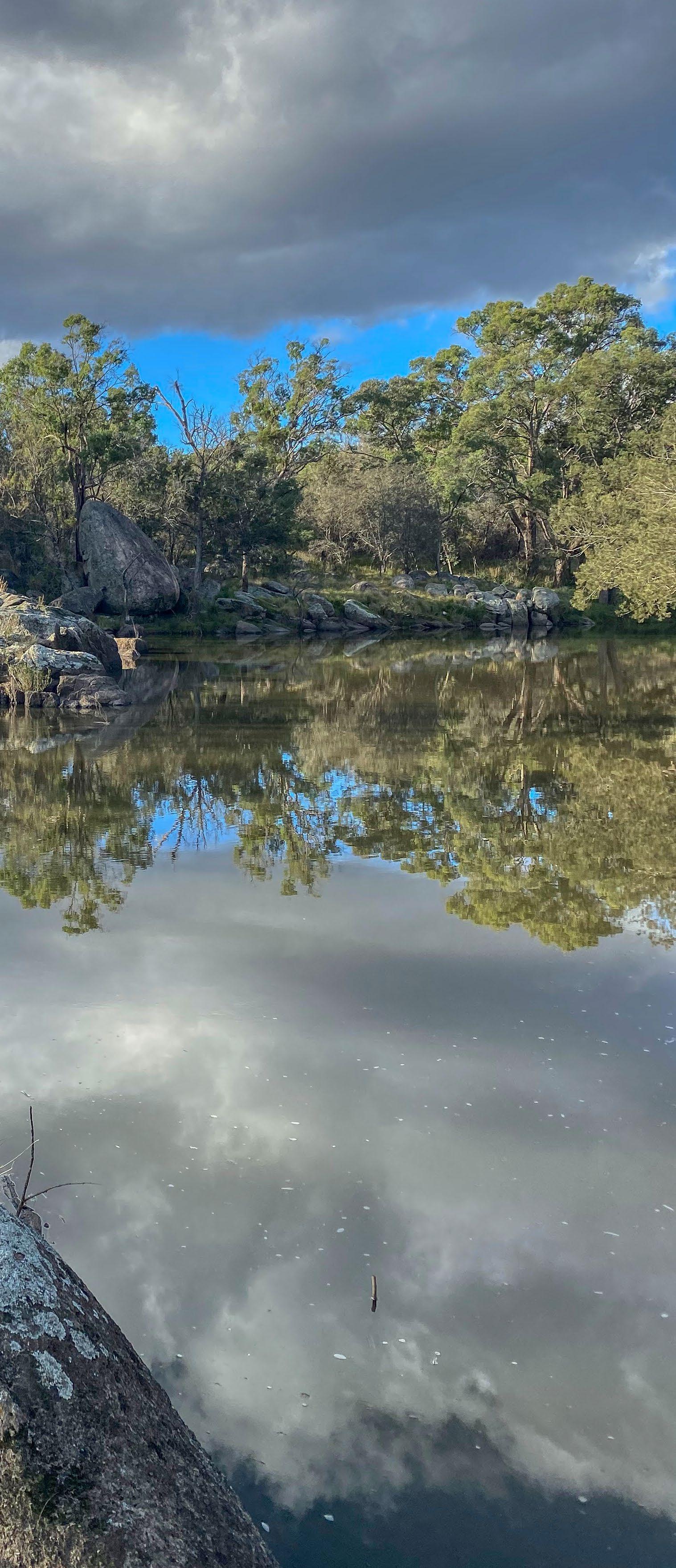
A quick search will show there are now numerous websites and apps reporting accurate water levels, flow rates and water temperatures. Use these tools to your advantage by identifying stable windows to fish. Look for breaks in releases or times where lower, but consistent, amounts are coming downstream. If fish have been busy paddling into the flow like their lives depend on it (literally), you can bet a break in the system will have them on the hunt.

Similar to fluctuations in weather, natives also seem to sense changes in flow. Periods of stability chased by a big flush have also been known to trigger the bite and should be attempted, regardless of other weather factors. If you don’t have the luxury of being Johnny on the spot for these random trigger changes, simply remember: big fluctuations bad, stability good.
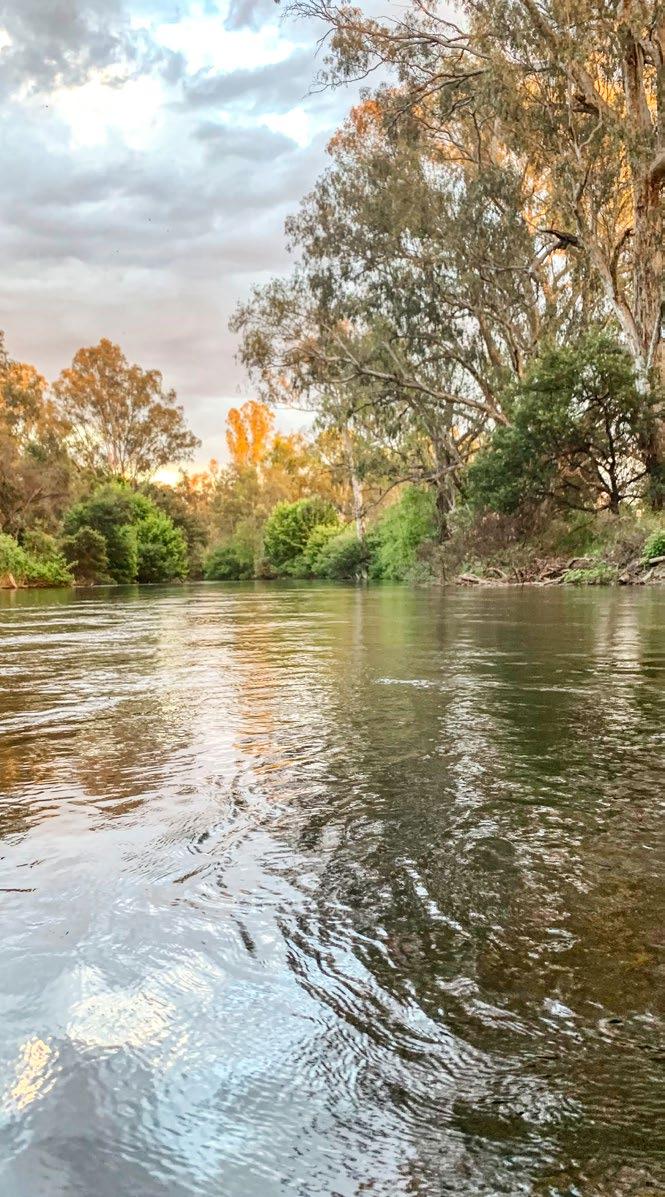
In a regular year, bulking up and defending home turf would be items high on the list of our green friends now the breeding season is complete. These will still be a priority, but the logistics are likely to look a little different. Flooding rains bring more than fresh water into our waterways. Debris is flushed downstream and trees with once stable footing soon fall into the water, their roots no longer able to hold weight on the sodden banks. While this creates havoc for anglers, the fish will be studiously reassessing their surroundings and identifying a suitable piece of structure to call home. Keep in mind though, in the time following a big rise or drop, fish may be preoccupied with getting settled again — yet another reason to avoid big fluctuations where you can.
Bankside structure is crucial. Look for snagstrewn waterways and fish them thoroughly
While holding in their snag waiting for treats to pass through is effective in regular flows, this season we’re likely to find fish favouring slower pockets of water like eddies and the tops and bottoms of deeper pools. Respite, plus a solid ambush point, is a recipe for a fat cod, so pay particular attention to snags spanning a good portion of the river and where foam banks up on the surface. Speaking of breeding, our natives won’t have been the only ones enjoying a strong recruitment, with numbers of river critters also experiencing a boost. With water levels high, baitfish will be sheltering in amongst submerged grass and on shallower banks where the water warms faster. Yabbies will also be thriving in the turbid water, with muddy banks in slow flow areas good hideouts to target.

As always, keep a keen eye out for ambush points like sharp bends, drop-offs, mid river timber, weed banks and current lines. These types of structure form part of their hunting routine, regardless of river conditions, and if you can combine any of these with slower, warmer water, it’s worth more than a few casts of your time.
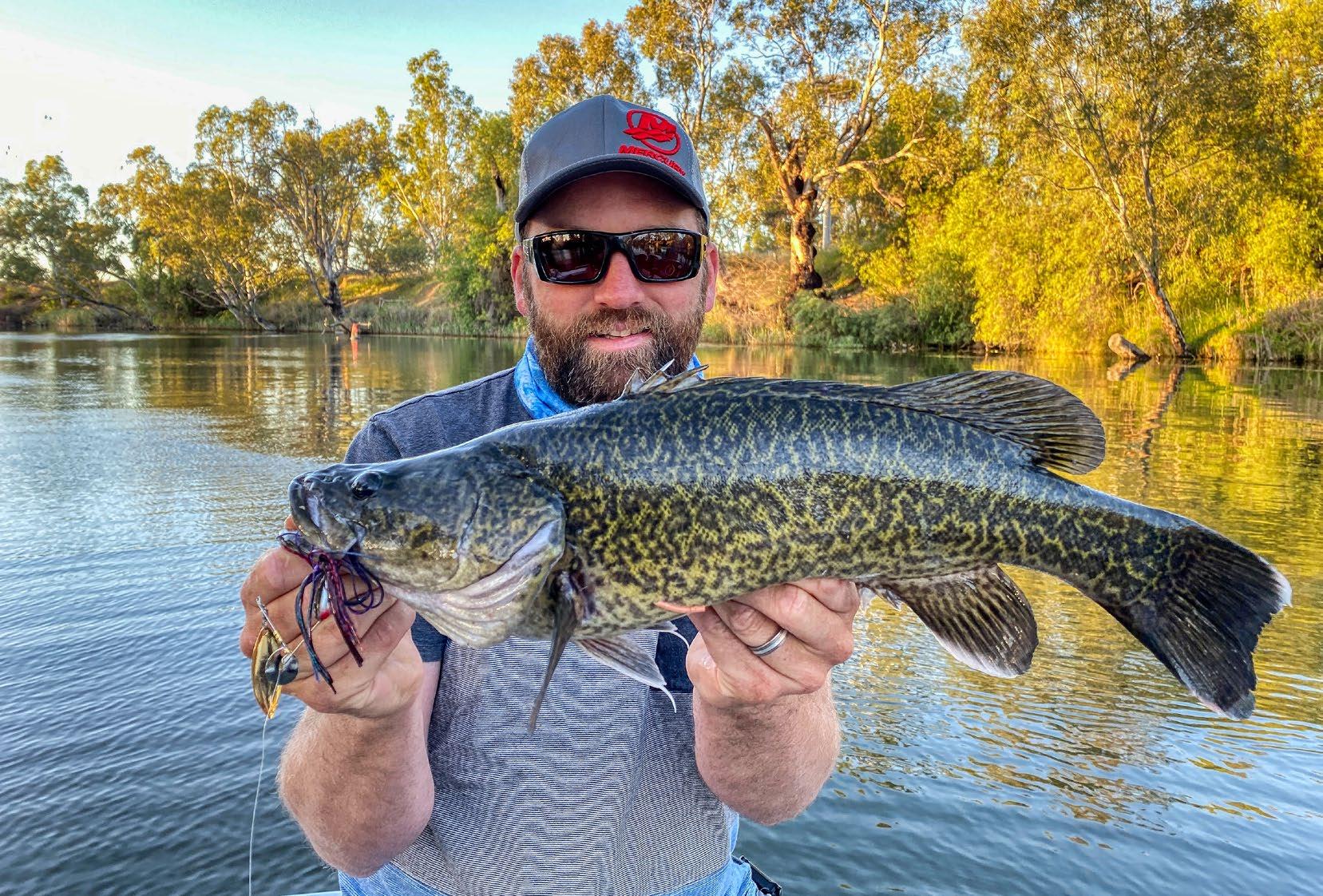
New structure in waterways guarantees one thing: new snags to get stuck on! If getting so frustrated you threaten to sell all your fishing gear isn’t on your to-do list (admit it, you’ve thought about it at least once), consider switching up the lures in your pack to those better suited to the conditions at hand. Where cod usually hunt with a combination of sight and feel, low visibility will have them relying on their lateral line more to isolate prey. As a result, anything with big movement and vibration will put you at an advantage.
Reaction baits like spinnerbaits, chatterbaits and jigs will be particularly effective, with the blades and skirts throwing plenty of interesting pressure waves through the water column. If you need to keep your bait up out of structure, select a spinnerbait with a Colorado blade. If getting down to depth in fast flowing water is your game, opt for spinnerbait sporting a Willow blade. If fished with the correct line tension, chatterbaits
A spectacularly marked spinnerbait victim
are nearly snag proof and are therefore a solid choice to bash into debris piles. Steady retrieves with your rod tip angled upwards will also help in steering clear of lure eating structure. The weights and sizes of your presentation should be based on the depth and flow of your chosen river, with some thought given to the size class of fish likely to be in the area.
Also essential in your snag avoidance kit are bibbed lures like crankbaits and divers. Given you’ll already be battling moving water to get your lure in the hot zone, tie on lures that get down to depth quickly. It’s crucial to pack floating or suspending presentations, so any rogue bump can be slack-lined out of the jaws of death by rising back to the surface.
Speaking of floating, in the right conditions surface lures will be absolute dynamite. Terrestrials will be on the menu each time the weather sees them being flushed off banks into the

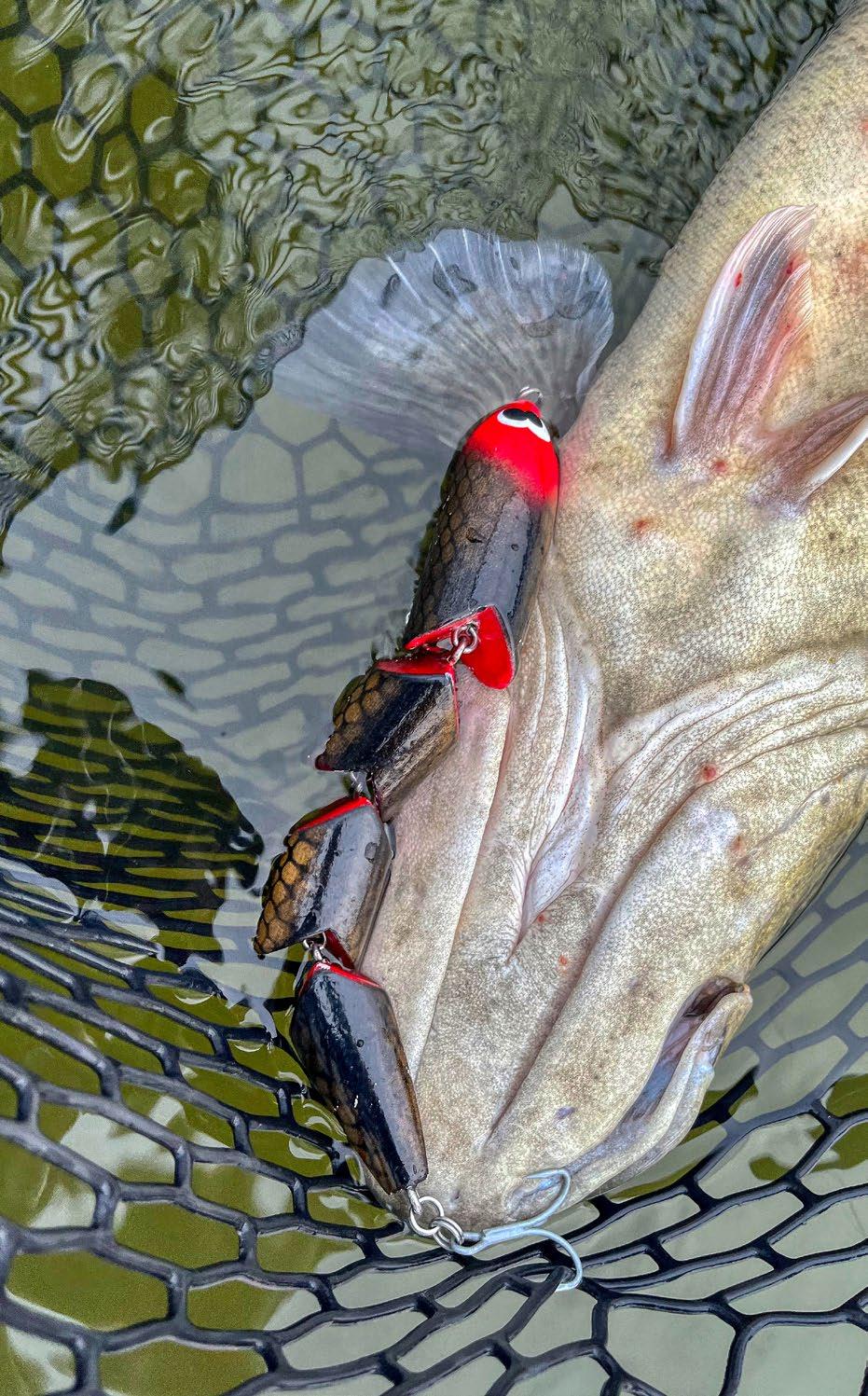
strike zone. Take note of your surroundings each trip; what are you seeing in the riparian zone? Lizards, snakes, birds and frogs will all be favoured quarry, so on days where it’s a bit warmer or there’s a light breeze dropping leaves onto the surface, definitely consider tying on something noisy to draw the surface slurp.
Even small cod will smash big lures!
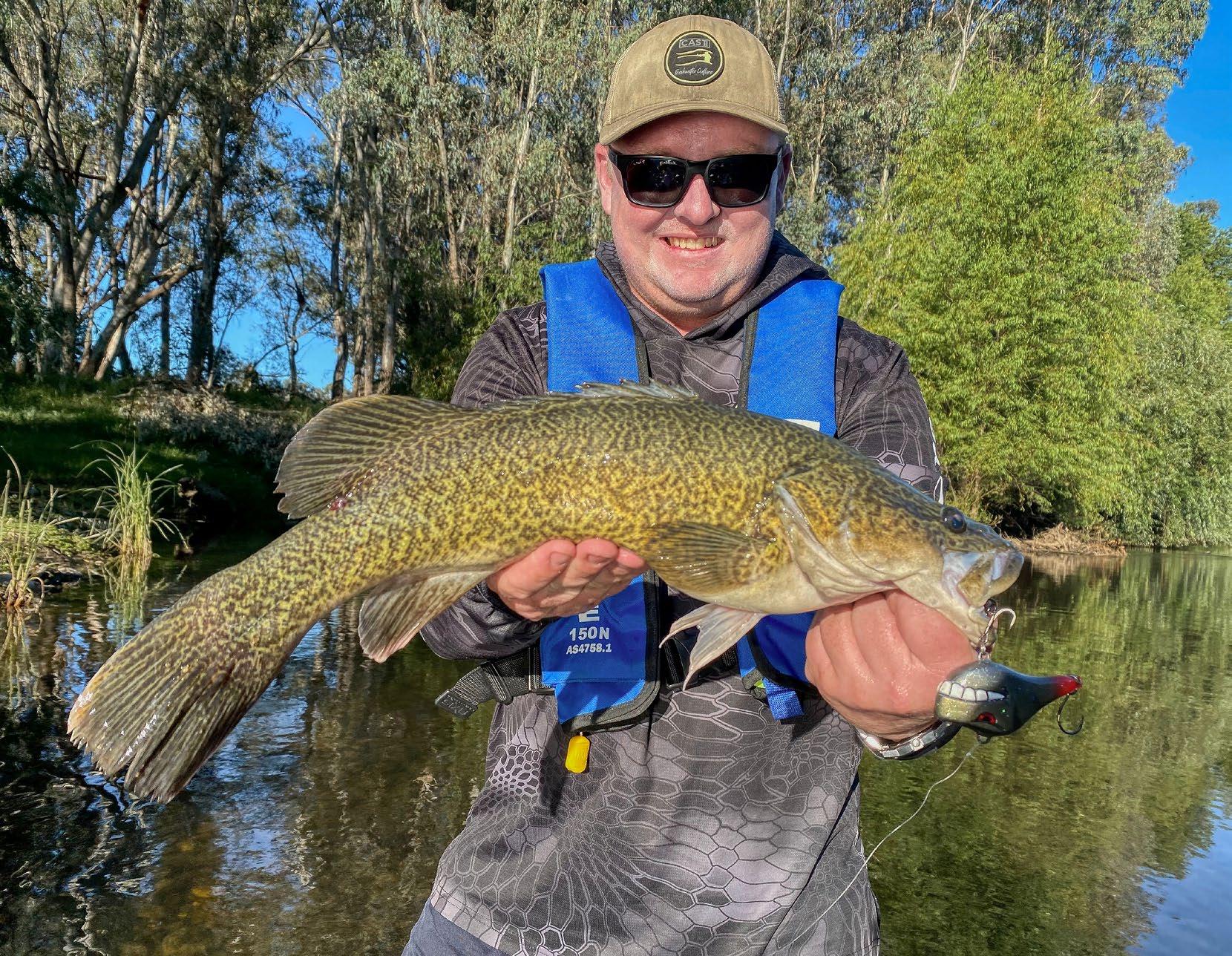
Where the natural response to faster water might be upping your lure weight to counteract drift, a couple of tweaks to your casting and retrieving could make all the difference. Keep in mind that, with increased flow, the majority of fish will be facing into the current. Given a lot of their tucker will be coming downstream also, cast parallel up-river and retrieve with the current. This is a far more natural presentation and you’re also guaranteeing that you can travel upwards to pop your lure off if you catch a snag.
Your retrieve speed will also need some adjusting. Lures travelling with current will need a faster wind to produce the desired action, where lures retrieved against current should be slowed to avoid blowouts. Take note of how your lure responds with each retrieve and continually adjust. A slow eddy behind a fast-sweeping bend will require two different retrieve speeds to offer the best chance of fooling a wily cod.
More thought will need to be channelled into your cast location. Where you’d normally aim to land the lure bang on the snag, casts should ideally be placed a short distance upstream. This allows you a small window of opportunity to engage your reel in time to commence your retrieve, and provides enough time for sinking presentations to get down without completely bypassing the snag or getting stuck.

It’s almost inevitable that at some point in one’s angling career the gear will fail on a good fish, and the pain will border on comparable with certain death. The good news is that those who choose not to bring a knife to a gunfight with a Murray cod in fast water are likely to avoid this feeling.

Reduced clarity will provide greater cover for leaders to be upsized. Where you might’ve previously run 20lb in clear water, you could now get away with 30lb and so on. Running a thicker leader will also help with snag bashing and gives you a touch more brute strength should you need to yank your lure to freedom.
Dedicate time to upgrading your hooks and split rings. Tackle coming out of overseas markets will usually be rigged for northern bass species and has the potential to crumble under the pressure of these implosion feeders. If tackle tinkering isn’t your thing, spend your pennies with Australian lure builders who understand our conditions and box lures with sturdy terminals from the get-go.
A decent cod will test every tackle component, from knots through to hooks and everything in between
Plant yourself in front of YouTube and practise your knots until you’ve got them dialed. A slimline knot like the FG is essential for most guide trains these days, with the slim beauty a serviceable alternative and much simpler to tie. While technically not as strong as the FG poundage wise, I’ve seen well-tied slim beauties land 100kg-plus Queensland groper in the top end with missing a beat.
Servicing your reels regularly and inspecting your guides for nicks after every use is a must. Check your braid frequently, remembering to occasionally trim off a metre or so between knots to keep the business end fresh. You wouldn’t run your car or boat without regular attention, so use a rainy day to treat your gear to some love and affection.
When cod get to this size, they are truly handsome fish
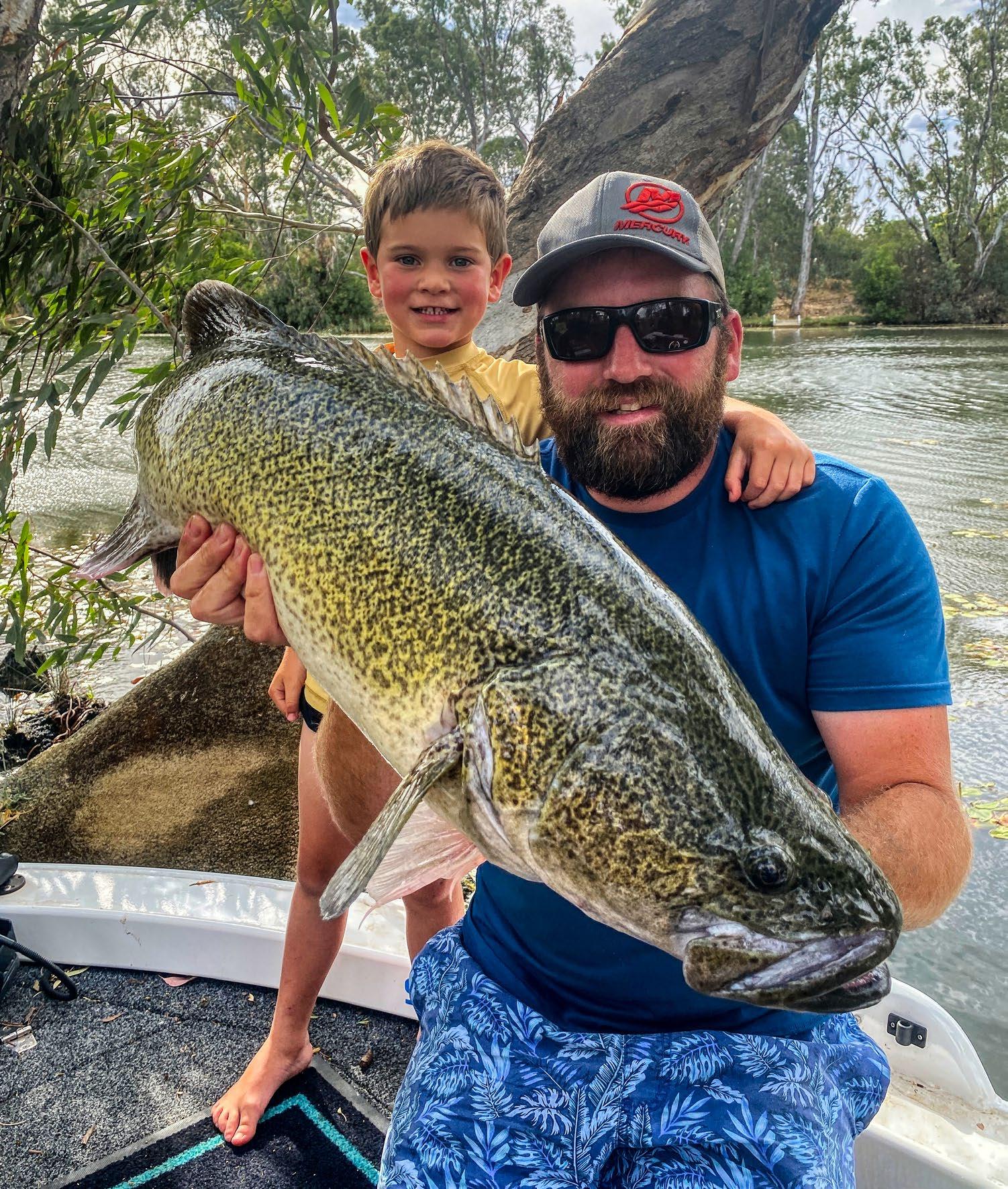
Regardless of conditions, a large part of consistently catching Murray cod, albeit very frustrating, is actually persistence. If you’re doing the right things in the right places at the right times, it’s only a matter of casts until you’re going to encounter your target. If you’ve got limited hours in which to fish though, maximise your chances by fronting up on warmer, more humid days, when the barometer might be unstable. Target your morning and evening bite periods, and if you can line up the moon phase to allow for better visibility into the evenings, you may just unlock the fish hiding from the daytime traffic.
It’s not hard to see why the humble Murray cod has become one of our most sought-after sportfish. It’s difficult to beat the feeling of your surface lure getting walloped after a long day of casting. It can be a love/hate relationship at times, but it’s certainly fulfilling when your hard work pays dividends, so get out there and get started on your thousand and one casts.
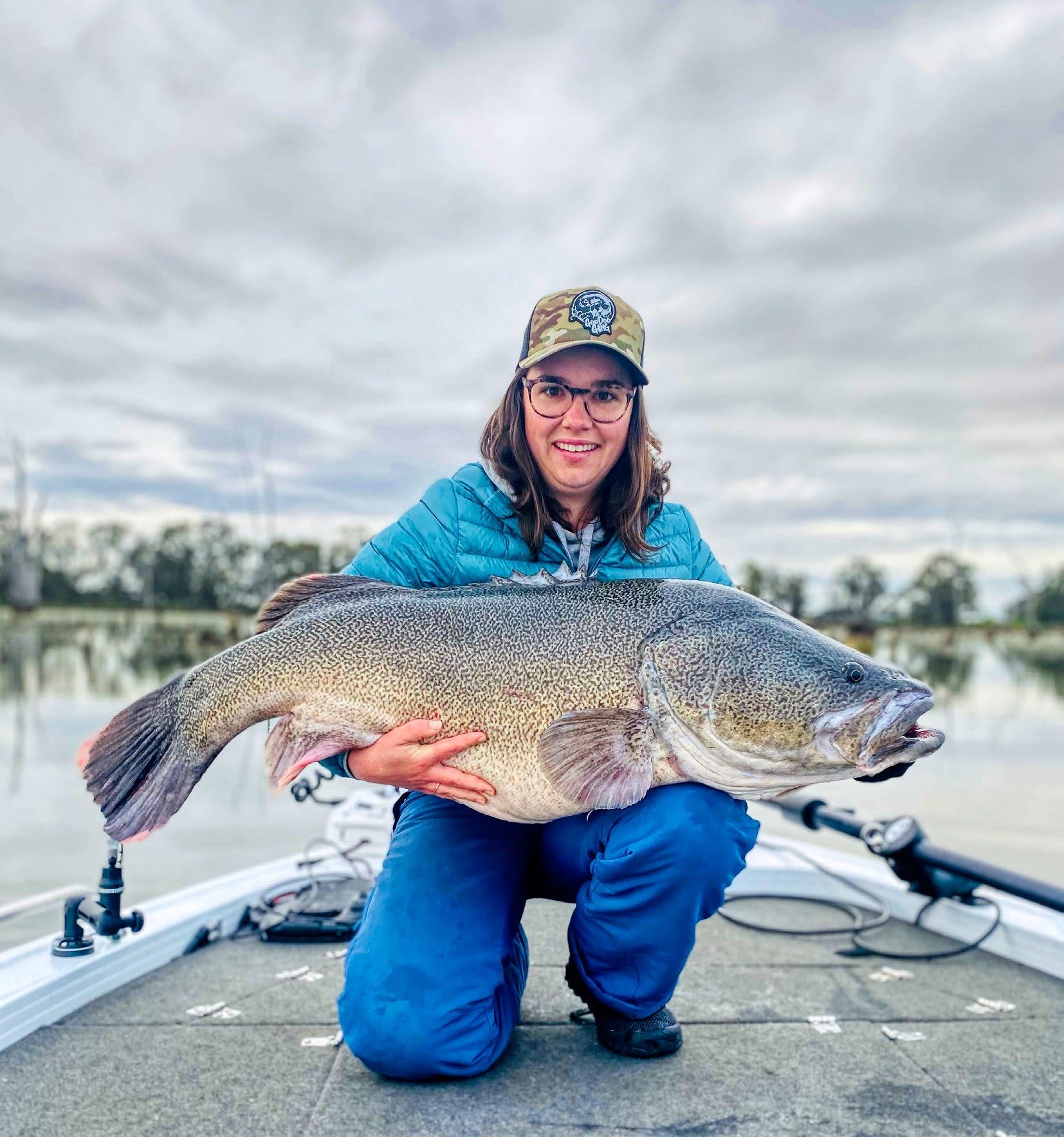
Persistence is definitely the key to catching cod of this calibre
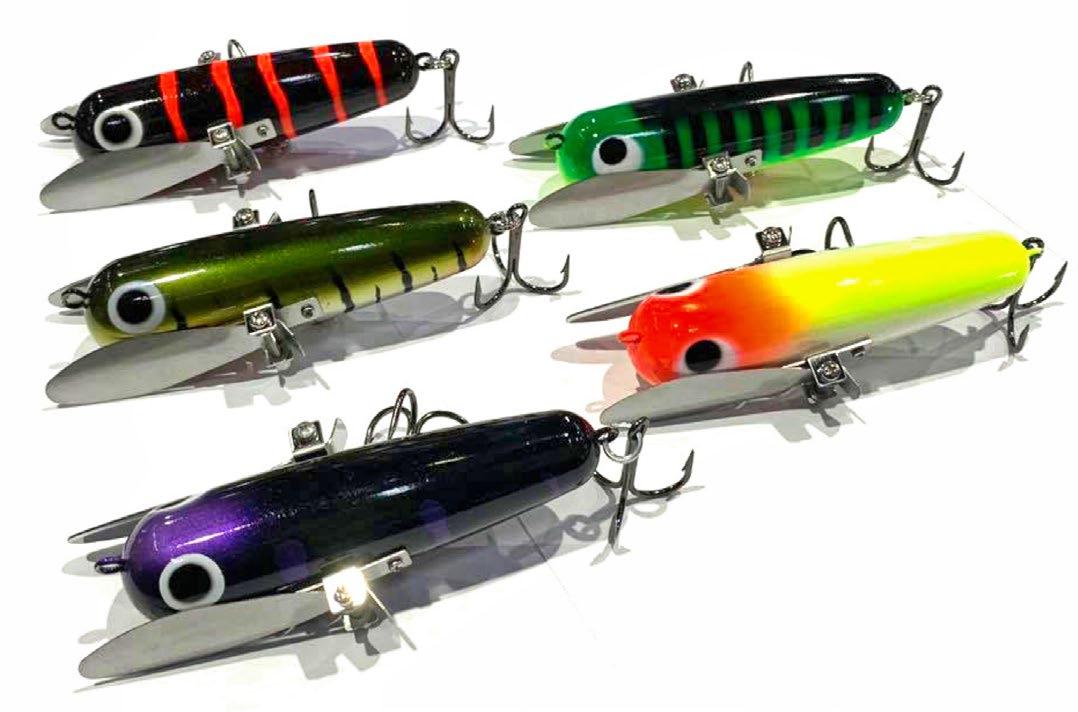

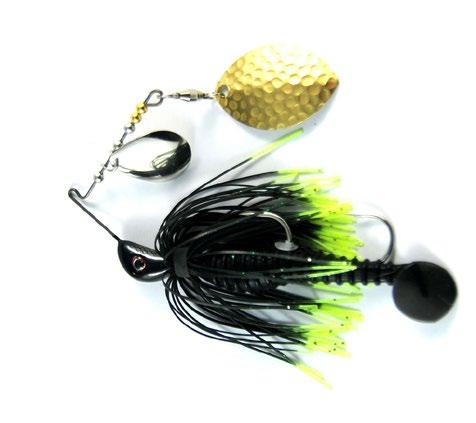

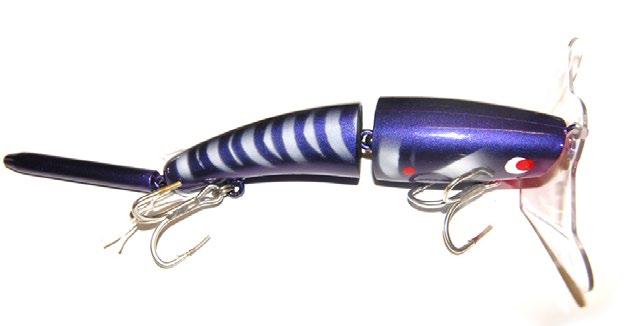


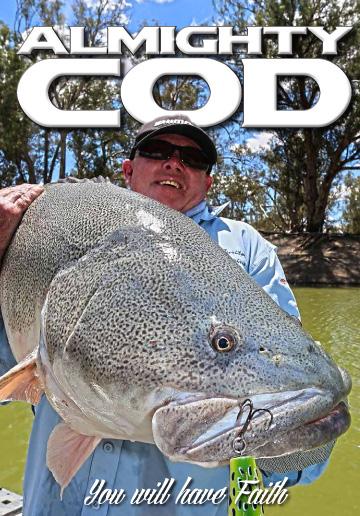
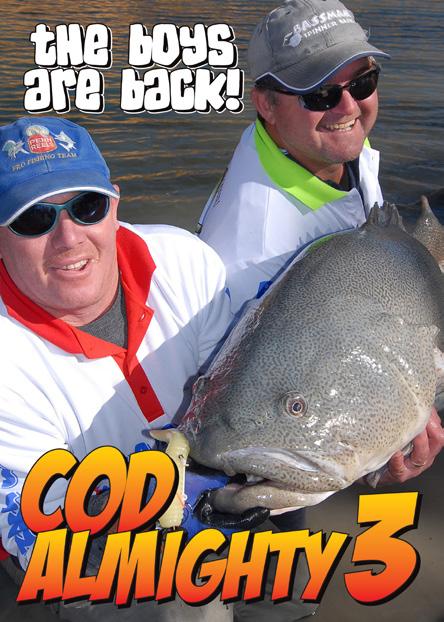

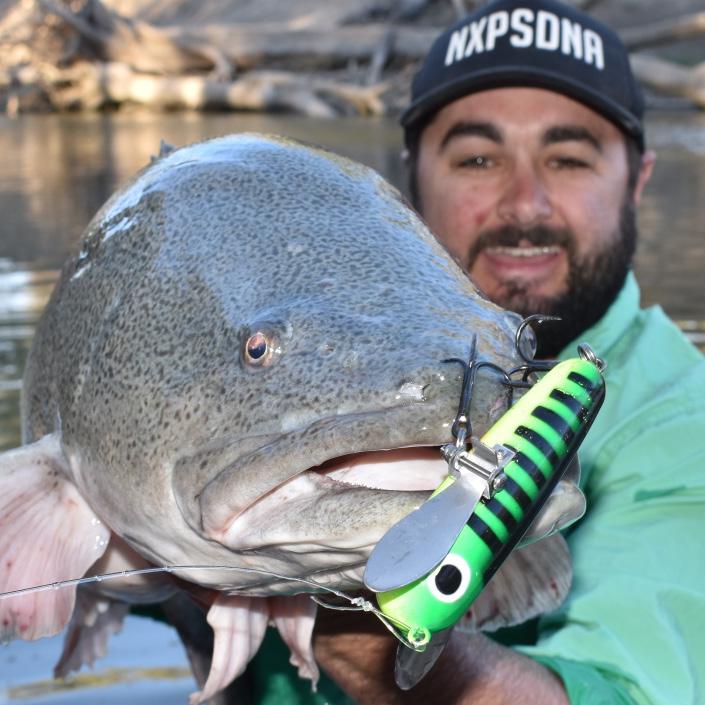

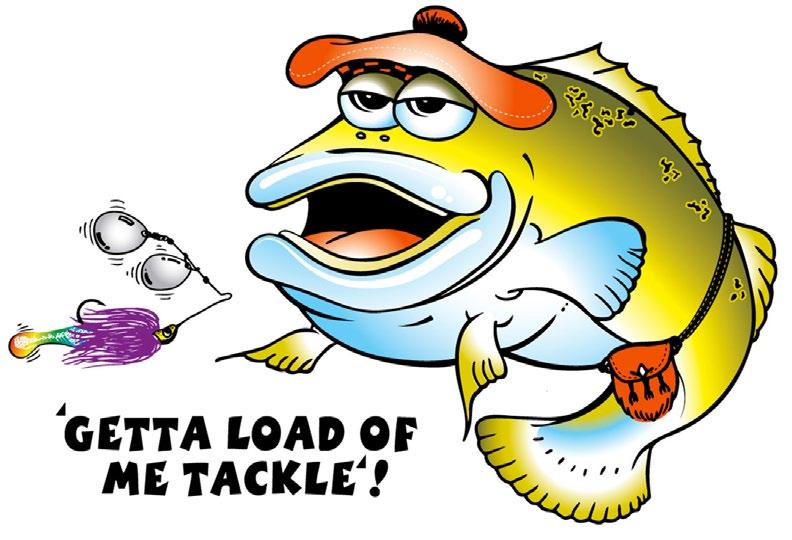
Clinton Hann with his hands full from our latest yabby trip.
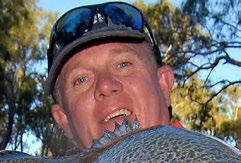

In Noah’s ark-like conditions the relentless downpour of spring rains has most of our inland rivers either swollen or bursting their banks. While high rivers and turbid flows put the brakes on many forms of angling, they do have an upside, as they stir to life a river favourite that’s great fun to catch and even better to eat.

When it’s been a while since the yabbies have been flooded, they often come in Jurassic sized frames.
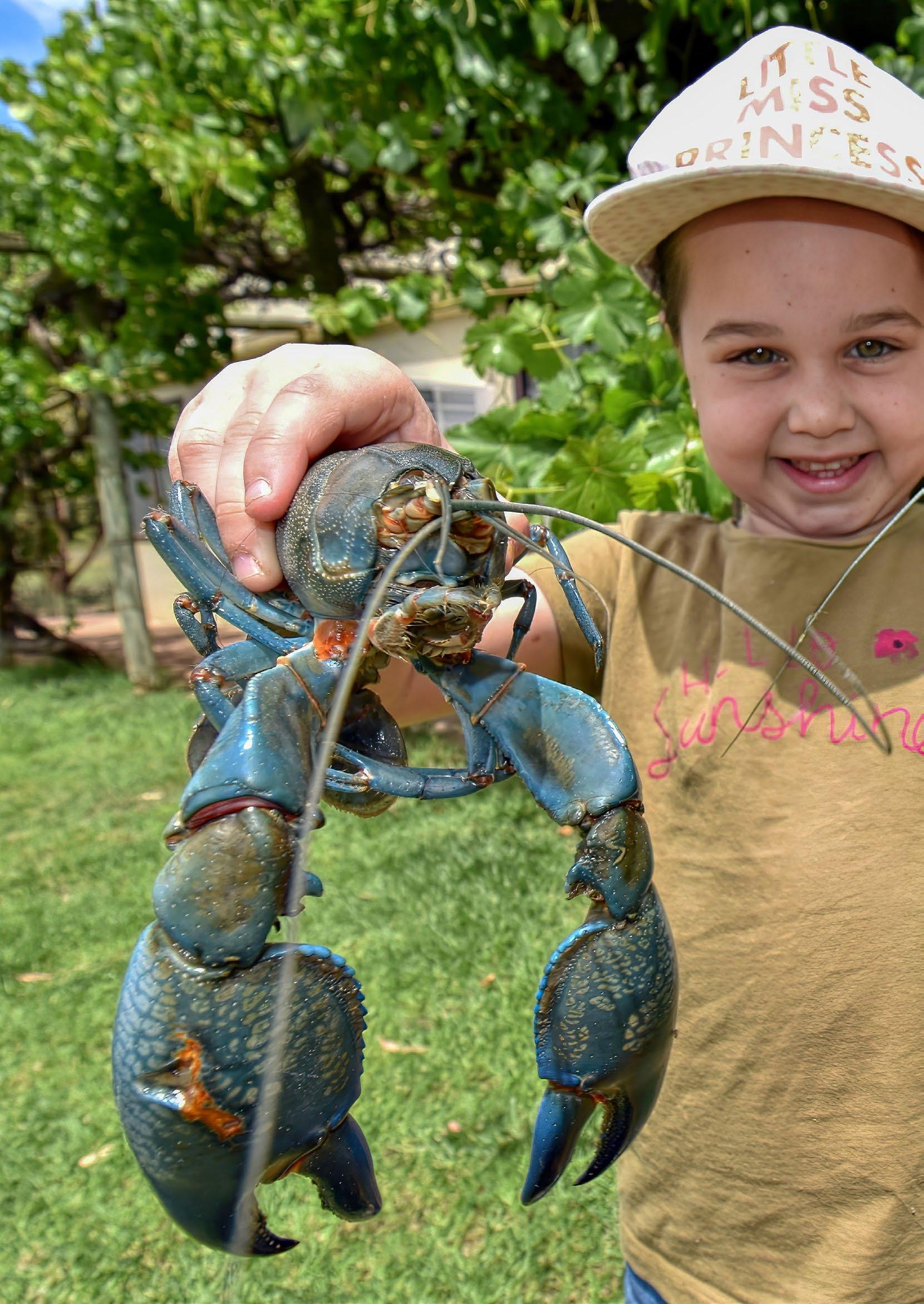
In the Murray Darling Basin a sleeping giant has found its feet and exploded forth in a living feast of legs and claws. Every drain, creek and pond is alive to a moving mass of yabbies that are feeding on an abundance of drowned vegetation and anything else they can grasp in their claws. We have not seen yabby numbers this thick in our rivers in more than a decade, but they are back big time and the chance to catch and dine on a mountain of meat-laden crustaceans has most anglers very excited.
Catching yabbies can be done both from a boat or land-based, depending on the chosen waters. In the larger rivers or lakes dropping your nets from a boat is more favourable, as you can place them further out at depth. In the small creeks and lagoons nets can be placed far enough out to be amongst the action. You can even wade around and shift them, should you need to.
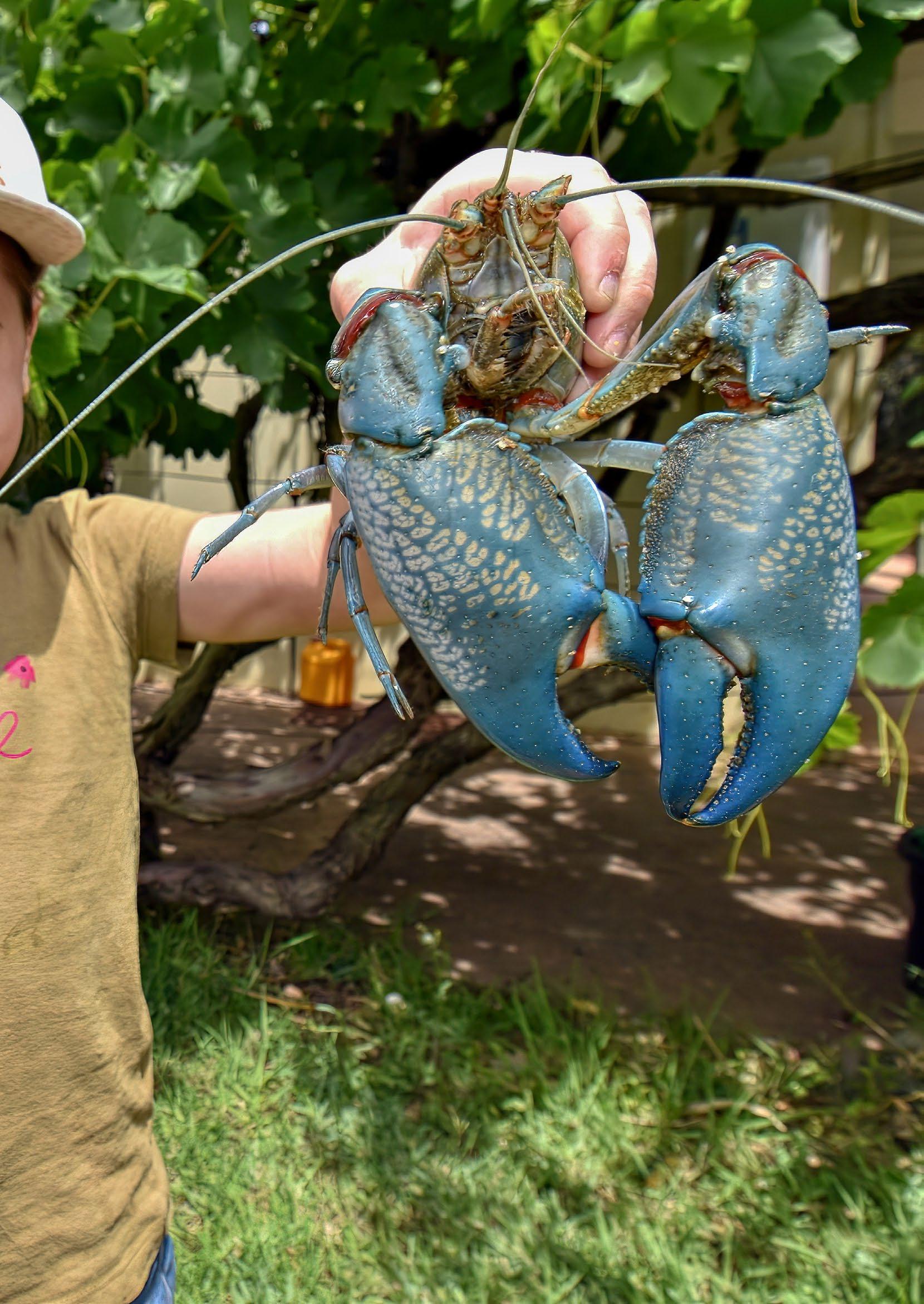
Floods are the key to the big yabby runs and the backwaters and shallows explode to life as they emerge on mass. The Darling River and its feeder creeks will fish well this year.

I love a good yabby run where camp is struck and the fire is stoked before the cooker is brought to a steaming boil. Nets are set, then the waiting game begins, which rarely goes more than 10 minutes for the first impatient lift. It’s a time of great excitement and expectation, especially for junior fishos who can’t wait to see the catch. Yabbying is a fishing tradition practised by one and all that can be a get-together with your mates or a family affair where everyone can participate — and it’s easy to do.
While they taste pretty good, yabbies also have an important role to play in any waterway’s good health. Yabbies take on the humble job of the river janitor, and they do this by eating an abundance of decaying vegetable matter. They also eat dead fish and other animals caught up in the river’s flow, effectively keeping the system clean.
Drawn from their burrows deep underground, yabbies have but a short time to grow fat before the waters recede and they must once more retreat to the main flows of the river. Those caught in the billabongs and smaller backwaters
will burrow away in the soft mud and once more await their chance to resurface with the coming of the next high river. It’s a boom-and-bust cycle, but one that works for these tasty crustaceans. No one is sure just how many years these yabbies can stay hidden underground, but it’s been a long time since the bush was flooded and they have appeared seemingly overnight in huge numbers.
When I was a youngster, yabbies were caught in grassroots fashion on lines baited with small pieces of meat. Once the line went tight, it would be drawn in slowly and the yabbies would be scooped up in a small mesh net. If you didn’t have a net, but a steady hand, you could crab them by their fine feelers as they breached the water’s surface. This was an art in itself that’s long since lost to most modern-day anglers equipped with all the gear. It was all great fun, but it took a while to get enough for a feed.
I remember on one such occasion rigging the meat-clad lines the night before, ready for an early start where the ‘treddly’ ride would deliver us to our favourite yabby dam. Early next morning I awoke to a strange sound in the kitchen, only to find the dog dragging several sticks in its wake. Unperturbed by the lines hanging from its mouth, it had scoffed the baits during the night and looked quite pleased with itself. As the meat was only tied on with a half hitch or two, a little slow, steady pressure on the baited lines had them regurgitated in seconds, much to the mutt’s disgust. His loss was our gain, and it was off to the dam with our reclaimed lines, partially decomposed, but yabby-fit none the less!
A few short hours when the yabbies are running is all it takes to catch your limit.
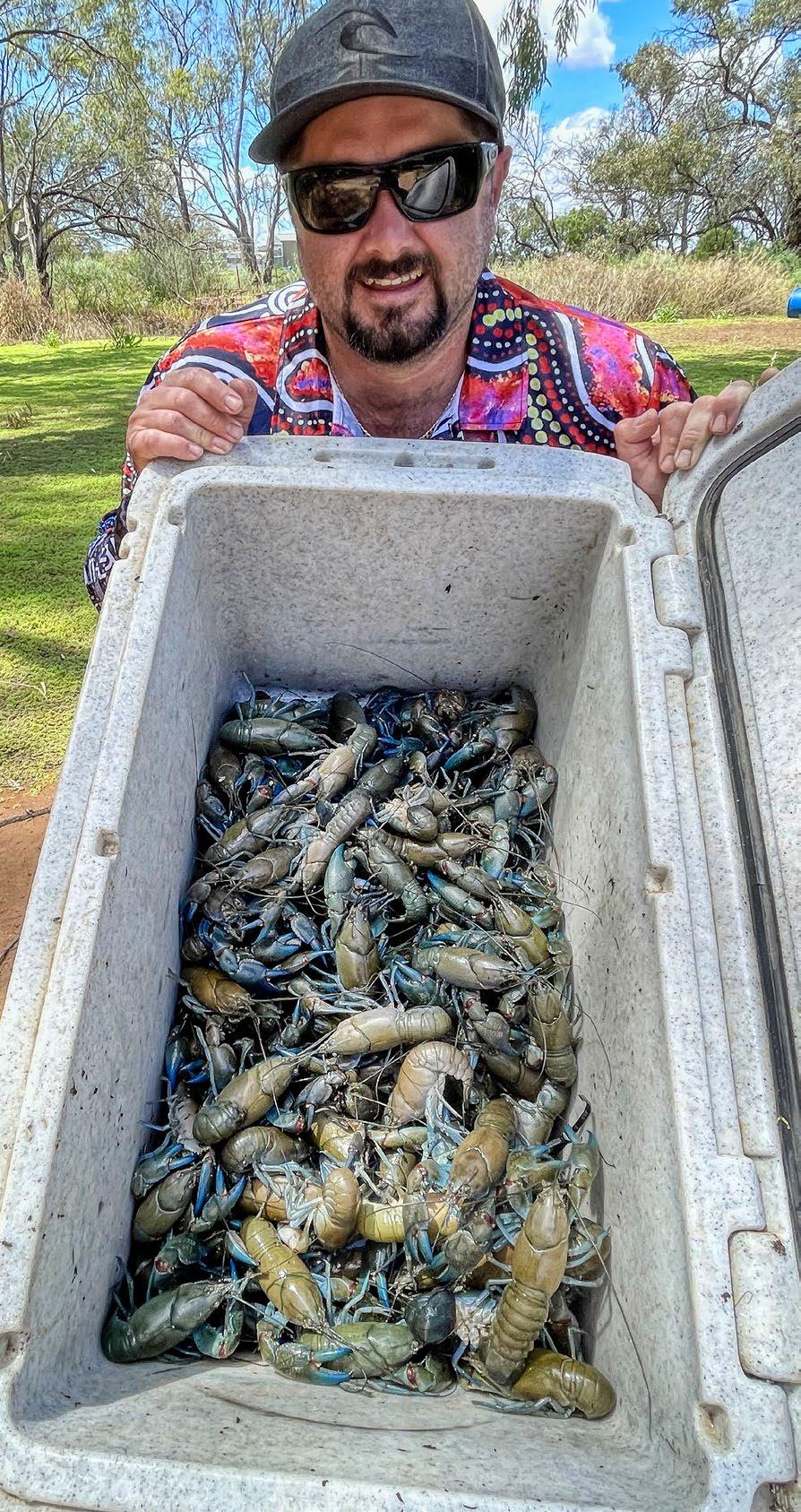
Yabbying in the Murray is a little different where string lines are replaced with meshed nets. There are two main models, the pyramid styled semi-enclosed net that is named after its shape, and a drop net that has two metal hoops and is baited and set flat on the bottom. Pyramid nets have replaced the old-style opera house nets that were fully enclosed other than having a funnel at each end. These were great for yabbies, but disastrous for other water-born critters like platypus, water rats and tortoises. The new pyramid-style replacement has an open top, providing access for yabbies and an easy escape hatch for other wildlife that might otherwise enter the net. Both pyramid and drop-style nets are legal to use in both Victoria and NSW waters. All nets regardless have to be labelled with your name and address. Be sure to check rules pertaining to net numbers and bag limits on yabbies in possession.
Clinton Hann checks a pyramid net baited with the frames of a recent feed of perch revealing a good haul of yabbies. Nothing goes to waste.
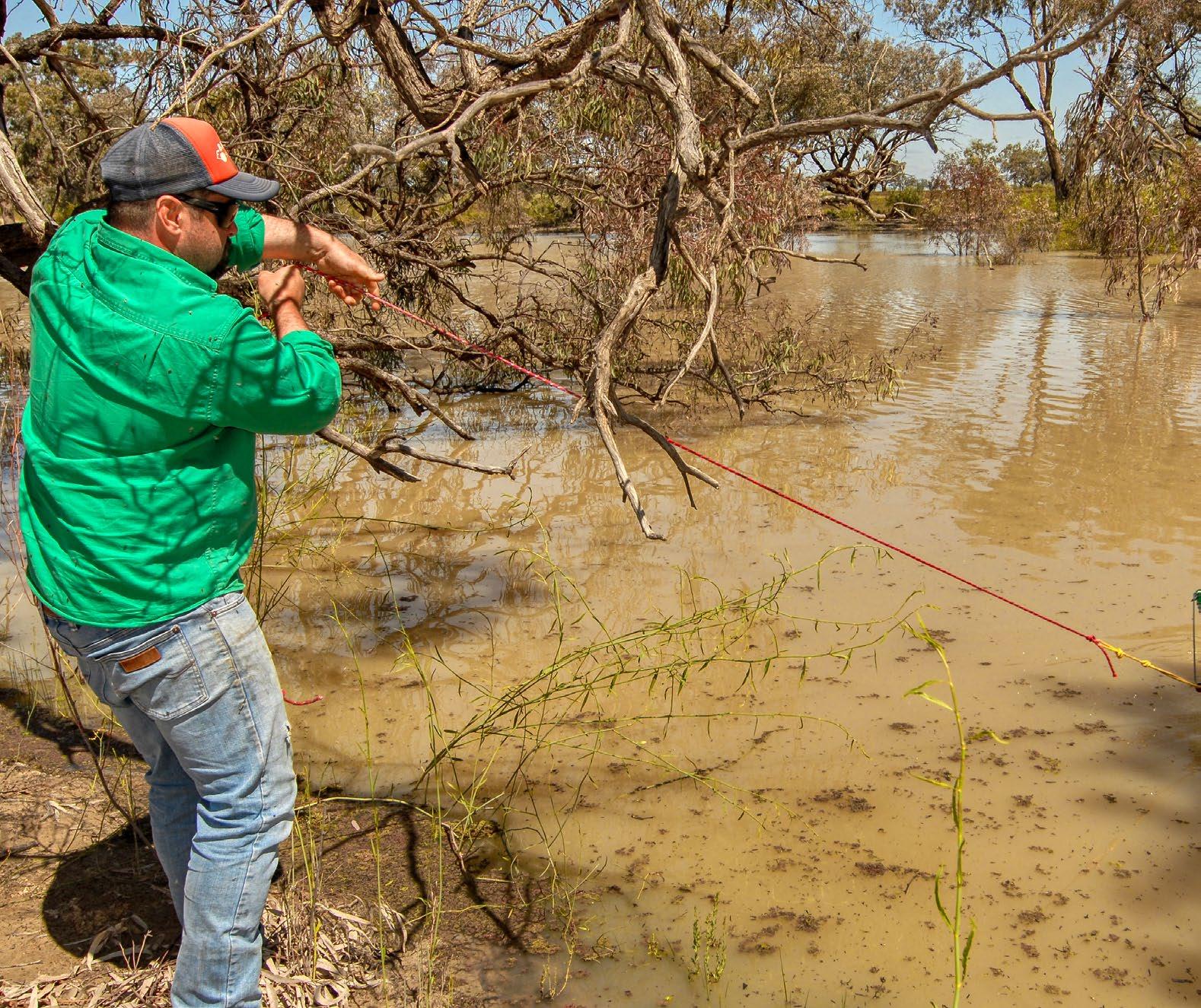
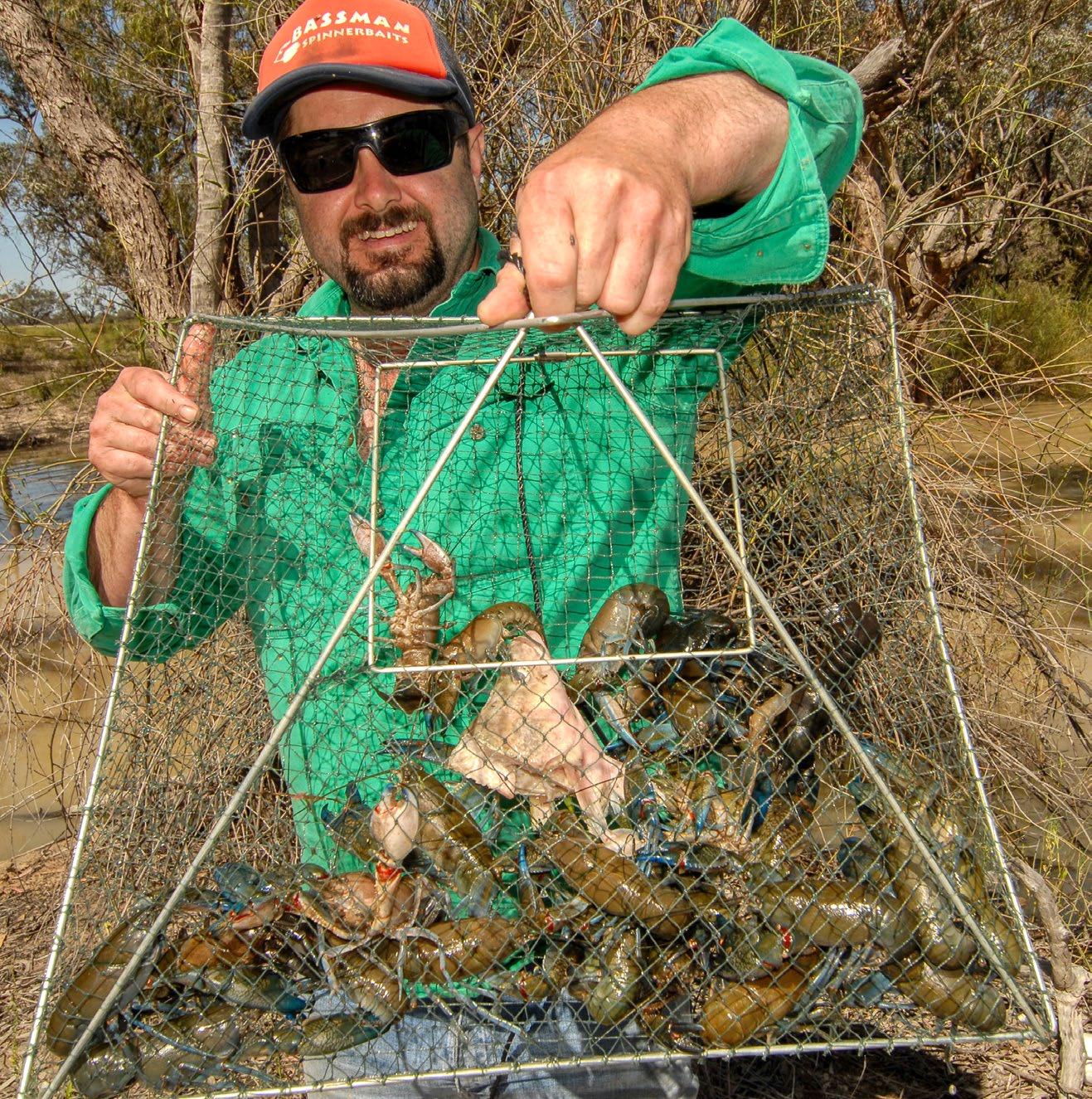
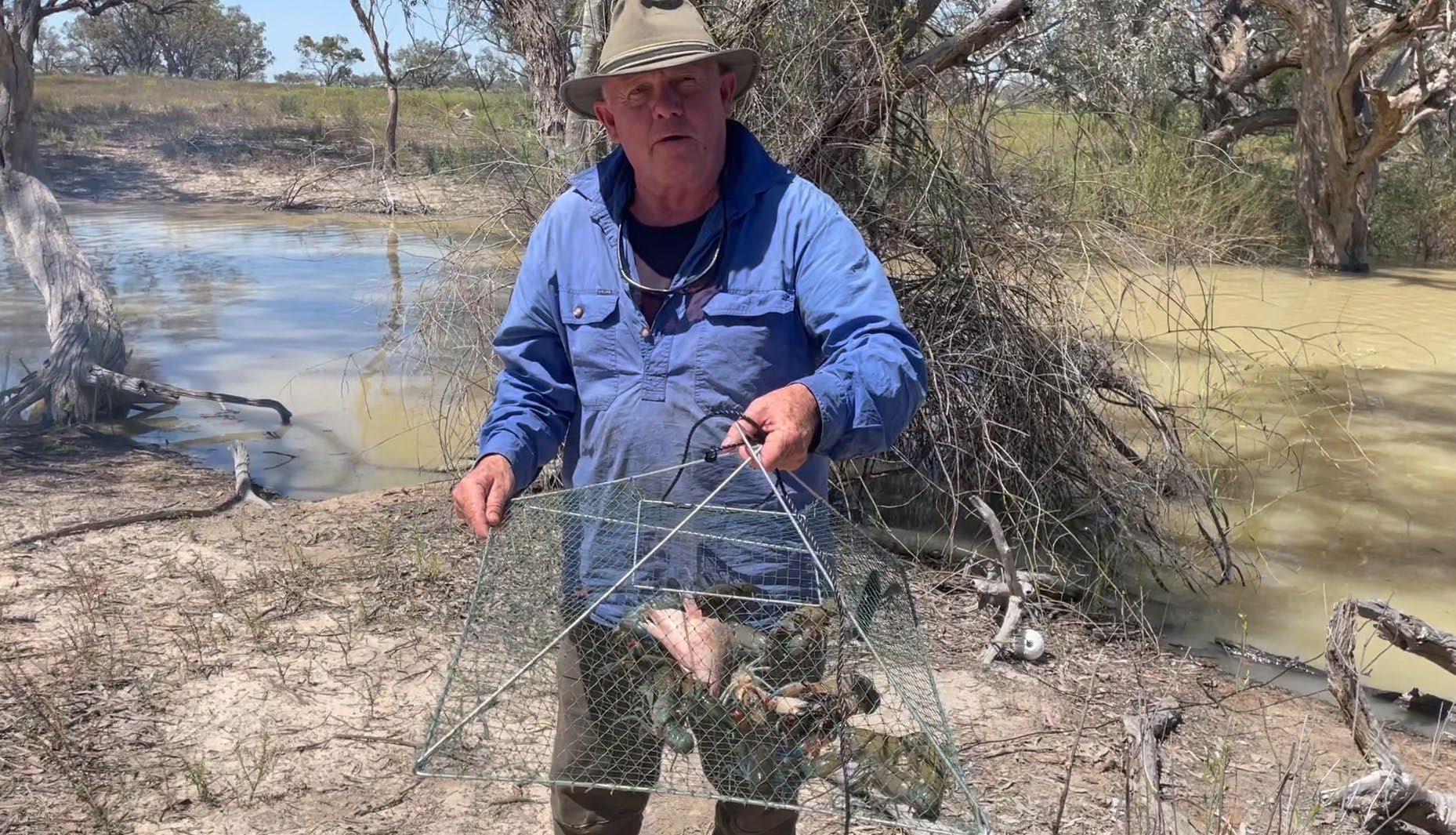

The best baits for yabbies are many, depending on who you ask, but we have found carp, fresh fish frames, liver or rabbit to be as good as any. If you would like to try something a little outside the norm, the cut a rock melon in half and put it in a net. Several yabby aficionados swear that rock melon is one of the best baits going.

We have found the most productive places to set the nets are in the pockets of backwater out of the main flow and we like to check them every half hour or so. Changing the bait at least a couple of times a day also helps to draw more yabbies. Creeks and smaller channels running into the bush are also prime locations. During the daylight hours the deeper edges of water are generally the most productive. Once it’s dark though, the yabbies seem to be everywhere and nets set shallow are most often loaded with a good number each pull. There is a bag limit of 200 yabbies per person, but that is more than enough when you consider the good size that are in the river at the moment.
When six yabbies, one missing the claws, weigh in at just over a kilo you know they are big.
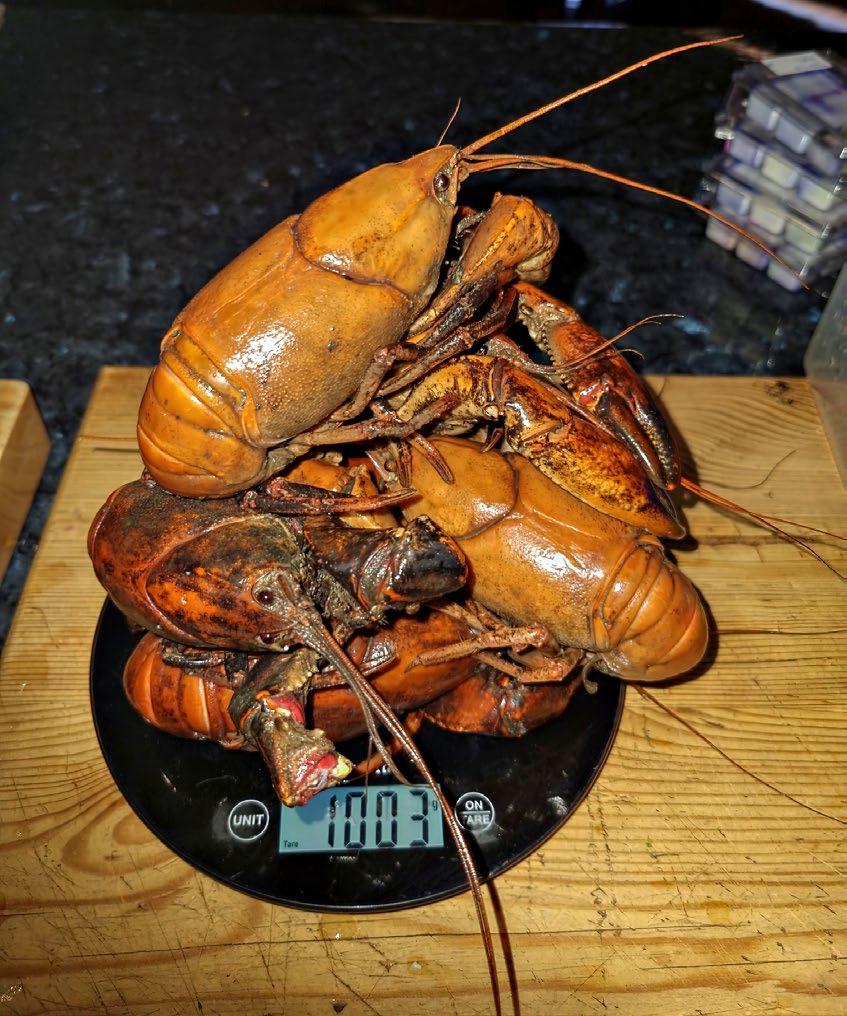
So, what could be better than a few days up the river camping and catching a feed of yabbies? Our last session took us to the Darling River near Menindee, where we fished both river and lake for a great haul of these delicious, claw-clad critters. It was a great trip that rekindled the joys of catching yabbies and bought back many memories from the past.
With the drought all but forgotten, the bounties of the big river have once again returned. On the banks of the Darling our catch was cooked and eaten to the crackle of a night-time campfire, where ales were clinked and stories told in an age-old tradition that is yabbying. While it’s been a long time coming, it has been well worth the wait and with any luck, the good run of yabbies will continue for a good while to come.
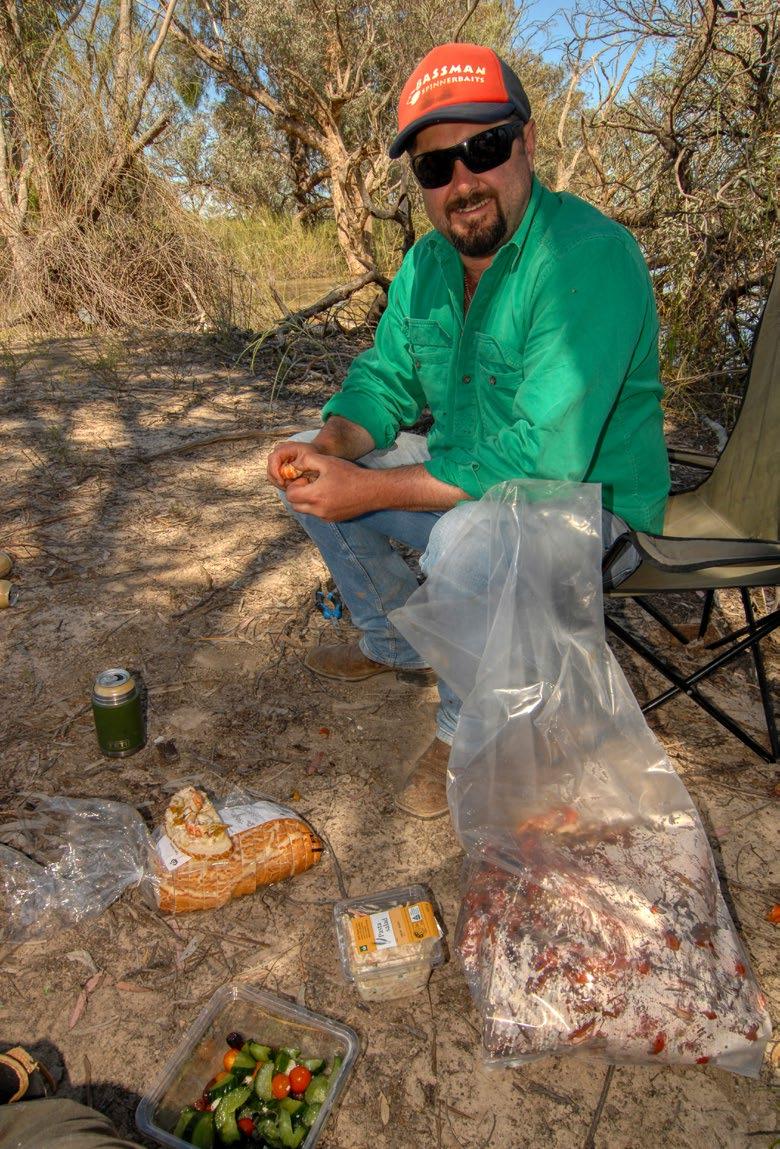
Chow time! Does it get any better than a few beers and a good yabby cook?
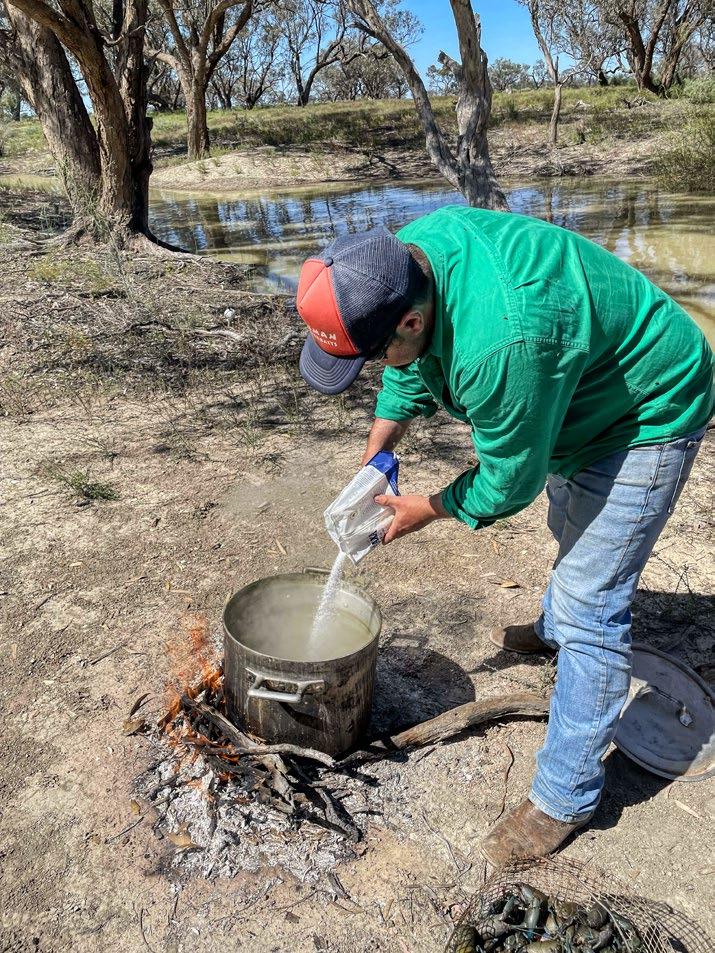
 Adding salt for the cook then lifting out a great feed of yabbies after around five minutes.
Adding salt for the cook then lifting out a great feed of yabbies after around five minutes.
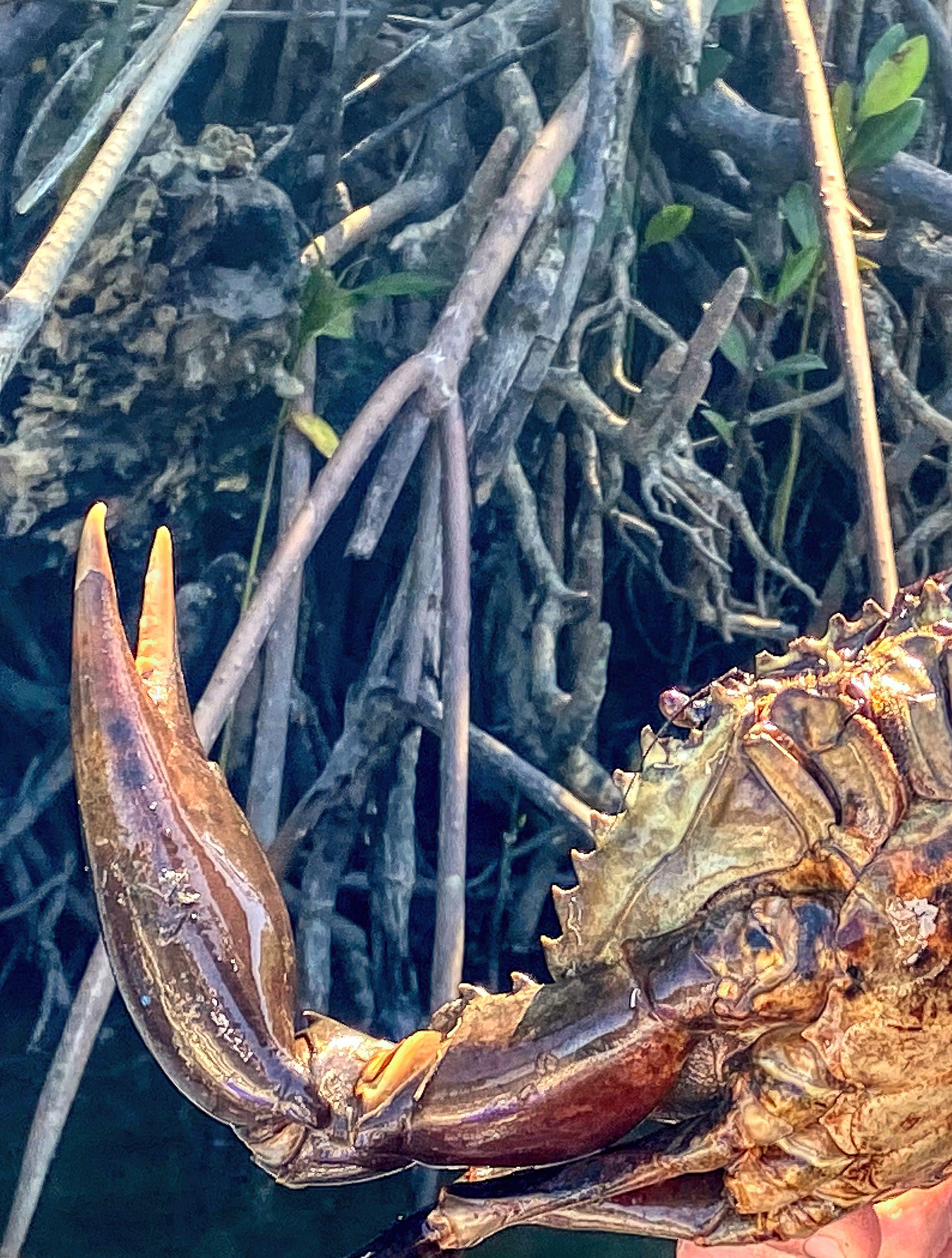

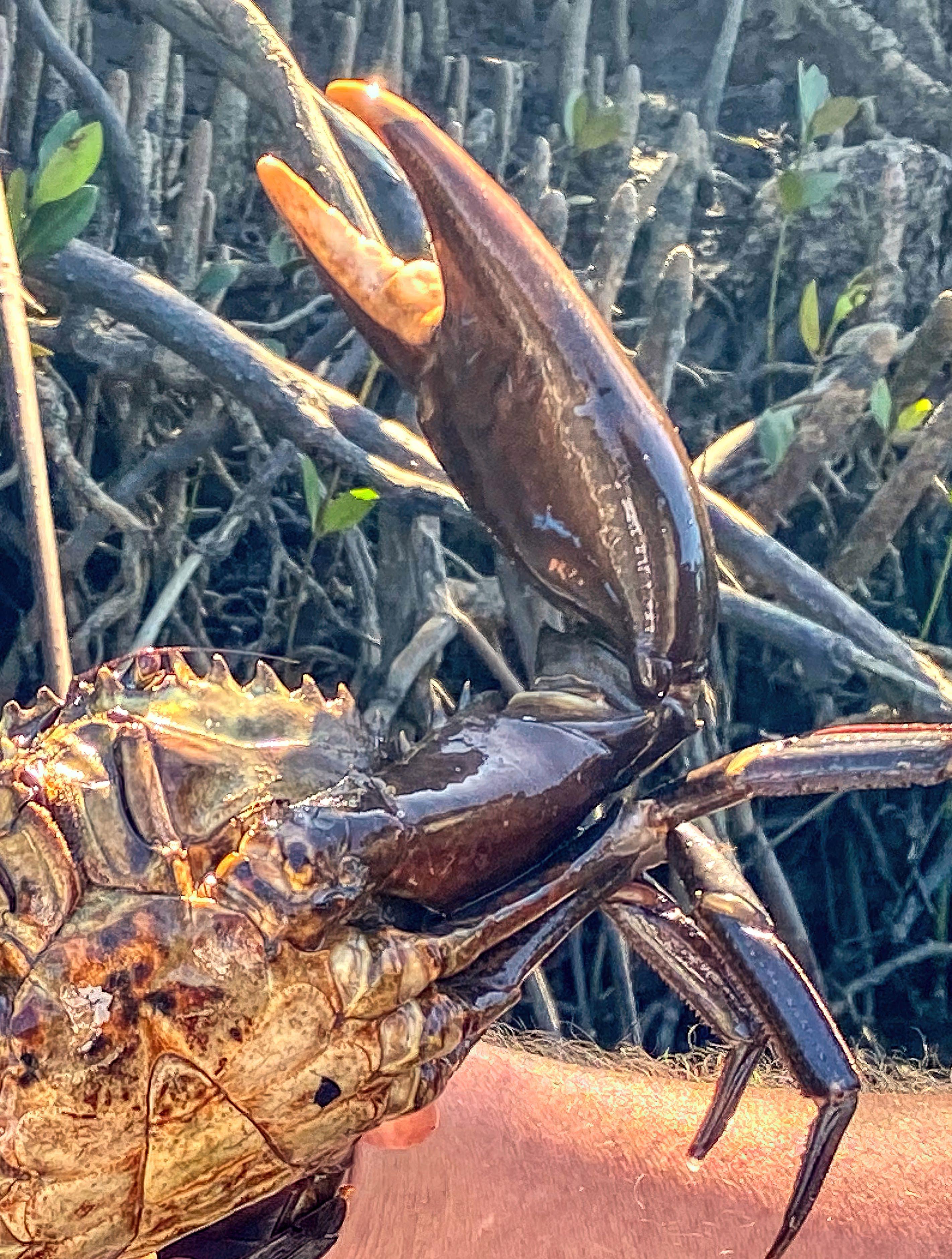
This was my second time to be invited to go mud crabbing on the Annan River below Cooktown on the Cape York Peninsula. With wide eyed, childlike excitement, the buzz was just as palpable.
My partner Terry has a brother who lives in Cooktown, and we try to travel up there every couple of years from our home in Victoria to catch up with Jimmy and, hopefully, get out on the Barrier Reef for a fish. You can guess which part is the priority!
Cooktown is notoriously windy, to the point where when the wind drops everyone seems to down tools and grab the opportunity to wet a line. On this visit the gale force south easterlies had been relentlessly hammering the coastline, and offshore fishing wasn’t going to be an option. We would have to pretend to be here just as loving family members and stick to land-based options.
Jimmy loves to go mud crabbing, so we jumped at the offer to take his pots and his tinny to the nearby Annan River. You are allowed four pots per person, (having us along meant 12 pots of opportunity!), and they must be fully tagged and named. The owner’s name is on the buoy above the water, and a rope from the buoy leads down to the pot below where another tag is attached with name and address details.
Each pot must be fully tagged with the owners details.
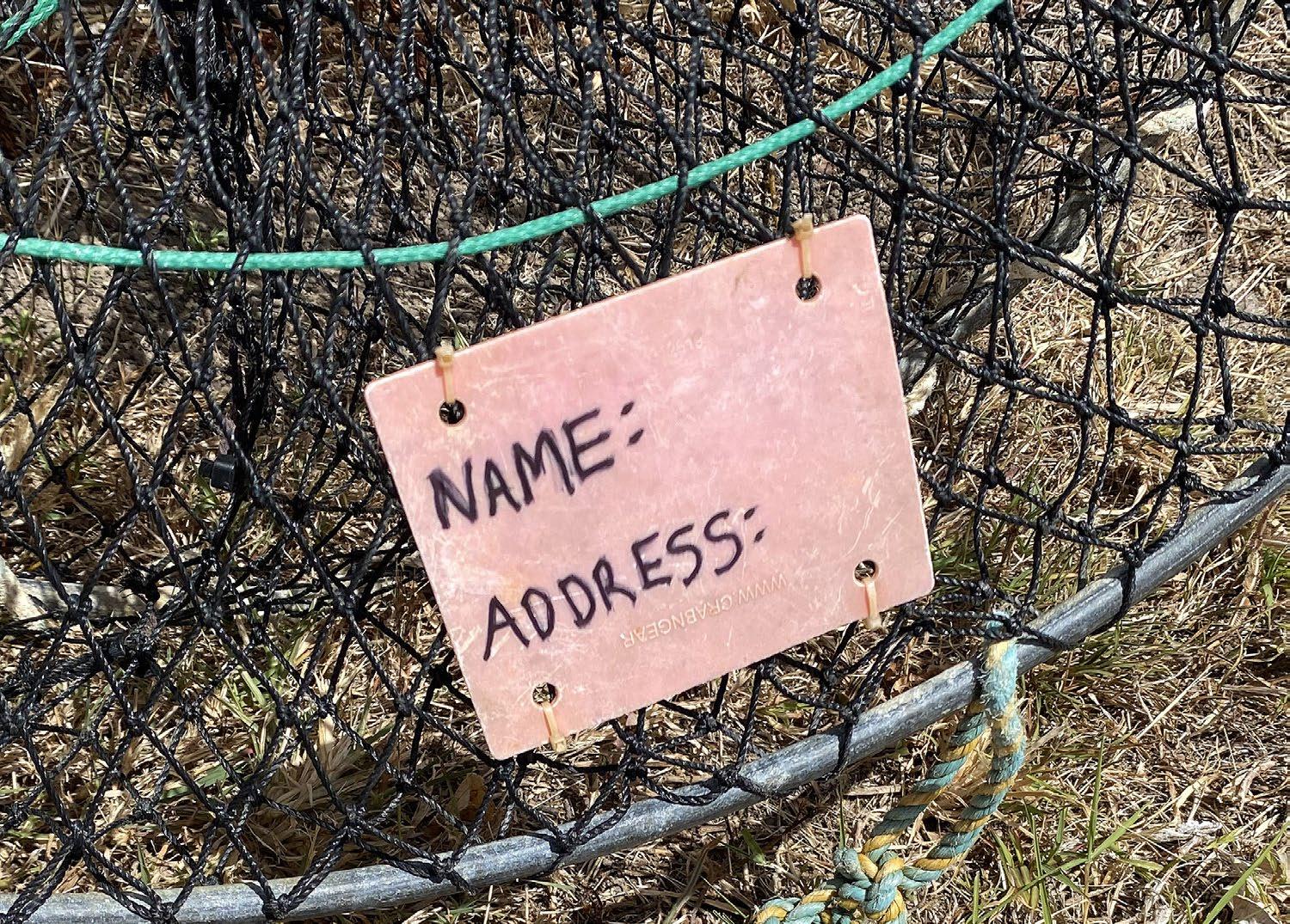
Fish heads and scraps are what Jimmy prefers to use in the pots and are wired to the bottom. He says you can use chicken, but that tends to attract more croc’s and sharks.

With the pot baited and the tags filled out, it’s time to get it in the water.

On my first trip out I had watched excitedly as he pulled and checked the first few pots. On about the fourth pot my enthusiastic inner child volunteered to retrieve the next one! We were in a tiny creek-like estuary that was an offshoot of the main river. Actually, let’s be honest, this one was more like a drain. With mangroves hanging over our heads, it was like a scene out of the American series ‘Swamp People’.

Pay attention to the numerous warning signs, it might just save your life.

I pulled up the pot, making sure my arms stayed well above the tinny. I can’t remember if there was a crab in this particular pot, but I vividly recall the teeth marks I saw on the float. Looking horrified at Jimmy, I asked “ Is that what I think it is?” He casually replied, “Shit yeah, we get croc’s tampering with the pots all the time. Sometimes we get small crocs in the pots!” I also learned he sometimes gets moray eels in the pots, which are nasty and not fun to get out — enough to silence my enthusiastic inner child.
I didn’t volunteer to pull any more pots that trip, but now that my horror and anxiety had subsided over time, the enthusiasm was back. Having the “been there, done that” postcard, I approached this second trip like a seasoned pro, standing up and hauling in pots with boss-like might and newly imagined power.
When we finished dropping pots, we went off to fish for a few hours, then returned about four hours later to check them. Jimmy knows every tentacle of the estuary system inside and out and it amazes me how he remembers where each pot is located. We weaved through the tributary at speed like a jet boat ride. In some narrow spots if you don’t duck your head in time, you risk decapitation from the mangroves.
He has the QLD Fisheries crab measure on board. You can only keep males (bucks) and they need to be a minimum of 15cm across their carapace. Females (Jennys) are protected and must be returned to the water. Sometimes you see the females in berry (with eggs).
A well chewed float is a constant reminder to keep all body parts clear of the water.
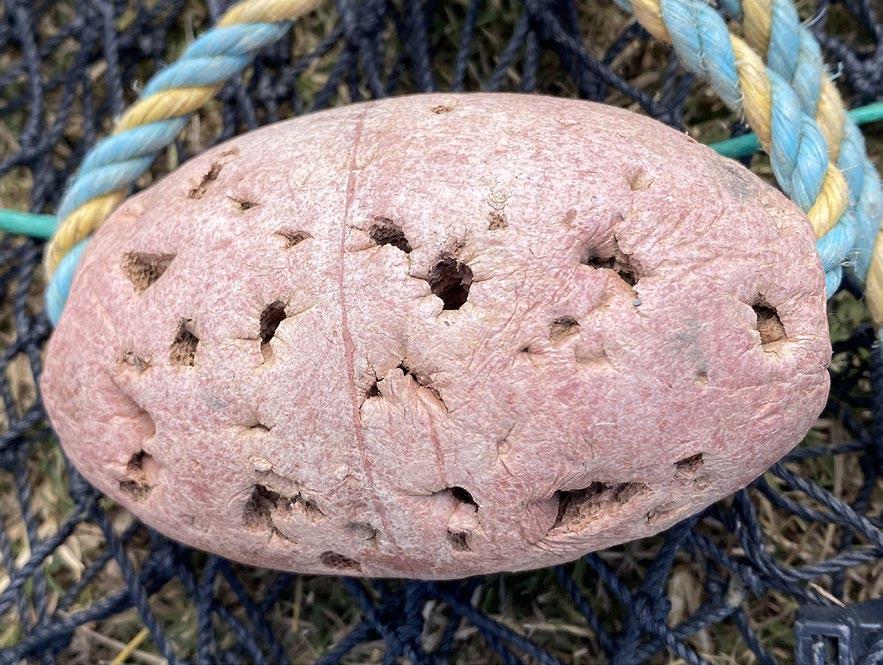
It’s a great idea to dress in light, loose clothing from head to toe to protect you from the harsh sun and wind burn. Cooktown averages highs between 26-32 Celsius all year round, and there are plenty of mean sandflies and mosquitoes. The less skin exposed, the better! Polarised glasses not only help you see into the water, they help protect against pokes to the eyes from overhanging trees when retrieving pots.
Another hazard I had the misfortune of discovering as we nosed into the river’s edge to pull a pot, was copping a face full of paper wasps! We hadn’t seen the nest, and boy did they come out aggressively defending it!
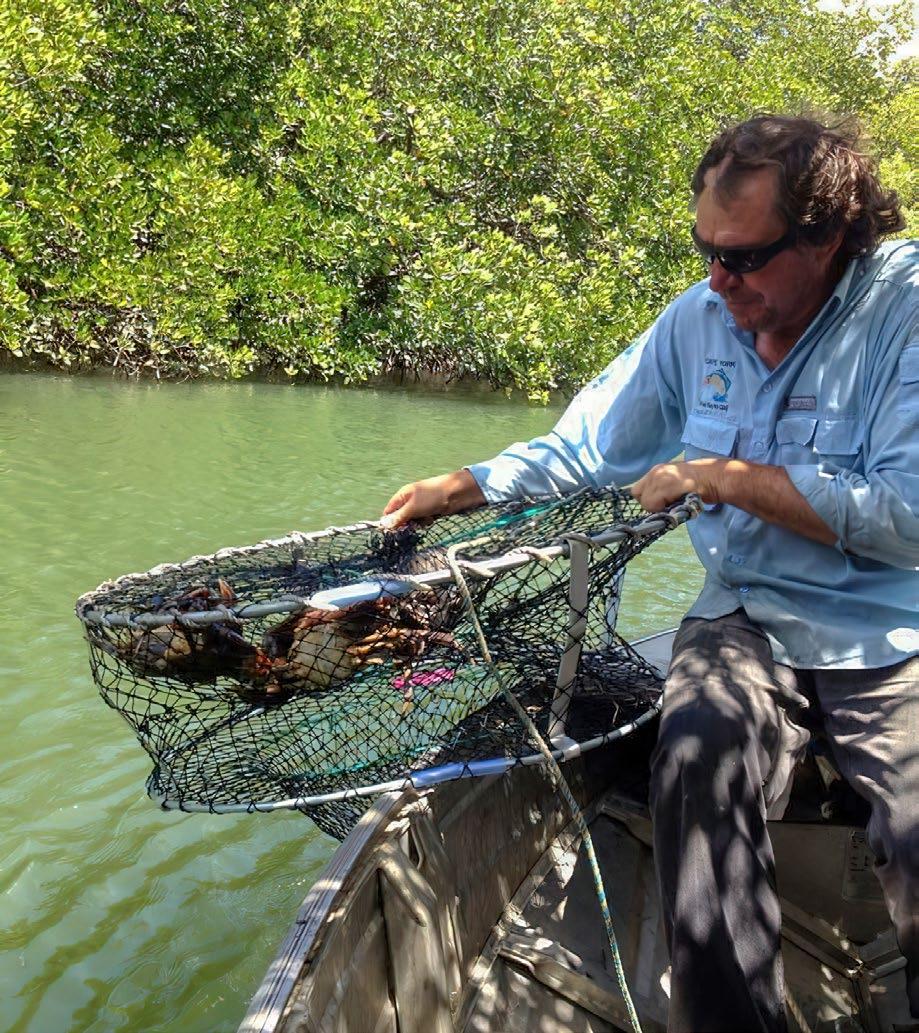
A paper wasp sting can trigger severe allergic reactions in people, but for me it was just instant intense pain like a hundred people sticking you with pins.

They tend to sting repeatedly. I had no idea what hit me; it could have been a snake bite for all I knew. I just screamed and jumped at the same time, landing in a surprised Jimmy’s lap yelling “Get it off me”. In doing this I managed to transfer some of the paper wasps onto him and they started stinging him. There were plenty of superlatives echoing over the Annan and it was a circus!


The female crab has a large, roundish shell/flap on its underneath, whereas the male has a distinct triangle shape.
There is no closed seasoned in QLD for mud crabbing and the catch limit is seven per person and 14 in total for the boat with two or more people on board.
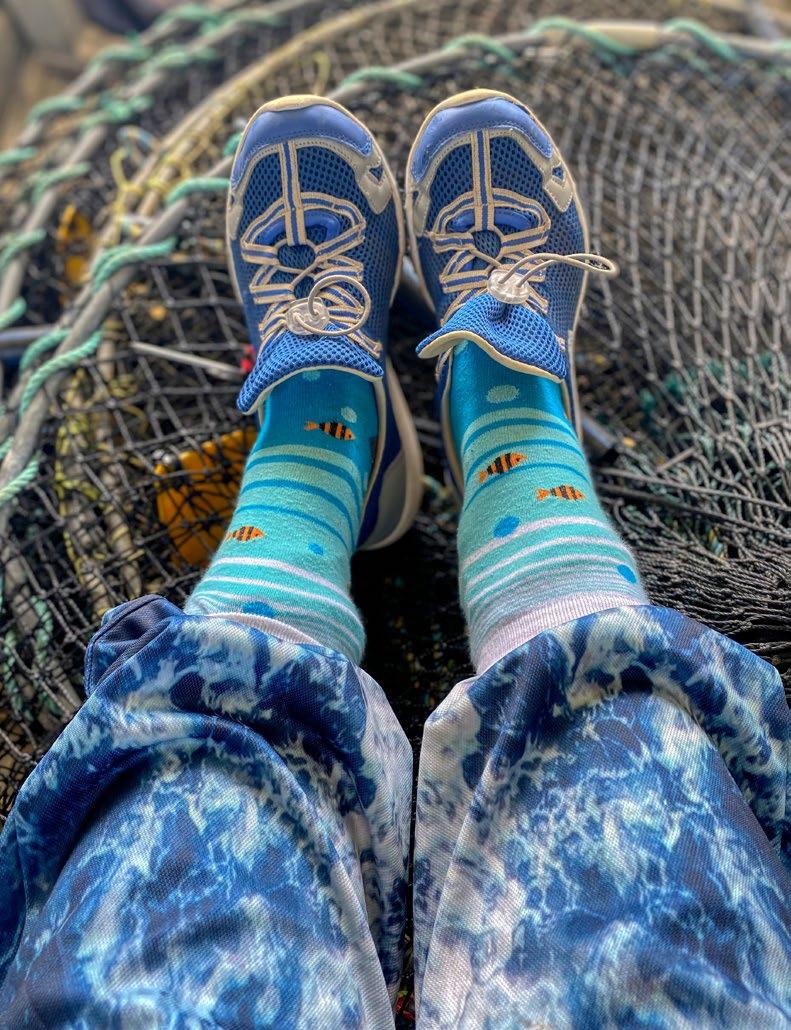
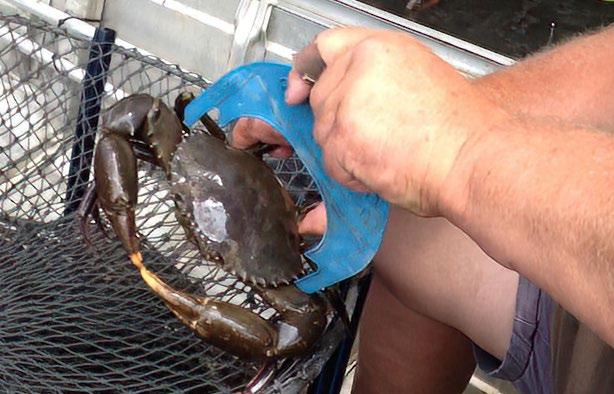
Mud crabs are found in sheltered estuaries, tidal flats and rivers lined with mangroves. Click here for more information
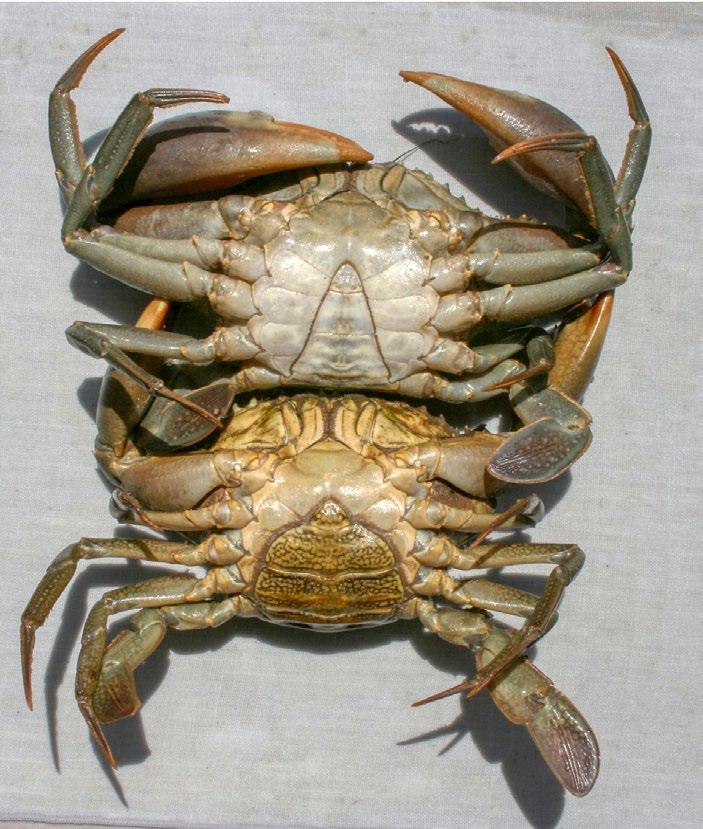
Light, loose clothing is essential to protect you from the elements and nasty little biters
It was a painful event at the time, but funny to recall now. Luckily, we had an ice block in a small drink esky on board, so I used it to soothe the bites. Rotating it manically from bite to bite, the pain settled down after about half an hour or so.
Over two days of mud crabbing on this trip we scored 14 legal-size muddies. Jimmy carefully picks up each keeper and trusses it up with cord and they are kept in a wet hessian sack. We would have thrown back three times as many, either being a Jenny or undersized. Back home he cooks them up in salt water in a pot on his gas cooker. Once the water boils, it takes 10-13 mins. He then puts them straight into an ice slurry to stop the cooking process.
When it comes to crabbing up here, from what I can garner, locals have their favoured areas of the estuary, and they are closely guarded secrets. Seeing where Jimmy hides his pots, I reckon most wouldn’t venture in that far! He goes into offshoots of the river that the tinny just fits into, and it’s so dense with mangroves, the wind doesn’t get in and the sandflies come in thick clouds! Not to mention the croc risk! It’s second nature to Jimmy and he is not fazed.
After spotting a big croc sunbaking on a sand bank, I got cheeky. For a laugh I put on my best American southern drawl, “I got me sum mud crab! I seen me sum gator! I been to the hog hunt and I caught me sum catfish! I reckon I’d be a fully fledged red neck woman by now! What y’all think Jimbo? “
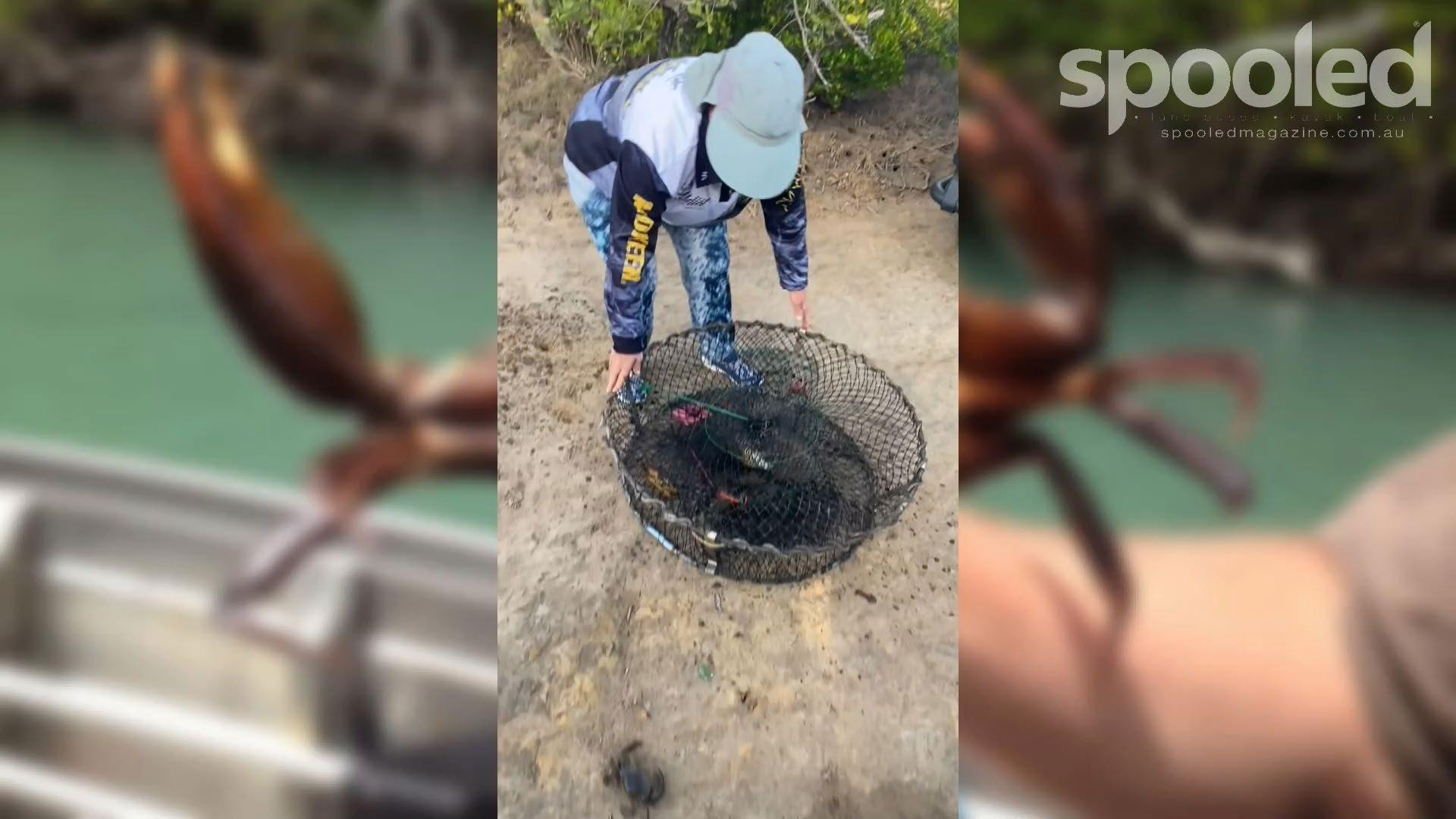
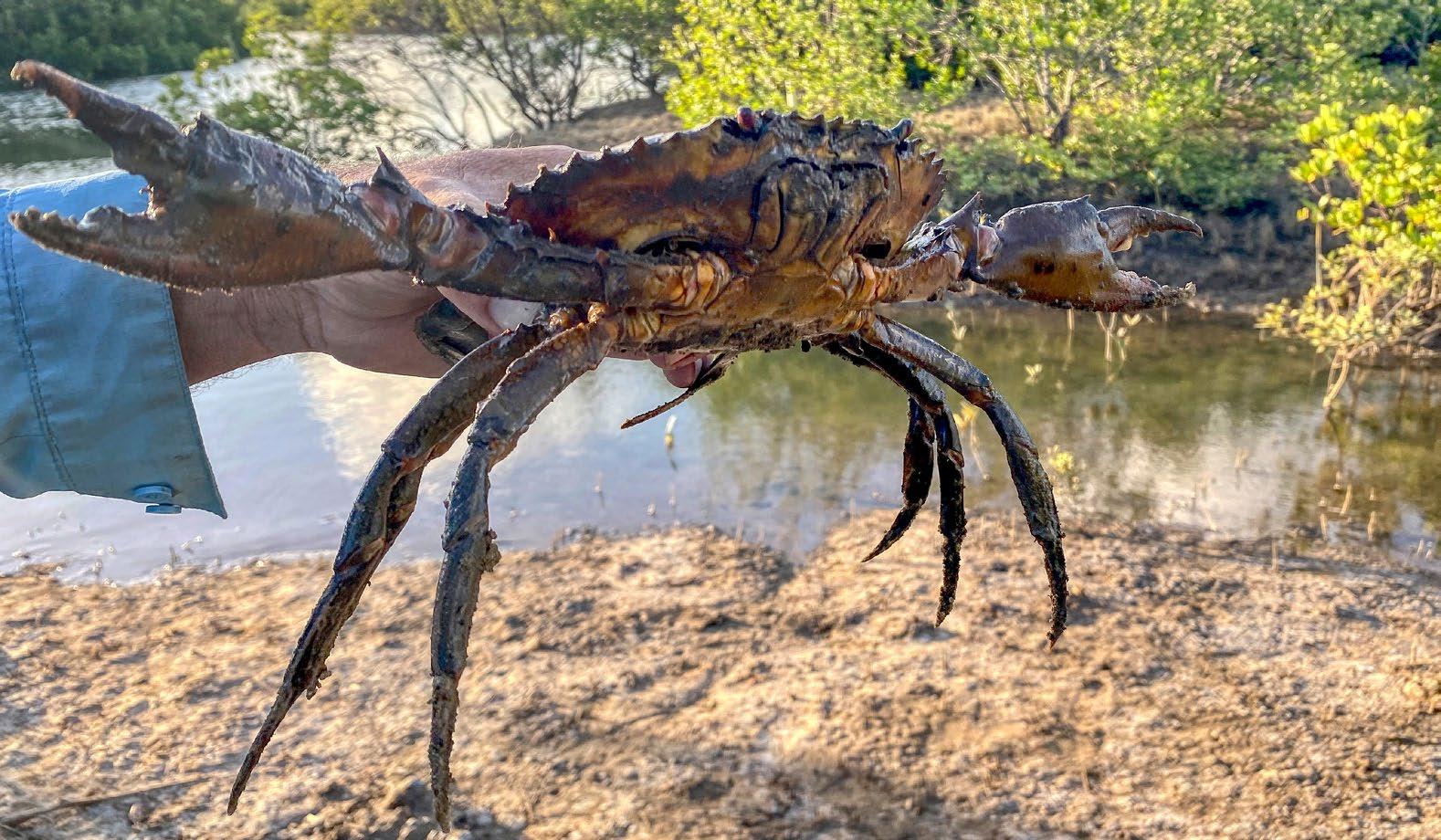
Trussed up and ready to cook.
A large pot over the stove, fire or a Gas cooker like Jimmys can be used to cook the crabs.
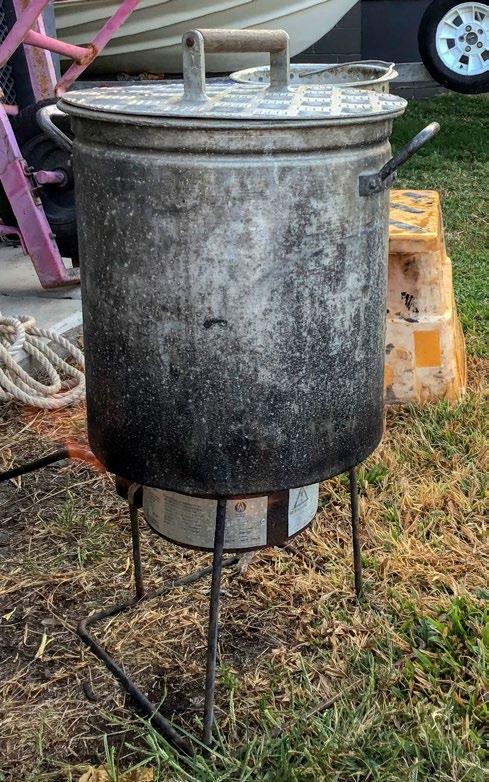
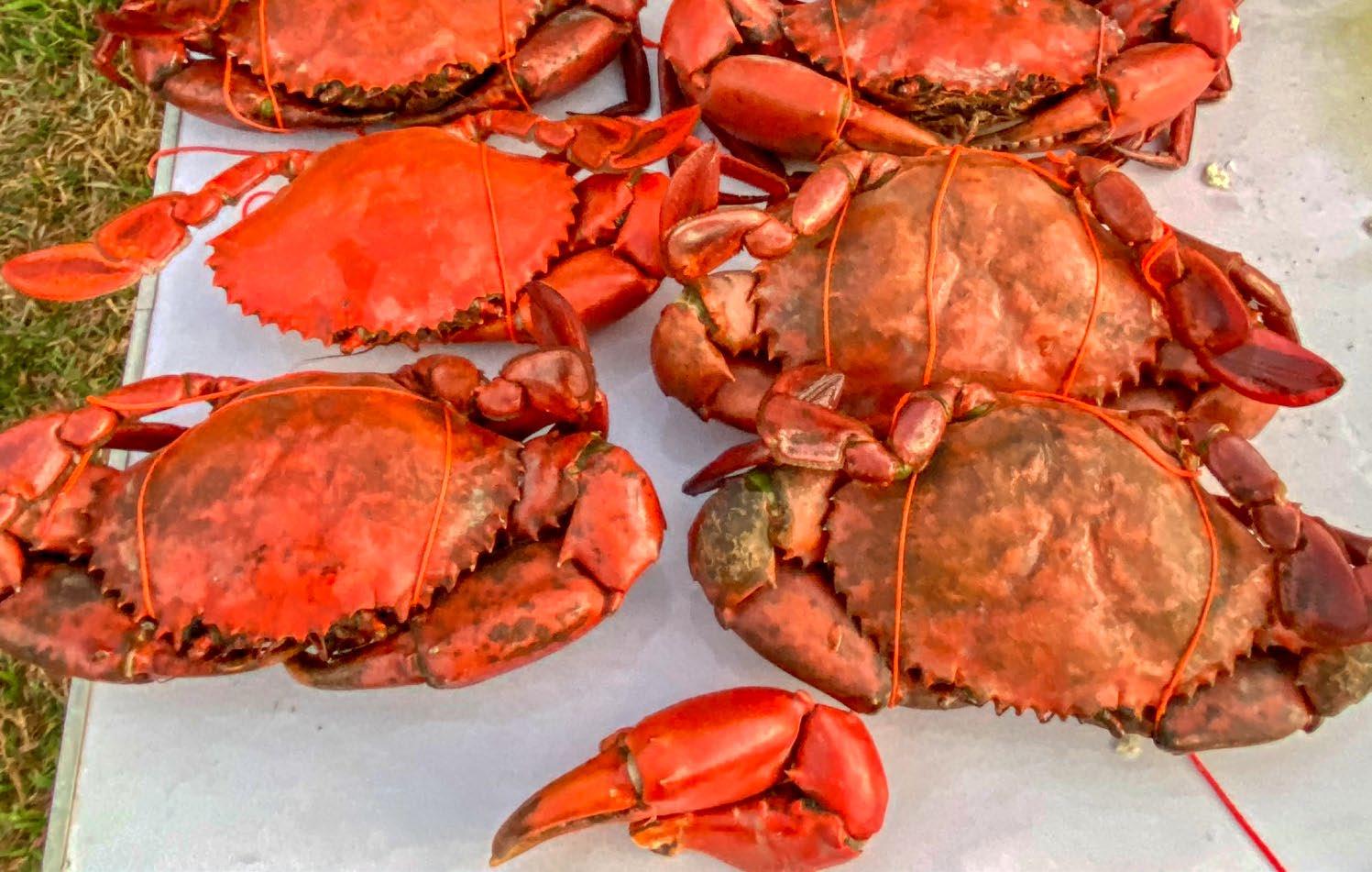
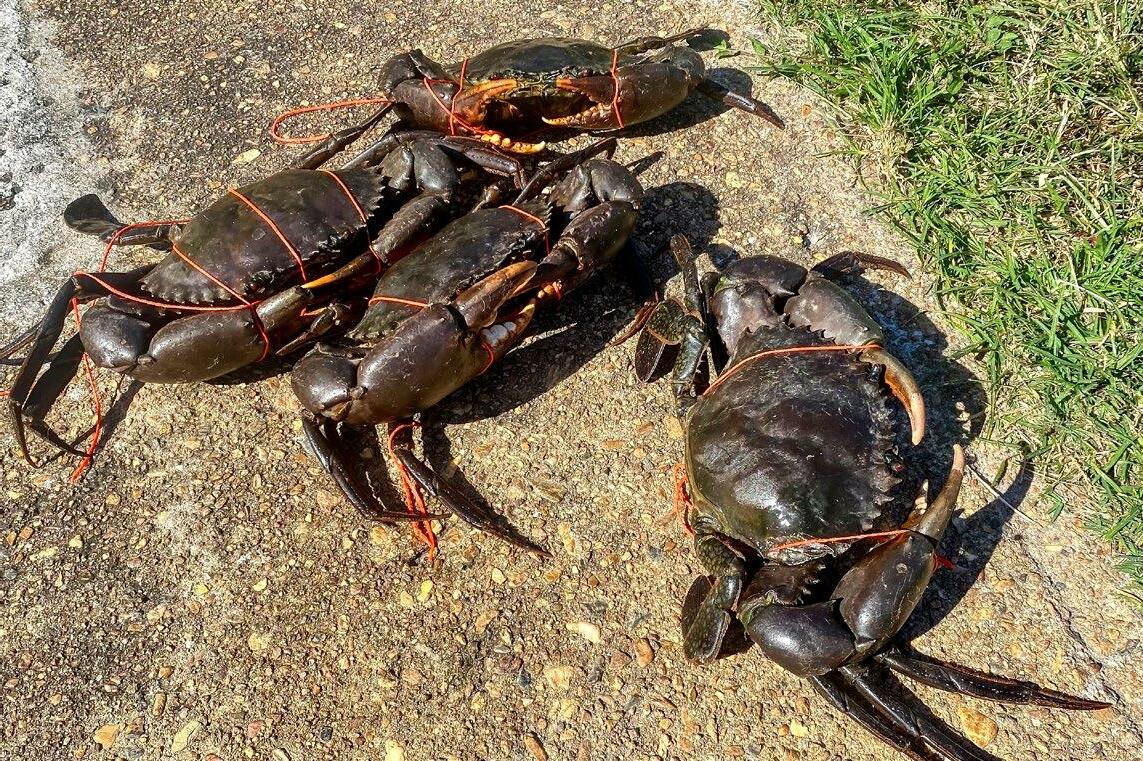
Fortunately he has a sense of humour and had a laugh. In all seriousness though, from what I experienced, mud crabbing is a well planned and sophisticated operation where the rewards up here can win over the risks of the day or vice a versa.
Luckily for me, when I’m out on the water I get caught up in the new day’s adventure and I’m still that excitable child. I’m happy because I rarely entertain thoughts of any things that could go wrong. My mind is focused on what’s inside the next pot or coming in on the next hook!

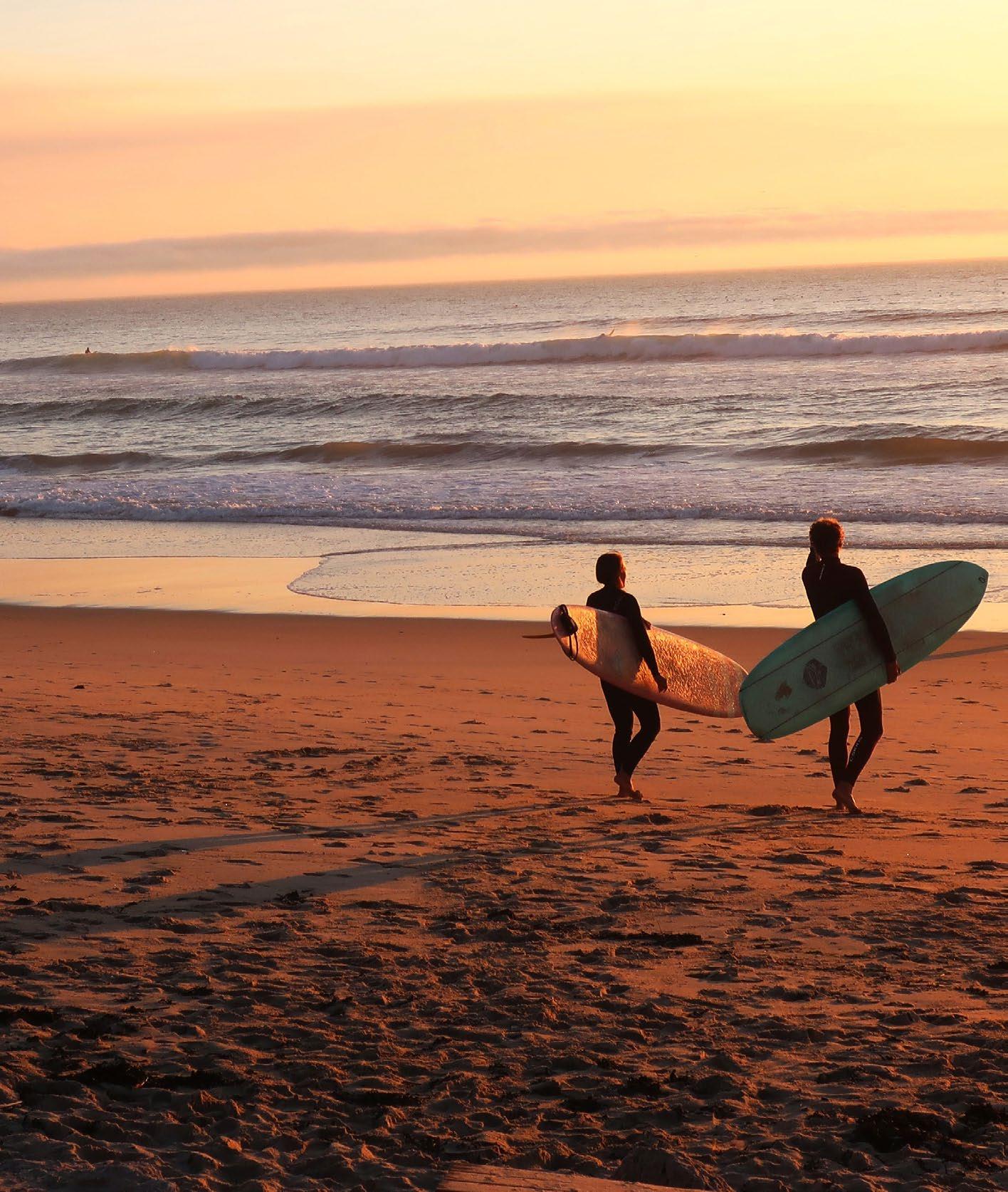




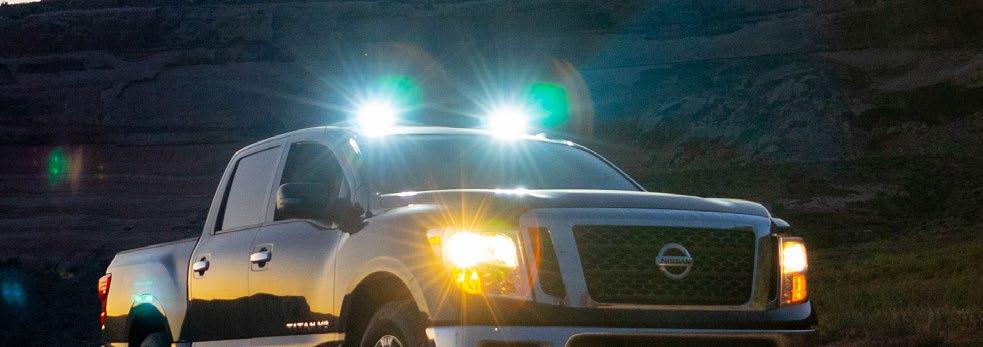
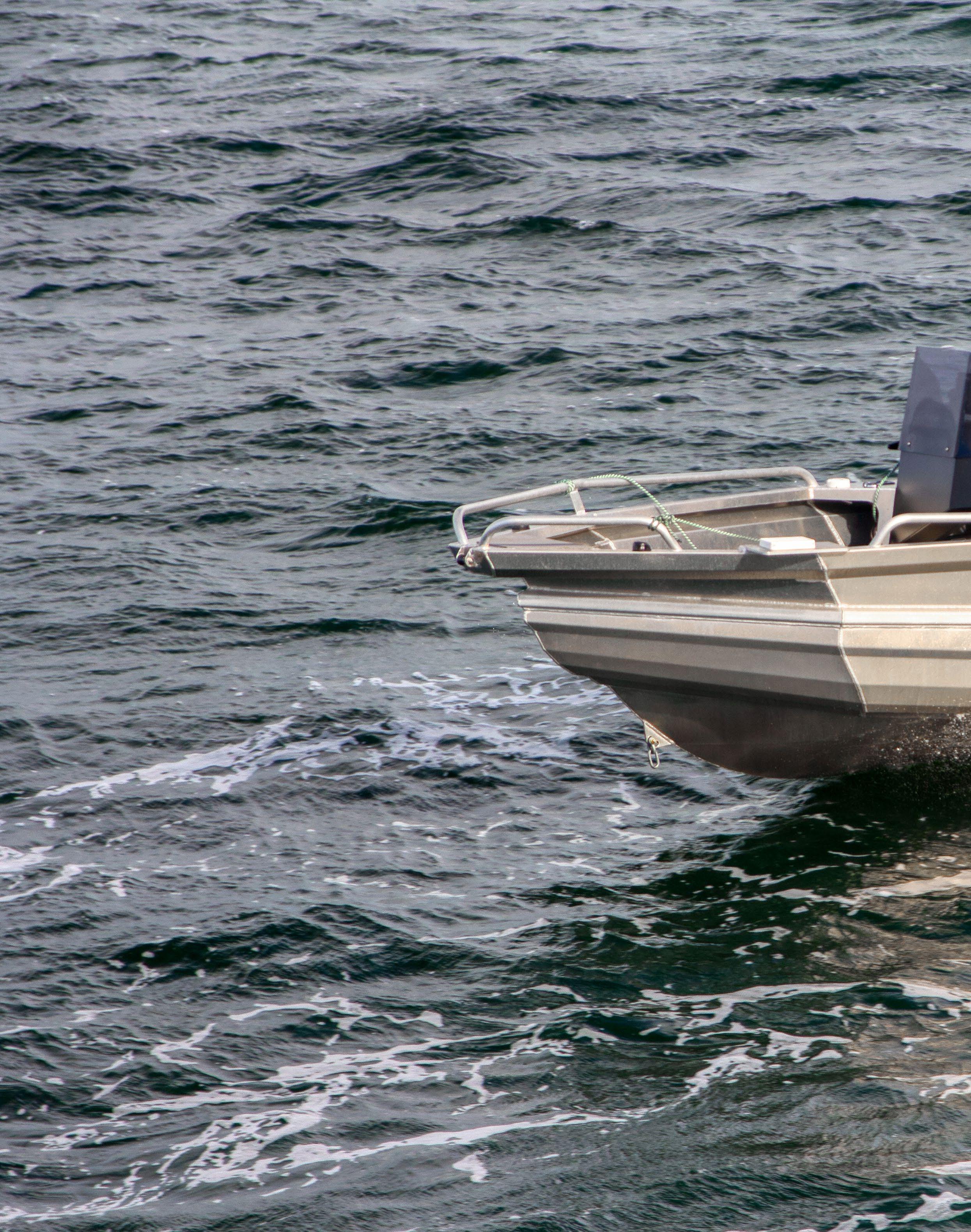
I’ve often heard it said that Stabicraft are among the ugliest boats on the water. While that’s a bit harsh, I will concede they probably wouldn’t win any beauty contests. However, there’s a whole lot more to these unique aluminiums than what you see on the outside; it’s the way the Stabicraft hull works that sets them apart from much of the opposition.

Stabicraft are built in Invercargill, on the South Island of New Zealand. They vary in size from the 1450 (4.4m) all the way through to the imposing 2750 (8.4m), covering practically fishing situation, from estuary to blue water offshore. To my way of thinking at least, every model in the range is ‘overbuilt’ — meaning they are tougher than they probably need to be. This, of course, can only be a bonus for those like me who tend to push things pretty hard on the water, and who may not treat their boats as kindly as they should!

“...there’s a whole lot more to these unique aluminiums than what you see on the outside... ”
It’s certainly roomy enough to fish two big guys in comfort.

I’ve fished from quite a few Stabicraft over the past decade or so, the most notable of which was a 2850 Supercab owned by a good mate who specialised in long range blue water work. Powered by twin 250hp four strokes, this boat was indeed a beast. It made countless trips from SA’s Coffin Bay out to the legendary Greenly Island and beyond, racking up some incredible catches of big kingfish, samson fish, tuna and sharks. That boat fished in some pretty ‘marginal’ conditions at times, but I always felt confident in its ability to get us out there and back again in comfort and safety.
My latest Stabicraft experience involved a model at the total opposite end of the size range — the neat little 1450 Frontier. This rig was purchased to cover several regular fishing options, including squidding, chasing whiting, crabbing and snapper fishing.
The 1450 hull is available in either side console (Frontier) or tiller steer (Explorer) configuration. It’s 4.4m long and is rated to work with engines of up to 50hp. Like all Stabi’s, this model is built around two substantial outer pontoons that support a moderate vee hull — a combination that provides the brand’s legendary stability and soft ride.
I’ve always liked side consoles, especially in smaller boats, as they provide convenient access from bow to stern while playing a decent fish — certainly better access than centre consoles. Side consoles do, however, have one drawback for those who fish solo from time to time. In most conventional smaller ‘tinnies’, the weight of the driver positioned to either port or starboard will usually prevent the hull from running level. The only way you can get around this (besides fitting expensive trim tabs) is to compensate for the lean by loading the boat heavily on the opposite side. Because the Stabicraft is so stable and capable of handling uneven loads, the hull displays minimal list with the operator seated at the side console to port or starboard.
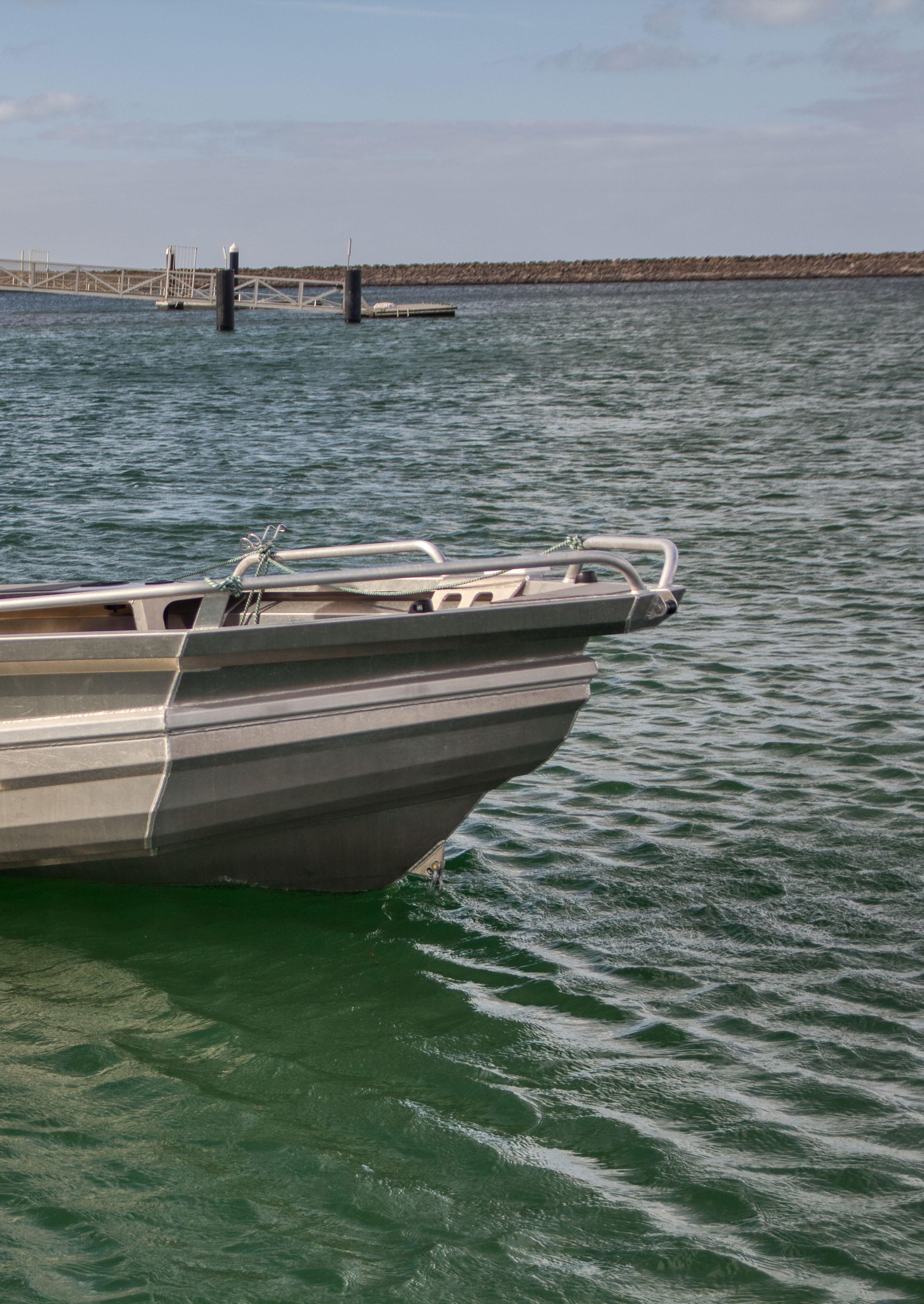
There’s limited storage space up front.
The side console is compact, but functional
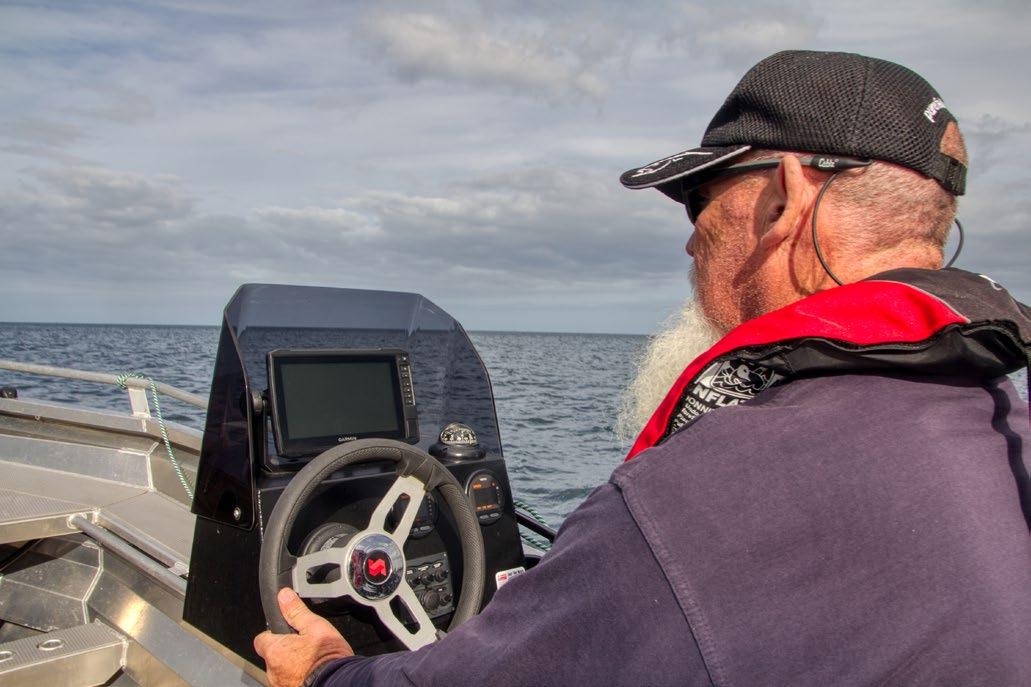
The 1450 Frontier doesn’t offer as much usable interior space as most conventional aluminiums of similar size. External beam is 1.89m, which reduces to 1.35m inside. Those broad outer sponsons certainly consume a bit of room, but this model will still fish three in relative comfort — and we need to remember it’s those sponsons that essentially provide all the buoyancy and stability that make Stabicraft unique.
Aluminium gauge throughout is 3mm in this model, which seems exactly right. The hull weighs a tad under 300kg dry, and Stabicraft tells us it will work OK with outboards right down to 30hp. The test boat had been fitted with a 50, which would undoubtedly be my choice for the type of loads we generally carry on most fishing trips. This model has no inbuilt fuel capacity, relying on tote tanks, which is a minor inconvenience, but certainly not the end of the world.
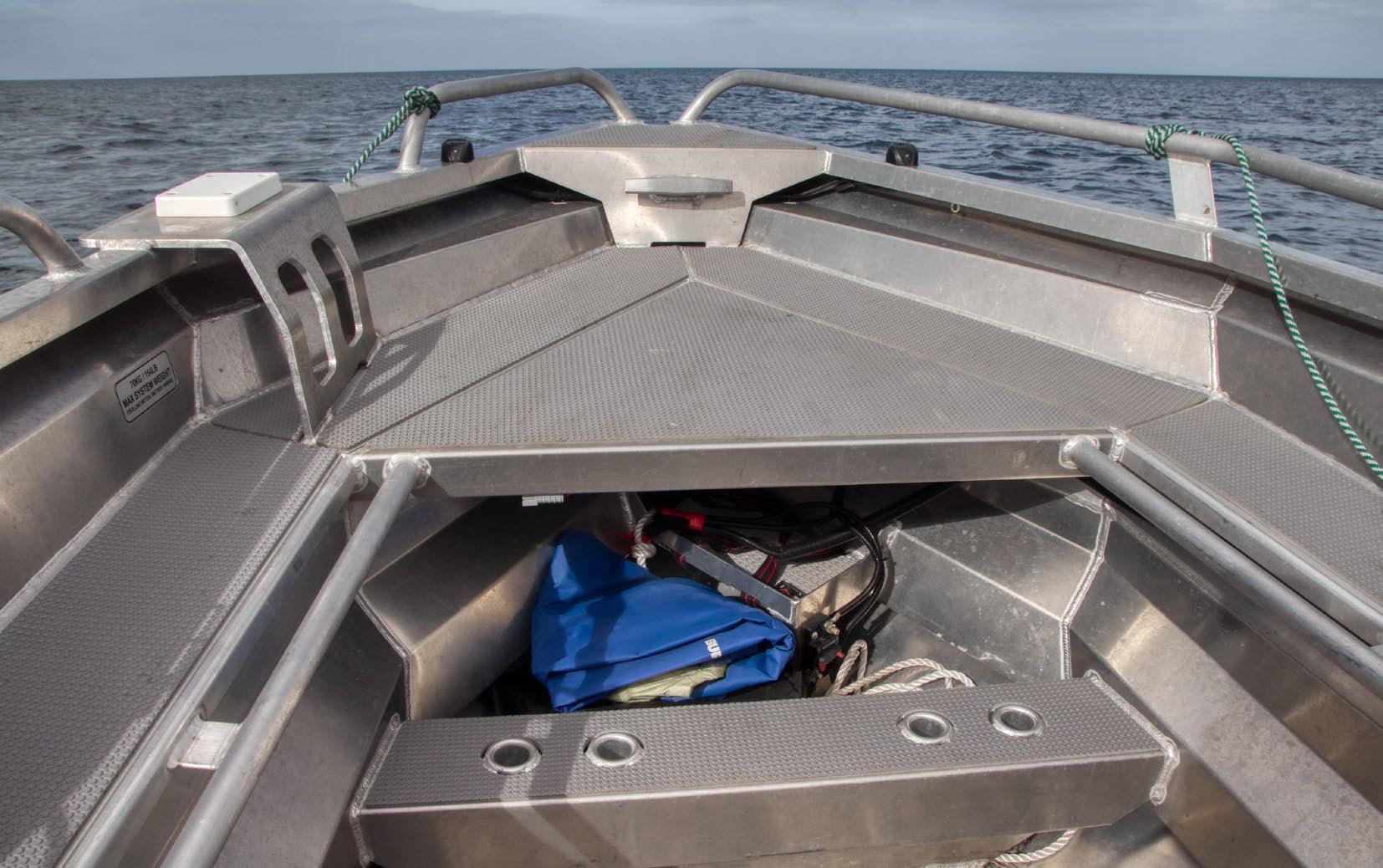
Standard with the 1450 Frontier is a 70 litre, split-lid Icy-Tek ice box with padded top, which can be moved around the boat to suit the needs of the day. The side console (set to starboard) is powder coated and quite compact to minimise intrusion on floor space. It’s comfortable enough to work around, and large enough to carry a single big-screen display unit. There’s a decent quality padded helm seat with collapsible back, but I found the adjacent throttle position a bit low for standing operation. This could be rectified easily with simple modification.

Side storage pockets run roughly half the length of the gunwales, and will accommodate enough rods and gaffs for most styles of fishing. Up front there are bench seats on both sides and there is plenty of storage space beneath the casting deck. The test boat had been fitted with a sturdy aluminium electric outboard bracket — once again built like the proverbial brick outhouse, and rated to carry up to 70 kilos. As mentioned earlier, over-engineering is part of the Stabicraft culture, and contributes significantly to the brand’s enviable reputation among serious sportfishers.

The split-lid Icy-Tek ice box doubles as a cockpit seat.
Yamaha’s neat 50 four-stroke is maximum recommended power.
Spitfire alloy trailers really are the ants’ pants.
The test boat was presented on one of Spitfire’s marvellous aluminium trailers. These things are superbly engineered, and this one looked beefy enough to carry a boat of double the weight! I was really impressed by the spare wheel setup, which features a fully pivoting bracket that enables the spare to be deployed easily as a third wheel for beach launching. It’s definitely a clever concept, and one that serious ‘non-ramp’ launchers should have a close look at.
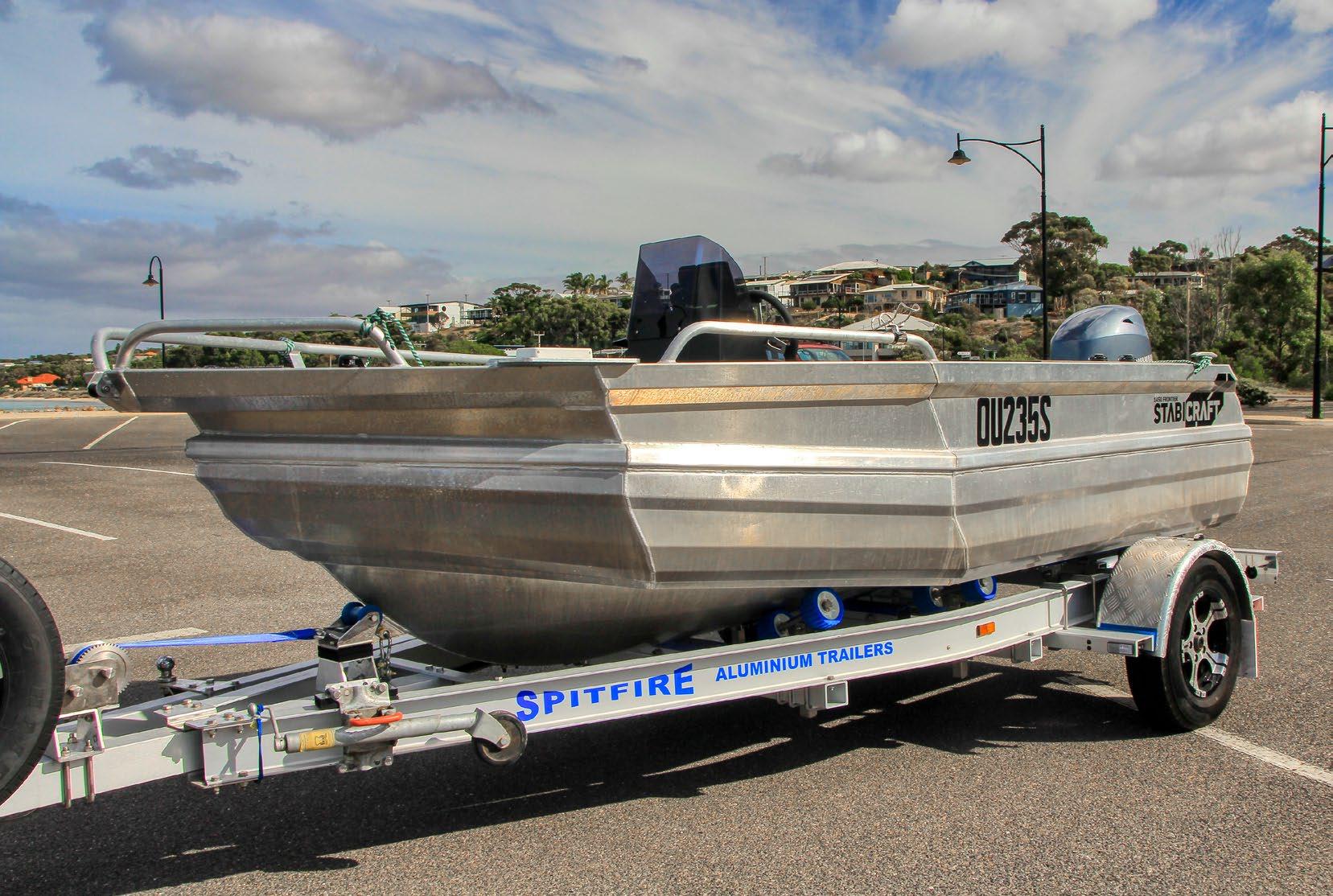
The day for our test run at Port Vincent on SA’s Yorke Peninsula was just about ideal for the job. We had a solid 20 knots of south-westerly wind blowing offshore, leaving the inshore water dead calm and throwing up plenty of chop once you ventured more than a couple of kilometres out onto the Gulf — a true ‘best of both worlds’ situation.
With good mate, Jack Laidlaw, on board, I exited the Port Vincent marina and turned to the north for a run at high speed. With the water mill-pond calm, I was able to trim well out and managed close to 30 knots as we motored up towards Sheoak Flat. Neither Jack nor I are what you’d call lightweights, and we were both impressed by how quickly the Stabicraft hull got up to top speed. The hull is very responsive to trim, and I was easily able to find the ‘sweet spot’ with the leg jacked about 80 per cent of the way out.
After the inshore leg, I turned the Stabi’ to the east and headed out to water far less friendly. As we started to lose the lee of Yorke Peninsula, the first white caps popped up, and within a couple of minutes we were hopping across a metre of wind chop. I recall thinking at the time that this really was the premium day for boat testing; you could virtually dial up how much chop you wanted by heading east or west!
I pulled the Frontier off the plane about 4km offshore to commence a short drift, and Jack and I both walked around the boat to gauge its stability. Quite honestly, with a couple of hundred kilos hanging over one side, the miniscule degree of list was hard to believe. Those broad, foam-filled sponsons provide so much buoyancy, they virtually defy the laws of physics. In an offshore situation, when one angler is leading a big fish in for his mate to gaff or net, the last thing you want to worry about is falling over each other as the boat lists. I doubt there’s another 4.4m tinny on the market that handles badly distributed weight as well as the Frontier.
 Those broad, foam-filled outer pontoons provide amazing buoyancy.
Those broad, foam-filled outer pontoons provide amazing buoyancy.
The 1450 revels in a bit of a head sea. It’s soft and surprisingly dry.
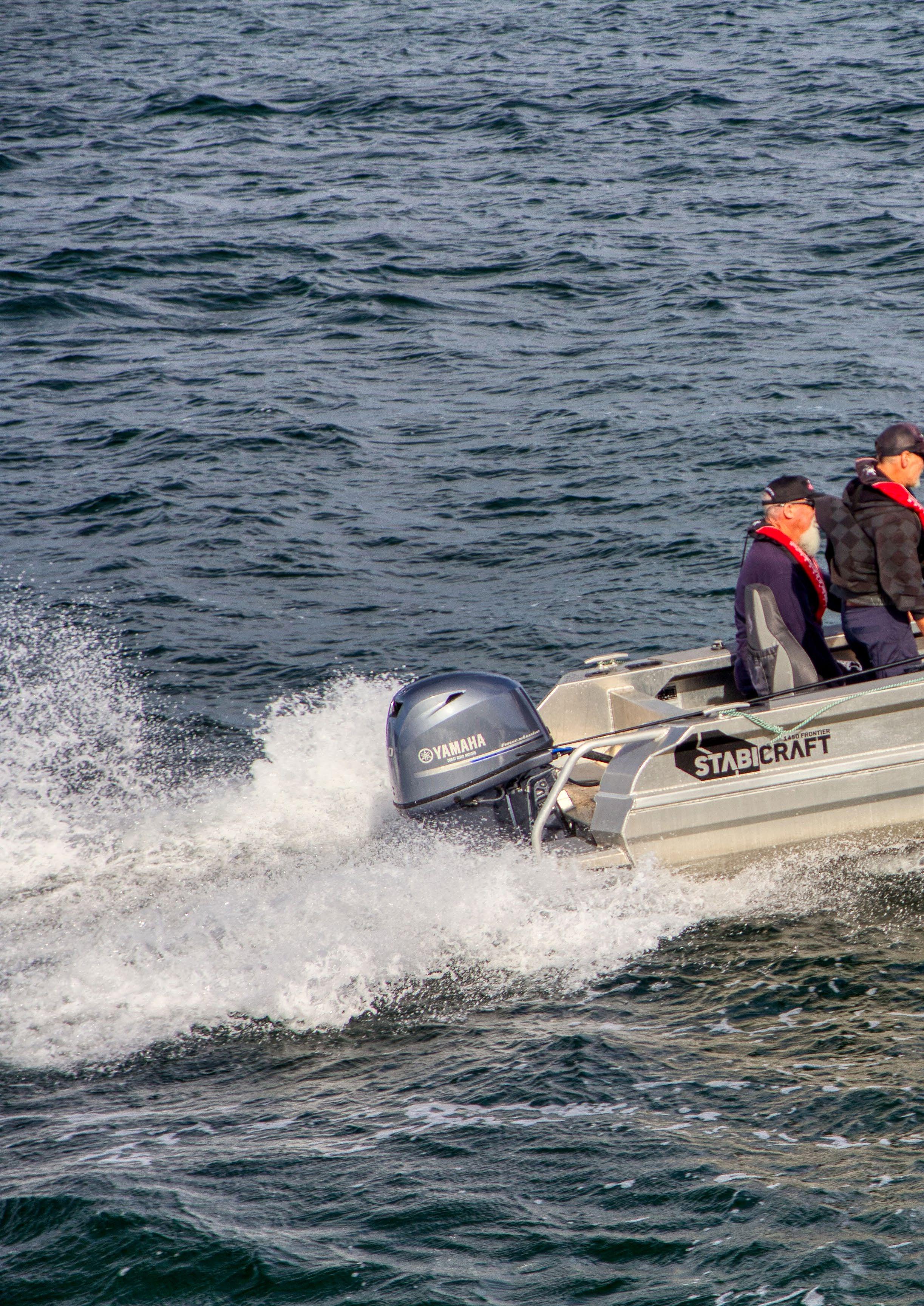
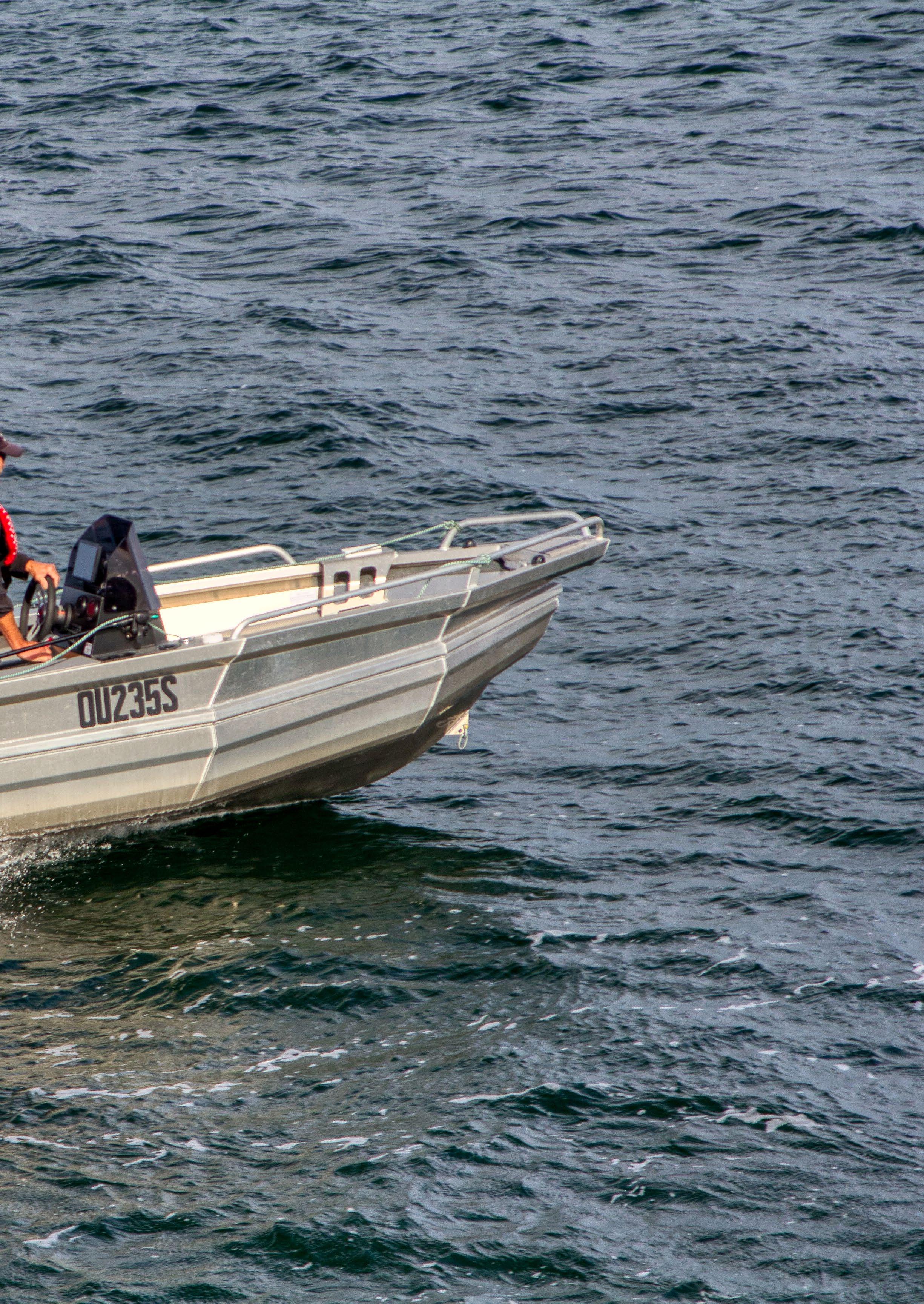
The run back to shore with the gusty south-westerly on the nose would definitely be the acid test — at least as far as ride is concerned. I throttled up to 3500rpm while trimming the bow right in, and immediately obvious was the efficiency of the Stabicraft hull. Running up to 5000rpm and about 24 knots, we were able to enjoy a soft, dry ride through an honest metre of short, steep chop, which was pretty impressive. Having most of the weight stationed aft certainly helped, allowing me to adjust trim to optimise the ride. All Jack and I could do was look at each other and smile. I know he was as impressed with the head sea performance as I was. Running at 45 degrees to the chop changed things very little. We did wear the odd puff of spray, but certainly far less than I’d anticipated. And with the sea beam on, I pushed up to 28 knots without the hull faltering at all. We spent half an hour or so rocketing around in different directions at a variety of speeds, with our collective admiration for the 1450 Frontier growing all the time. It’s certainly a neat little boat that displays what can only be described as ‘next level’ performance.
No Stabicraft is cheap, but then you wouldn’t really expect budget pricing for what’s truly a premium product. I doubt you’ll find a better aluminium boat in its size class than this one.



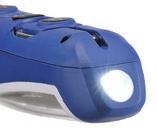
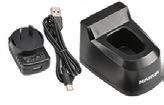

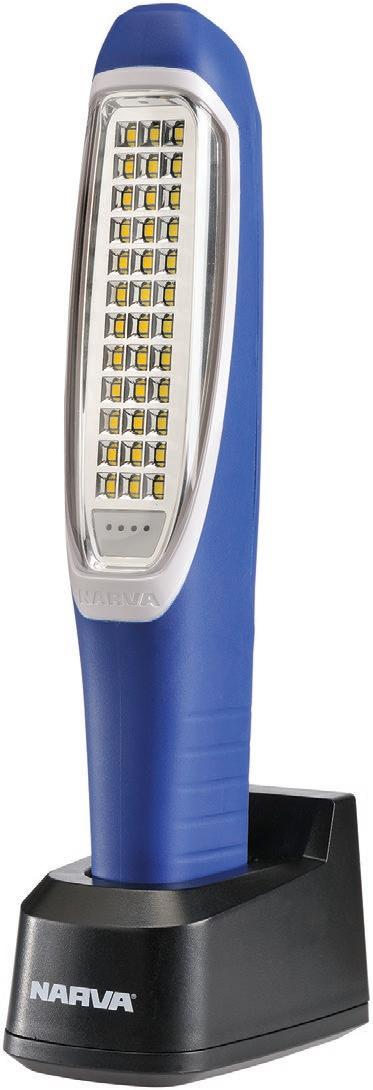




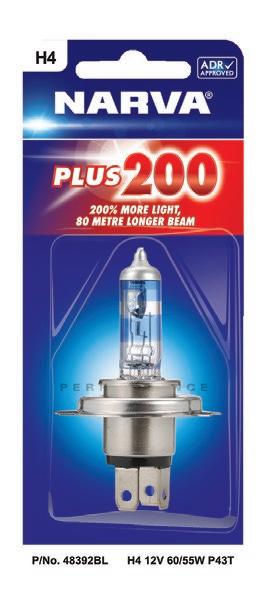





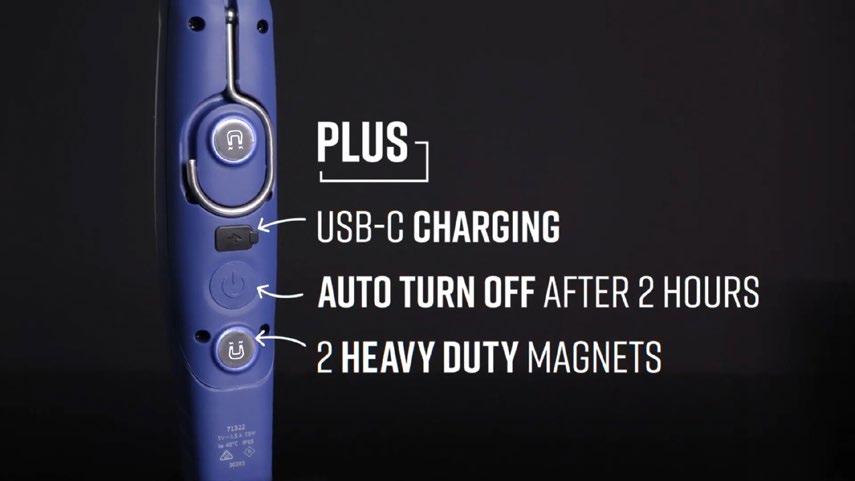

SPOOLED LOOKS AT WHAT’S NEW IN THE MARKET. FOR MORE INFORMATION ON ANY OF THE PRODUCTS, SIMPLY TAP THE BUTTON SHOWN.
The G. Loomis Conquest rods deliver the absolute pinnacle of performance. Made in Washington, USA, and developed in conjunction with Shimano, the Conquest rods utilise Shimano’s cutting-edge Spiral-X and Hi-Power technology to prevent blank twists, while increasing casting distance and accuracy.

Complete with high-performance Torzite guides from Fuji, the rods offer unshakable durability and effortless line management. For added comfort and connection, the rods are fitted with a custom reel seat and blank-cork handles, which enhance sensitivity and grip.

Daiwa’s new range of tackle trays, D-Box has been designed and developed to produce a cohesive range of purpose-built storage perfectly suited to the modern angler. Available in a range of sizes and depths, Daiwa’s D-Box range is made from recycled polypropylene, a low-impact material which delivers no toxic waste, no emissions, no fluorocarbons and no halogens in its process.


All Daiwa D-Box’s feature a 4-sided clasp system to ensure secure latching and to fully compress the water-resistant gasket seal which is installed 360 degrees around the lid of all D-Box models.
Ten models feature in the range in three sizes (small, medium and large), and three depths (shallow, regular and deep), with each box carefully designed to maximise storage and versatility with features such as spinnerbait storage incorporated into the D-Box MD (Medium Deep) and SD (Small Deep) models.
The D-Box LSU (Large Shallow Universal) is a unique box with moulded silicon holders which grab hooks and don’t let go, a perfect jighead, soft vibe or hardbody lure storage box. Tackle storage has never looked so good or been as seamless than with the new D-Box storage system from Daiwa Australia.


With an IPX8 sealed body and spool, this reel takes long runs in heavy seas or the pounding of big surf in its stride. Most quality offshore spin reels these days are extremely resistant to salt water ingress, and the Authority is no exception.
Beefed up by the inlusion of ultra-durable CNC machined stainless steel main and pinion gears, the patented DuraDrag technology operates smoothly, even under the most extreme settings. A 12+1 premium stainless steel bearing system combines with Leveline slow oscillation to ensure enduring smoothness and precision, behind all that traditional Penn power.
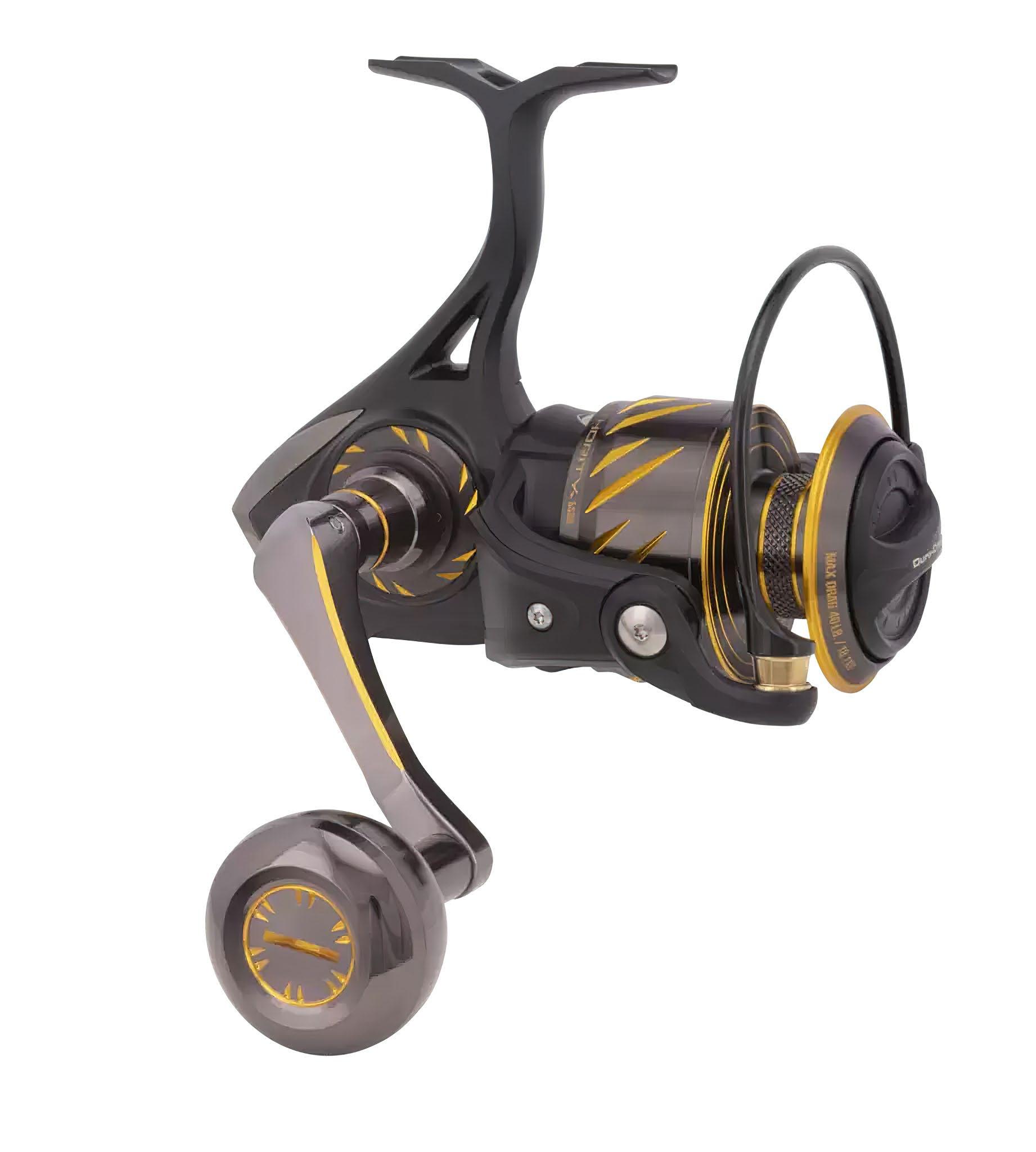
With the impoundment barra season in full swing now is the time to get your hands on the Steez Current Master 93SP-DR. Designed in partnership with Japanese engineers and tuned to suit the needs of Australian anglers and to handle the rigors of hard-pulling Australia species the Steez Current Master is one of the must-have jerkbaits for keen barra anglers.
The Current Master 93SP-DR is the perfect mid-size silent jerkbait with a lively action when jerked and suspends on the pause inducing hard strikes from predatory species like barra and mangrove jack.
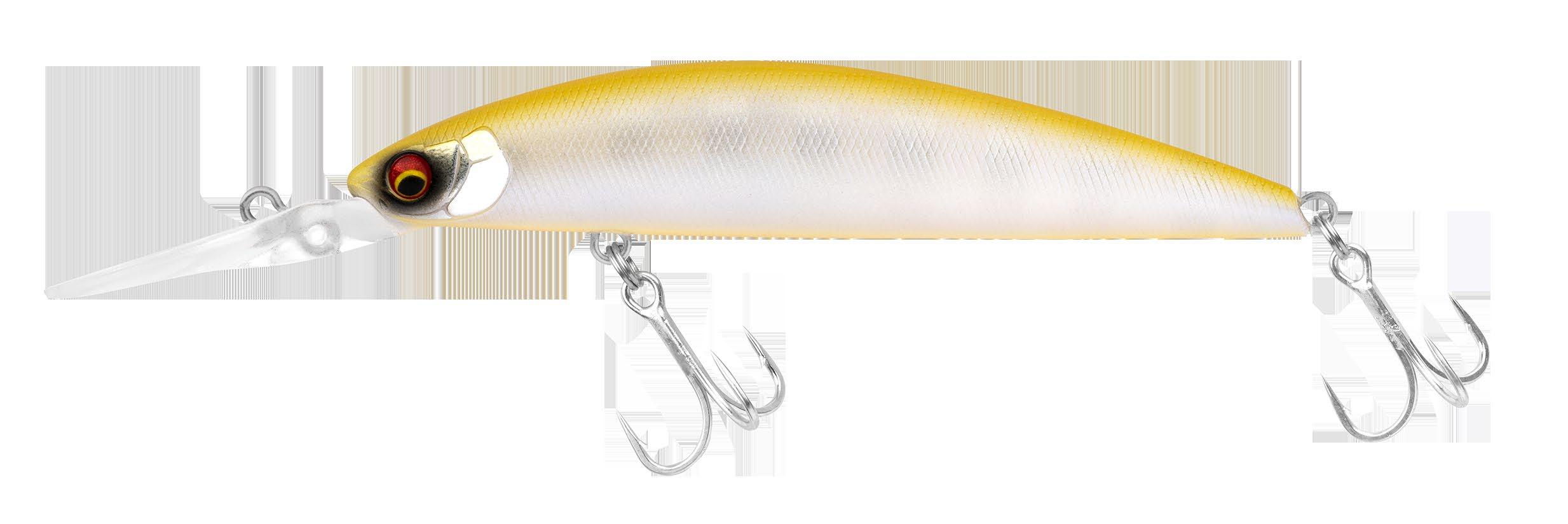
The patented “MAG LOCK” Silent Oscillation Casting System has been installed inside the Current Master 93SP-DR enabling incredibly long casts while keeping a subtle and silent presentation. The “MAG LOCK” system also creates perfect lure balance delivering a super consistent swimming action in still waters, heavy current or faster retrieve speeds.
Fitted with ultra-strong split rings and BKK Viper treble hooks there is no need to upgrade any of the hardware which comes standard on all Current Master 93SP-DR and is ready to fish straight out of the box.

The Steez Soft Shell is a uniquely designed soft vibration bait developed in Australia to deliver anglers a new take on the soft vibration lure concept. Designed with two crawfish like appendages to impart a unique action as the lure sinks to the bottom, the Soft Shell will rest with the claws up thanks to the stand-up design of the head and the buoyant nature of the material.
Designed to be fished close to the bottom with either a hopping or shaking retrieve, the Soft Shell excels on our freshwater predator species such as yellowbelly, barra, Australian bass and more. While in the saltwater it draws strikes from prawn feeding species such as flathead, mulloway, and snapper.

The Steez Soft Shell can be rigged numerous ways and comes standard with both stinger hooks and BKK Fang treble hooks in the pack.

The ZMan 2.5” ST GrubZ takes the popular GrubZ profile to the next level, with enhanced features that create the ultimate curl tail presentation. The short and stocky body is heavily ribbed to create natural micro vibrations and a softer, more natural feel, while also retaining scent more effectively so that the fish locate the lure easier, eat it more aggressively and hang on longer, allowing for more positive hook sets.
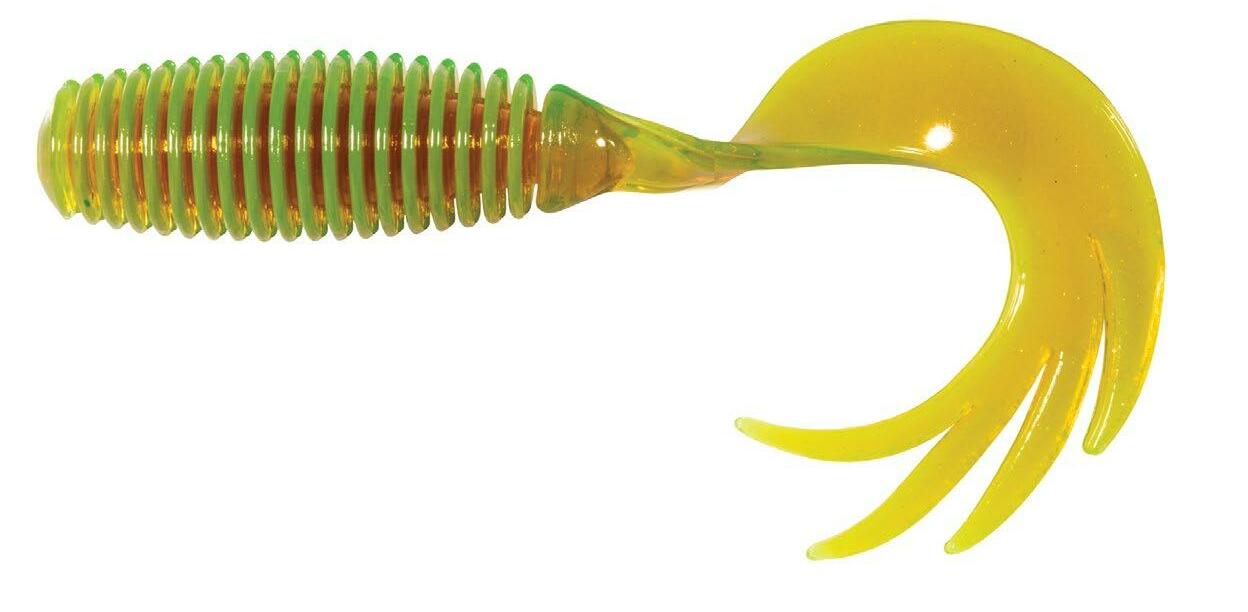

The long, curly tail features a split tail design that creates an irresistible soft fluttering action, that works effectively on the drop, at very slow speeds and even when rigged on ultralight jigheads. These features combine to create a curl tail that will excel in all fishing scenarios from an aggressive bite to shut down situations, where these new finesse features will maximise your chances of getting them to bite.
The ZMan 2.5” GrubZ has been a dominant force in both the tournament and social fishing scenes, with this ST (Split Tail) version sure to take its place alongside this legendary presentation.
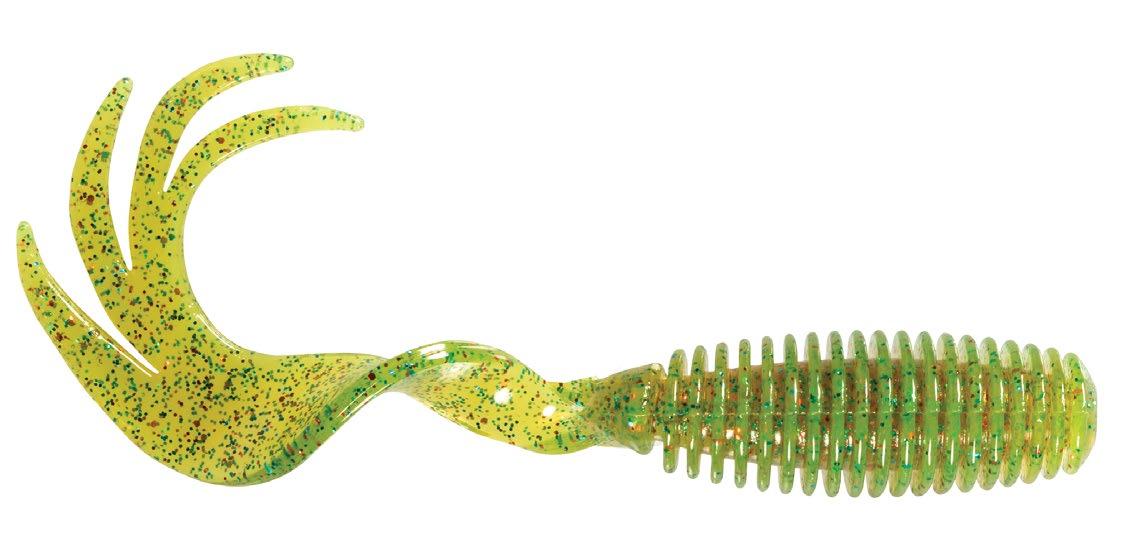

Heavy baitcast weapons, with a focus on extreme performance, the Black Adder range will appeal to anglers chasing larger predatory species, including barramundi and Murray cod.
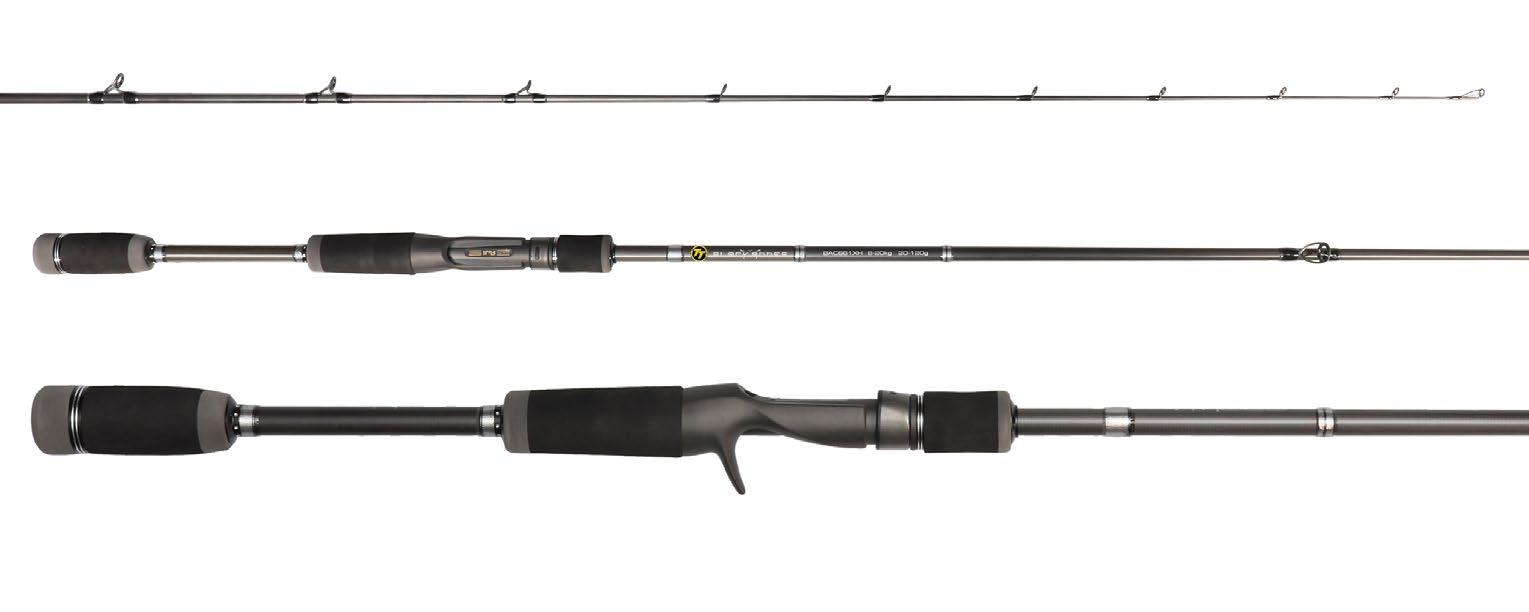
TT aim to produce rods designed to suit our target species and techniques, utilising quality components at an affordable price. High-grade Toray carbon blanks have been chosen for their responsive actions, extremely light feel, and the power to weight ratio they offer anglers, especially over extended fishing sessions.
The premium finish continues with Fuji K-Series, Tangle Free casting guides, with Alconite inserts, and a lightweight Fuji TVS reel seat, creating a series of rods that look great, feel great in the hand, and have the actions and build to cast big baits and handle big fish.

The southern snapper run is upon on us and Daiwa has the reel for you with the release of the 22 Free Swimmer BR. A collaborative design between Daiwa USA, Daiwa Australia, Daiwa New Zealand and Daiwa Japan’s reel engineers the 22 Free Swimmer BR marks Daiwa’s returns to the Bite ’n’ Run reel scene and is a reel five years in the making.
Leaving no stone unturned in its design the reel’s Bite ’n’ Run technology is a feature highly desired by keen live and dead bait anglers that allows fish to take the bait under minimal line tension to ensure a solid hookset is achieved.

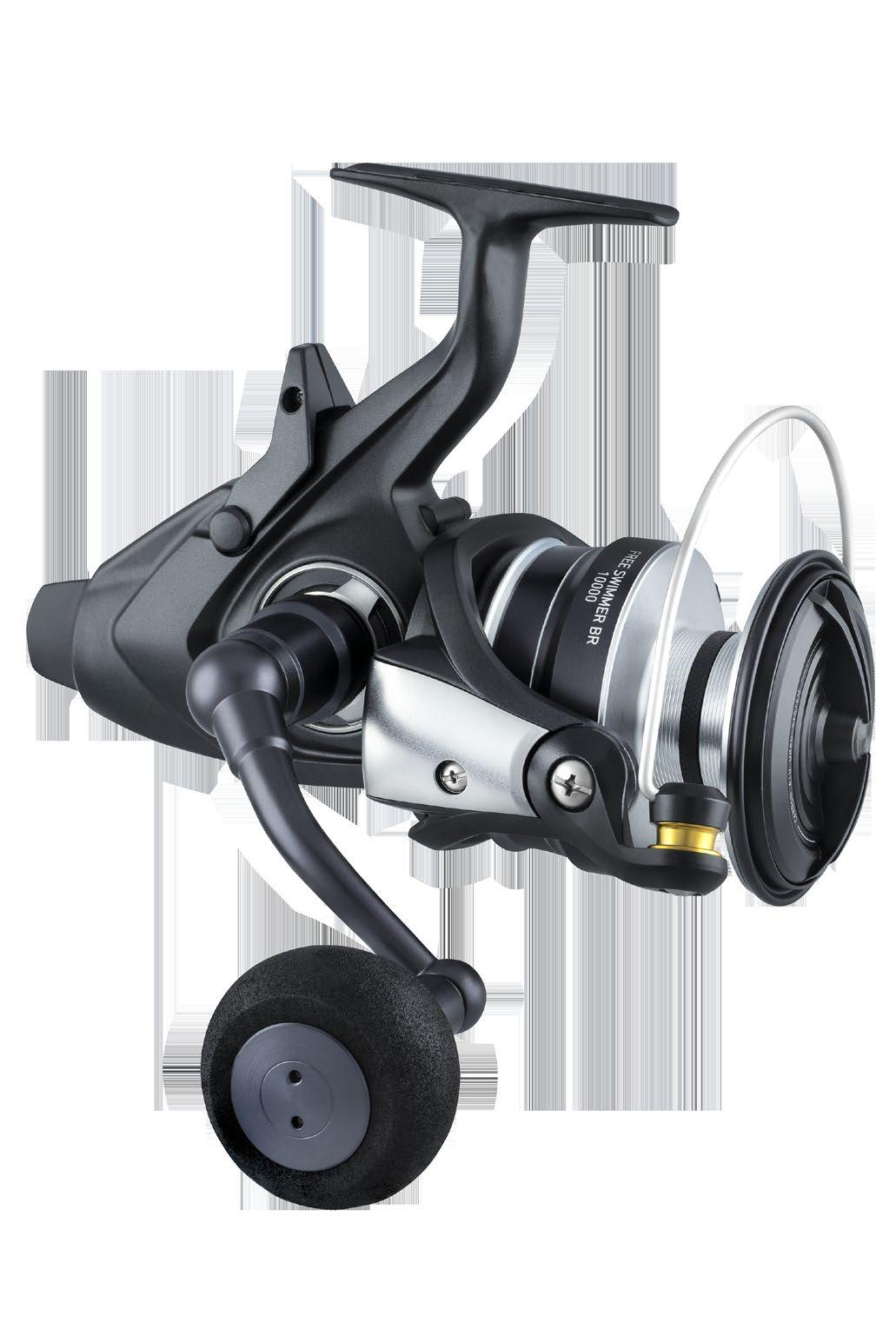
A sought after, and much-loved feature, Bite ’n’ Run tension is set by adjusting the dial on the bottom of the reel. With a wide range of settings available, tension can be lightly set to suit unweighted baits for finicky feeders such as whiting, up to a strong setting suited to live baiting large baits for hard-fighting predators such as snapper, kingfish and mackerel.
Meticulous attention to detail was paid throughout the R ‘n’ D design phase with the Free Swimmer BR featuring a strong and sturdy carbon composite frame, internal rubber seals for optimum saltwater protection, and a strong and robust construction that will handle the toughest of conditions and species including New Zealand’s legendary XOS kingfish and snapper.
Air Rotor, ATD Drag, and Tough Digigear further enhance the reel’s design pedigree and performance and deliver Australian anglers their newest and most advanced Bite n’ Run reel to date. Feel the power and the poise of the 22 Free Swimmer BR this snapper season.
Daiwa’s Infeet range of products has become synonymous with lightline anglers all over Australia and the arrival of the new Infeet X spin reel continues the tradition for finesse angling design and performance excellence. Featuring Daiwa’s carbon composite Zaion V body, the Infeet X is strong and sturdy while remaining incredibly lightweight and saltwater proof.
Two shallow spool models feature in the Infeet X range, with the 2000S-P featuring a 4.8:1 retrieve ratio and the 2500S a 5.3:1 ratio, with both the shallow spool and retrieve ratios selected with the wants of Aussie light tackle anglers in mind. Daiwa’s next generation ATD Type-L drag is installed for the first time outside the 22 Exist. The benchmark in light line drag performance, ATD Type-L lowers the start-up inertia of the drag system even more than previous ATD systems meaning even the lightest of lines are protected from fish strikes and sudden lunges during the fight.
Finesse saltwater performance and longevity is further enhanced courtesy of CRBB corrosion resistant bearings, Magseal and Daiwa’s Tough Digigear gearing system. Infeet X is a perfect choice for the keen light-tackle angler looking for a new reel, and those looking for a new member to join their Infeet family.


It’s great to see a small Aussie tackle manufacturer kicking goals in the national market. Reedy’s Rigz constructs high quality terminal setups for all manner of fishing situations, and its superbly crafted King George whiting rigs are currently grabbing plenty of attention.
Reedy’s uses high-end Japanese Mutu circle hooks on its paternoster whiting rigs, which are tied on 15 pound fluorocarbon. Each hook is enhanced with UV flash material, designed to catch light and attract the attention of feeding whiting. A tiny plastic luminous bead also is included just above the hook.

A small piece of bait (such as a section of squid tentacle) is threaded lightly onto the tip of the hook, which a feeding whiting will be drawn to by the flash — a situation that usually leads to a solid, positive hook-up.
Reedy’s Whiting Rigs are available with different flash material colours, and come in various hook sizes to suit both inshore and deep water whiting fishing.

Saltiga FC X-Link (Cross Link) FC brings the advancements of X-Link technology to heavy fresh and saltwater arenas. The X-Link method alters the molecular structure of the line itself, bonding individual particles on a chemical level.

This change in the chemical composition results in a line which is much stronger for its given diameter. The X-Link method also produces a line which is incredibly limp and supple, resulting in a more manageable line and a much higher knot retention.
Daiwa’s Tough Resin paired with the X-Link process creates a supple yet extremely abrasion resistant fluorocarbon leader that retains knot strength.
Saltiga FC X-Link is the perfect choice when you want a tough leader to resist scuffing and abrasion around the reef or protect from the rasping jaws off a big barramundi. Saltiga FC X-Link is parallel spooled and is available from 20-100lb.
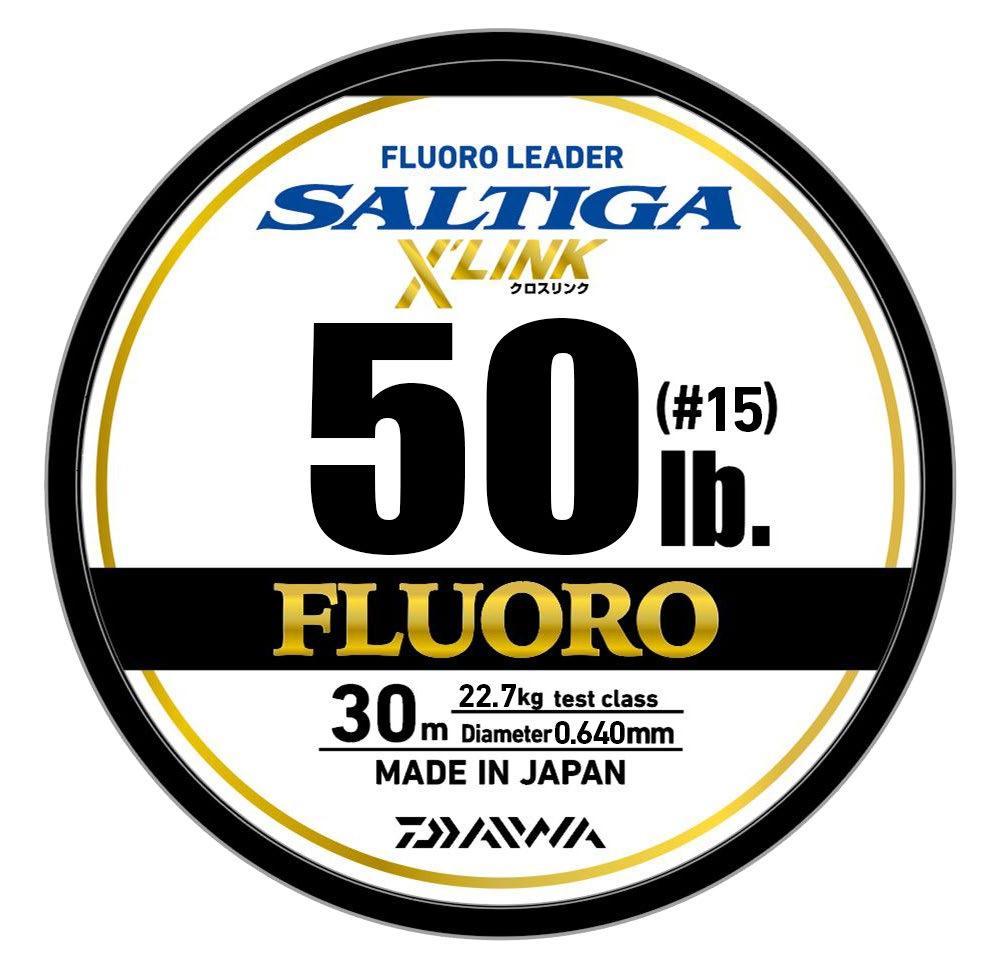

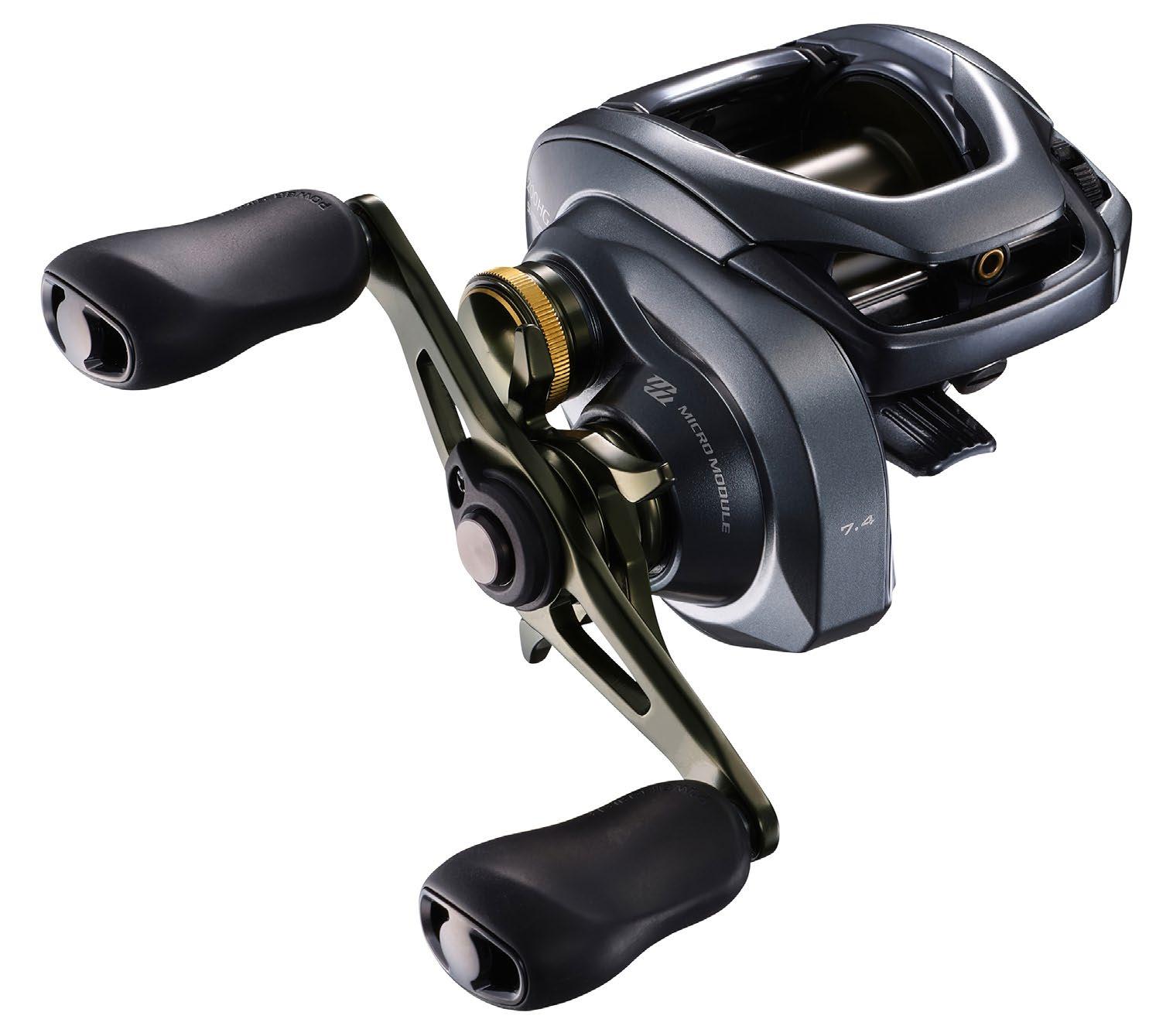
Built on a legacy of durability, dependability and versatility, Shimano’s new Curado is now fitted with the company’s unique DC braking technology. This new Digital Control braking system utilises a microcomputer to monitor spool speed 1,000 times every second, applying the perfect amount of brake to prevent backlash and maximise casting distance. Anglers of all skill levels will appreciate less thumbing and trouble-free casting in all conditions.
There are four models in the new Curado DC range, covering line strengths between 8-15kg. All are equipped with 6+1 ball bearings and offer gear ratios of 6.2:1-8.5:1. Other features include the renowned Hagane body, cross carbon drag and shielded anti-rust bearings.
Everything eats a prawn and the ZMan 2.5” PrawnZ is a lifelike, bite-size prawn profile that will appeal to a wide variety of species in the fresh and salt. The body design allows the angler to create a natural prawn flick and glide, while thin legs and antennae quiver with the slightest movement for added realism.
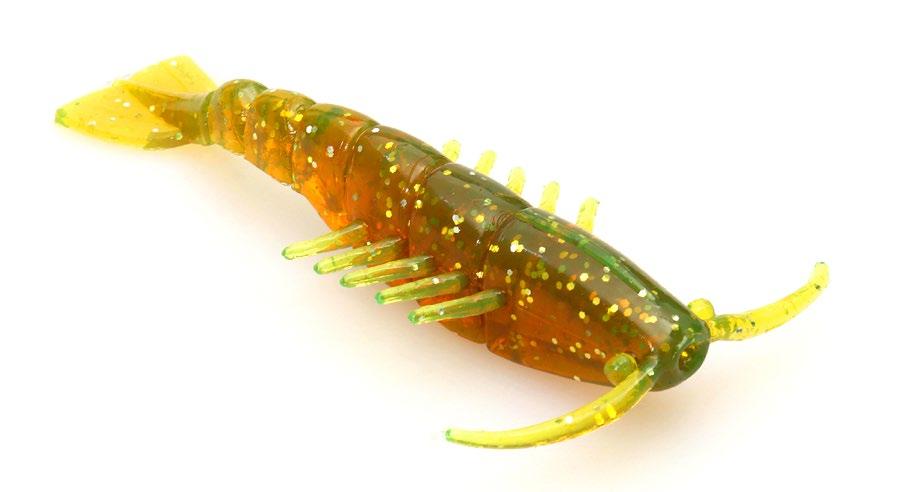
Increased bulk in the body allows the plastic to rig effectively on a jighead, before tapering rapidly to a thin, segmented tail, designed to encourage that natural tail flick. Legs extend from each side of the PrawnZ body that, when combined with ZMan’s natural buoyancy, allows the plastic to slowly parachute down, holding in the strike zone longer. Alternatively increase the weight and sink it down with that signature prawn flick and glide.


Available in 15 popular ZMan colours and already a winner on the bream, this versatile presentation can be rigged on a wide variety of TT jigheads, including the HWS (Hidden Weight System), HeadlockZ, NedlockZ, SnakelockZ Finesse and more.
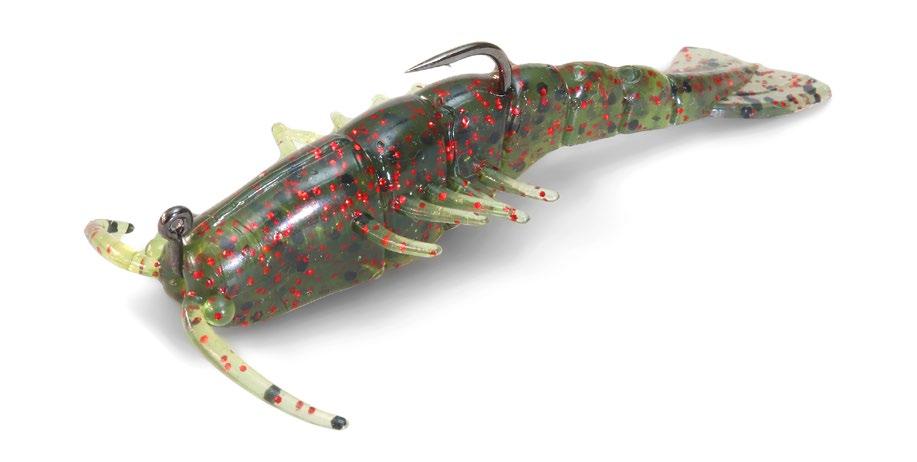
The Slim Twitcher is now available in deep diving models.

The Slim Twitcher was introduced in 2021 and has quickly become extremely adept at catching most popular estuary species including flathead, mangrove jack, barramundi and bream. It does not end there with fish also caught across reef flats and in impoundments on most sizes. The range was originally designed as a shallow diving suspending jerkbait, diving to a maximum of 2 metres.
The new Slim Twitcher Deep offers diving to depths of up to 3-metres, offering more versatility for the lure. XOS flathead, barra, and mangrove jack will love the new addition. The 95mm dives to 2-metres, the 110 and 125 to 3.0 metres.
The Slim Twitcher Deep comes in 95mm, 110mm and 125mm lengths and features a larger bib to facilitate the deeper dive. The action remains a tight wobble and roll with an erratic movement when paused and jerked forward with a quick rod tip movement.

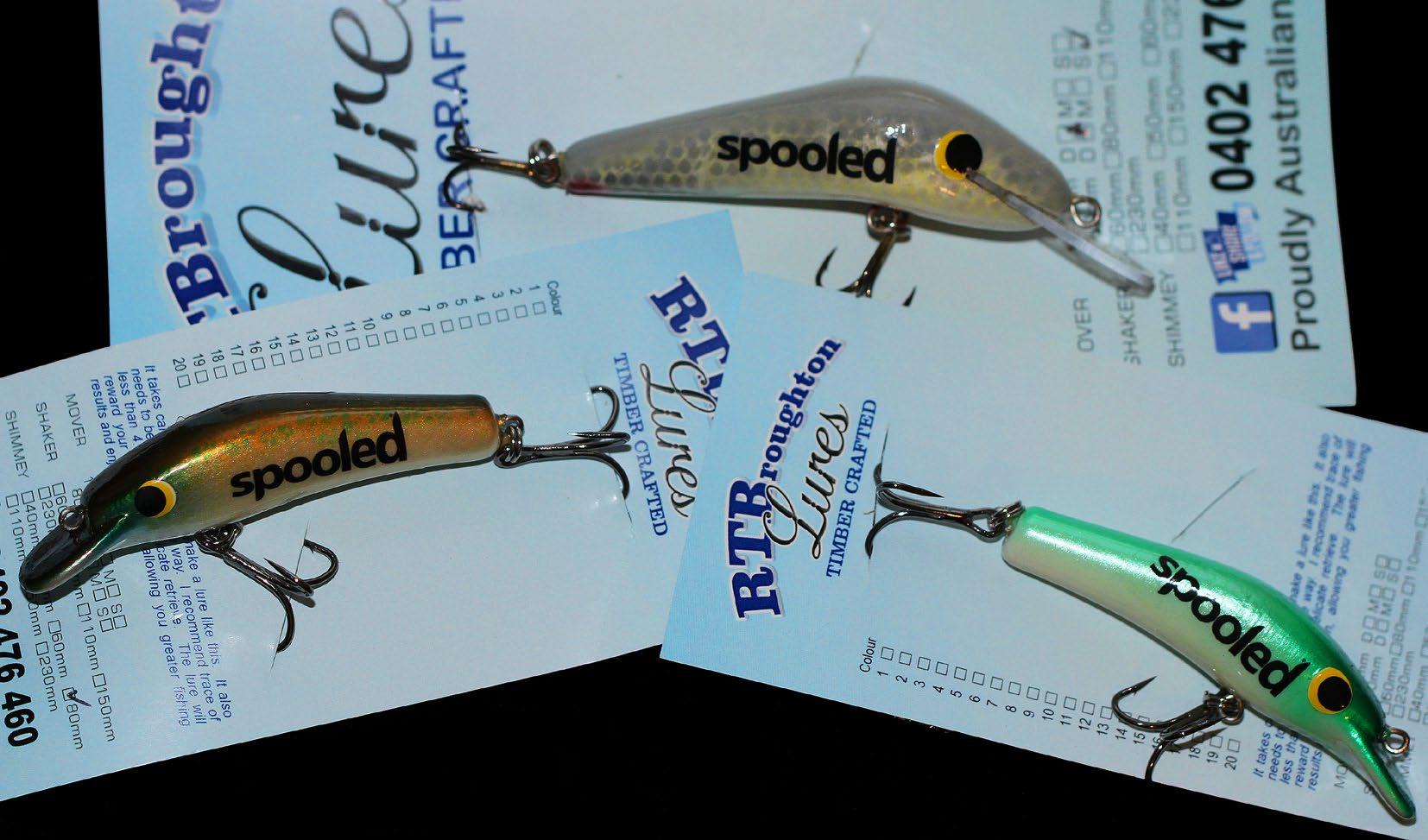
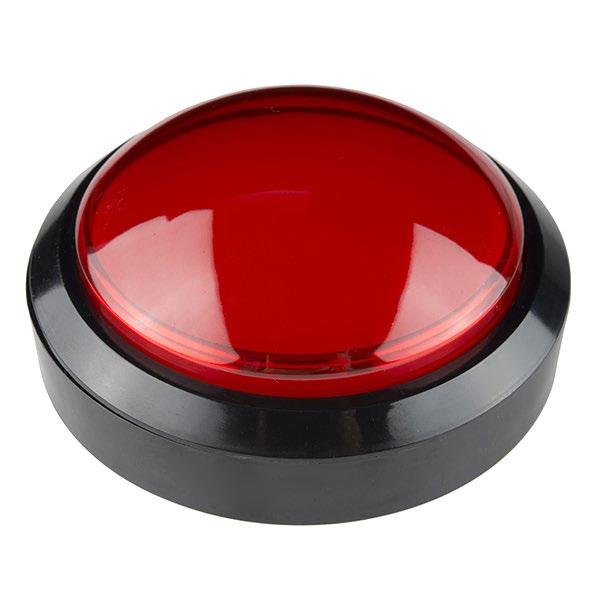

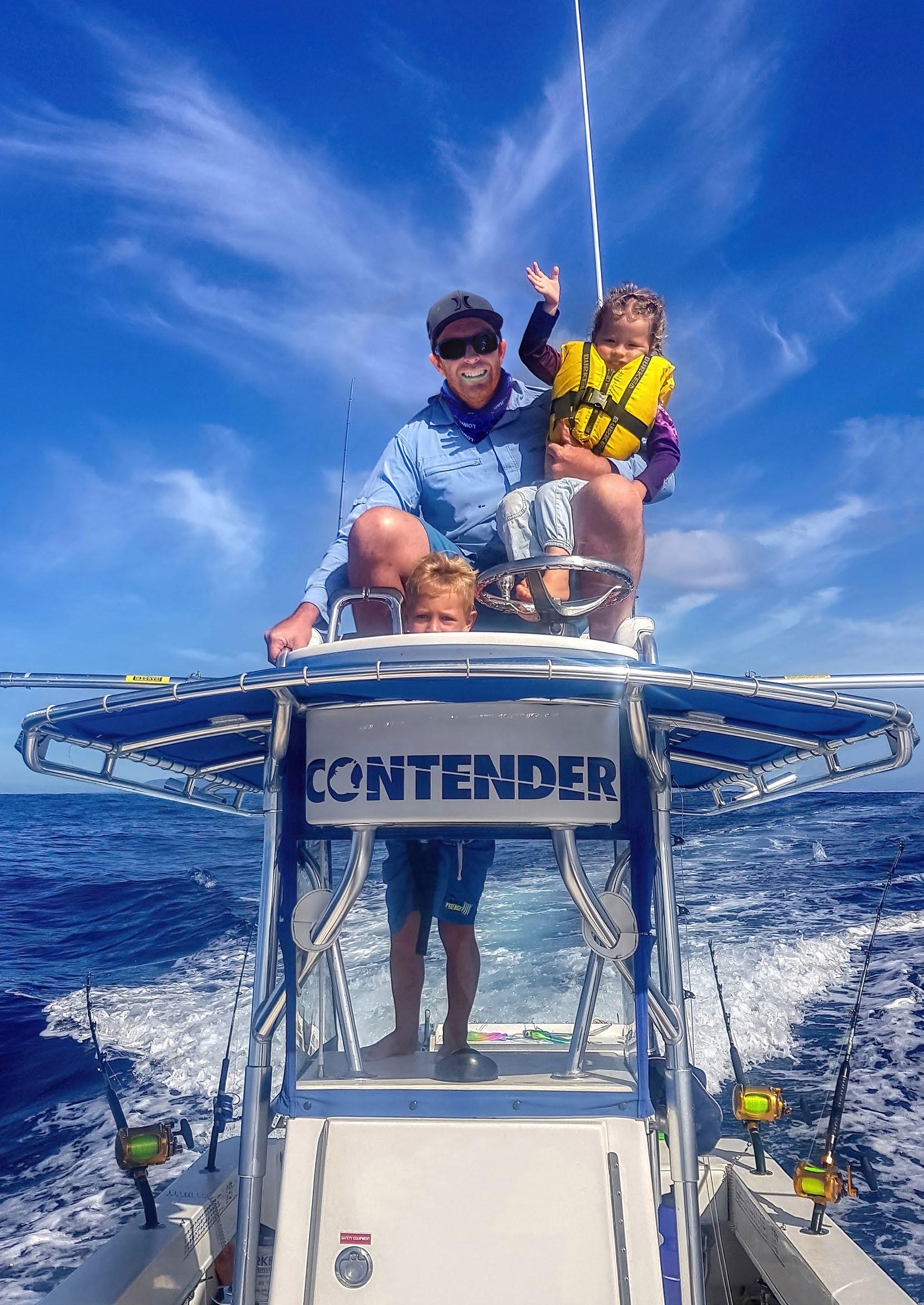
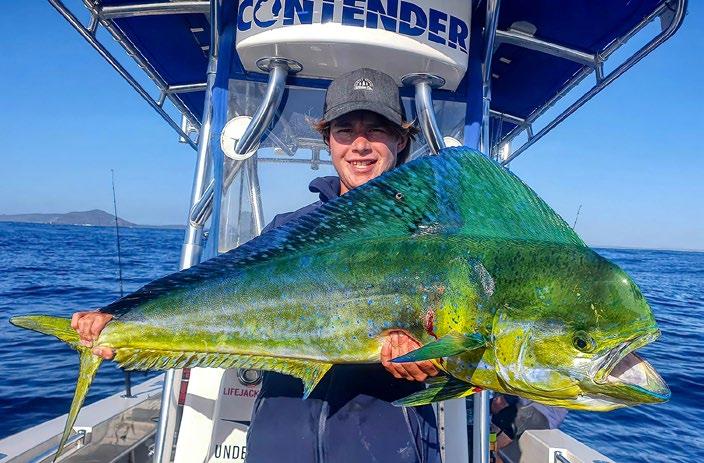
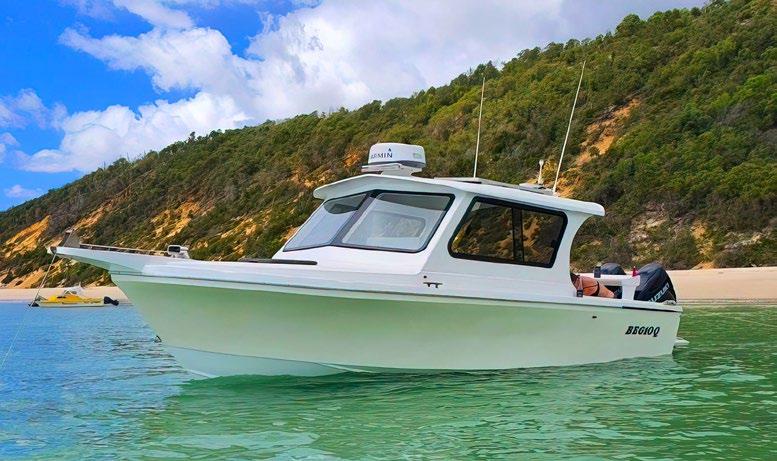

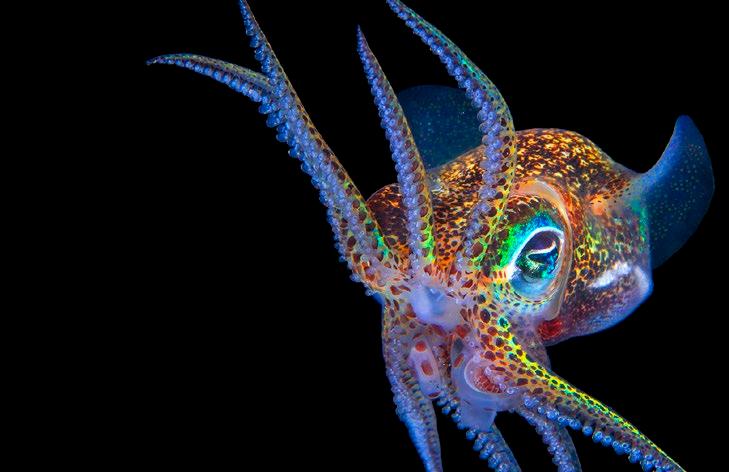
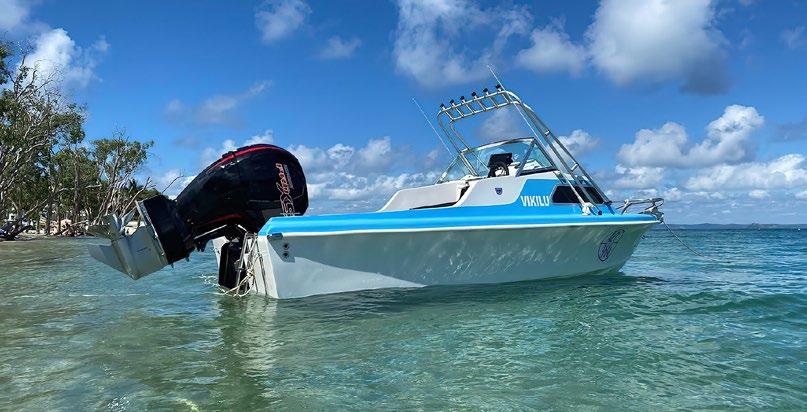
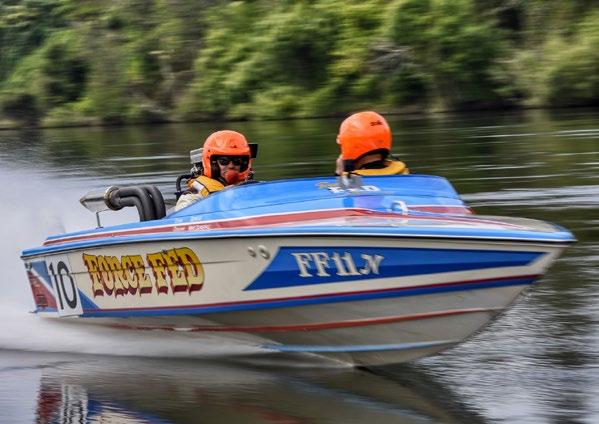
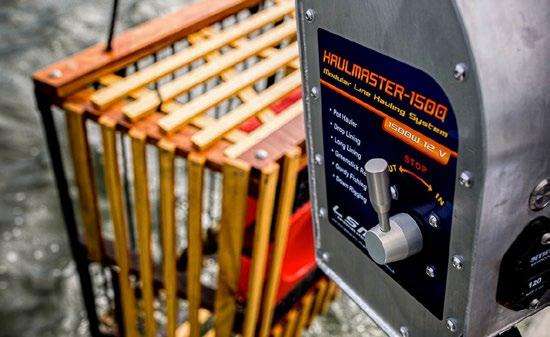
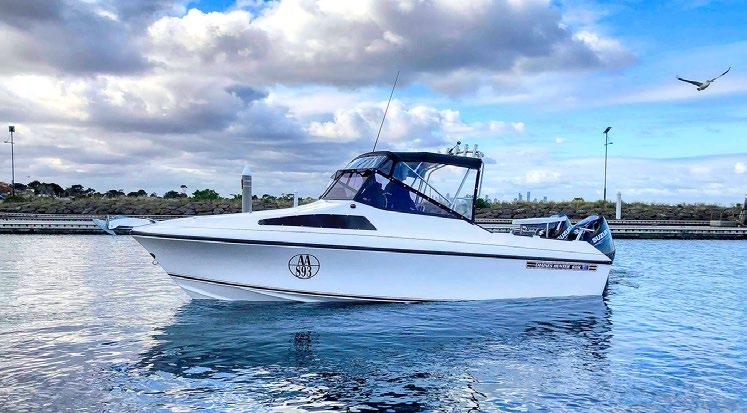
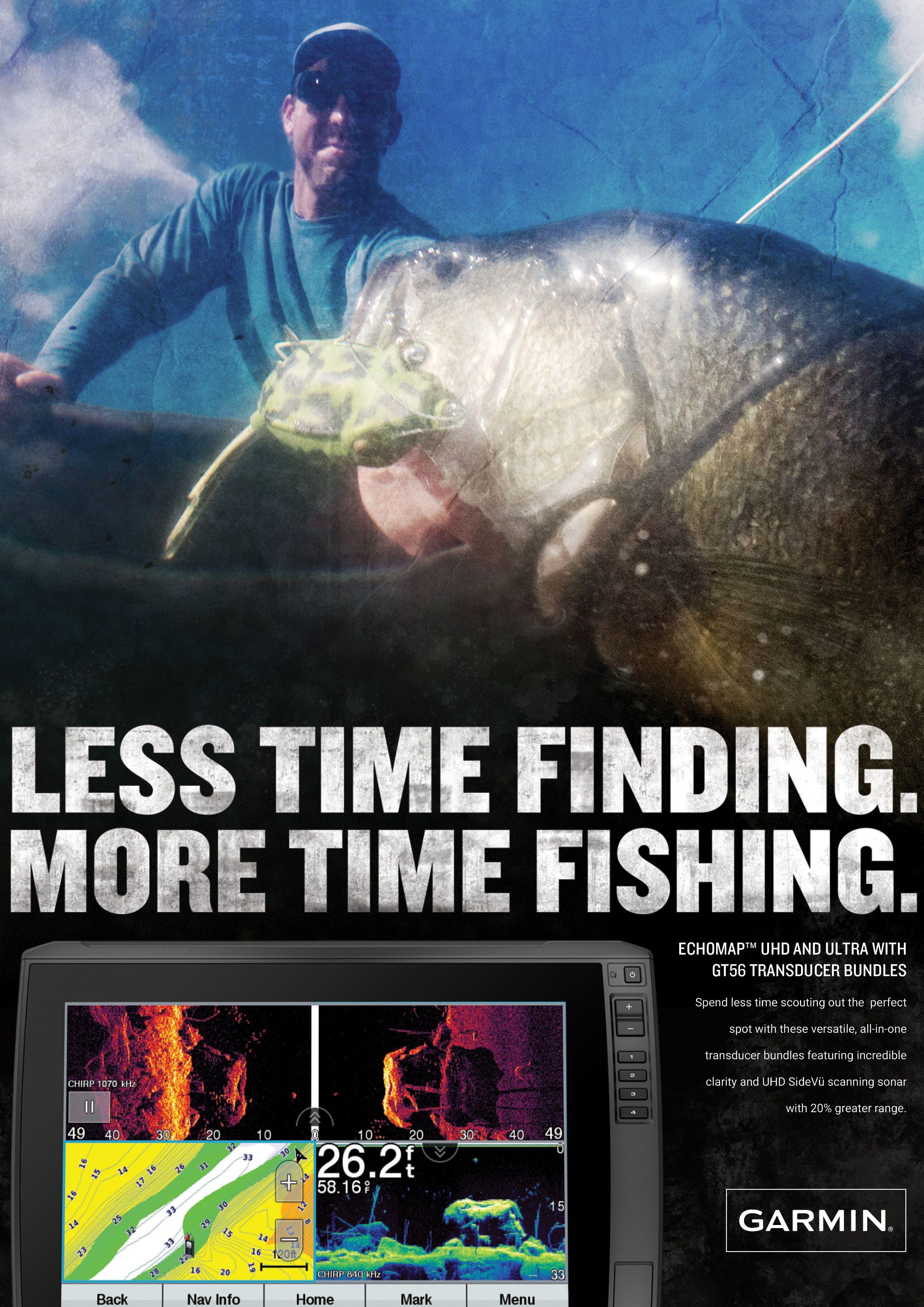 John ‘Bear’ Willis
John ‘Bear’ Willis

, we made it–those that are reading this editorial, that is. It was only a few years ago that our world was turned upside down by a virus that now seems a dirty word–COVID. I vividly remember being kicked out of a television shoot in Victoria’s high country by a glum faced coppa saying, “Get home now, this is bloody serious!”
Bloody serious alright, that was the start of what many in the COVID underground call the beginning of the “great reset.” Melbourne residents suffered through a total of six lockdowns lasting a long 262 days, and we never saw the end of the introduced legislation until 12 October, 2022 after a seeming eternity of State of Emergency and Pandemic Legislation considered by some as virtual martial rule.
Right or wrong, much has changed in our marine world during that period. The divisive nature of the legislation separated many workers, lining the pockets of many whilst a host of others went broke or suffered extreme hardship, both financially and mentally.
It has heralded a new, new! Prices have risen exponentially across the board, but perhaps none so much as the marine industry. And yet virtually every manufacturer, both large and small, ended up with full order books, many of which will take a few more years to complete. In fact, some of the niche manufacturers have closed their order books as they try to catch up–so why advertise?
This has aligned with the dramatic changes in the way we have learnt to accept all things media. Virtually everything is now on-line and people are now willing to spend untold $$$$ buying items they may never have seen, felt or touched. Even I brought a property that way!
Many manufacturers now have larger media production staff than leading magazines. Some are producing glamour content, and there’s some great stuff. Electronics companies now produce and sponsor informative content on their brands’ abilities and advantages, as well as instructional video on how-to! Many boat and engine companies have enormous social media reach and often sponsor multi-media personalities to promote their wares, some of whom seem to change their brands more often than their undies!
But where does all this leave the buyers? I have produced qualified marine content since 1991 - yep 30 years! On occasion, I have often refused to put my name to reviews of sub-standard product, and some of them from the largest manufacturers in Australasia. Thankfully, that hasn’t happened often as we mostly have prime quality marine products.


Everything about NSX is designed to bring your fishing adventures closer. Enjoy our fastest-ever Autorouting and next-gen C-MAP® charts. Experience new, intuitive touch screens and simple sonar setup with hints to assist you when you need it. Count on high-resolution imagery from state-of-the-art sonar technology, like FishReveal™, DownScan Imaging™ and SideScan. Add compatibility with a wide range of 1 kW transducers for even more target resolution, and there is nothing between you and your next adventure but open water.


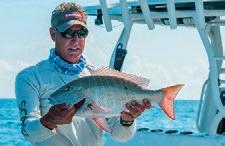
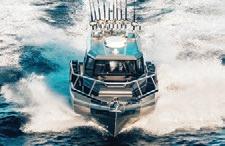
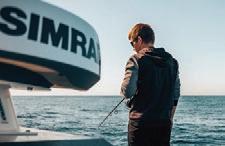
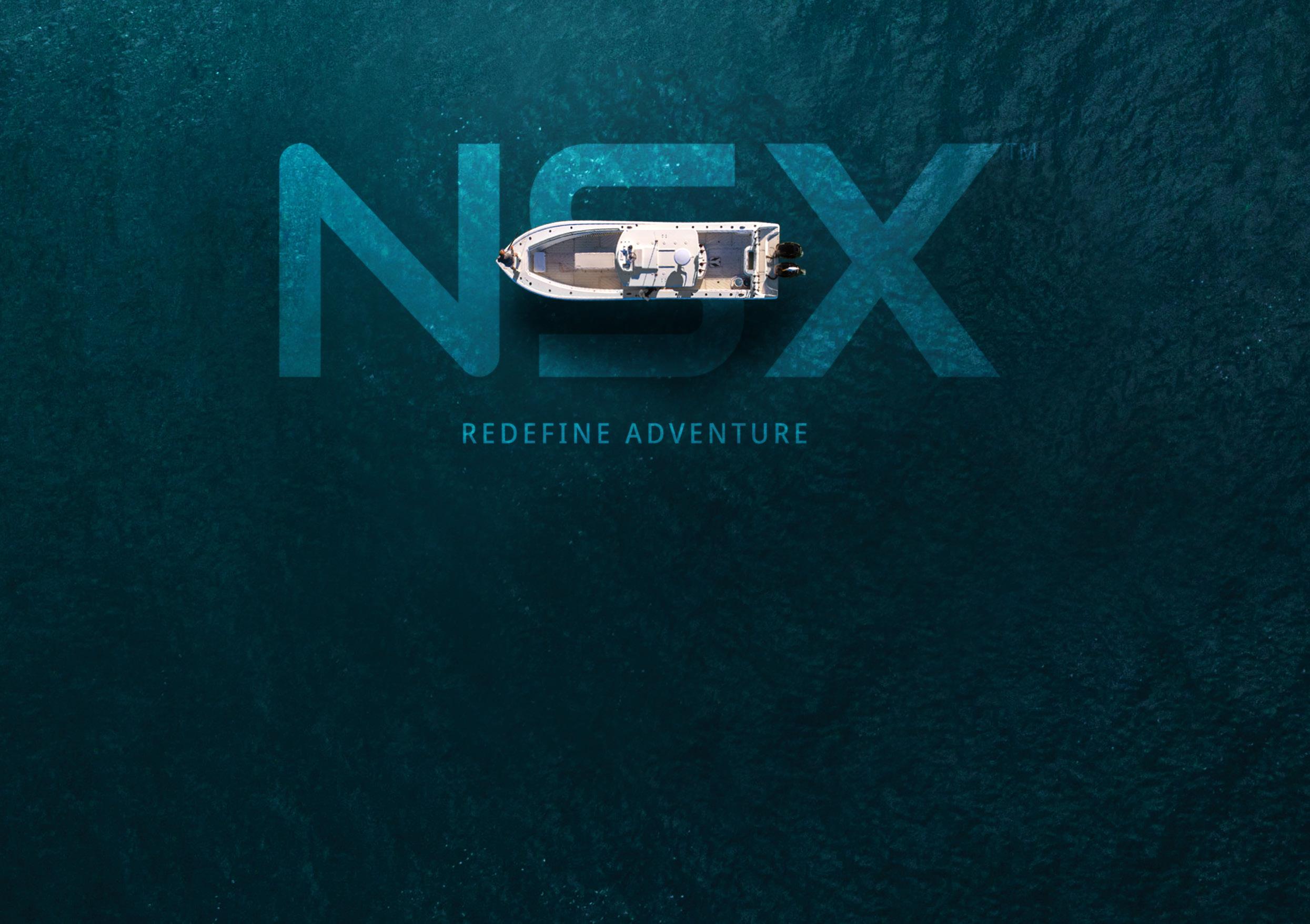

I have genuinely been threatened, ostracised, demeaned and abused for supplying qualified, professional and independent testing and opinion, even when reporting on results from qualified testing laboratories.
Instead, many media outlets employ “brochure writers” or should I say brochure cut and pasters for their so-called product “reviews.” There’s no problem with writing brochures and promotional editorial, so long as they declared it publicly as advertorial and certainly not a qualified review.
But what outlet in their right mind will employ independent critical opinion in this day and age considering the threat of offending advertisers? Unfortunately, there are not too many left–there’s no Australian Top Gear in marine products. Hence my favourite saying–“Review the reviewer before you read the review.”
There’s plenty of “experts” out there that couldn’t change a wheel bearing or re-pack a stern gland, and yet their media outlets have made them heroes! One well-known media outlet even committed fraud by dramatically changing one of my scoresheets for print!
The result–In today’s “new, new” don’t believe everything you read, and be sure to check the source and follow the money before you spend your hard-earned dollars, especially on social media. That “expert” may well be exactly that, an EX (has been) SPURT (a sudden discharge from an orifice!)
We at Deadrise send you all the very best wishes for the Christmas and New Year season, a period where so many enjoy the fruits of the year by exploring Australia’s beautiful waterways in the craft of your choice.
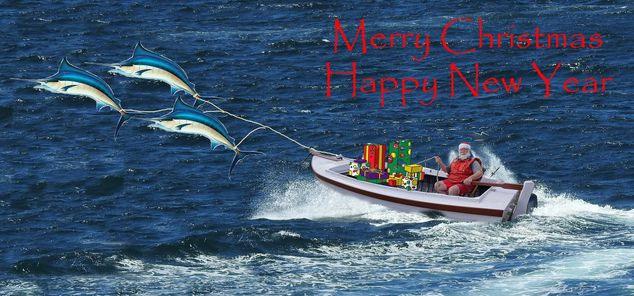
We wish to remind you all that we have experienced extreme rain and flood conditions following fires and drought. Many of our rivers and impoundments are at their capacities, some of which have been unseen in a generation. Hence, there are new hazards lurking with flooded trees, flotsam and jetsam as well as heavy current strengths in unexpected places.
Please take great care on the water and expect the unexpected. We want to see you all again safely throughout 2023!
See ya all in the wet bit!
Bear and Casey




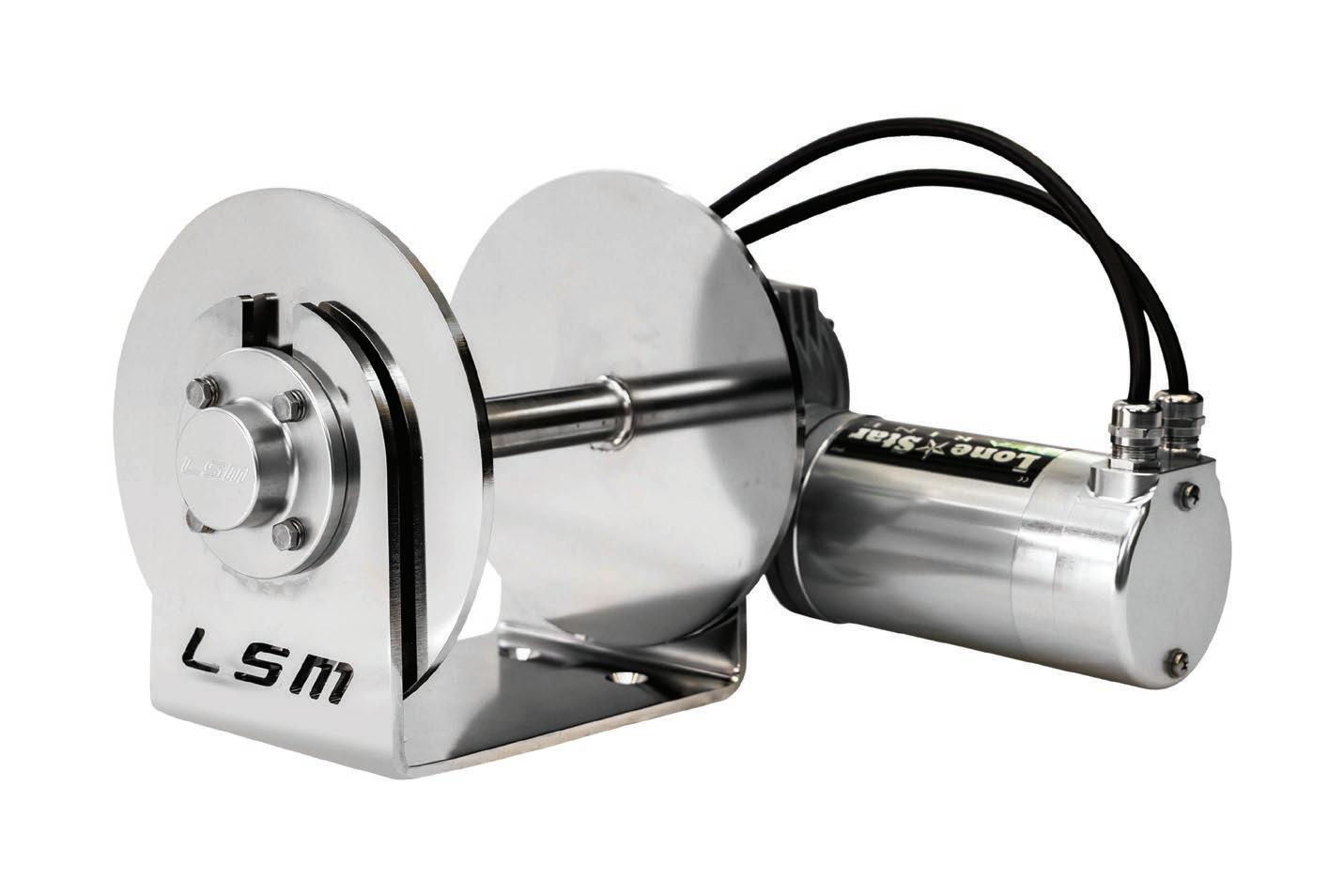

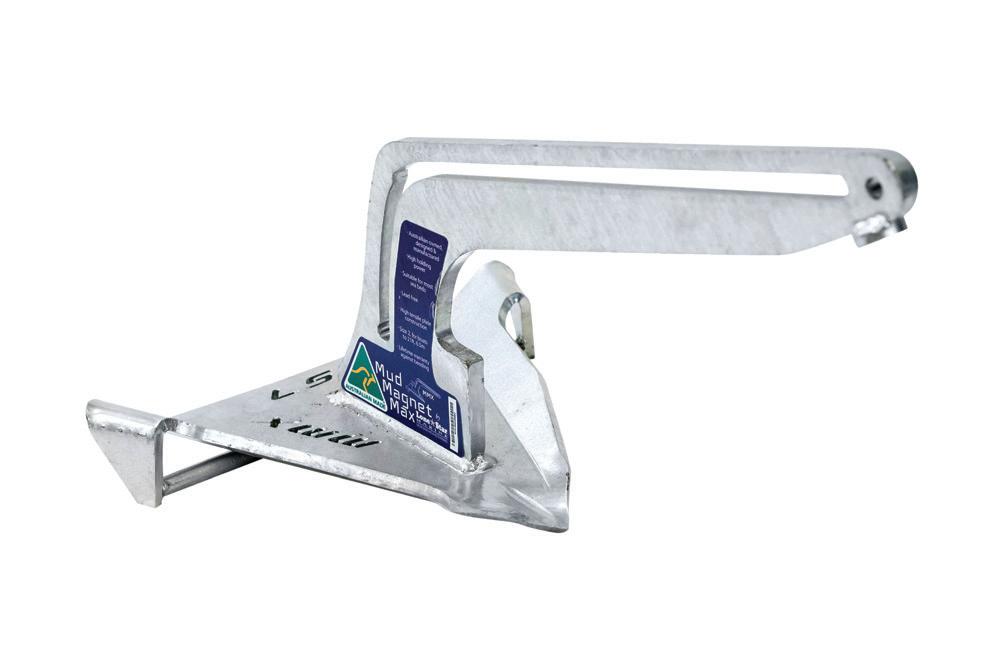



Australia is a land full of opportunity for an adventurous spirit and Wildside Sportfishing’s Jason Bettles is a great example of living that life to its fullest. John Willis reports.

“There’s not a day goes by that I don’t appreciate just how good this place is, and how well suited the Contender is for my operation”
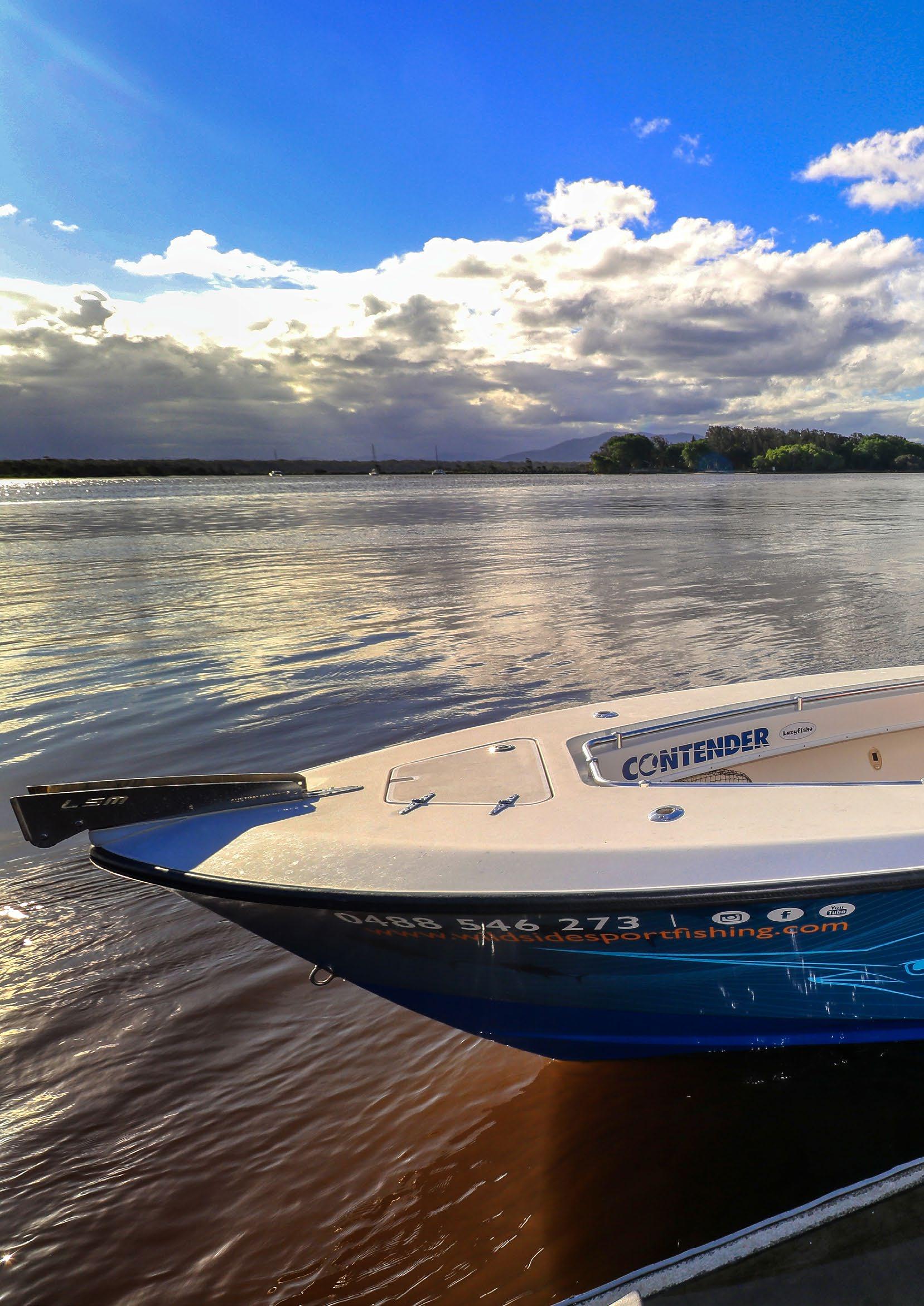
Jason runs the highly successful fishing charter business from the NSW North Coast haven of South West Rocks. Is that haven or heaven?—it could be both!) If I were able to create the perfect sportfishing destination it would probably look very much like “The Rocks”. Its very latitude of 30.88S means it truly is the ideal scenario where the northern flow of the East Australian Current meets the cooler waters streaming nutrients from the Tasman Sea.

Jason cut his fishing teeth in Victoria’s Port Phillip Bay having lived in Mornington and is well known to most of the local gurus from the Snapper Point area, including most charter operators.
Yet he escaped the trappings of Mexico many years ago, moving around considerably but spending around 12 years in Darwin as a maritime charter operator, a master in the marine construction oil and gas sector, and as a fishing guide of 20 years experience. He started Wildside Sportfishing in Darwin about 3 years before leaving there using a BarCrusher 670XS that he says was highly suited to the shallow environment and choppy conditions.
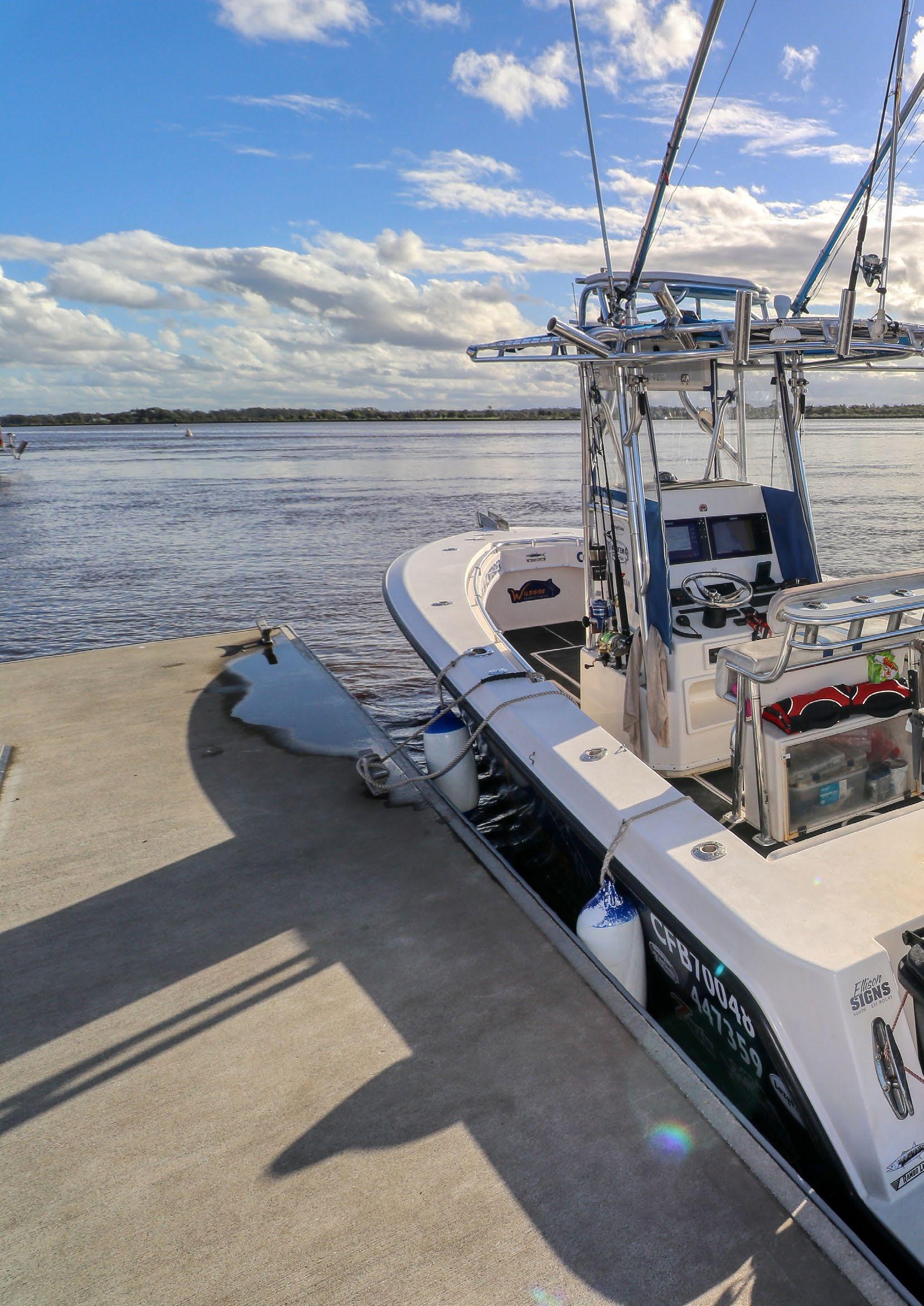
It was the eventual move down to South West Rocks with his young family that saw him realising his dream setting up Wildside Sportfishing as an adventurous and forward thinking specialist, taking small groups both in and offshore chasing a host of available species in his beautifully fitted American 25’ Contender Tournament in survey for 4 + 1.
Jason said, “There’s not a day goes by that I don’t appreciate just how good this place is, and how well suited the Contender is for my operation. The ride at
sea is magic! Our Macleay River bar can be a real bugger at times with long stretches of sand drifts and breaking waves, yet the Contender handles even the most difficult crossings with ease!”
Those coming to South West Rocks with their own boats should take some local advice on the bar conditions at the very least as conditions can change quickly, especially with wind changes and that danger period around the last of an outgoing tide. It really makes good sense to have at least one day out with an experienced operator to learn the ropes. There are good boat ramps available both in the Macleay River and the smaller Back Creek, however, the entrances to both are tricky.

Jason having a ball teaching his new generation of sports fishers all the ropes.
Jason uses 3 x Simrad 12” multi-function screens to compliment all the best in modern sports fishing technique.
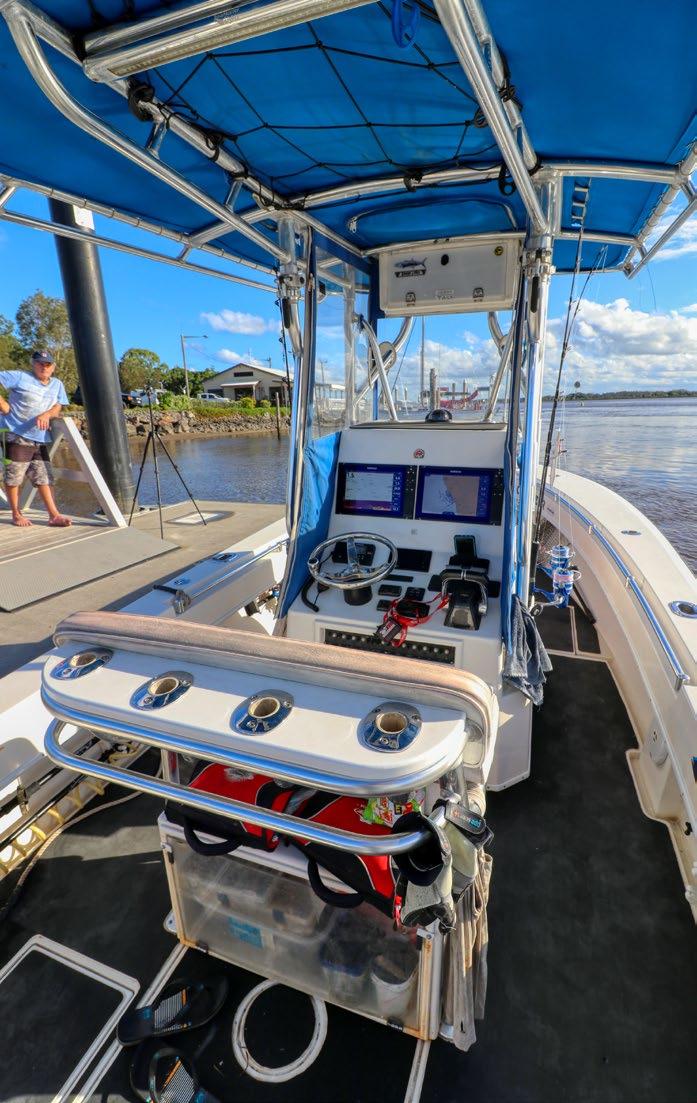
The Contender truly is an ideal platform for Jason’s style of sportfishing. Whilst he’s not averse to drowning a bait, he just loves lure fishing, and in particular soft plastics that attract probably 95% of the myriad of species he encounters in these fertile waters. He also specialised in using a lot of octo jigs and flutter jigs -artificials, but loves mixing up the techniques especially with lighter tackle and teaching his customers new, and very successful tricks.
The centre console Contender is ideal for spreading out his customers for casting separation and deep dropping minimising tangles. This is vitally important in wind and tide conditions where the drift may require all anglers on one side of the boat, and the tremendous stability of the platform certainly assists in these conditions.
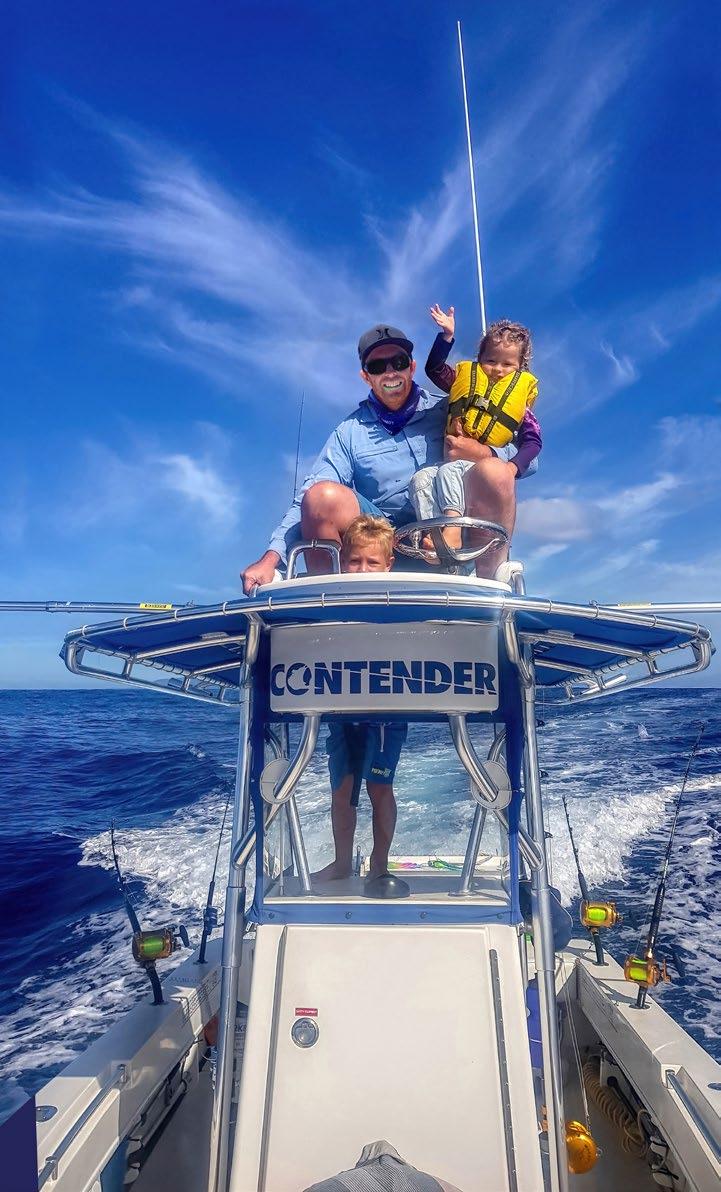
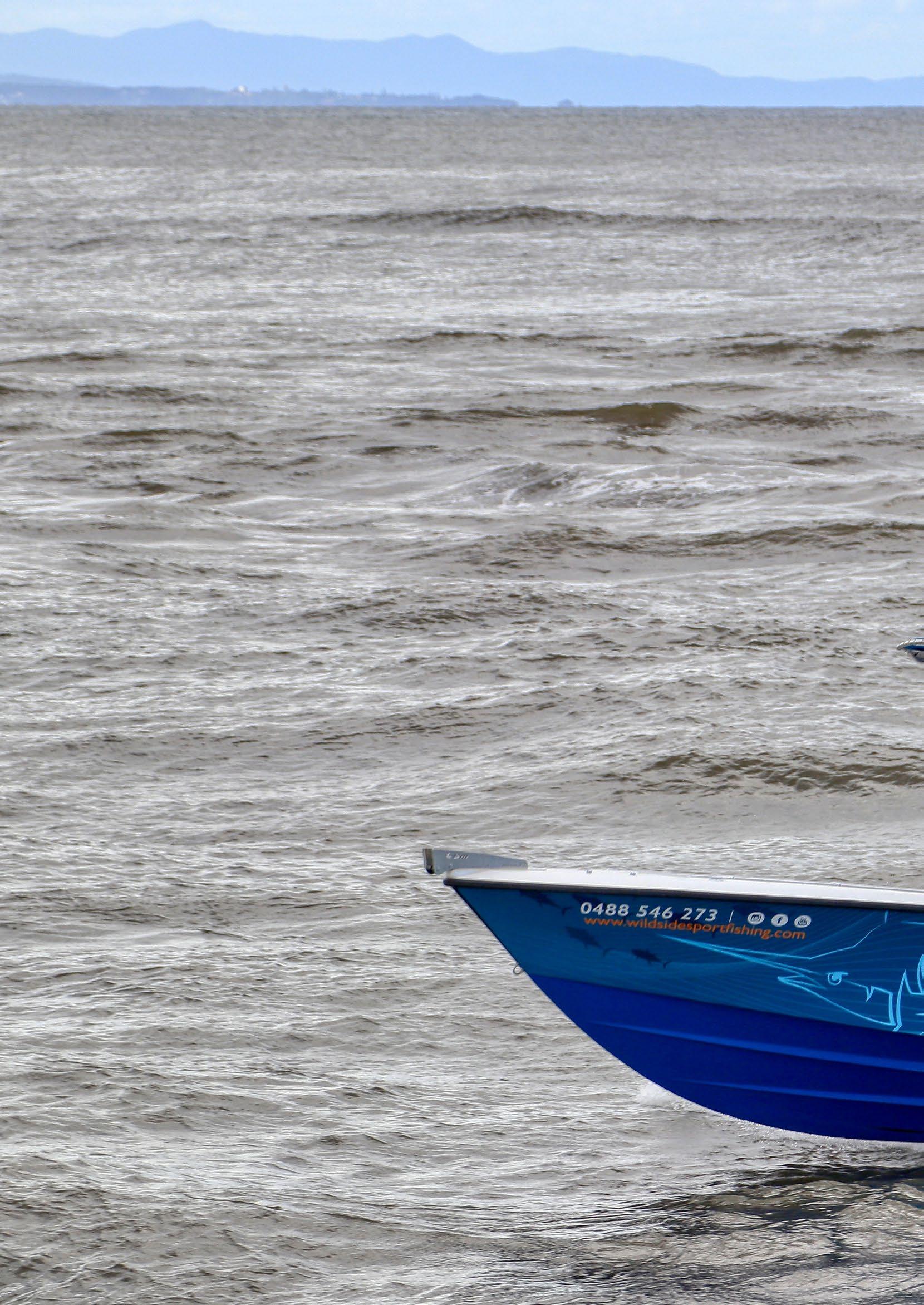
She’s powered with the reliability of a pair of 200HP Yamaha 4-cylinder, 4-stroke outboards that provide terrific top end speed of around 45knots loaded with 660 litres of fuel and a load, but more importantly powers enormous thrust out of the hole, a feature constantly required for bar crossings. They also supply a huge amount of torque in the mid-range, which not only keeps the rig travelling easily at 25-30 knots in a sloppy sea, but also keeps the big girl riding the back of a wave on the bar crossings.
Of course, being in Survey, she’s fully foam filled and self-draining for total confidence. The rigging is impressive with an aluminium T-top off the centre console that features shade, tonnes of rocket launchers and even a small crow’s nest where you can step up onto the top of the console. She’s got tonnes of storage both in the side pockets and floor, including fish bins; a walk up transom with walk thru access to the starboard, and live bait tank fitted firmly to the port.
Jason uses 3 x Simrad 12” multi-function screens fitted with total scan, down and side scan transducers, also providing low, medium and high CHIRP for terrific definition no matter the water depth—and trust me, he finds the fish! Jason added, “Fish aren’t always where you expect them. They move around lots, so good electronics are essential!”
It’s safety first on the Macleay River bar. “It can be a real bugger at times with long stretches of sand drifts and breaking waves”.
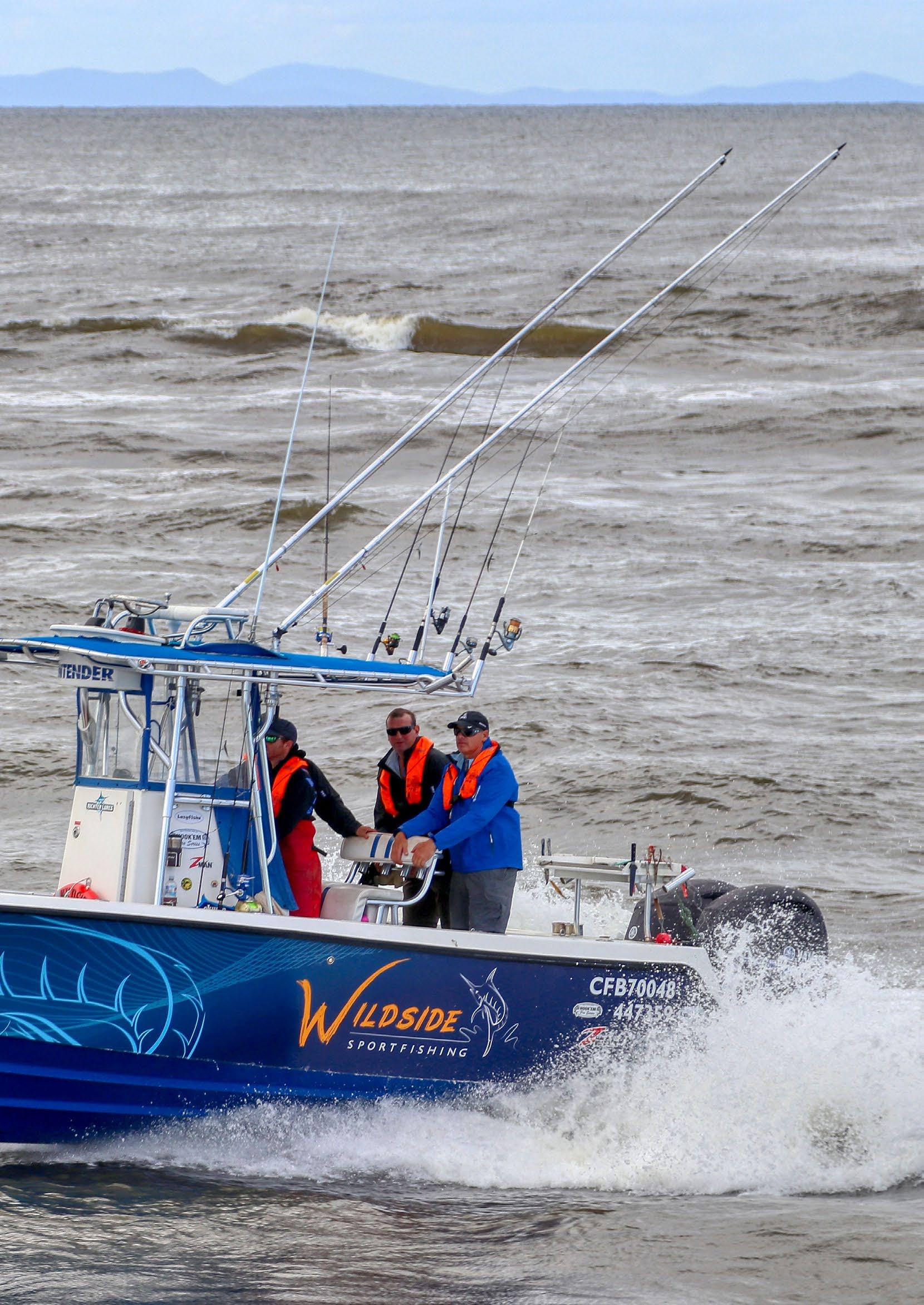
The variety of fishing availability means that customers are very rarely disappointed. As you leave the river mouth, there are always great opportunities right in front of the township and gaol, with extensive reefs attracting both the baitfish and the predators. In fact, South West Rocks is famous for the run of juvenile black marlin that congregate in surprisingly shallow water with the season peaking from December to February. There’s striped marlin in spring, early summer and blue marlin all year round. In fact, Jason has caught them in the middle of winter!
There’s plenty of other seasonal pelagics including Spanish mackerel, spotty mackerel (local snook), wahoo and a terrific array of tuna species including yellowfin, mack, longtail and “bait” species such as frigate and bonito. The dollies (mahi mahi) can be thick, especially during the warmer months and you just never know when a school of kingfish will erupt or a cobia with take you by surprise. The Continental Shelf is only 12 nautical miles from port so there’s good access to blue, black and striped marlin as well as all shark species including some XXOS tigers and mako’s but be warned that the EAC can run strong at times making deep dropping quite difficult.

Spanish, spotties and Wahoo make up just some of the razor gang at South West Rocks.
From January to May every year when the warm currents are at their peak, big fish come within casting distance of the rocks. Black marlin, longtail tuna, Spanish mackerel and cobia are the prize fish species with many anglers travelling for hours to get their chance. During the cooler months, large numbers of tailor, kingfish, drummer, bream and blackfish come in with cooler water. It’s safe to say that no matter what time of year there are quality fish on offer for shore-based anglers who don’t have the luxury of a boat.”
Both Jason and the majority of his clients prefer the offshore fishing, but they often fish the estuary on the way home to mix it up—especially if the weather turns nasty in the briny. There are extensive reefs to the north especially from Grassy Head to Nambucca and out to around 100 metres where you will find the melting pot of both northern and southern targets such as snapper, pearl perch, Venus tusk fish, bar cod, pigfish, morwong just to name a few
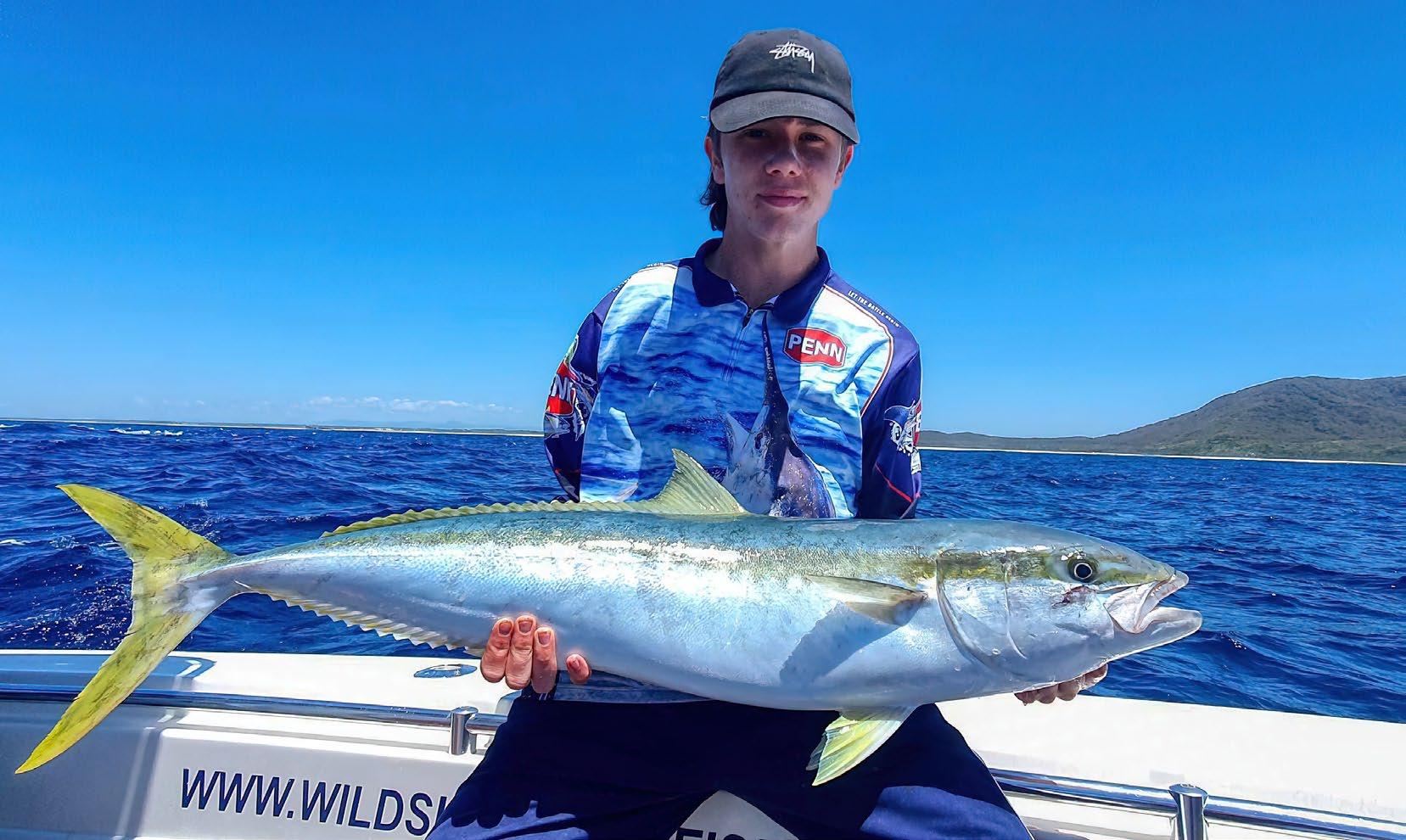
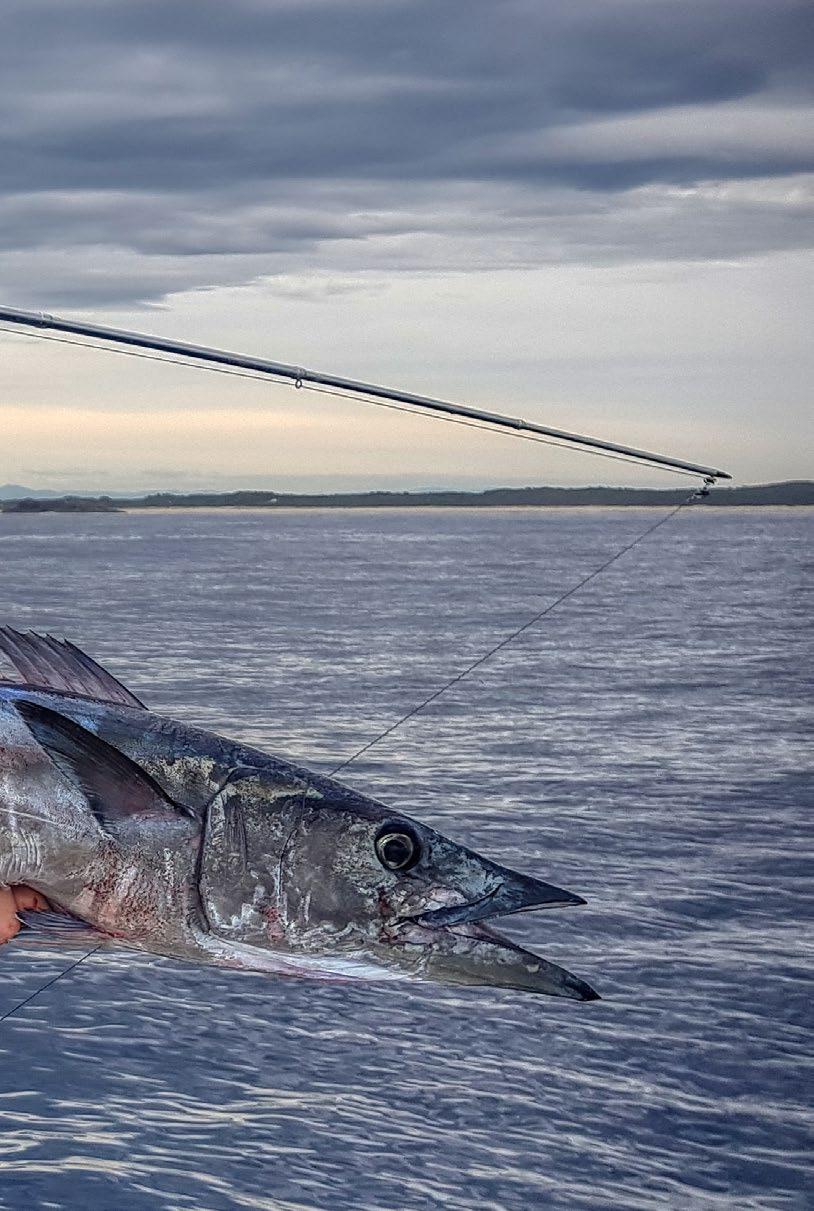
There’s nothing like a good tussle with a kingfish to blow out the cobwebs and stretch your arms.
and not to mention great populations of mulloway. Pearl Perch are one of the most highly prized table fish and can be caught year round commonly in deeper water from 50-100m in the warmer months, but then moving in to join the snapper in the shallow reef’s of Grassy and Scott’s Head in during winter. Jason is constantly amazed at how often he and his clients enjoy terrific snapper success on soft plastics whilst traditions bait fishers are left wanting, and it’s not often that customers return to port without their personal best in such species.
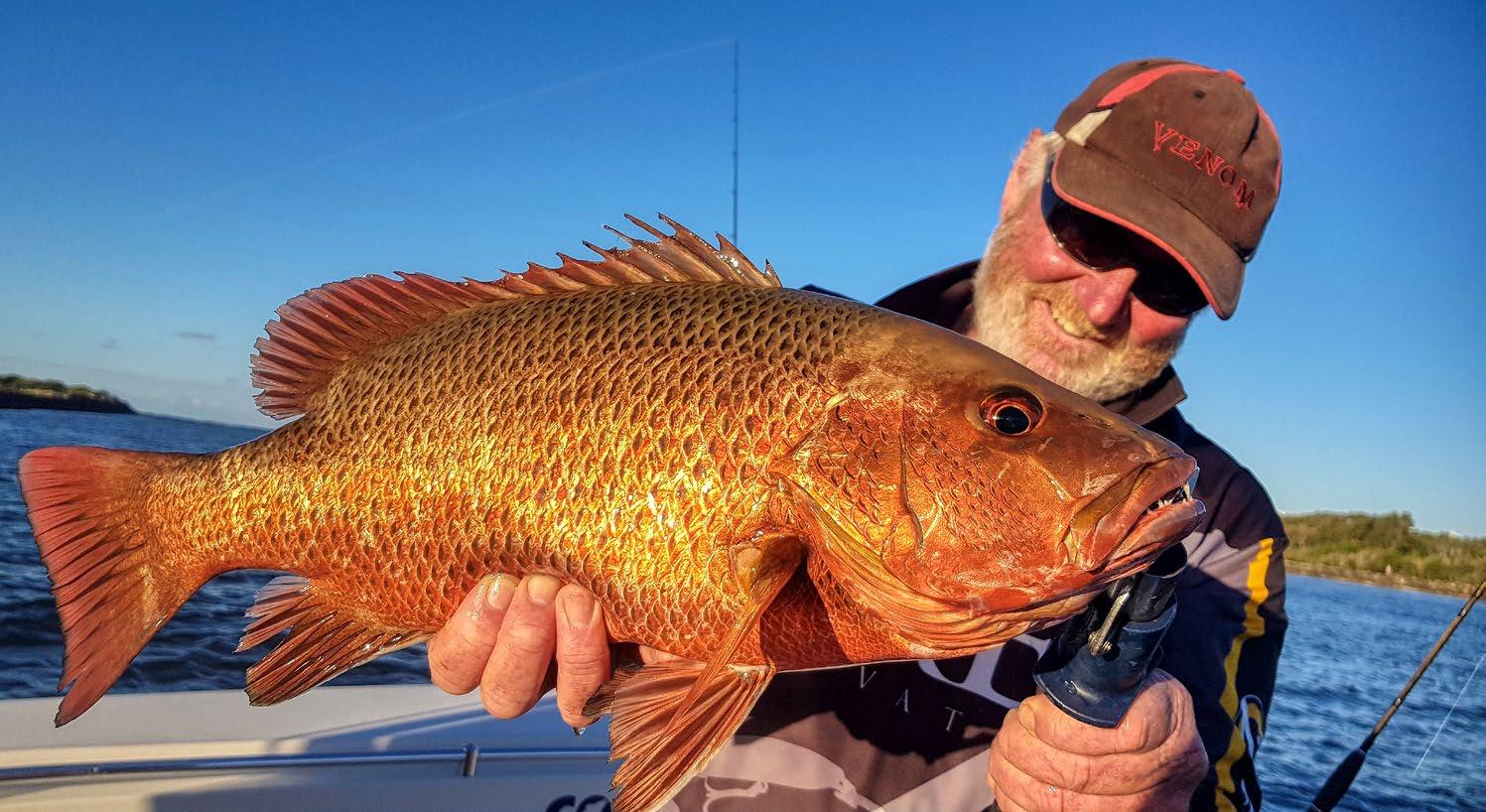

Jason says, “I believe the mulloway fishery is as consistent as can be anywhere, both inshore and offshore!” A brutal Mangrove Jack can either
All the beaches, rock walls and platforms around South West Rocks provide excellent land based opportunities. To quote Mitchell from the Outdoor Adventure store who gave us great local advice, “Land based fishing has a strong history here, particularly off Hat Head, where Ron Calcutt pioneered spinning for Spanish Mackerel of the rocks back in the 70s. Mitchell has even caught black marlin from under the gaol on a stand up paddle board!
Jason is constantly amazed at how often he and his clients enjoy terrific success on soft plastics.


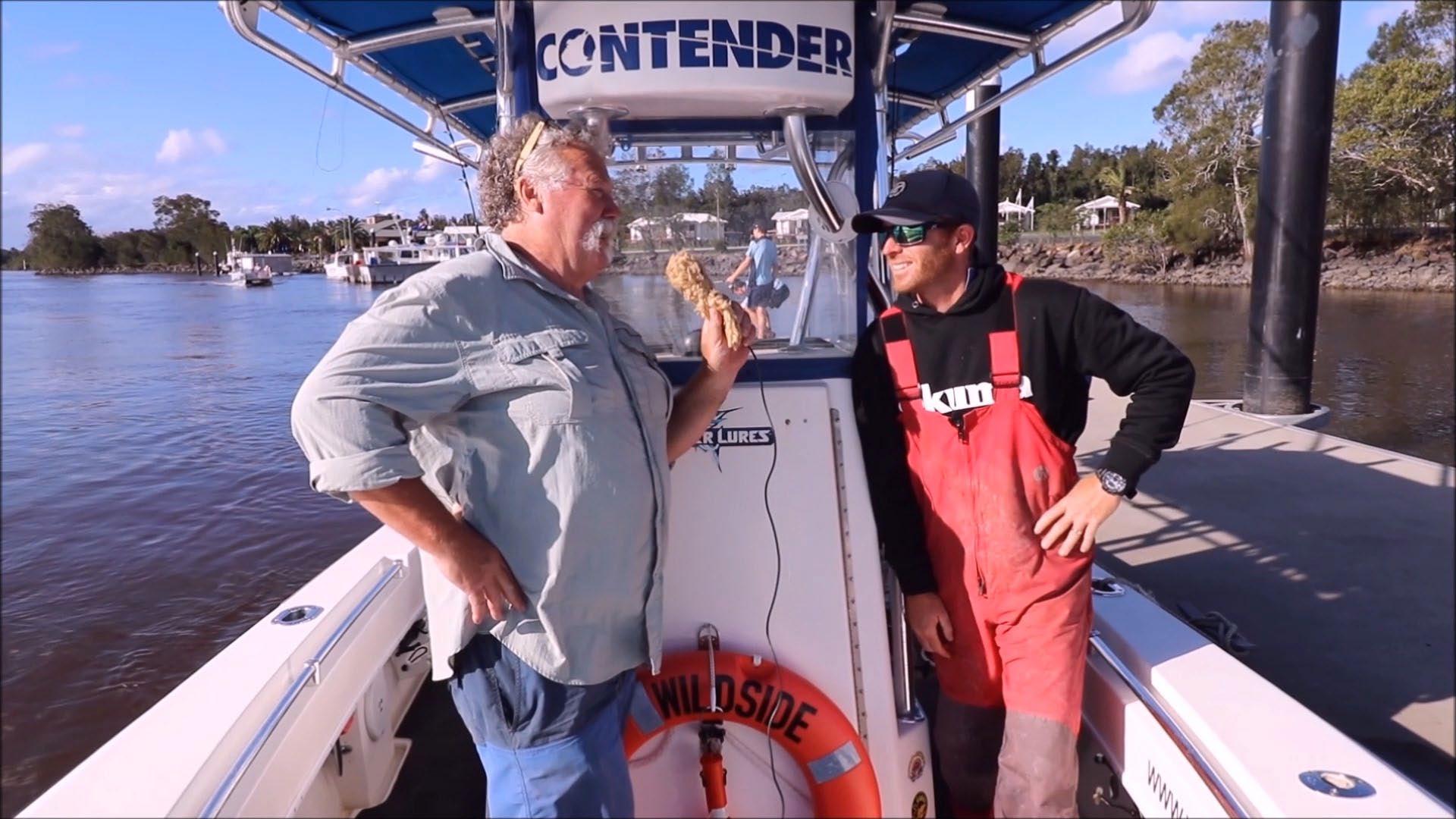
The extensive Macleay River has an enormous drainage basin reaching the New England Range as far back as Waltham and Armidale in the Northern Tablelands. The river descends 460 metres over its 298 kilometre length and after eventually joining with 26 tributaries, is said to be the second fastest flowing river in the world. The sea walls were completed in 1902, aiding the township establishment and forming terrific fishing platforms—but watch out for the sandflies. Its estuary targets include bream, whiting, mangrove jacks, flathead and there’s even tales of cobia and kingfish all the way upstream to Kempsey where it becomes bass waters. The Macleay River is most famous for its wonderful mulloway. Jason says, “I believe the mulloway fishery is as consistent as can be anywhere, both inshore and offshore! Don’t forget the mud and blue swimmer crabs either!”
Don’t let dirty water after extensive rainfall put you off as we have found some exceptional fishing with many species travelling down to the mouth and lower estuary where the clean ocean water flows underneath the muddy surface waters.
Jason likes to work closely with his clients and, in particular, their personal wish list and target species. He will work with the current climate and conditions to maximise your angling success from the river to the shelf.

Jason cut his teeth on Port Phillip Bay snapper but enjoys even greater success on the big reds mostly on lures at South West Rocks.

There are two professional diving charter outfits in the town. However, the South West Rocks Dive Centre provided us with professional and friendly information and spectacular images. The Dive Centre is owned and has been operated by the Hitchins family for the past 40 years, running dives to the world famous Fish Rock Cave every day. All dives are guided in small groups by expert dive leaders and all levels of experience are catered for. Fish Rock Cave is the longest ocean cave dive in Australia, running 125 metres right through Fish Rock, which lies two kilometres south-east of Smoky Cape. Fish Rock is home to a completely unique ecosystem and known to be the largest aggregation site for the endangered Grey Nurse Sharks on the East Coast of Australia. Divers regularly encounter 20–30 Grey Nurse sharks as well as an abundant variety of other species, including wobbegong sharks, turtles, rays and masses of temperate and tropical fish.
In recent years a major draw card for divers is the chance to see schooling scalloped hammerhead sharks. Between the months of October and January, there are regular sightings of more than one hundred hammerheads. South West Rocks Dive Centre operates 3 efficient purpose built dive vessels and a fully stocked retail centre plus on-site accommodation offering both dorm style and private rooms.
South West Rocks lies at the end of a long stretch of beach running around 15km south from Grassy Head and slowly turning eastward before the Macleay river mouth to form one of the few north facing bays on our east coast. The headland with its small bays and rocky outcrops forms picture postcard coastal perfection.
The Horseshoe Bay Holiday Park is in prime position on the headland right next to the small Back Creek waterway with historic maritime buildings overlooking from the hilltops. The main beach is quite sheltered and particularly inviting, where swimmers and holiday makers flock to frolic in the warm temperate waters.
The big reliable Yammies provide plenty of grunt for the fully loaded Contender Tournament returning through some quiet water on the bar at “The Rocks”.

The gardens around the bay and Monument Point are full of giant figs and Norfolk Island pines, many of which would have been planted as replacement masts in those romantic days of tall ships. The parkland is dotted with unique, hand carved nautical furniture, kiosk, surf lifesaving club, the Trial Bay Marine Rescue Station and some ripper coastal boardwalks. Immediately opposite is the Seabreeze Beach Hotel and accommodation where you must stop in for a quiet drink or meal overlooking the majestic scenery. The township unfolds behind the pub with a terrific range of services, including restaurants and takeaways, boutiques, home wares and ice creamery, all satisfying all your senses with some retail therapy to boot.
The wide sandy bay stretches eastward to the Arakoon National Park and Laggers Point with its stunning headland and Trial Bay Camp Ground on the protected foreshore. Nearby, the historic Trial Bay Gaol is perched high on the headland serving as a monument to our convict heritage. The gaol was originally built between 1877 and 1886 to house “good conduct” prisoners sent to help construct the 1.6 km Macleay River breakwater and safe harbour access. The buildings are in surprisingly good condition and are open for inspection daily.
Further south around the headland, past the beautiful Little Bay and Gap Beach on the northern boundary of the Hat Head National Park, is the iconic Smoky Cape Lighthouse, a true monument to our nautical history. The magnificent coastal structure was first noted by James Cook when he named the headland as “Smoky Cape,” due to the plumes of smoke generated by large bushfires as he passed. One can’t help but wonder if their cause was natural or lit by the local Dunghutti (Thaingutti) nation. South West Rocks’ Monument Point was a place of gathering and ceremony for the Dunghutti, Gumbaynggir and Biripi nations.
The lighthouse lookout looks over the South Smoky Beach, a long, wide and very inviting stretch of glistening white sands reaching all the way to Hat Head, a destination worthy of its own trailer trip. Take a 4WD and beach rod to find a gutter full of whiting, bream, tailor and the occasional mulloway!
find plenty of accommodation options to suit all tastes and budgets, from beachside campgrounds and holiday parks to a lovingly renovated guest house, AirBNBs, holiday houses and units, hotel and motels. There are campgrounds where you can pitch a tent or park your camper trailer, caravan or boat in both Arakoon and Hat Head National Park.
there are no excuses to not plan a trip to the absolute fisherman’s paradise at South West Rocks. There are plenty of activities for the whole family and we are heading into that wonderful Summer/Autumn period where much of the fishing activity peaks with a huge variety of species. Don’t forget to give Jason a call and book your own personalised trip for some of the best sportsfishing action in Australia—with a damn good bloke to boot!

Old school boat of the year
The first contender for the Deadrise Old School Boat of the Year Awards - Caribbean 26 saloon and pod transformation.

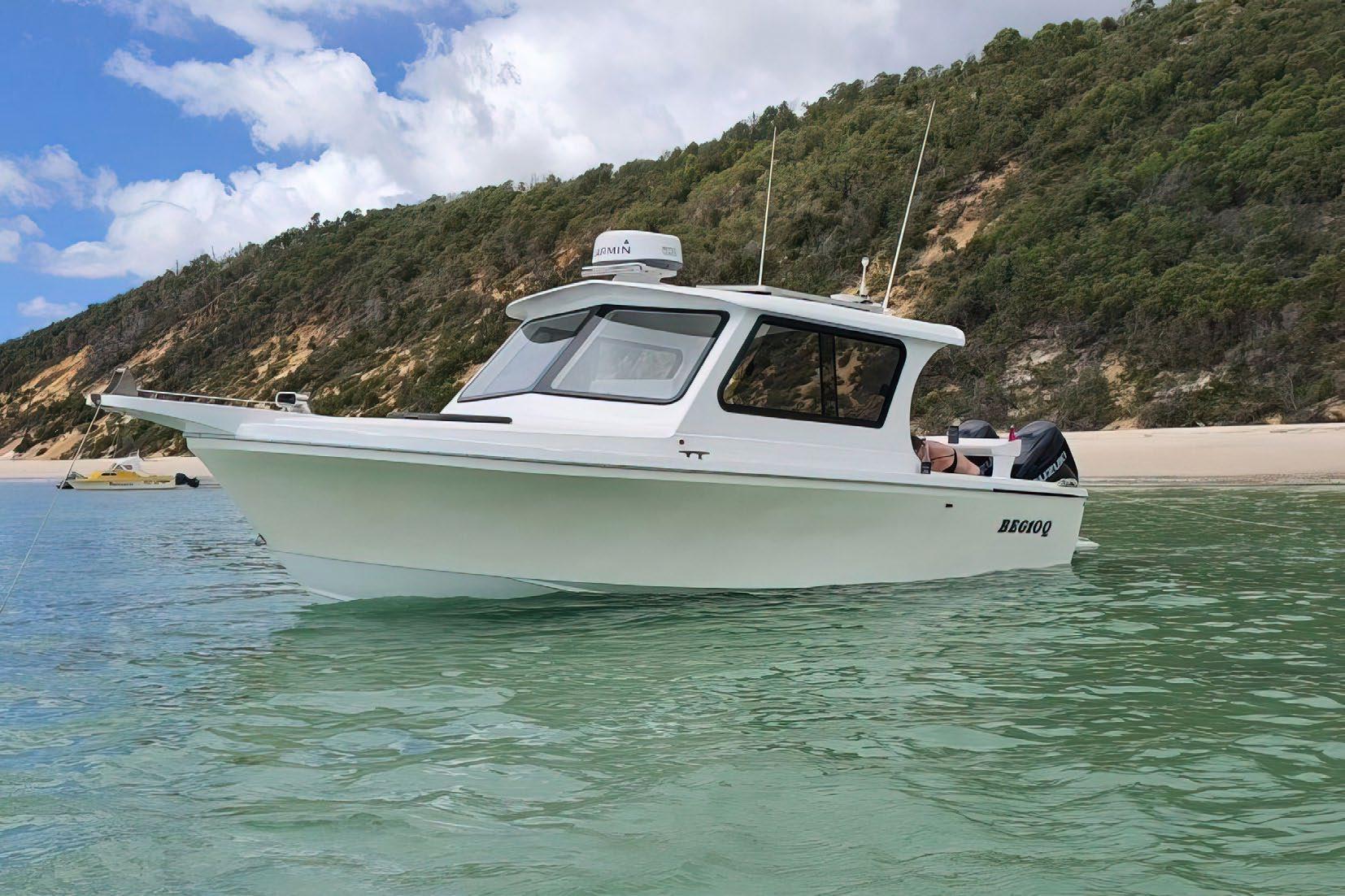
I guess by now nearly every boaty in Australia, and possibly the world, recognised the significance of the 25/26 “Berty”! The original hull was designed and built during the heady era of the American offshore racing circuit during the 1950s and 60s soon after the introduction of fibreglass boatbuilding.
WOW – what a difference from the traditional Berty. We just love the cool saloon styling!
Like it or not, wars promote ingenuity, discovery and development during times of extreme hardship and fibreglass was a product of World War 2 technology. Just as every cloud has a silver lining, WW2 was followed by an amazing period of growth and prosperity that was exemplified by the developments of recreational boating.
Powerboat and sailing legend Richard Bertram joined forces with premier naval architect C. Raymond Hunt to develop the Bertram Boats DNA firstly proven in the rugged Miami-Nassau ocean race with their prototype 30 and then 31’ “Moppie’s,” and soon developing a greater range including the very popular 25’ hull.
The classic C. Raymond Hunt DNA pours out of the hull to combine with a very well designed and constructed saloon.

Their immediate success was recognised by Archie Spooner from Melbourne (Vic) who had recently started their boat building enterprise, International Marine. Archie travelled to America and officially gained the rights to produce Bertram boats under licence in Australia. The brand had previously been produced by the Haines brothers who originally manufactured Bertram’s for the Queensland Pastoral Company that imported Bertram boats to Australia through other sources. However, a deal was struck with the Haines boys who were keen on developing their own brand to capitalise on their own racing successes. Hence Haines Hunter was formed.
Incidentally, Spooner not only returned with the rights to Bertram, but he also gained the distribution of Mercury products throughout the country. Success of both products was immediate, and the range developed quickly in Australia, but always retaining the Hunt/Bertram bloodlines.
Most early International Marine Bertram 25’s utilised the original inline 4 and 6 cylinder twin stern drives. However, in the late 1980s Mercury developed the V6 Mercruiser, creating a far more efficient engine. The added width of these V6’s demanded the widening of the 25’ hull, which was remodelled to become the 26 Caribbean in 1989. The licensing agreement with Bertram also concluded, hence all models carried the Caribbean name. Caribbean also manufactured Pride Sports Boats and Columbia Yachts.
Both the 25’ and 26’ models are worthy seafarers that have been produced in variants including runabout, hardtop saloon, the Fly Bridge Sports Fisherman (FBSF) and the fully enclosed Fly Bridge Cruiser (FBC) that often featured a single MerCruiser or Volvo V8 diesel sterndrive.
Their seafaring qualities and practical internal designs have wide appeal to a very wide range of boaties, from dedicated game fishers to sweetwater cruisers with some hulls even making their way to highly successful Police and commercial applications.

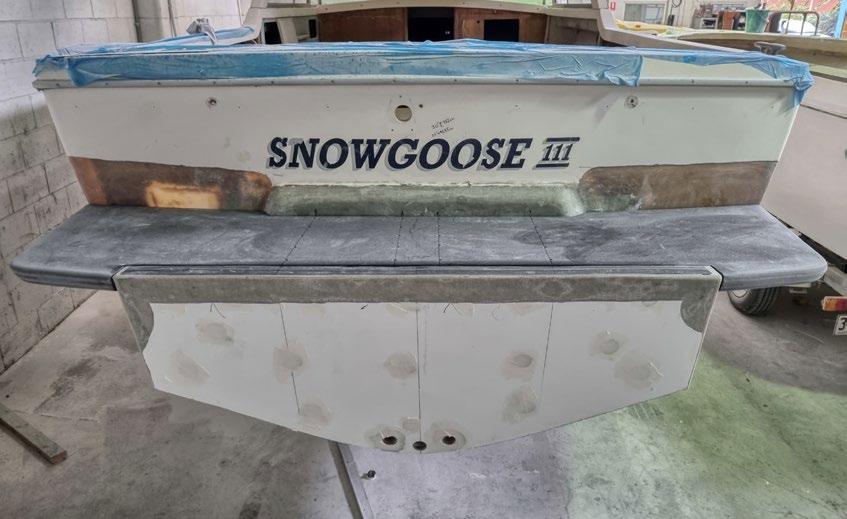
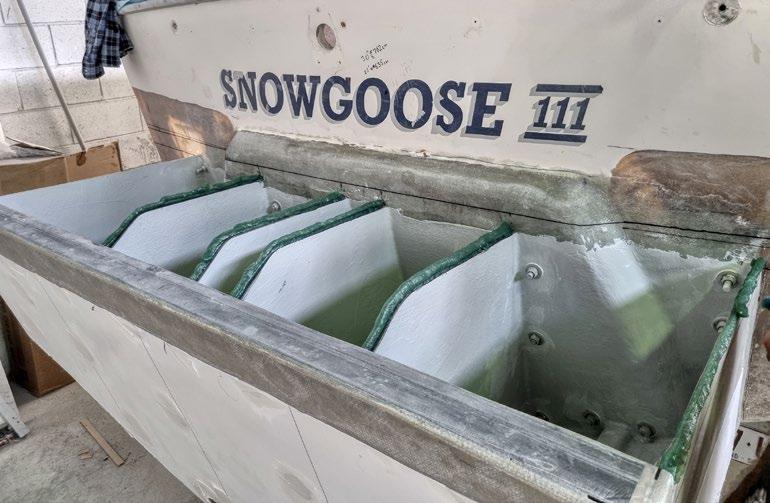

They make exceptional targets for the “Old School” brigade, especially those that are prepared to modernise with the latest ergonomics, trends and materials.
Mitch took out the old sterndrive and replaced the old Berty with a new outboard pod. Notice the keel line is extended to the back of the pod and it’s almost full beam as well. It allows the handling of a larger boat with plenty of lift to get the big hull on the plane –plus stability and buoyancy at rest.
A reconstruction such as this requires a great degree of foresight and ability. This is world-class fibreglass construction and restoration at its best, both above and below decks.
This season’s hot contender for “Deadrise Old School Boat of the Year” is a very professional and innovative transformation of a 26’ FBSF from Mitch Quixey of Moreton Bay Marine Services.
The inspiration and application of this rebuild are truly an inspiring work of nautical genius that modernised this great hull with the latest seafaring trends and developments into an alluring masterpiece.
Thankfully 26’ Caribbeans are built with an infinite fibreglass stringer system and fuel tank and hence whilst much of the internal structure was remodelled its skeleton and outer shell remained intact.
Whilst the original craft was in fact a flybridge sports fisher, the entire top was removed and the saloon roof cut and extended by 800mm to form a very practical enclosed hard top with radar/ navigation mount. Whilst many love the old flybridge, particularly those offshore fishers who utilise the elevated vantage point for spotting schools of fish, they are quite difficult to access, restricted in size and comfort, have very little dashboard space for large multi-function electronics and provide the perhaps the worst ride in the boat with increased centre of gravity.
The enclosed saloon styling is simply brilliant. It has rocketed the tired old design into the modern age with looks, usability and practicality that is just as well suited to the sunshine of the north to the Antarctic blasts of the deep south.
Virtually the entire boat was gutted, including the original V6 Mercruiser’s, although the large lockable V-berth was left intact and re-trimmed. The entire transom was completely rebuild plugging the stern drive holes and replacing with a
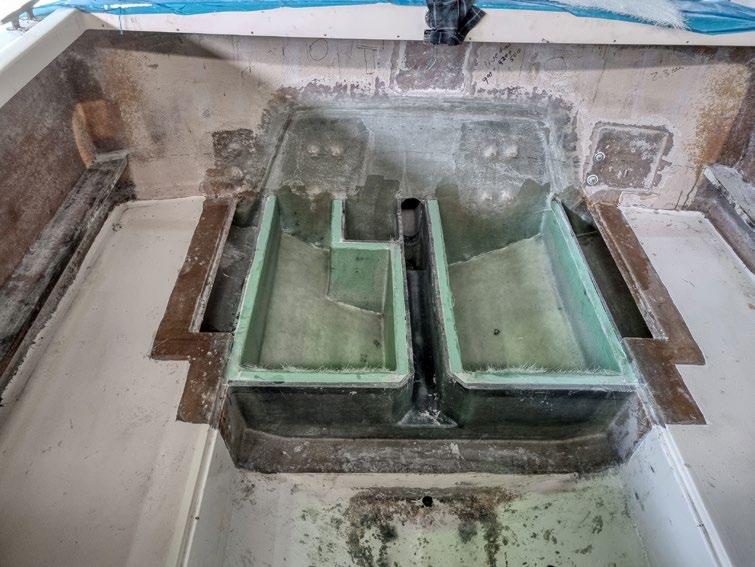


The internals were refashioned to include a molded live bait tank, plenty of enclosed storage and even a ripper cutting board for the workstation. The long bench seating on the port side is a great idea.



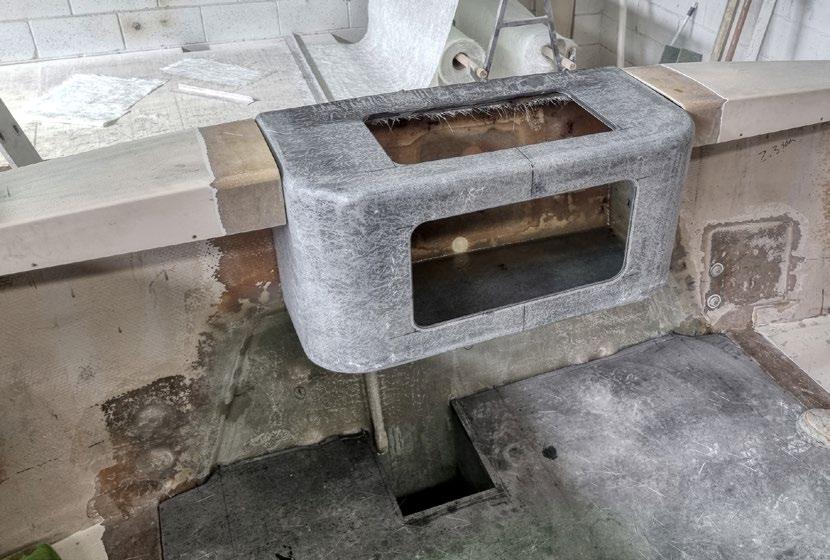
Such an old design becomes a modern boating masterpiece.
dual outboard pod of their own design and construction. There’s no step to the pod, thus extending the entire hull length and beam up nearly to the chines, giving tremendous buoyancy. The very solid construction is a combination of fibreglass and Thermo-lite and extends the function of the package by providing a full width rear platform on the half tilt module to mount a wicked pair of Suzuki 300HP 4.028 litre V6 4-stroke engines. In its first trial run, she produced a whopping 52 knots WOT loaded!
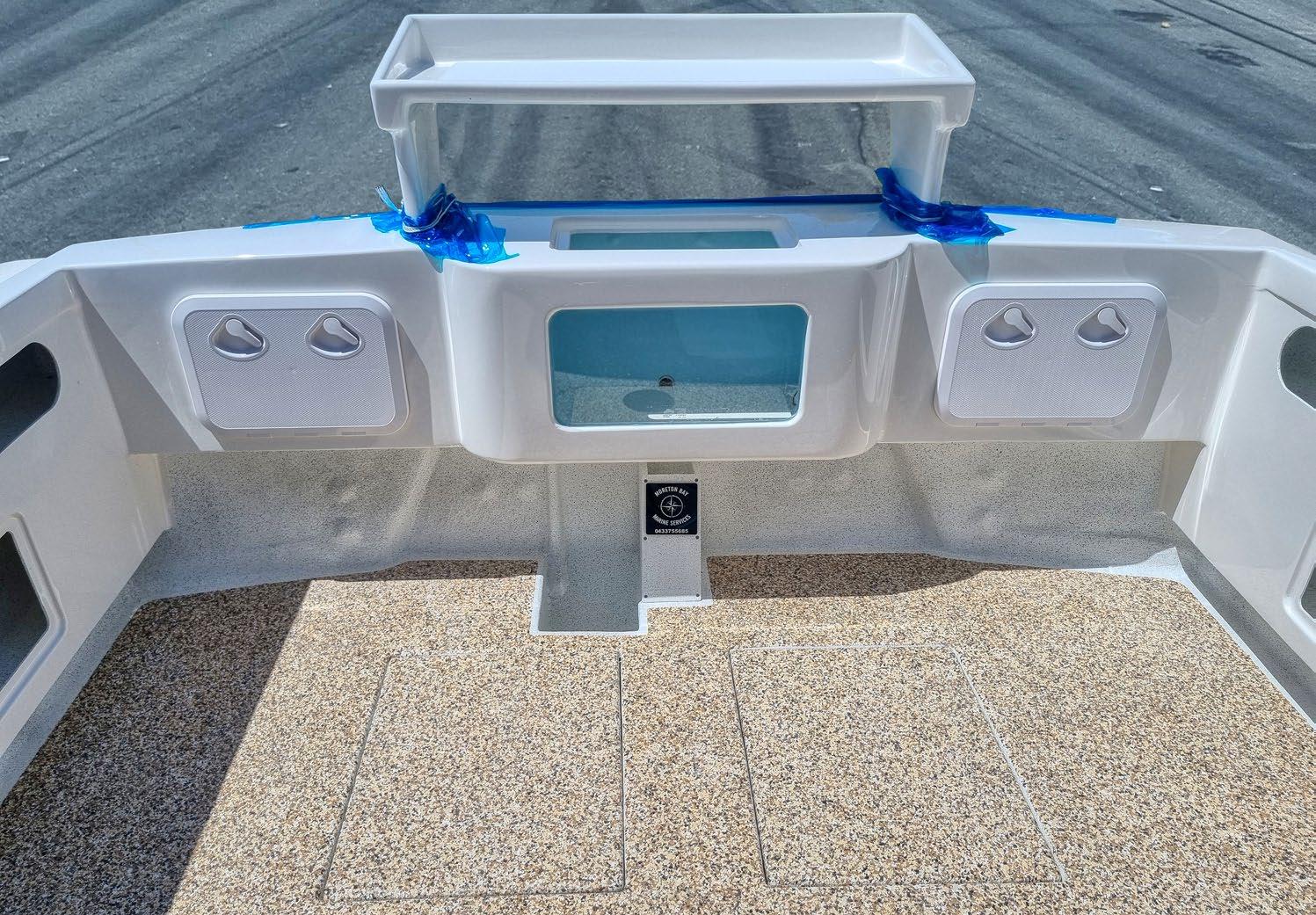
Many floor sections were replaced and now include a pair of underfloor ice boxes, wiring corridor, extra fuel and water capacity and in-hull transducer mount. The side pockets were completely rebuilt to include storage and rod lockers and the new internal transom includes a fully moulded live bait tank, raised and enclosed battery boxes and a functional cutting board above.
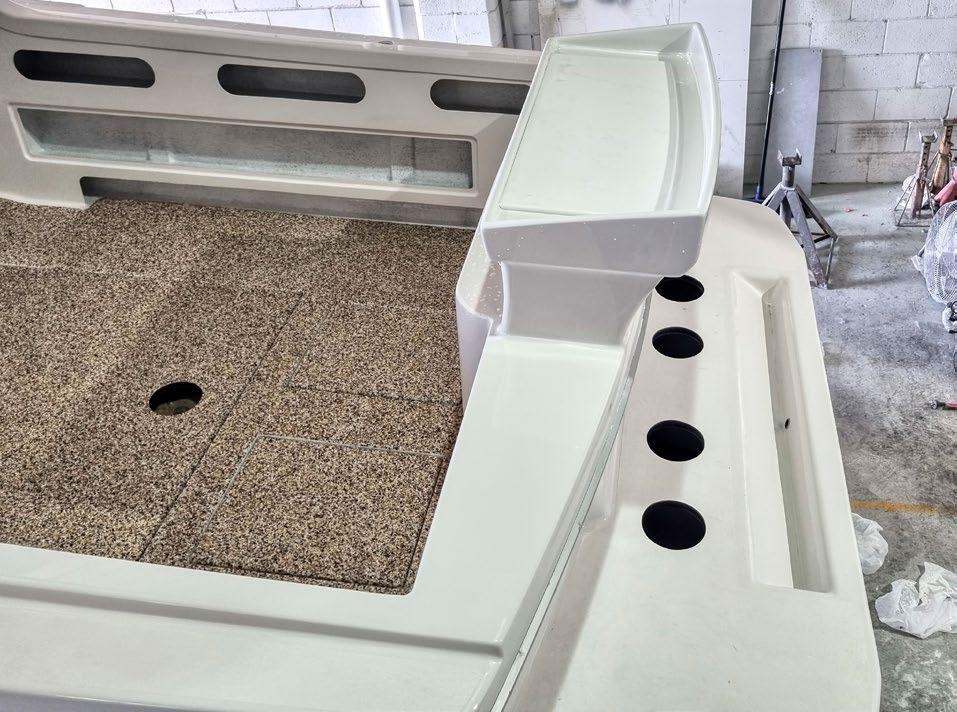
Lifting the roof to form the big saloon plus a complete stand-alone console for steering, power control and instruments was pure genius.
I just love what Mitch and his team did to the internal saloon. They formed a long north-south lounge to the port side with endless storage capability and then manufactured a complete helmsman’s console that is set amidships, creating a very complete and comfortable travelling, command and cruising space. The new console has tonnes of room for the large array of gauges, a pair of 16 inch Garmin multifunction units, side mounted binnacle controls, VHF radio, entertainment system and a customised switch panel strip including the original Bertram eagle logo.
The original Berty saloon roof was lengthened and strengthened to form the new enclosed hard-top.
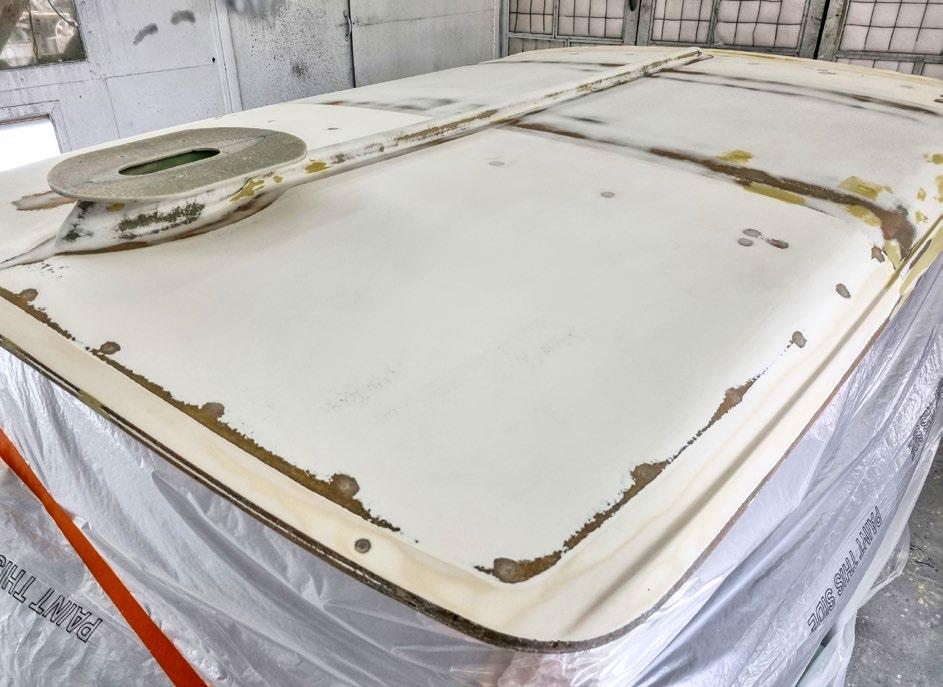


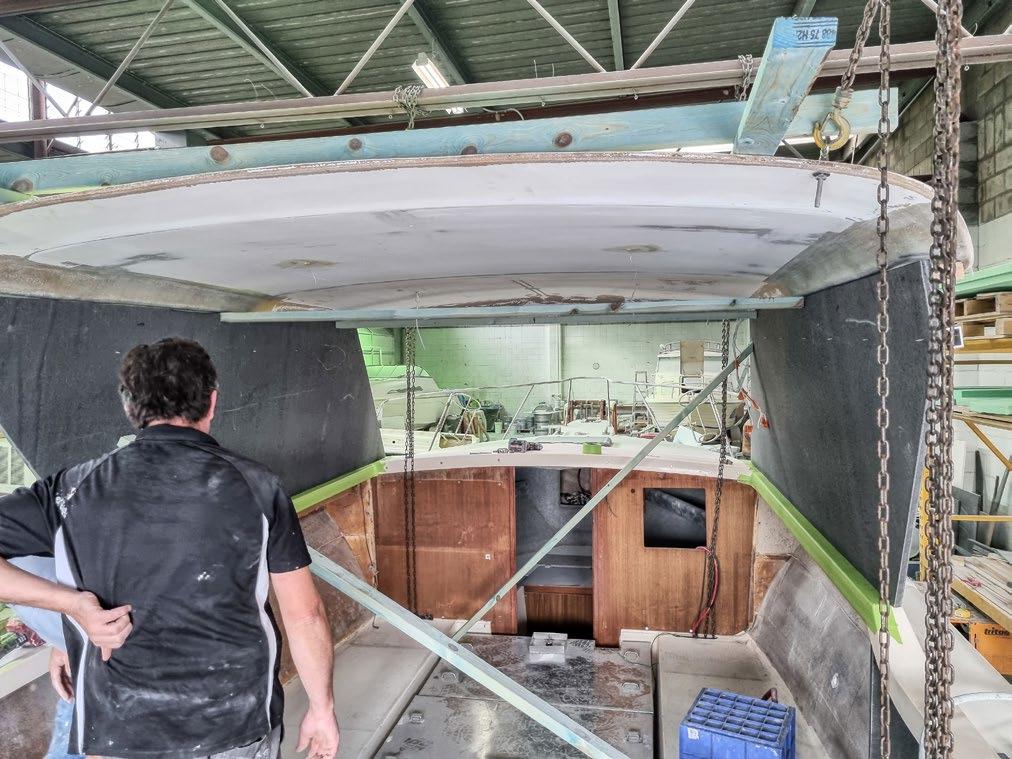
WOW, just WOW – the big new saloon just prior to fit-out – what a difference!
On the road, one the water, it doesn’t matter – this is one hell of a great looking boat!

The saloon is a rather tall structure reflecting the height of many users and features exceptionally good vision through the large two-piece windscreen and sliding side windows.

Externally, the undersides were sand blasted free of antifoul and the complete unit refinished, completing the appearance of a brand new rig. The package is now mobile with the addition of a Transtyle tri-axle aluminium trailer (over-size load).
I am pleased to nominate this wonderful refit, remodel, and restoration as the first contender for the Deadrise “Old School Boat of the Year Award!” What’s yours?
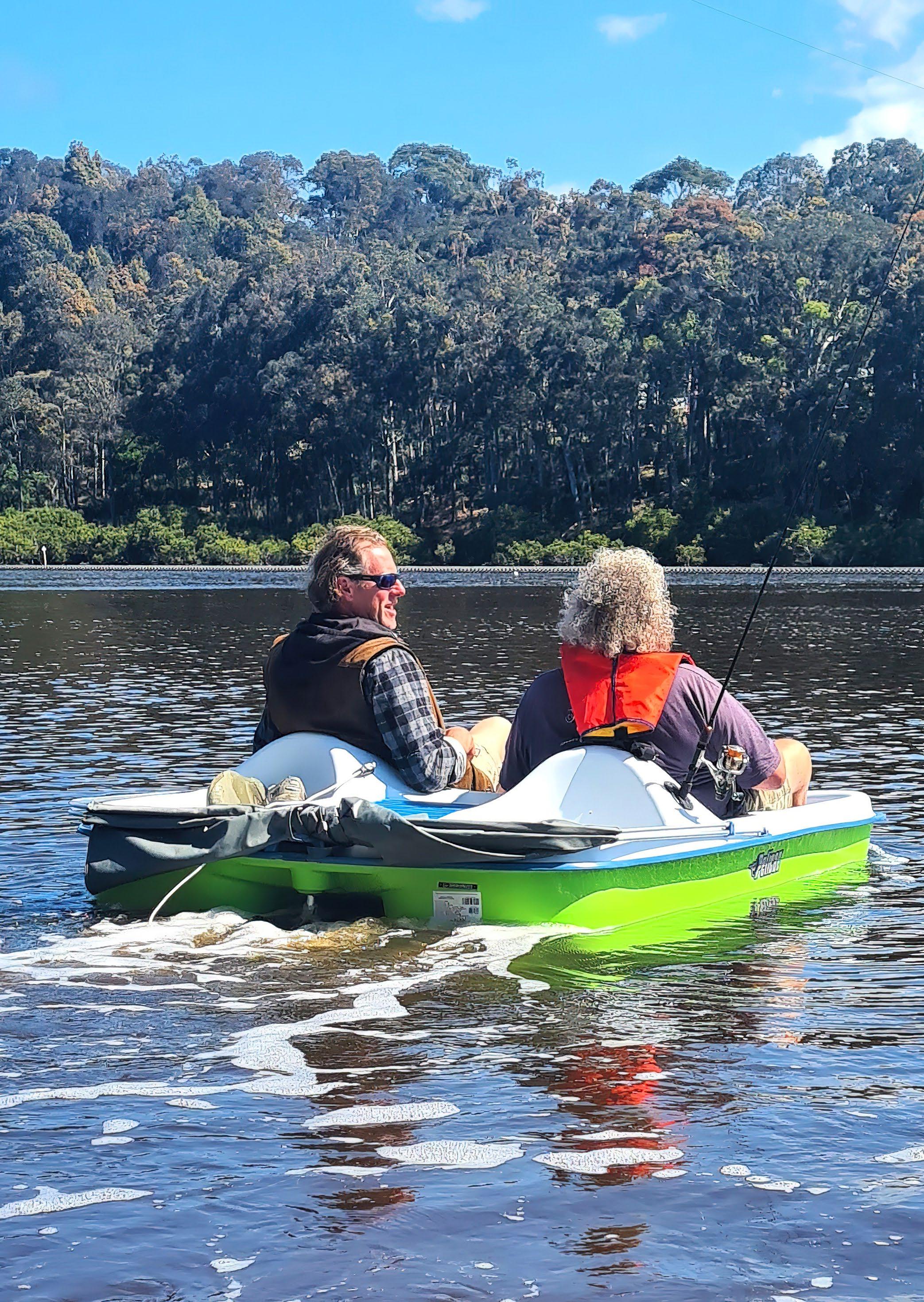
Well here goes the silly ol’ Bear again with another hair brained idea–or is it? I have recently rekindled my love of sweetwater fishing since a sea change to the beautiful NSW south coast. There are just so many little lakes, rivers, estuaries and hidden backwaters to explore, and some with very little access. My little old 3.5m Savage Jabiru has been taking a beating, but the lure of kayak fishing also found great appeal.

A steep drop over the lake edge and then oyster encrusted mud flats were no match for a boat ramp made from PVC stormwater pipes.
For those that have followed my extensive marine and RV career, most will agree that we’ve had plenty of laughs both with me and at me. I have had the good fortune to drive or ride a vast array of aquatic vehicles from virtual bathtubs to some of the largest luxury cruisers and enjoyed just about every one of them.
Yet throughout all this indulgence I have never lost my roots. I was raised on fishing in rivers, lakes and impoundments. I always enjoy sojourns to quiet backwaters and saltwater estuaries, and now, at over 60 years of age, I still thrive on the lure of sweetwater adventure.
The trusty old tinny still has its original 1991 model 15HP Johnson 2-banger, but it’s got electric start so its staying with me, plus I’ve always had a dedicated kayak, canoe or paddle board of some variation for launching where there is no vehicular access.
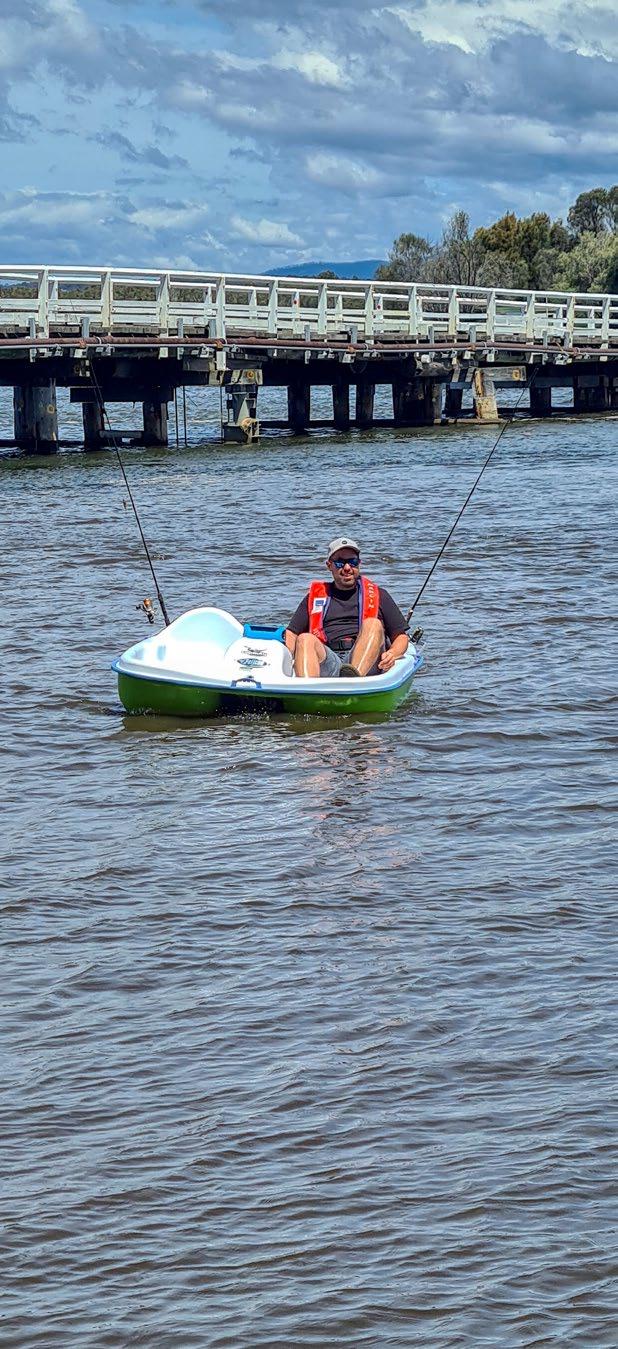

Today, plastic kayaks in both paddle and peddle power are enormously popular. However, while I have enjoyed some excellent excursions, I always felt the frustrations of relative instability as well as juggling fishing rods, fish and tackle at the same time as casting and paddling, a fact made worse in any current or breeze. Peddle power looked great, but being a big bloke, I still had problems with getting in and out, as well as the fact they really need their own cart or trailer for mobility, so the $$$ added up as did the added hassle.
Alex King takes a little time away from his Caribbean to have a ball in Bears new little toy.
A feisty little tailor breaks the surface on the Bermagui River.

When I think back to my childhood, I remember the joy of paddling side by side with my loved ones in a hired peddle powered duck or swan on a local lake. So, to find a plastic, side by side dual paddle boat that has moulded seating for four people (the back two seats are only big enough for kids), 350kg carrying capacity and only weighs 50kg was certainly worth a try.
I am pleased to report that the Pelican Monaco DLX Angler pedal boat has already delivered five times its value in fun!
They make these terrific little craft in Canada and feature adjustable backrests, built-in cooler (fish box), lightweight bimini canopy, recessed refreshment holders and two flush mount rod holders plus I took up the option of snug fitting waterproof cover.
I removed the adjustable backrests for the driver and passenger immediately to maximise the length of the seating position. It’s very comfy but still just a little short for tall fishos. I ordered an optional stainless steel crankshaft as most of my usage is in saltwater and was pleased to see it sits perfectly on the top of my 7x5 trailer.
The patented RAM-X plastic construction is said to have high impact resistance, however, its strong but lightweight wall thickness needs some added reinforcing when fitting extras such as the transducer bracket
for my Garmin Striker Vivid 5 depth sounder/GPS. This low-cost unit is ideal and has already found me many fish with the GPS steering me back to the hotspot on return trips. The screen clarity, visual definition and simple menu system supply an amazingly clear representation of what is lurking beneath, and has easily identified schools of tailor and bream as well as likely flathead and mulloway hideouts. My friend has one in his Port Phillip snapper boat and the results are astronomical, especially considering the low-cost retailing under $500.00.
The addition of a Fusion StereoActive waterproof Bluetooth speaker has provided a very pleasurable addition to the fun, and I am looking forward to long lazy days of summer boogieing around with the kids on board.
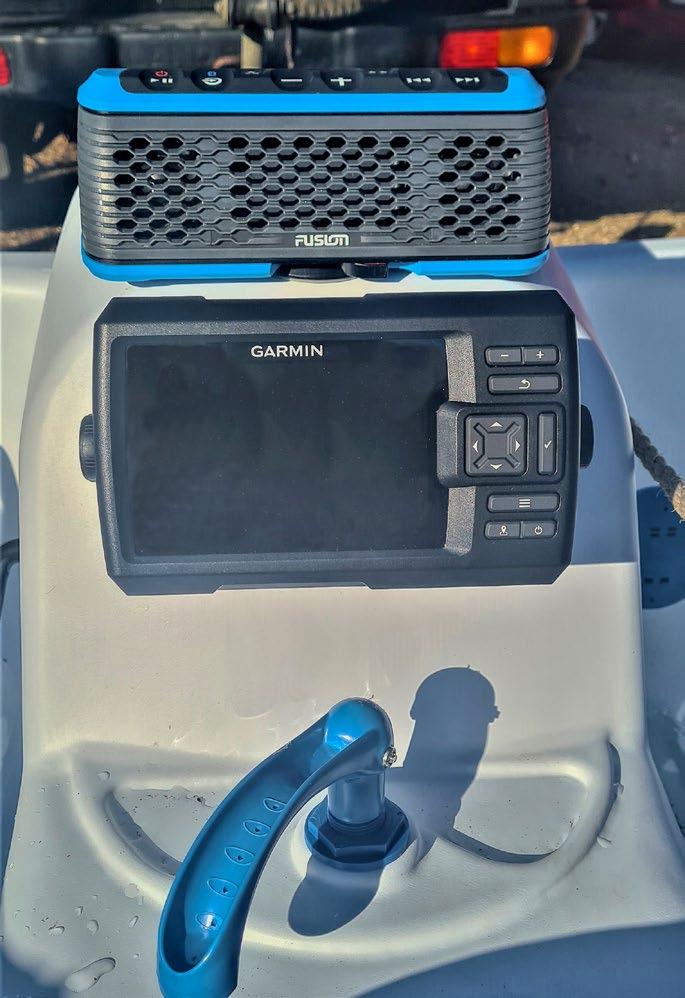


Angling purists may criticise the splashing sound of the paddles, but you can minimise the noise when slowly approaching the target area. Propulsion is reasonably good and so too is the rudder steerage, yet it’s all fairly lightweight, so a little care should be taken. We did struggle a little when I launched into a local tidal estuary with a strong crosswind, so it really must be considered a
The Garmin Striker Vivid 5 depth sounder/GPS and the Fusion Stereo
Bear and Ben had a ball in the Pelican Monaco – not a lot of freeboard though with Bear on board!!
still water machine. It’s not self-draining, so any water that comes aboard will stay in the boat, but it is surprisingly buoyant for a hollow plastic 2.3 metre hull.

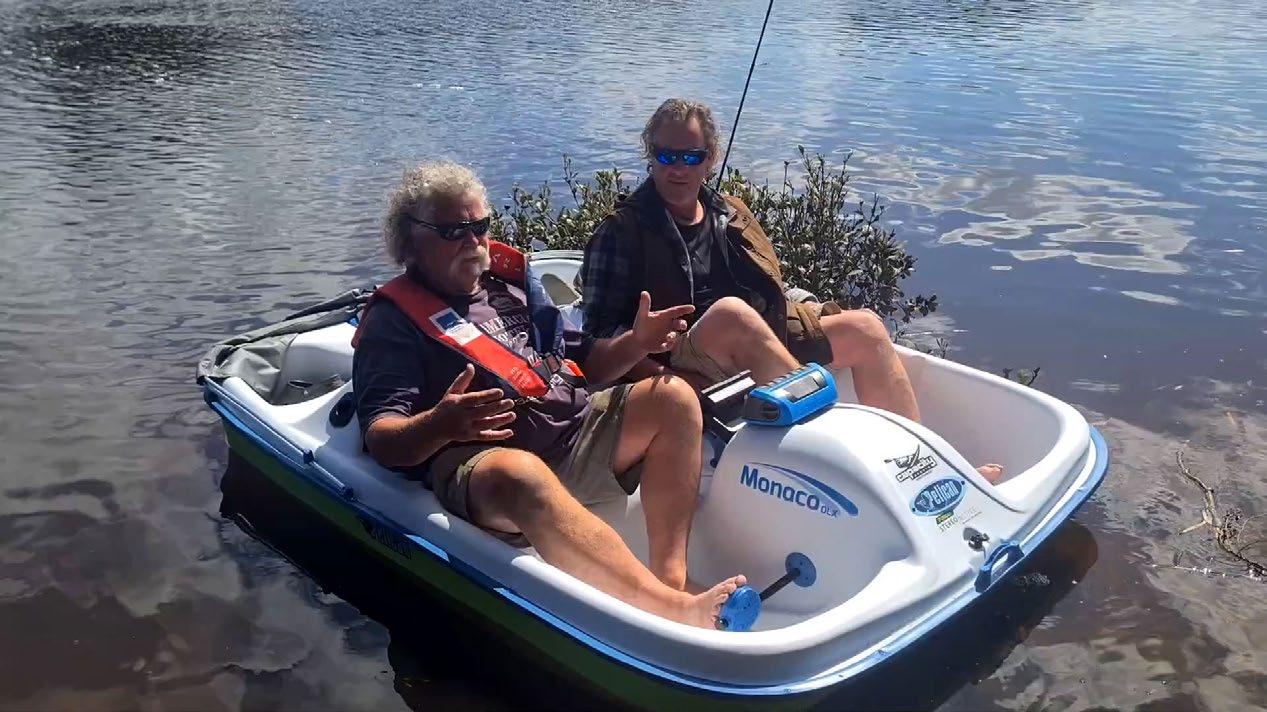
My next addition will be a small electric outboard and more customised fishing rod holders, but for now I’m just having a load of fun and catching plenty of fish - comfortably and economically. If you happen to see me growing old disgracefully on a south coast estuary, enjoy the laugh on me — but remember, I’m having the last laugh!


Nothing says I love you more to a potential lover than wrestling them into submission and putting them in a vice-like head lock. Well, that’s the modus operandi of the Southern Dumpling Squid anyway.

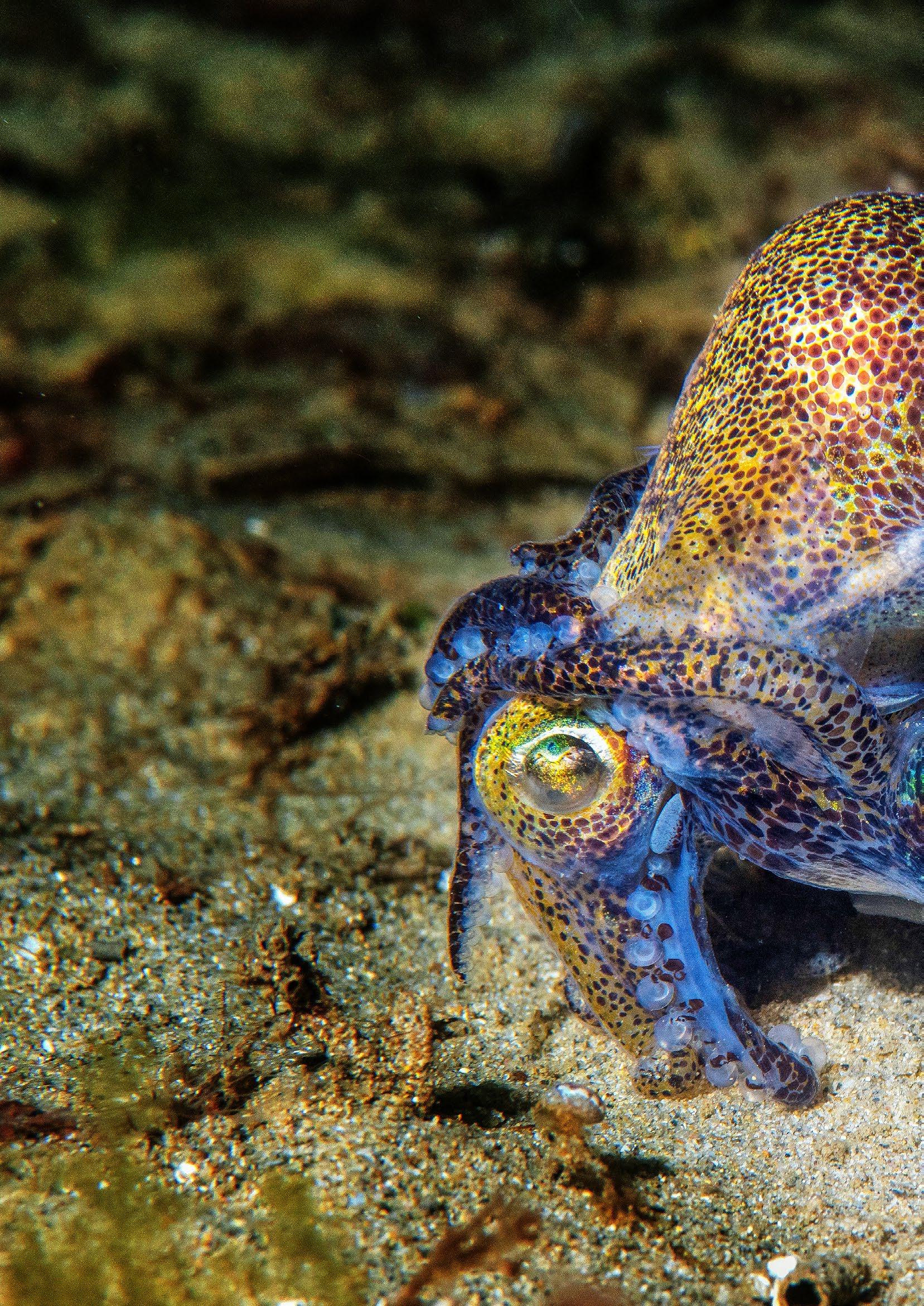
He’ll use his suckered arms to grab onto the female from behind and secure the deal by lovingly giving her sperm packets. Every girls dreams really.
It’s his way of saying ‘I think you’re cute will you father my babies?’. And let’s be real, who could resist a guy that has adorable little fins on the side of his body, harnesses bacteria to use as an invisibility cloak and can ‘fart’ ink as a decoy.
What’s even more impressive is that he can keep these shenanigans up for 3 hours.
After their marathon making out session scientists have found that both the male and female squids abilities to swim are impaired and they need to retreat into the sand to hide from predators while they recover.

While their sex sessions are impressively long, their size (7cm) and lifespan are small (5-8months). So by the time they hit maturity there’s not a lot of time left for them to find a mate, do the deed and spread their seed. After all apparently that’s what we’re all here for and dumpling squid are no exception (although side note… I didn’t get the memo).
While the males approach to doing the ‘no pants dance’ may seem a tad aggressive it makes sense. Keeping your lover in a head lock for hours on end increases your chance of fatherhood, especially when she’s known to sleep around (true story and no judgment here) and scientists have found that the female will use the sperm from the last male she mated with first.
So unlike most scenarios it actually pays to be last in line…. and I’ll leave it there.
Thanks to my dive buddy Steven Kuiter for pointing out these two lovers as I was about to swim over them. It makes my heart and fins sing however I’m sure filming this type of behaviour is illegal somewhere…

John Willis caught up with Queensland’s Luke Batten who has done a magnificent restoration and refit of an original 1975 V19C. In his own words, the boat has “completely exceeded his expectations!’
The Haines Hunter V17 is undoubtably one of the finest hulls ever developed from anywhere in the world. Its early DNA was evolved by the Haines Brothers from original Bertram designs, and the original reverse chine hull was later updated with the advent of the most popular V17L.
The Haines family always called the V17L the “Executive” model as times were tough and John Haines pulled the entire family of their “shiny arses” (Quote Garry Haines) to build the futuristic new shape that in reality saved the company.
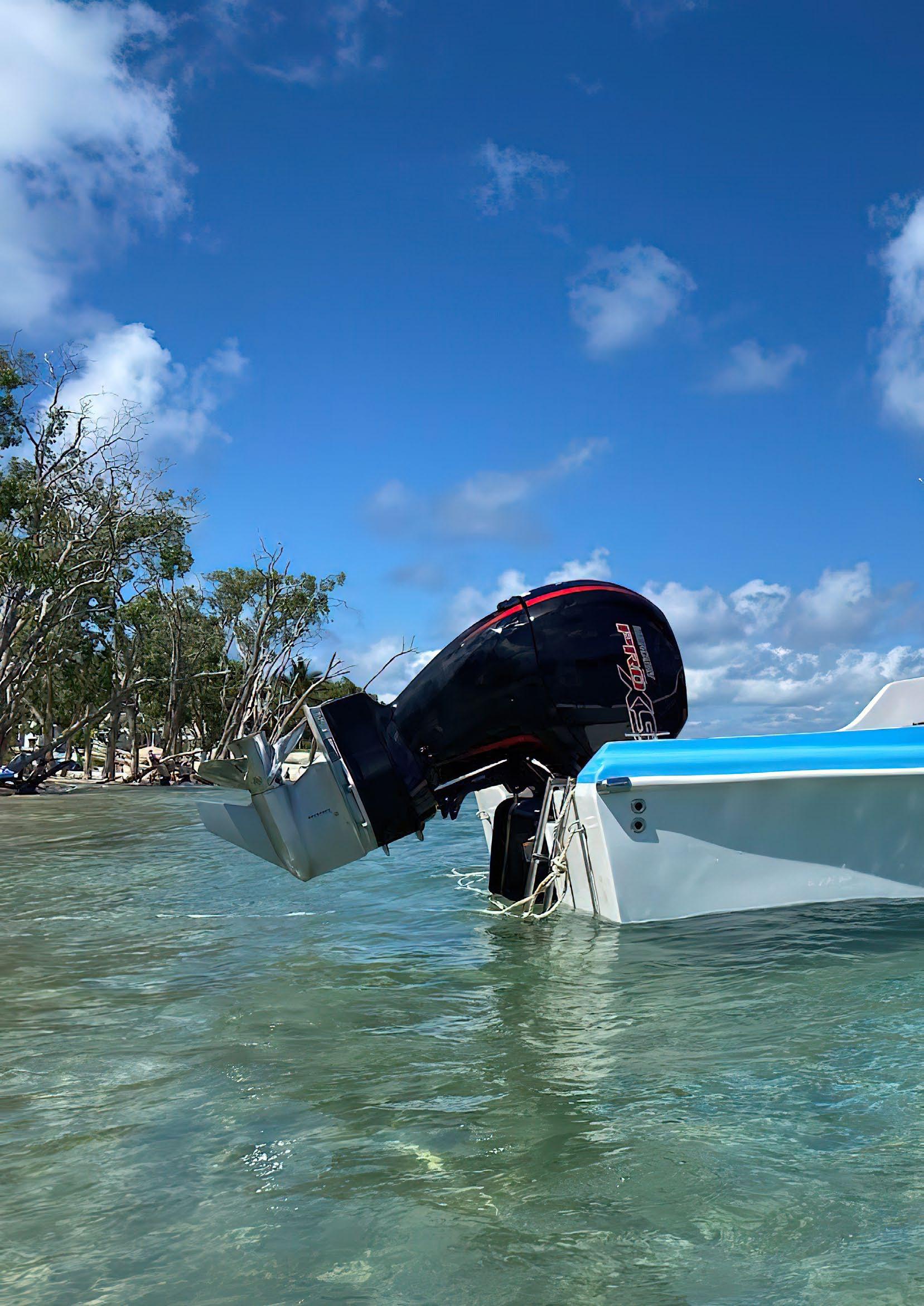
Lukes old V17C is now looking splendid with a complete restoration, rebuild, new accessories and a grunty Mercury 150 ProXS.
However, whilst the V17L is a terrific boat, it has some actual design problems with its low line cabin structure. There is no room for anyone of size to get into the cabin easily, and trying to get out of the anchor hatch was a virtual impossibility for any sizeable boatie.
So, as popular as the “L” model was, it was actually the more traditional stepped cabin shape of the V17C that made it an even better boat. For many, many years you could buy a secondhand V17C for around half of the price of a V17L and only because they really did look quite “old hat!” Today there is a resurgence in the popularity of not only the V17C but also the V163C, V19C, 565C, 213C and so on.
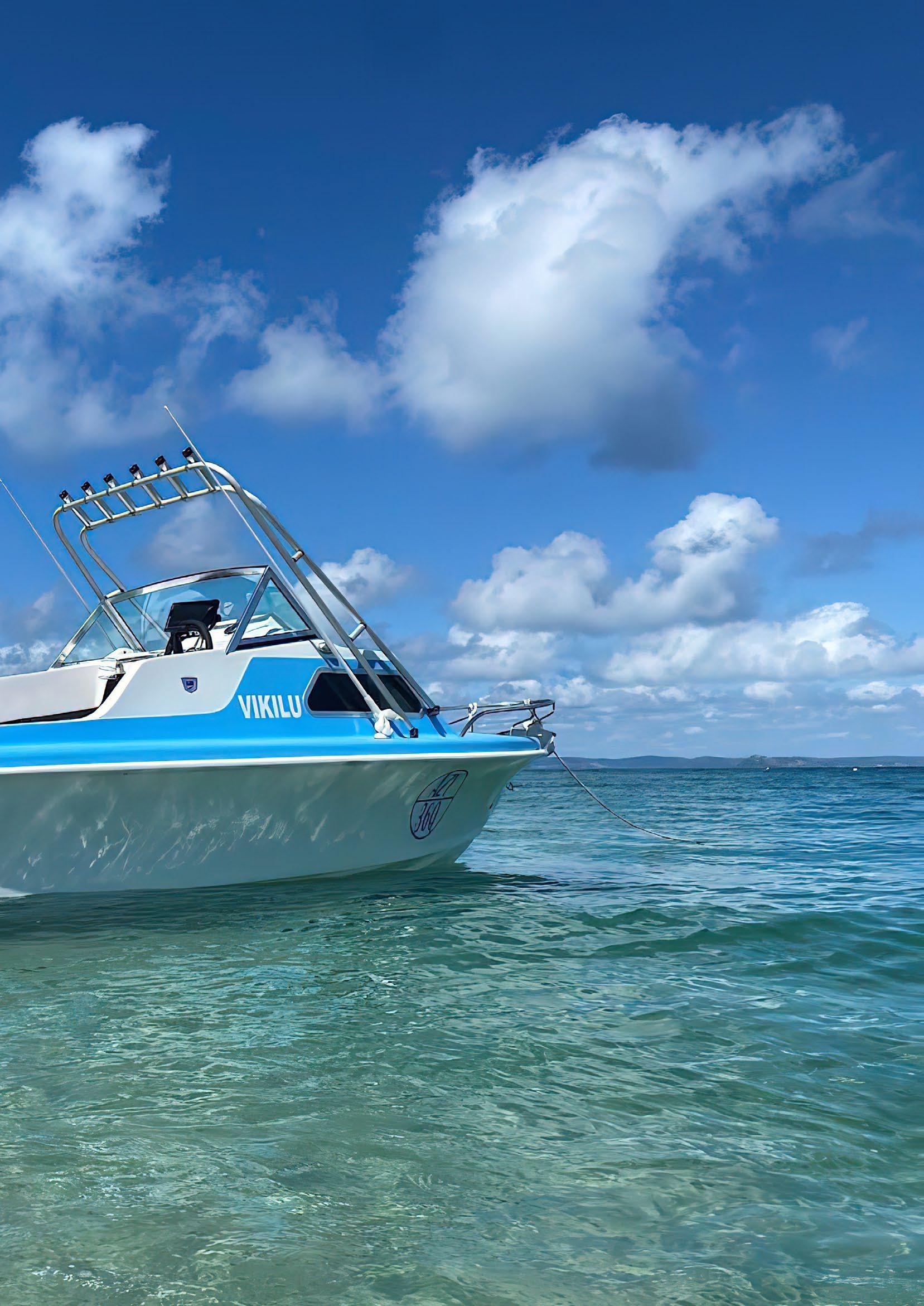
This is my Haines Hunter V17C. It is a 1975 model I purchased in 2015 for $7K. It was in reasonable condition, but it did have the usual signs of stringers, floor and transom rot. The transom had been done by previous owners, but it was a pretty average job. The name of the boat was “Vikilu.” I’m not sure what the name stands for or means, however it kind of grew on me.
Vikilu had a 1990 135 V6 2 stroke Merc on it and went like the clappers, but it was very thirsty. The fit-out was very basic, as expected for an old boat. I originally planned to only keep Vikilu for a couple of years to do some fishing and diving in Moreton Bay, yet after a few trips, the boat completely exceeded my expectations in every aspect.
Fast forward a few years and many trips diving and fishing around Brisbane, Sunshine Coast, north to Yeppoon and South to Port Macquarie. I planned a 10 day trip to North West Island off Gladstone. I put Vikilu, all the spare fuel, a tinny and everything else on a barge and got it dropped off on the island and had a great trip. By this time, poor old Vikilu was starting to get a little worse for wear with more than a few maintenance issues. I always had the uncomfortable thought in the back of my head of how long the dodgy transom and the rotten stringers were going to hold out for. Hence, it was time to decide what to do with Vikilu.
Vikilu was a real Queenslander with the tarpaulin bimini and hosted the power of the everreliable old Mercury 2.0 litre 135HP V6 2-stroke.

It’s
ensure your hull is well supported in a cradle or similar to ensure its integrity when the internals are stripped.


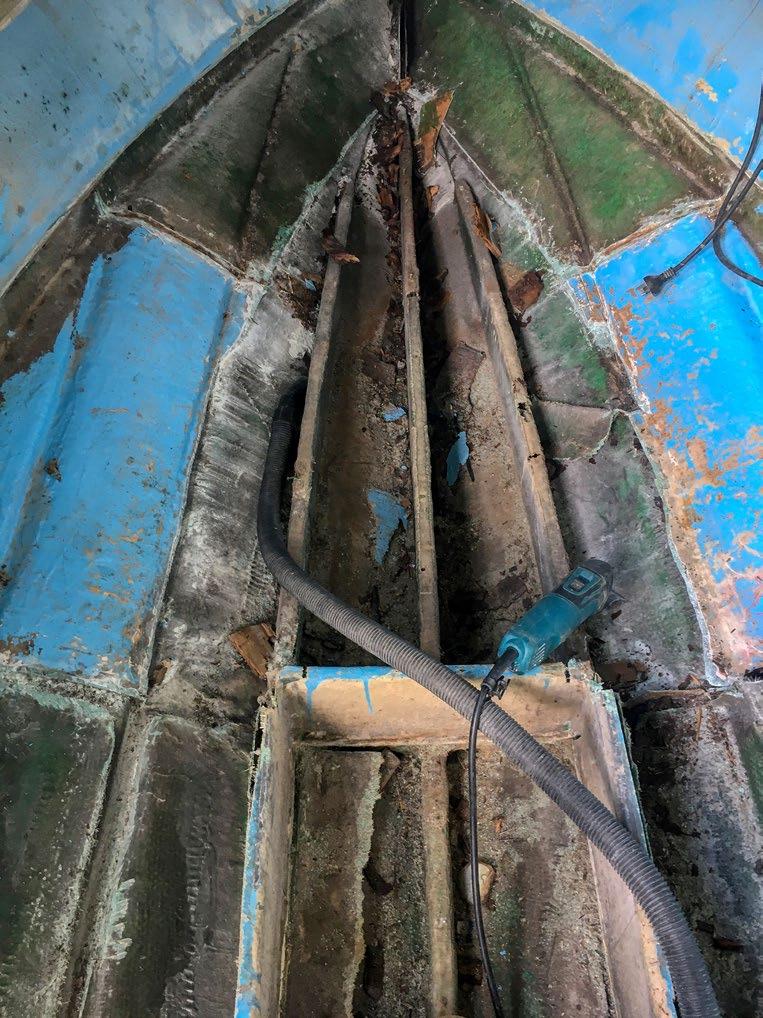
She sat around for a while before the right time finally arrived. I stripped everything off the boat and sold the old 135 outboard. I built a cradle and dropped Vikilu onto it to insure it was well supported, level and solid before I completely gutted the hull including the floor, stringers, transom, removed the top rear section and ground back to the original shell.
Getting the most from expensive Thermolite synthetics is important. Luke templated the entire underfloor structure before cutting.

At this stage I was thinking shit, what have I got myself into, but there was no turning back now so I pushed on and purchased all my Thermolite, matting, resin, etc. I then laid up the whole inside of the hull with five layers of chop strand and woven rovings as the original hull was a bit thin in areas. I then installed my transom (38 mm Thermolite) including raising the height up to 25 inch (Extra Long) and glassed it all in.
It was then onto the stringers and bulkheads. I templated everything out with 18 mm MDF to ensure everything fits, Thermolite is too expensive to be making mistakes. Once I was happy with the fit, I transferred all the templates onto my 19mm Thermolite sheets,
important to
making sure I had minimal waste. Once cut out, I bedded them all in using a polyester resin and Cabosil mix and tabbed in.
Now onto the floor, I templated and cut out all the floor and storage compartments and glued, screwed, and glassed them in. I then modified the rear section to work with the 25 inch transom, cut out the moulded seats, built a live bait tank and glassed it all back onto the boat. Removing this whole rear section was probably one of my biggest regrets of the whole build as it was a lot of work to get back on and lined up correctly with lots of glassing fairing, etc. If I had my time again, I would cut it out on the inside and leave the gunnels intact.
Luke used a polyester resin and Cabosil mix to secure the underfloor skeleton.
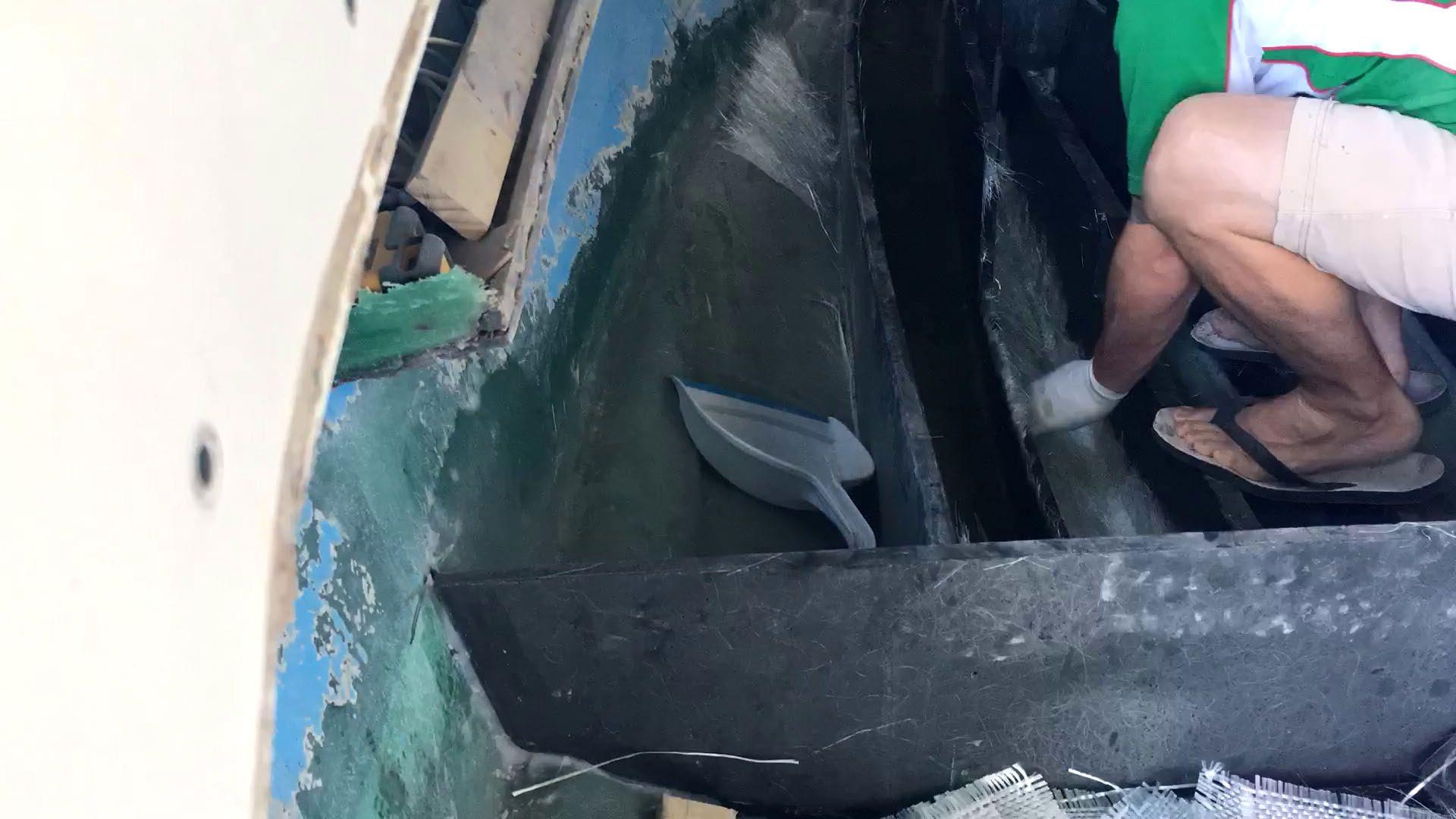
I then went through and ground out every old screw hole, chips, scratches, spider cracks in the Gel coat and other imperfections. With nearly 50 years of different fixtures and fittings damage etc, it looked like Rambo had been driving it through the Vietnamese jungle with the amount of holes in it. But I eventually glassed them all up. Now Vikilu was starting to look like a boat again.

Luke created a far more functional internal cabin layout for his V17C.
Now came the time to flip her over and work on the bottom. I was shitting myself about doing this and worried about dropping it, but with a few block and tackles, some chains and a 4wd winch, I had her upside down without incident. Now I had to remove nearly 50 years of minor repairs done to the underside of the hull, and grind off the dodgy paint job to get everything back to the original gel coat. I then marked up all the chips, scratches and other imperfections and ground them all back to bare glass. I then glassed all those spots up and faired everything out, ready for a new gel coat. While the boat was in the upside down position, I climbed inside and flow coated all the hard to reach areas which would generally be upside down (i.e., underside of gunnels, ceiling of cabin etc).
With a little ingenuity, a lot of patience and a 4WD winch, Vikilu is now ready to have her bottom and new transom prepped for a new gel coat.
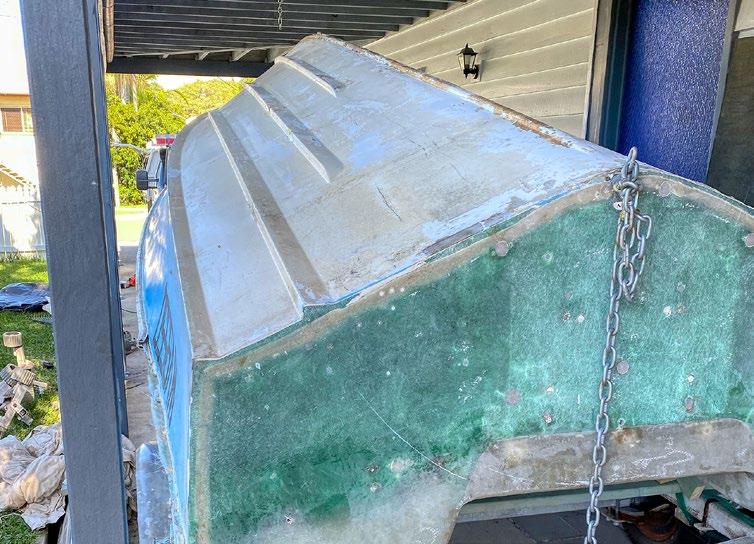
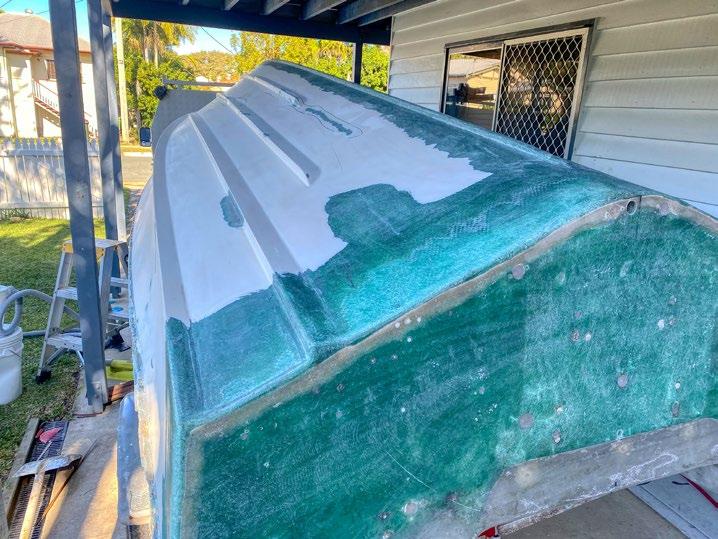
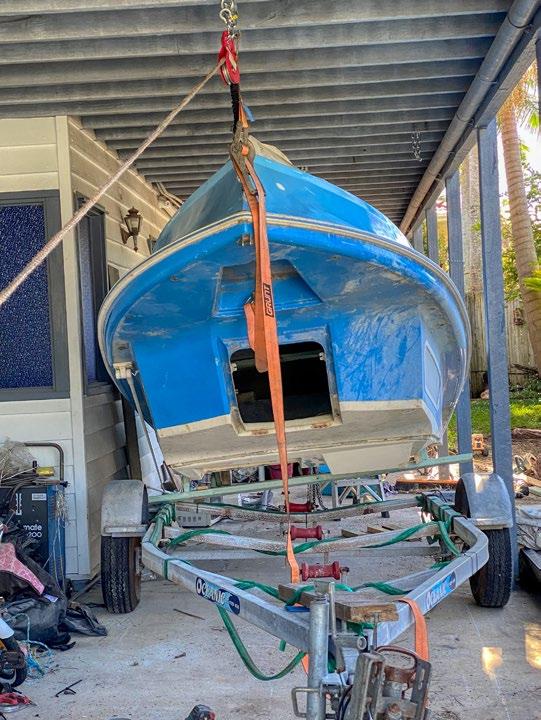
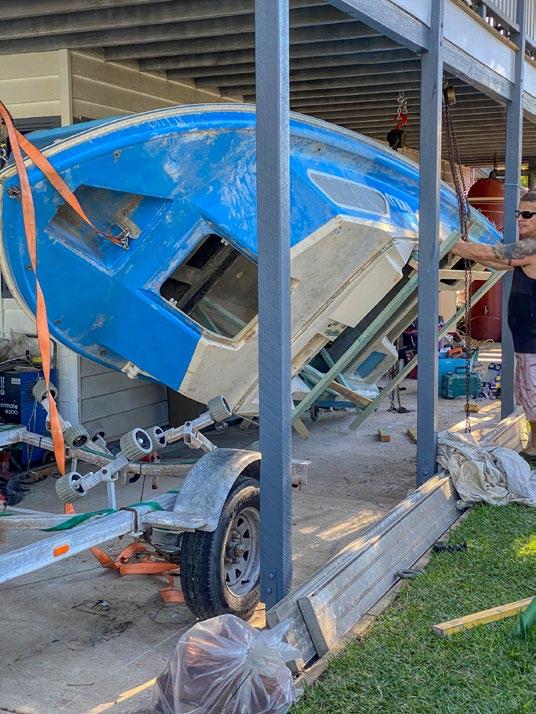


Never underestimate just how much sanding goes into preparation of a hull rejuvenation.
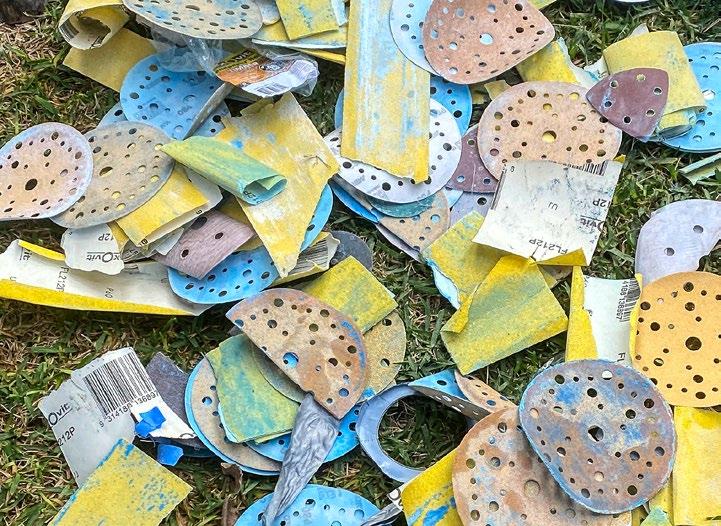
I then made a make-shift spray booth, lining the carport with concreters black plastic and sprayed three coats of gel coat to the bottom and sides. As soon as it was dry, I got onto it with 240 grit and gradually increased all the way up to 2000 grit. Getting on to this straight away while it was still soft saved a lot of time in the sanding process.


Now it was time to flip her back over. If I thought I was shitting myself before, this time was worse because I was worried about damaging the fresh gel coat, but again it went without incident. Needless to say, I needed a beer to calm the nerves after that ordeal!
At this point, I was really starting to see the light at the end of the tunnel and wasted no time prepping and fairing the top. The top deck was painted with 2-pac paint previously, so I had to grind all this off. It was an absolutely painstaking job, but I got it done.
After some final prep work, it was then back into the spray booth to spray the top half of Vikilu. I did 3 coats of the white, sanded down (as I did with the bottom) one day and moved on to do the blue the next day.
I sprayed all the gel coat layers with a 2mm Renegade pneumatic spray gun, thinned the gel coat with styrene and used wax in the last coat. Then gave the entire boat a cut and polish.
Prepping the deck for the respray.
I then gave the whole inside a good grind-up and faired some of the worst parts, but was not overly critical of the finish at this stage as I was flow coating the whole inside. I brushed on the flow coat with a wide paintbrush. While it was still tacky, I sprayed black and some white 2-pac in separate guns with pressure turned right down to get a speckled finish.
The transom being re-sprayed - it must have been like an oven in the makeshift spray booth!
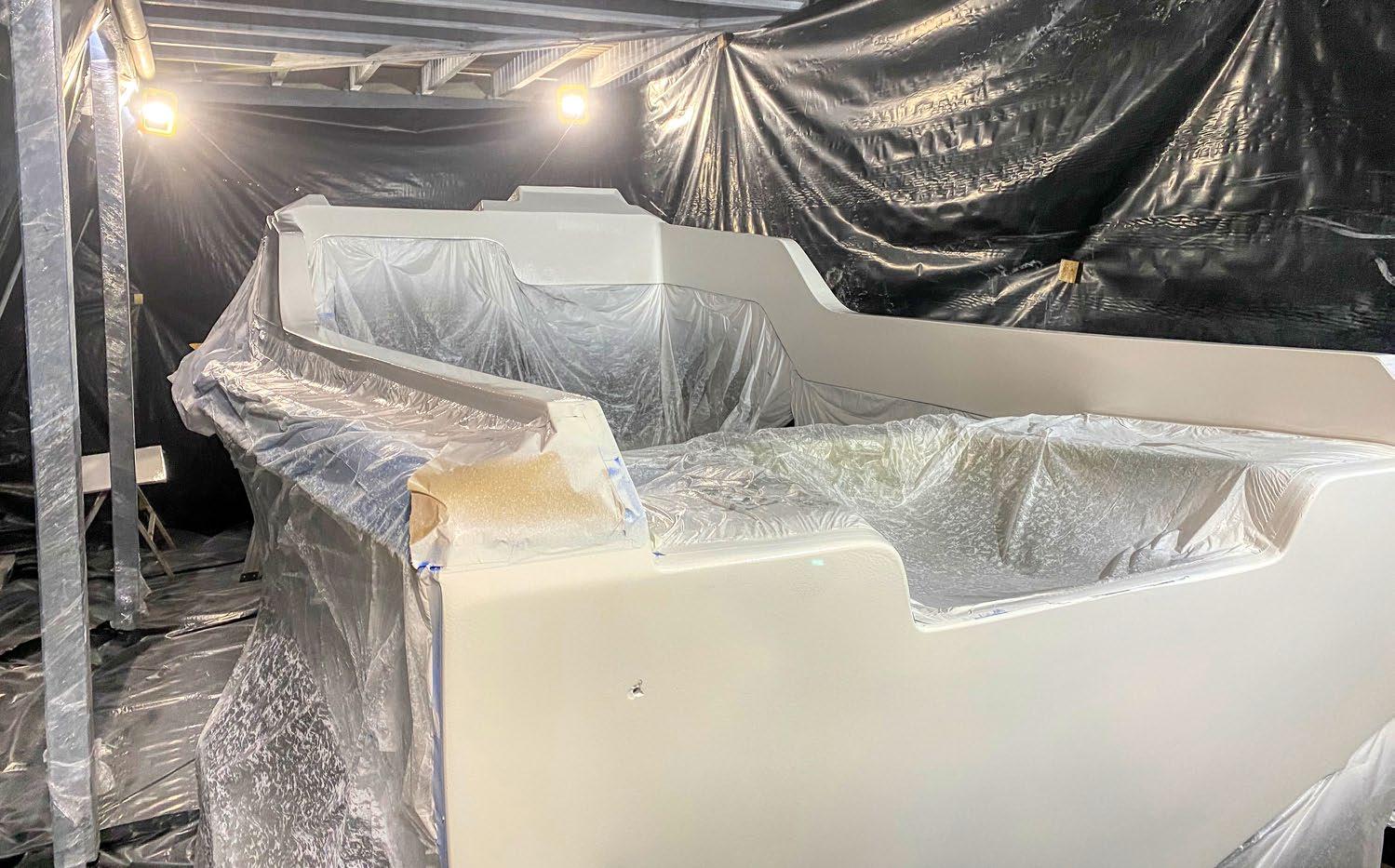
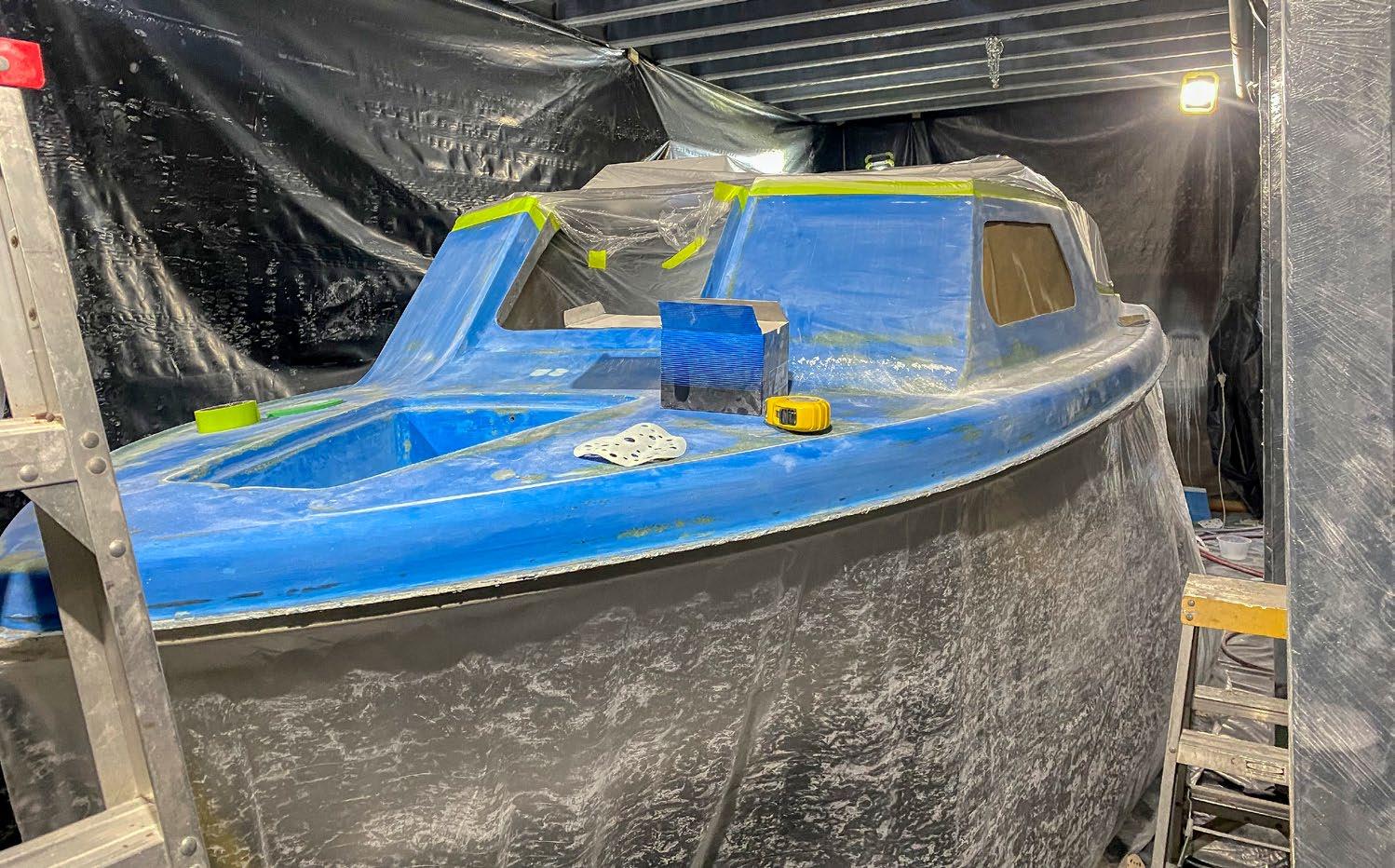
What a milestone that was to have the boat complete, it was now time to fit off.

I kept the fit out pretty basic which included 9 inch Garmin Sounder, cabin lights, deck lights, nav lights, live bait tank lights, 2 bilge pumps (one for deck water, one for under floor), live bait pump and deck wash with through hole pickup. Then came dual batteries in the cabin with a VSR system, Fusion Marine Stereo with custom fibreglass Speaker boxes, 6 stainless steel rod holders, and 4 stainless steel cleats, VHF Marine Radio and a 100 litre under floor fuel tank. I used the original Bow rail and fitted new gunnel rubber. I had a new windscreen made, and a new 150 Pro XS Mercury 4-Stroke with Hydraulic Steering fitted.
The new internal layout is neat, practical and very useable!
The budget was wearing thin by now so my wish list of trim tabs and drum anchor winch had to take a back seat (for now).
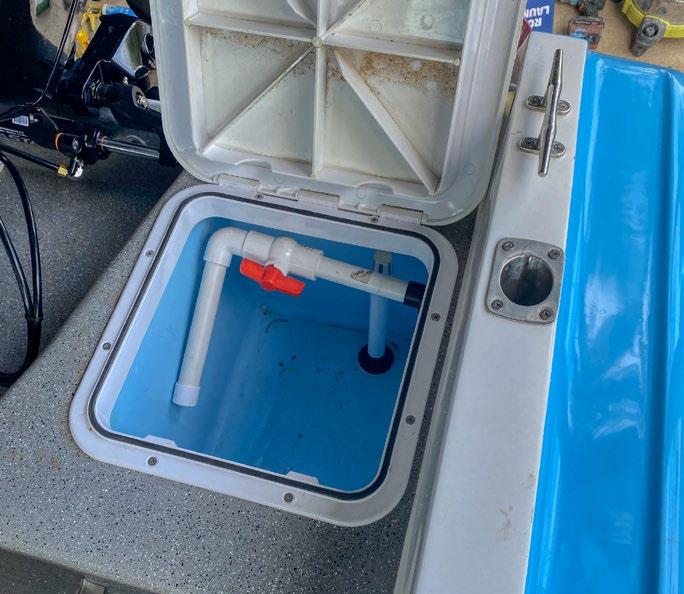
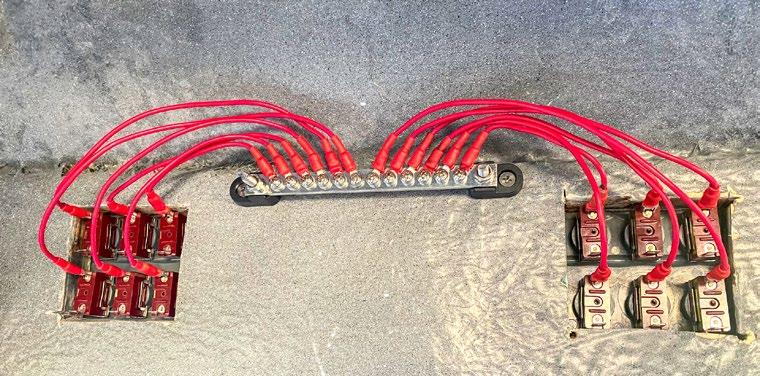

The day finally came to see if Vikilu would float again! I was absolutely shitting myself on the way to the boat ramp with every aspect in the back of my mind. The initial water test went well, and she stayed above water. I played around with a few different props and ended up going with a 19P Revolution 4. It seems the best all round so far, but I think trim tabs are a must.
Well, thanks for all that Luke, you certainly gave the old girl your heart and soul and ended up with a beautiful boat to be proud of. What’s more, there’s a good feeling of confidence, knowledge and trust when you know every inch of your boat, including the fittings and accessories. She’ll go like the clappers with the 150 Merc Pro Excess, so I guess the old sign, “get in, sit down, hold on and shut up” may well be fitting!
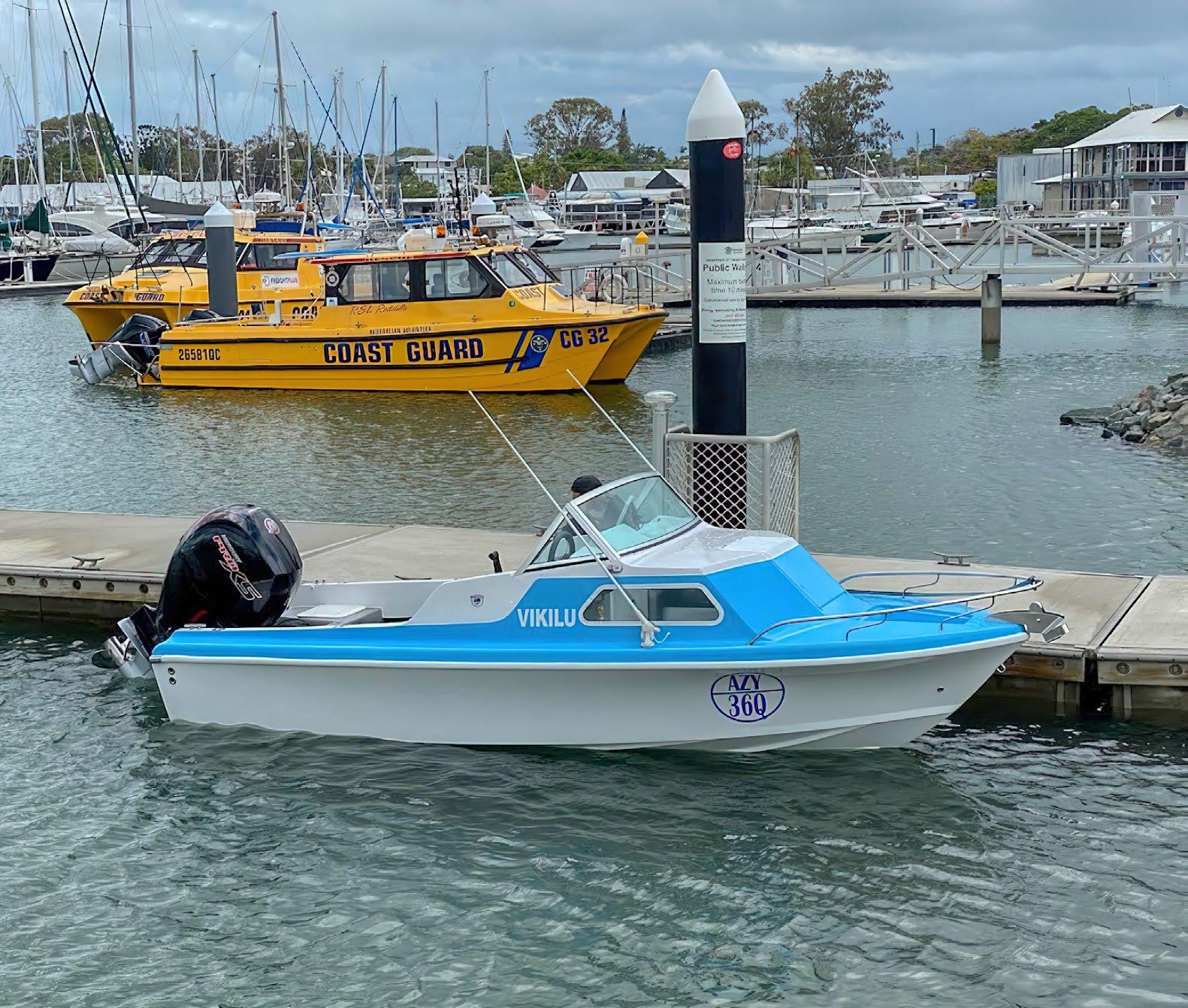
Congratulations Luke, there are some presents from Deadrise on their way to you and you’re in the selection for the grand prize, which just happens to include a Lone Star Drum Anchor winch and Boatcatch.
Good luck Luke!
Vikilu looking splendid on the water. A job well done Luke!john ‘bear’ willis

In this, the second of the Haines Hunter focused Old School Boat Of The Year Awards, John Willis chats with George Stylianou about his pride and joy, the 635L.
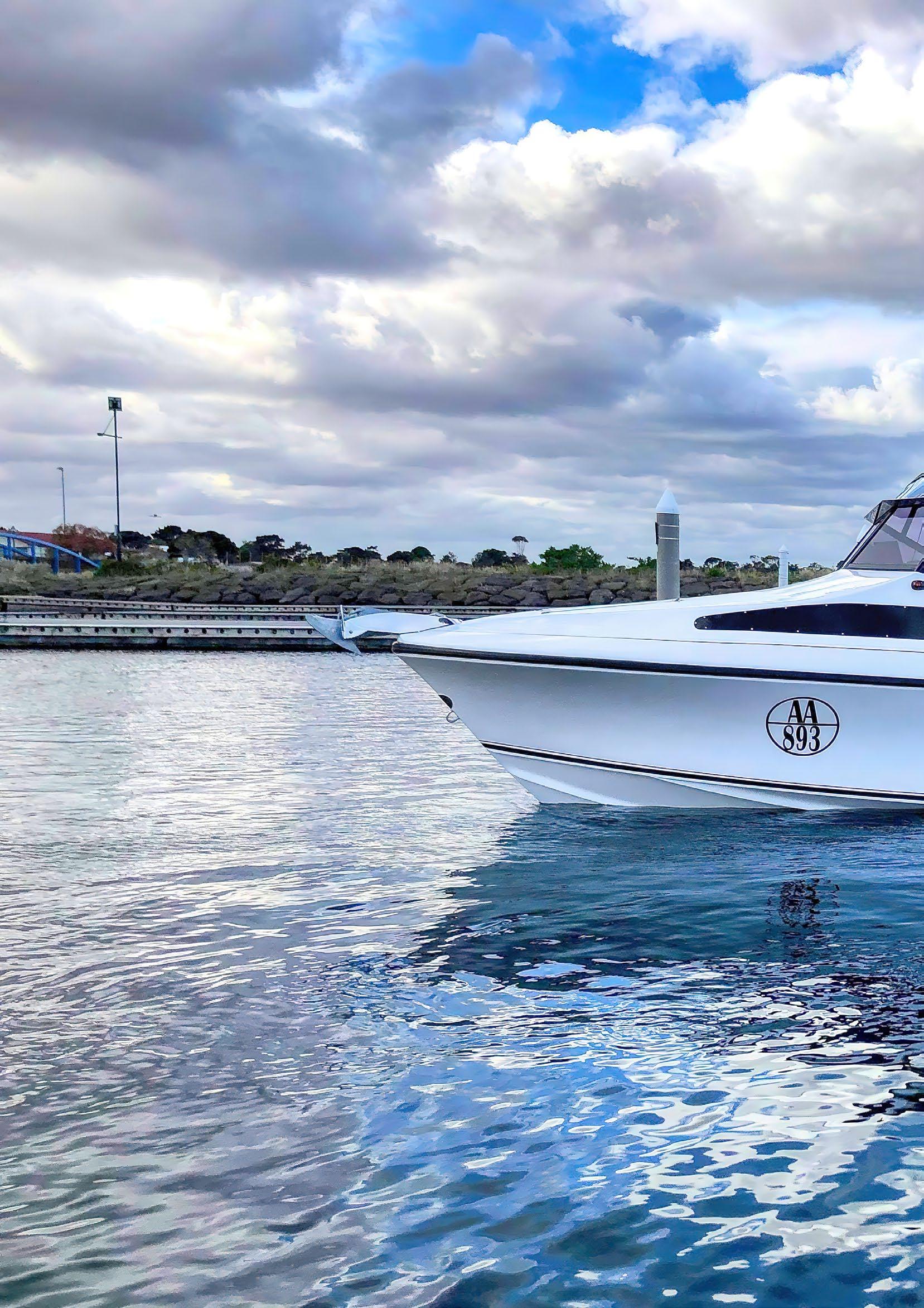
In what I believe are the two best hulls ever produced from the original Haines family owned Haines Hunter, the V17 and 635L are the results of extensive testing and development in some of the harshest offshore powerboat competition.
Whilst designed and built up to fifty years ago, their performance is truly hard to compare. The ride is sensational. Sure, they may not be the most stable boats on the water due to their deep-V deadrise and relatively narrow beam, but they form a compelling part of the DNA that was developed even further by the likes of tough boats such as Edencraft, Bass Strait Boats, Sydelcraft and many others including to a large extent Cootacraft and Razorcraft.
The construction quality is in the upper echelon of the era along with quality brands such as Cruise Craft, Seafarer and Caribbean, with many well cared for craft still in as good a condition today as the day they were built.
Whilst the lamination schedules reflected the old “more is better” theology, there was obviously timber used in the underfloor and transom construction, hence most boats of the era now need a rebuild, mostly with modern synthetics.
I have fished both hulls extensively over the years, in fact having completed around eight years on a game fishing team based in Bermagui NSW. We have found ourselves in some awful conditions, but I never felt a worrying moment with the enormous seafaring abilities of the 635L.
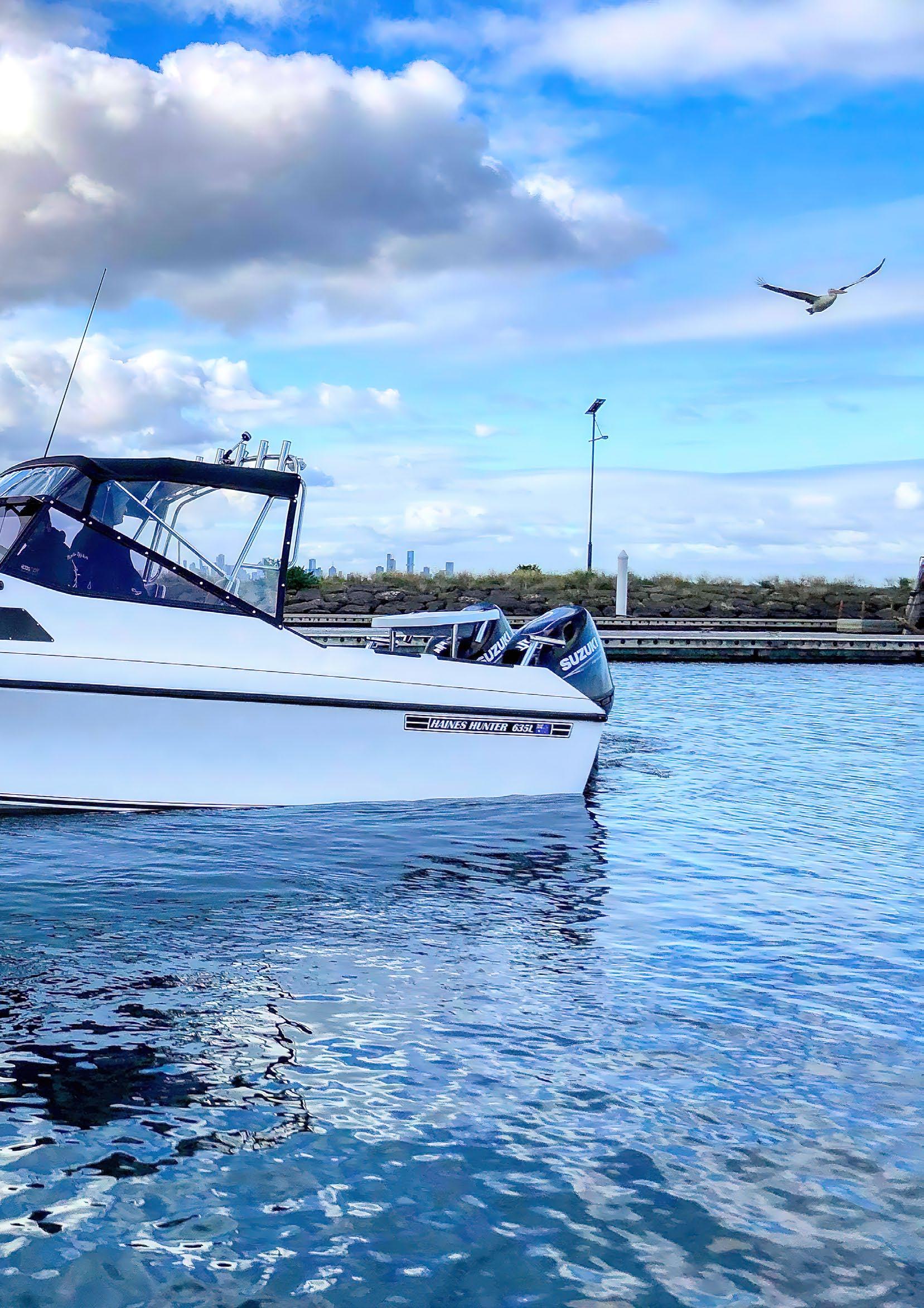
Whilst some find the long cabin a bit of a waste of space, it sure is nice to have it there when the shit hits the fan. Many wave breaker and cuddy designs put the driver and passengers as first on the scene of every wave and distribute the weight forward of the shoulders, making them badly balanced in a following sea. Not the 635L!
Trolling for SBT in the Southern Ocean in one of its more sedate moods.
Melbourne’s George Stylianou understands the capabilities of the 635L. He said, “I spend most of my time on the west coast (Vic) chasing Tuna, and come February chasing Marlin up the east coast. In the bay I’ll target whatever is on the chew!”

This style of fishing requires a boat that is capable of big miles at sea, comfortably and safely. On the Victorian west coast, it’s not unusual to travel over 150 kilometres in a day, sometimes 200 if the SBT are wide off the Continental Shelf and the Southern Ocean can be a mighty unpredictable place with huge Antarctic swells. Yet even snapper fishing in Port Phillip Bay can present some of the steepest and shortest chop imaginable with pits and troughs that literally shred your spine in lesser boats.
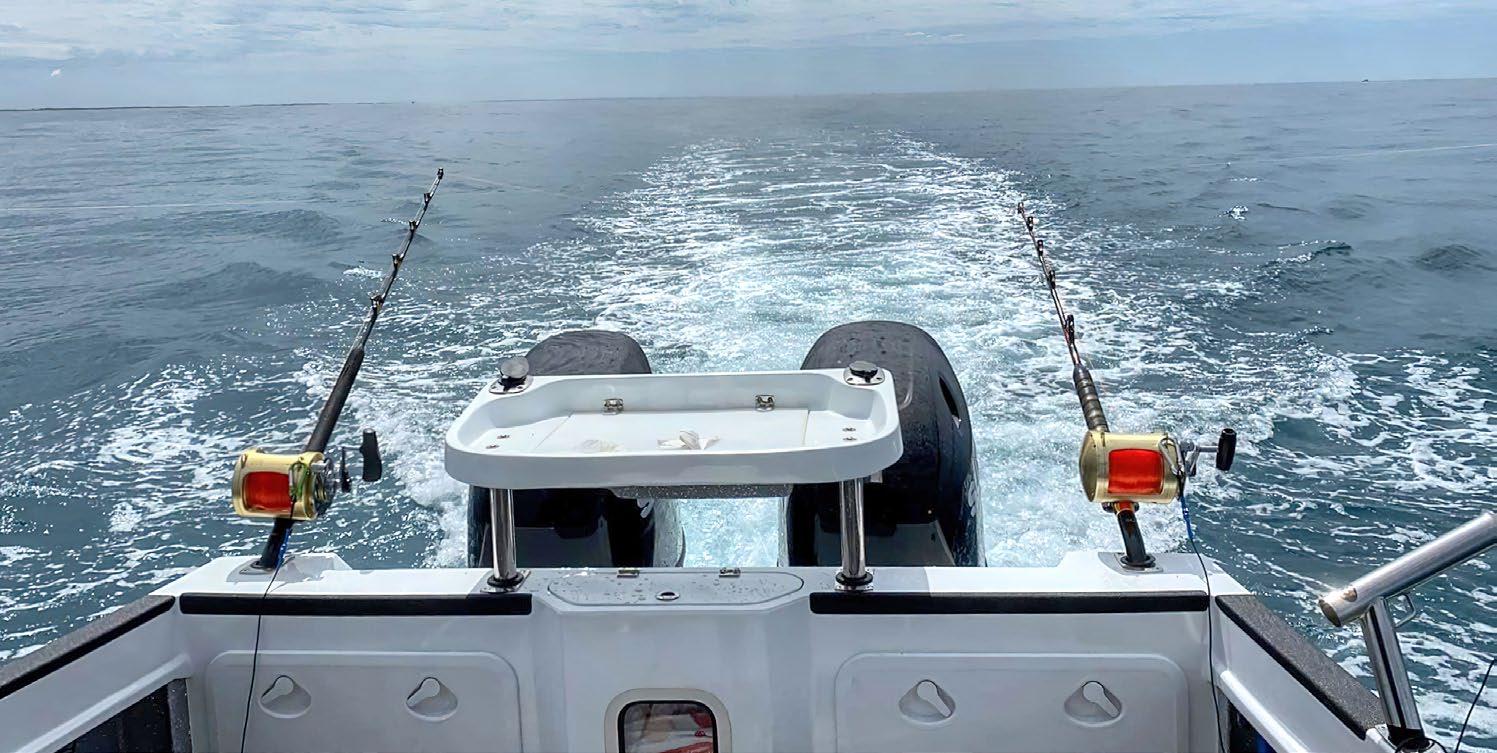
The boat had already had extensive modifications, but not to George’s liking. The original windscreen had been replaced with a laminated wave breaker with small windows and a very small bimini clear. The helm is already very high in the 635L with a very deep freeboard (that’s one of the things that makes it so good!) so replacing the windscreen with such enclosure was a mistake. Hence George set about a total rebuilt including taking the cabin structure, and windscreen back to original.
The boat had already had extensive modifications, but not to George’s liking. So the hull was completely gutted and a new skeleton constructed, this one with marine plywood.
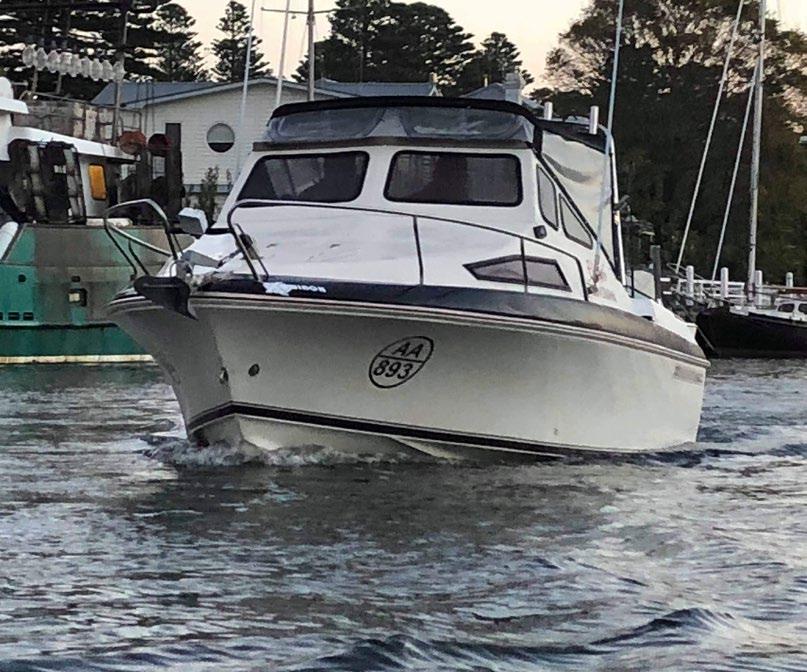
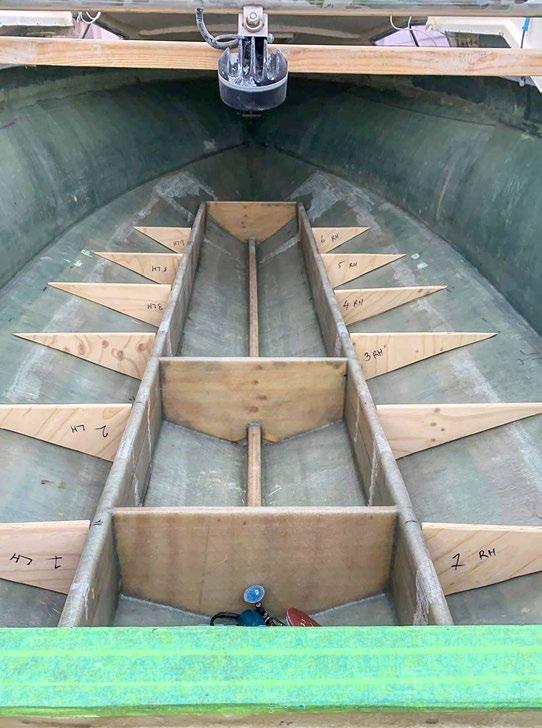

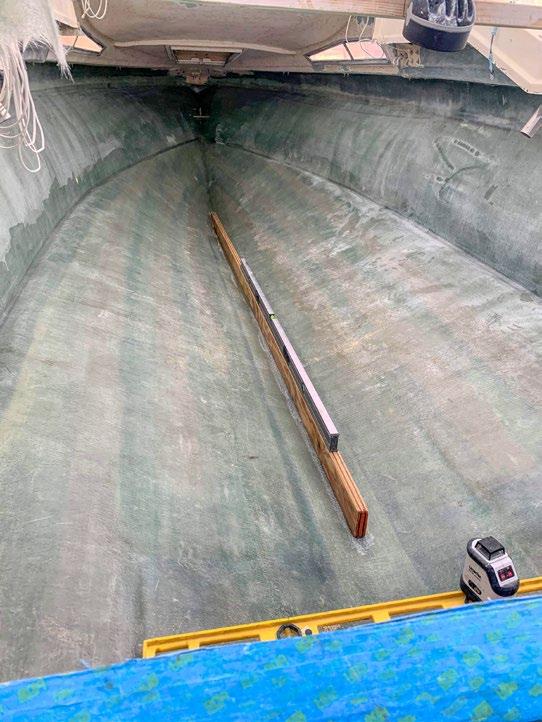

With the help of some friends, he stripped the entire boat to become a blank canvass and started to lay up the transom, however the perfect opportunity arose when well-known boat renovator Steven Puopolo was engaged to complete the rebuild.

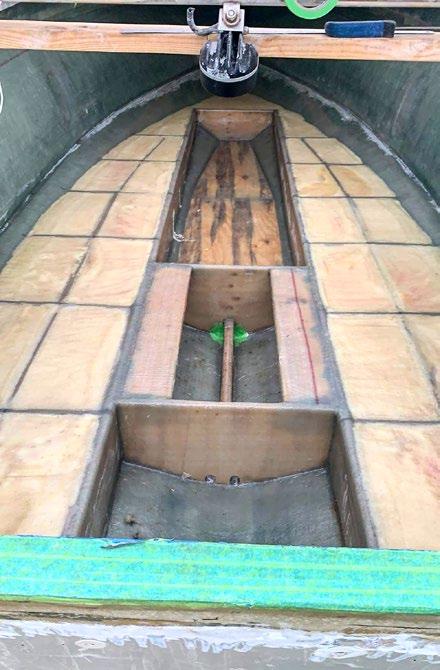
The original timber framework lasted nearly 50 years. With careful technique, there’s every reason it will last even longer this time.
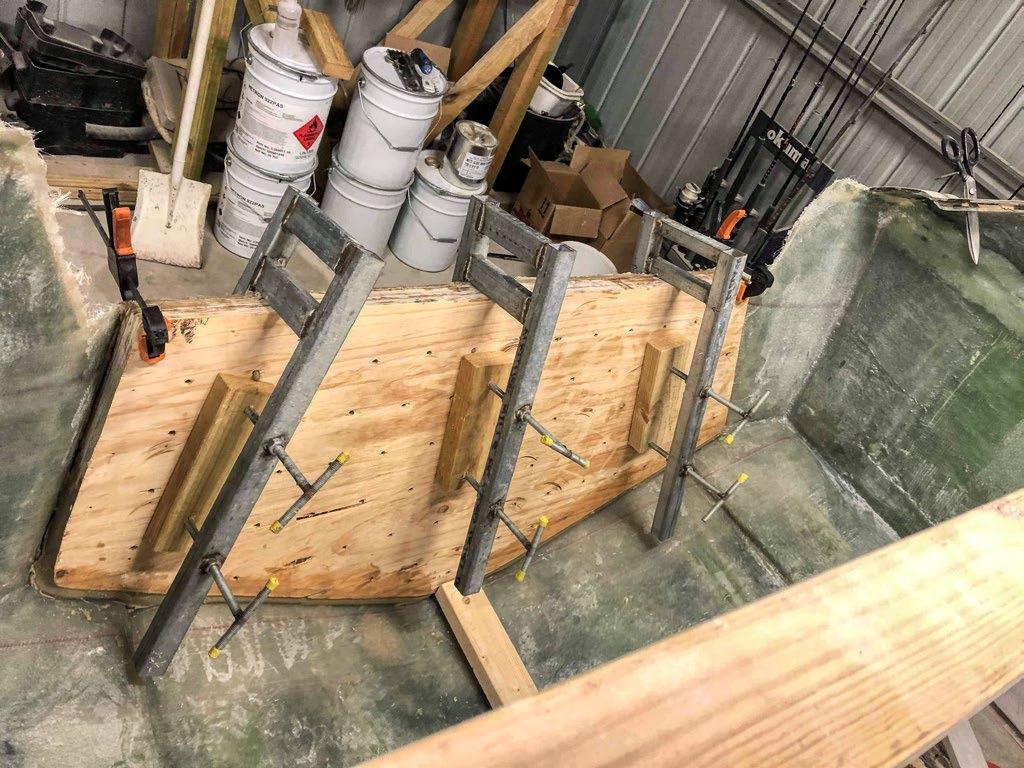

The
She received a complete rebuild from the bottom up. The hull received new internal layers of woven rovings along with entirely new stringers, transom and floor. For added safety, rigidity and acoustic deadening, the cavities were all foam filled and the side pockets, cabin structure, fuel cavity, bilge and the actual transom layout were all transformed to George’s ideal requirements. The walk up transom layout was formed to support a pair of Suzuki 140HO 4-stroke outboards, giving plenty of grunt and torque for staying on the backs of large swells in those nasty offshore conditions.
The old 635L dash was quite useless for our modern technology, hence it was rebuilt and strengthened to more practically support the large multi-function displays, including a Simrad NSS12 EVO3S and B&G Vulcan 12” Chart Plotter. When all the reforming and rebuilding work was complete, she was transported to Chris from Grawich Marine for a professional 2-pack paint job.
A very comprehensive transom in the making complete with live bait tank and enclosed storage
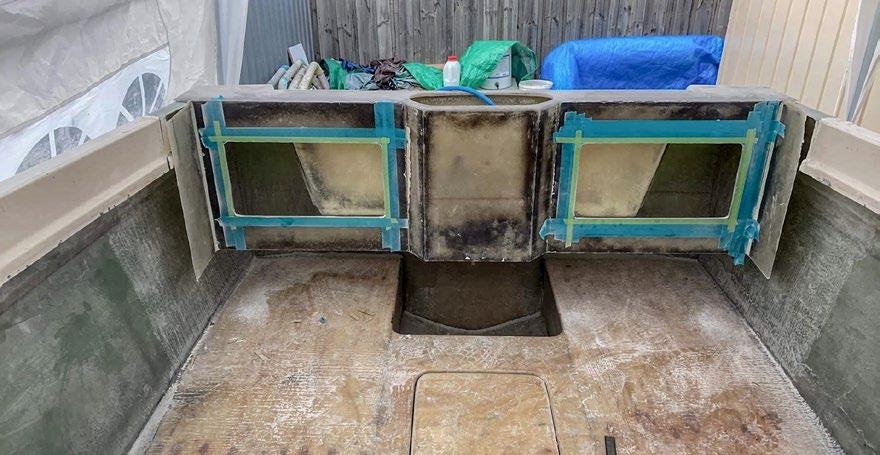
With the hull renovation and modifications complete, George had the stainless steel componentry custom manufactured by Reel A Peeling Kane at McQuarrie Fibreglass and Stainless Steel, followed by a professional wiring job by Hooked Up Marine.
The accessories include 250 litre fuel tank, auto bilge pumps, electric anchor winch, deck wash, live bait tank, VHF radio, SS175 hw transducer, snapper racks, t-toppers outriggers, stone guard, slimy tubes, Travel Buddy oven, leaning post, McQuarrie’s pedestals and custom trim tabs.

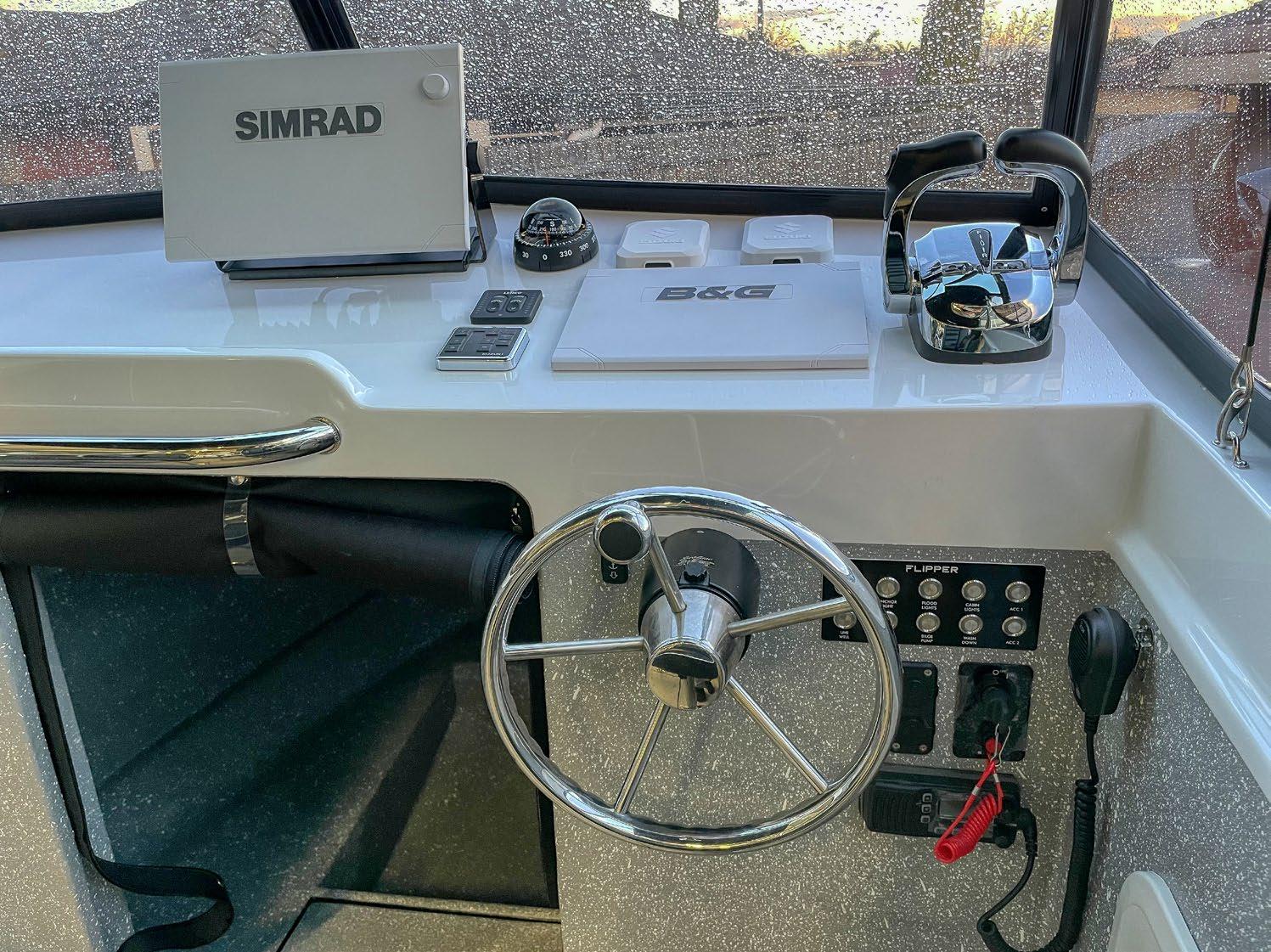
Our electronics have advanced dramatically and so has our wiring techniques.
The new dashboard layout is far more practical than the original Haines, and so too is the cabin and larger hatch.
George tells us that, “the rebuild took 3 years! I underestimated the amount of work involved as well as the cost. However, I had planned everything I wanted to achieve with the rebuild prior to starting and wouldn’t change anything!”
We say well done George, and all who had a hand in this ripper Haines Hunter 635L. She’s a credit to you all and a worthy contender in the Deadrise Old School Boat of the Year Awards! Some Deadrise merchandise is on its way and you’re in the running for the major prizes, including product from Lone Star Marine Boat Winches and Accessories as well as Boatcatch and more!
The fitting result of 3 years effort all fitted up to its Easytow tandem trailer and ready to rock n roll!
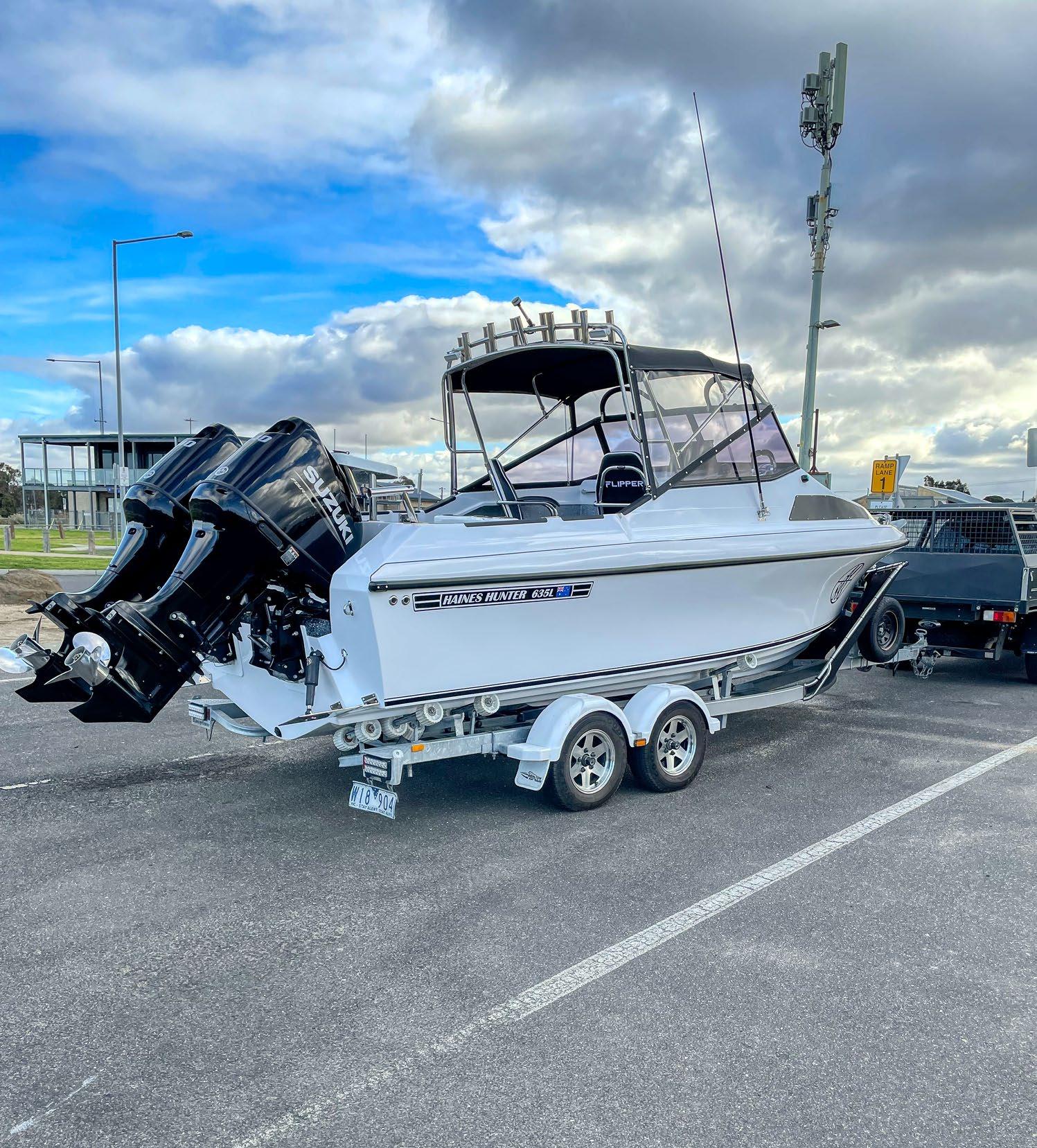


An icon of not only New Zealand water ski racing but renowned as one of the greatest ski races on the planet is the New Zealand bridge to bridge on the Waikato River in Hamilton. Bisho gives us the rundown.

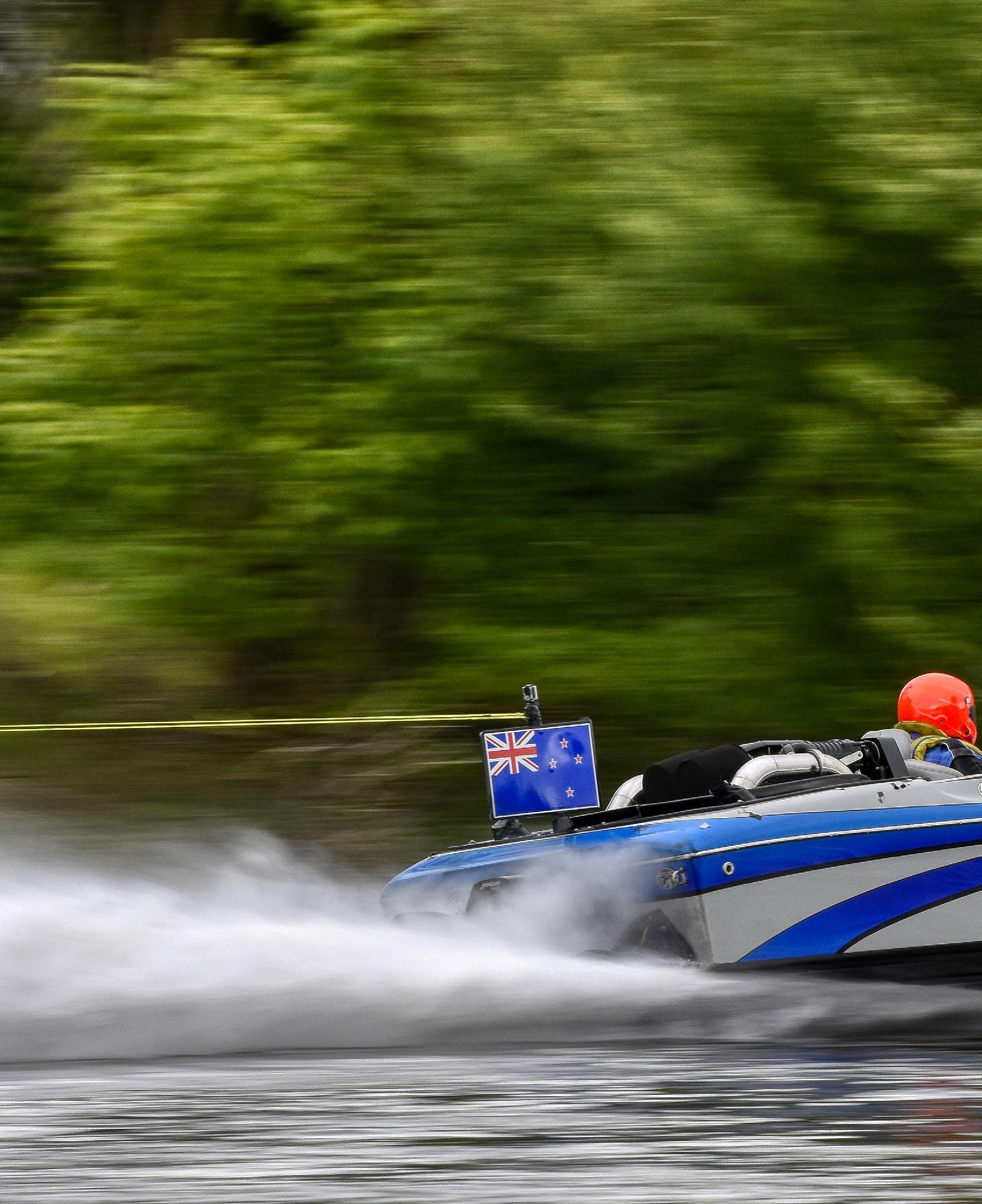
Runningsince 1986, this race has attracted many international competitors and is regarded as one of the toughest, fastest and most demanding river races on the ski race calendar. This year was no exception, with a flock of Australian competitors making their way across the ditch.

With the 2021 event not running because of covid, Brad Dutton and his team of merry helpers were determined to make it a race for the ages. Added to this was the annual competition between the NZ and Victorian junior teams (The Trans-Tasman Challenge) could not run, meaning the Victorian team used the funds raised to send the entire team to compete in the NZ bridge to bridge.
The event kicks off with a street display on Friday evening where competitors and spectators can mingle and check out some of the awesome machinery that will race over the next two days. There were also some beautiful cars on show along with the DMW Trailers, Trojan Trailer parts wheel change pit stop challenge, meaning there is something for everyone. For the record, the Team Nasty racing won the tyre change challenge. Saturday morning broke with brilliant sunshine, now being a Victorian I wondered what this phenomenon was! Teams were in the water early, ready for their start at the Grantham Street bridge, bang in the centre of downtown Hamilton, which creates an electric atmosphere. First teams away were the Novice and Masters classes for their run down to Taupiri, where they assemble and run back to Grantham Street, followed by the Sub Junior’s competitors for the return leg only.
In the Sub Juniors it was Amos Ratuki being towed by ski racing royalty Greg “Fido”
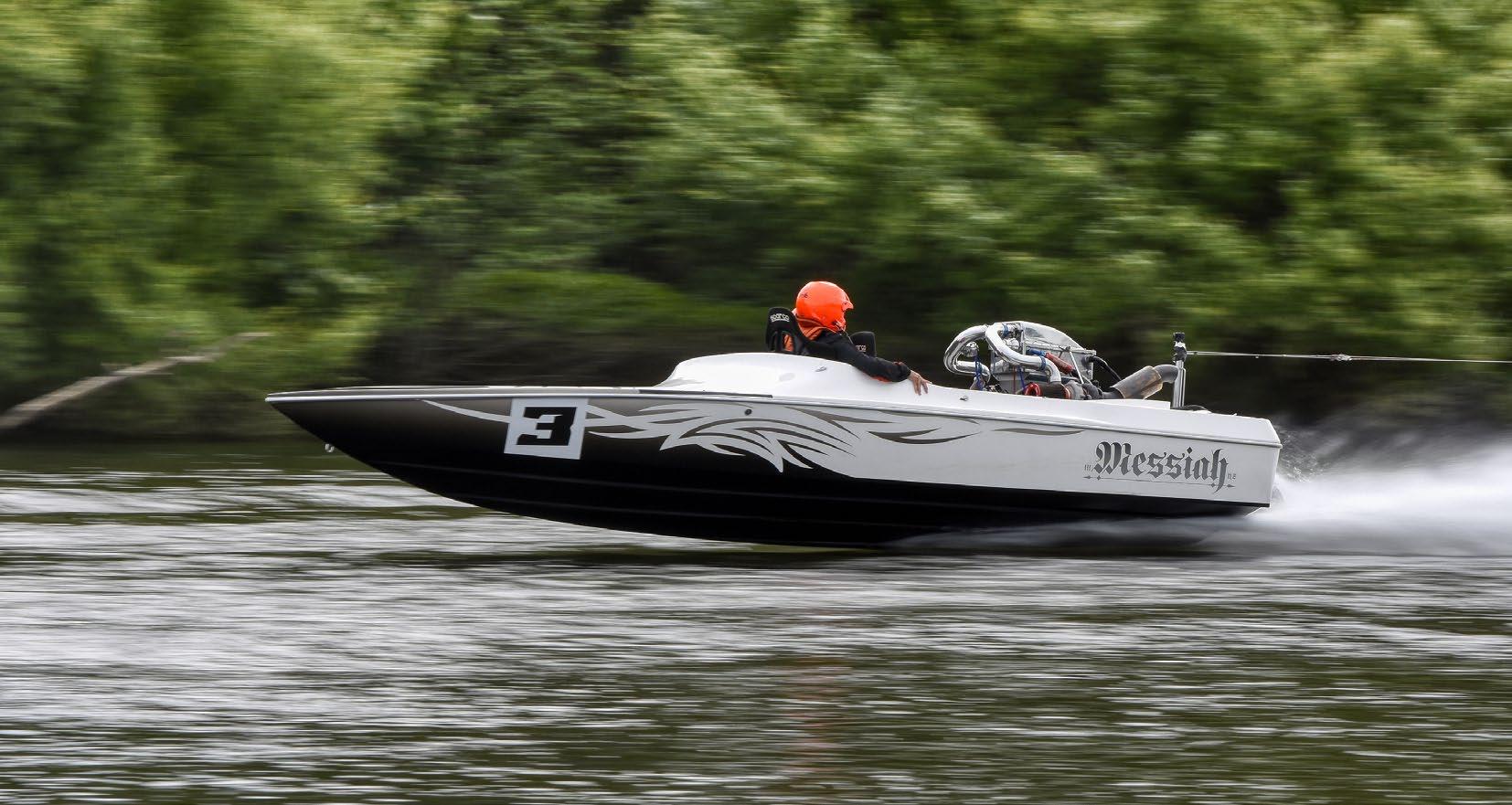
One of the major success stories from ski racing NZ is the fact that everyone is actively encouraged to have a go and take part. Unlike Australia, where the fun police have all but taken over, this is graphically displayed with the “Anything but a ski” class. As the name suggests, you can be towed on anything as long as it’s not a ski. Tubes/ biscuits, knee boards, heck, even dogs have had a go in previous events.
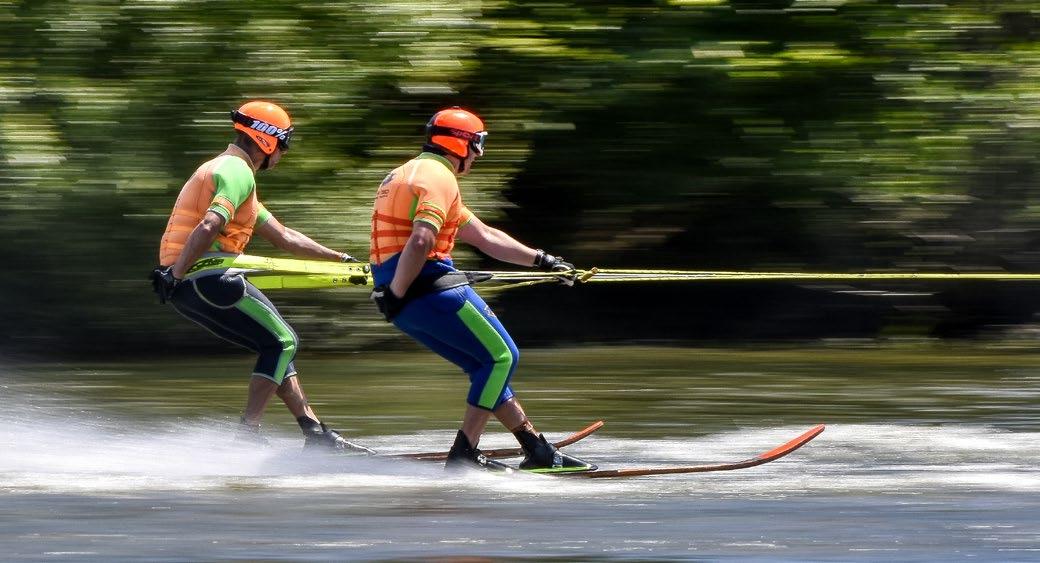
The “Anything but a ski” event is more of a regularity event where competitors nominate a speed (Which is also capped) and the closest to the mark wins. This year the chocolates went to team Stejcraft with Grace & Zara Dickinson
the hard
the back on the biscuit.
2022 also saw the youngest ever competitor in the NZ Bridge to Bridge. At only two and a half years old, Laken Dutton completed the course in
at the wheel of Yamaha Racing and Dad, Brad Dutton keeping a watchful eye on Laken from the observer’s seat. If the names sound familiar, they are. The Dutton family have been involved in water ski racing both domestically and internationally at the highest level for four decades.
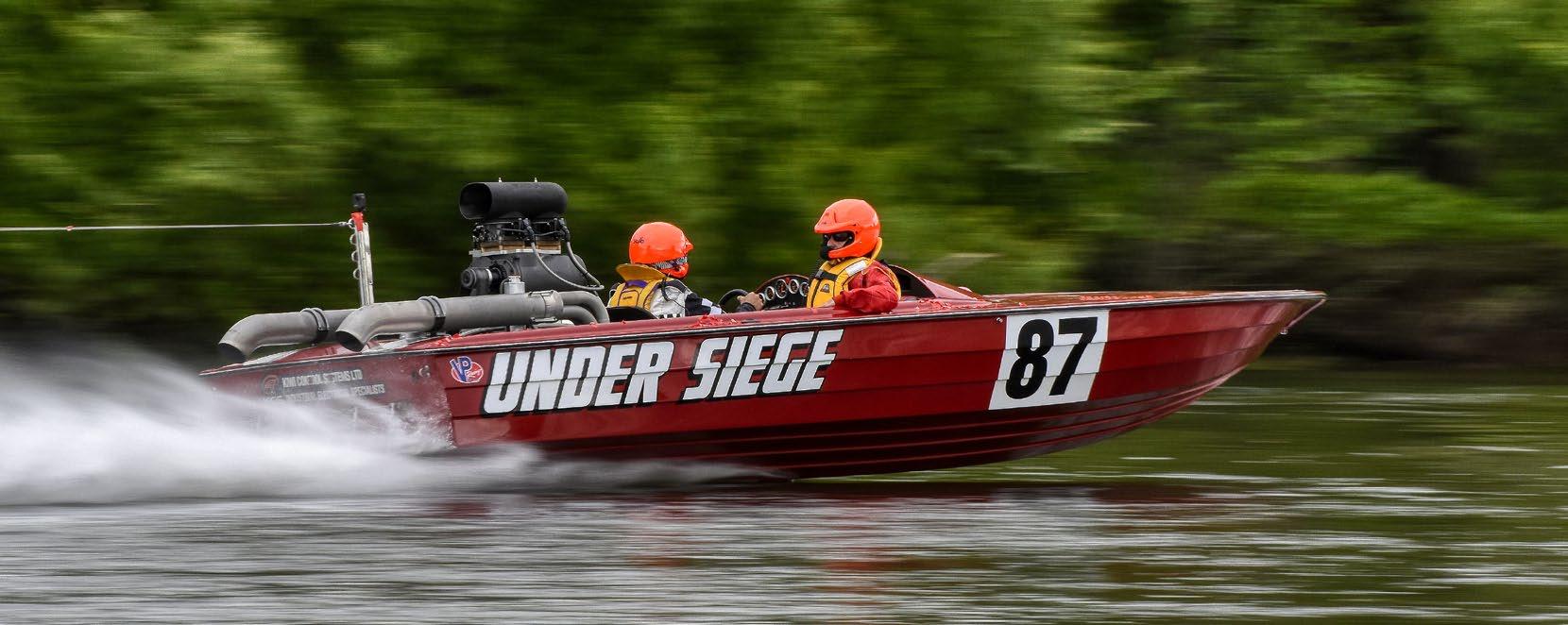
Other classes that ran on Saturday morning included the social, 60mph and the family class completing a return leg from Ngaruawahia back to Grantham Street. Once all boats finished, it was time for the top teams to get their race faces on for the time trial. This is a race from Grantham Street to Ngaruawahia and return. The fastest time claims pole position for Sunday’s main race and gets the advantage of clear water ahead. The top teams are well and truly aware of the importance of locking position A away!
The record for the time trial is 15 Minutes 25 seconds held by “Under Siege” a 21ft Everingham V driven, supercharged chevy of behemoth proportions. Driven by Ross “Fish” Christensen and partnered with observer Adam Smale. Sadly, Daniel Campbell, who skied with regular Under Siege skier Ray Ball (both from Australia) passed away this year. A huge loss to the ski racing community. Ray was joined this year by Echuca skier Dylan Stevenson who also recently lost a very good friend and Echuca ski racing identity Zac Welch. This meant the team really had a point to prove.
There was no shortage of teams prepared to rain on the Under Siege parade however, and these came in the form of “Messiah” (Driver) Kevin Murphy, (Observer) Mike Jamieson with skiers Perry Jamieson and Kane Carter, “Nordic Racing” D. Mike Roger, O. Matthew Strong with skiers Conner Strong and Hayden Gunn and “STA Parts” D. Brett Stinson, O. Brad Dutton and skiers Brad Williams & Brad Osmotherley just to name a few.
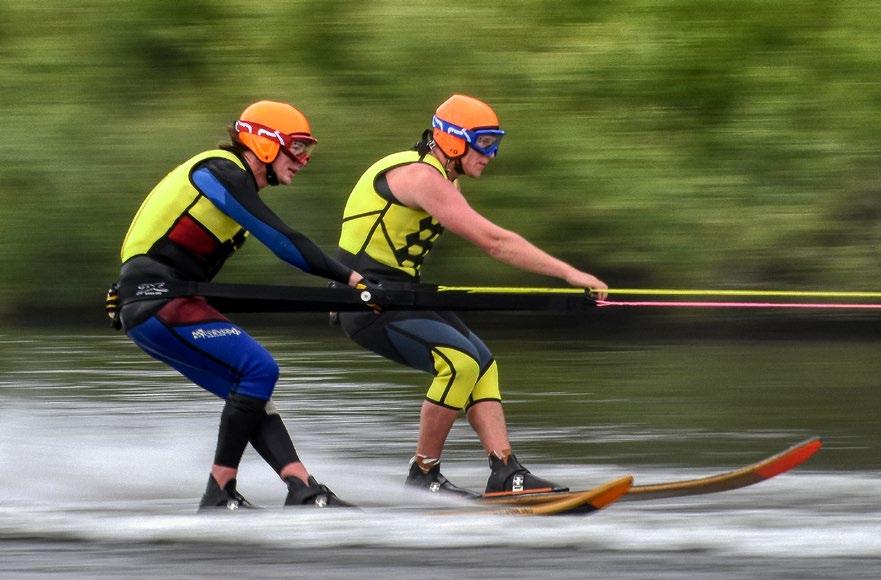
Last year’s winner “Warlord”, the most successful river racer in NZ ski racing history, was not in attendance after being acquired by an Australian team and being shipped back to Australia. First boat away duties were assigned to “Messiah”. With clear water, the big Super Class hull powered by a 510cid twin turbo Chevy, with power supplied to the propeller via a Mercury Racing #6 stern drive, blasted away and took the win.

Second place was taken by the Sonic hull with big block Mercury 525 power “Mayhem”, driven by big Paul “Hammer” Hammond, observed by Mike Alloway with skiers Cody Woodmas and Josh Reid.
Team “Raptor” with driver Kane Frost and observer Vaughan Anderson ran with only one skier, Joel Massey, due to being unable to source another. This put this team in noman’s-land for the time trial. However, their time (17.43) had them seeded in second place for the main race on Sunday. A phenomenal effort from this supercharged Yamaha outboard bolted to the transom of a V6 Velocity hull. The supercharging and tune was done by Nispro Marine.
Unfortunately, a small issue stopped the big banger “Under Siege” meaning the officials had to work out where they would start Sunday morning.
Raptor skiers - Joel Massey and Bradley Williams
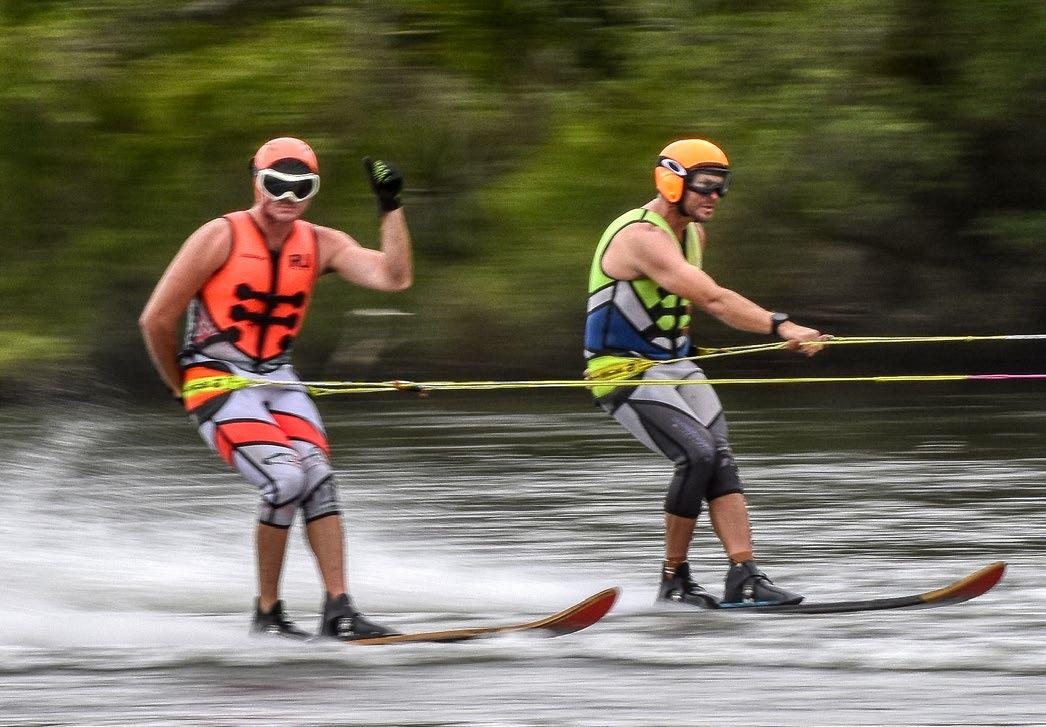
Another boat that had a major engine issue was “STA Parts”. Engine parts were found in the sump of the 510cid Twin turbo putting an end to their 2022 campaign.
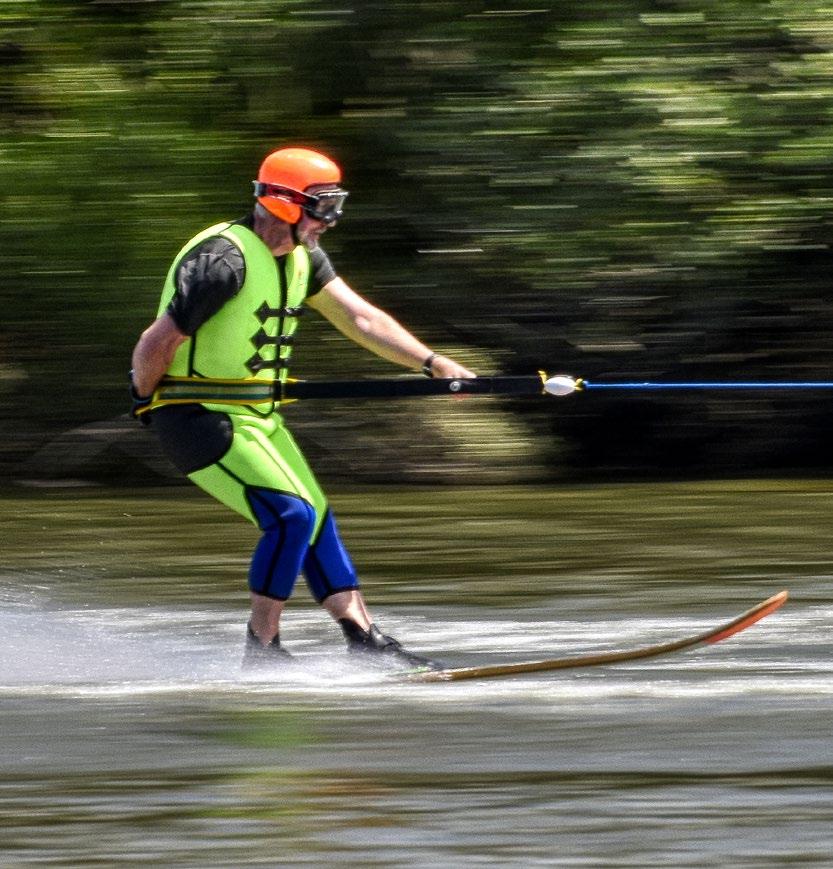
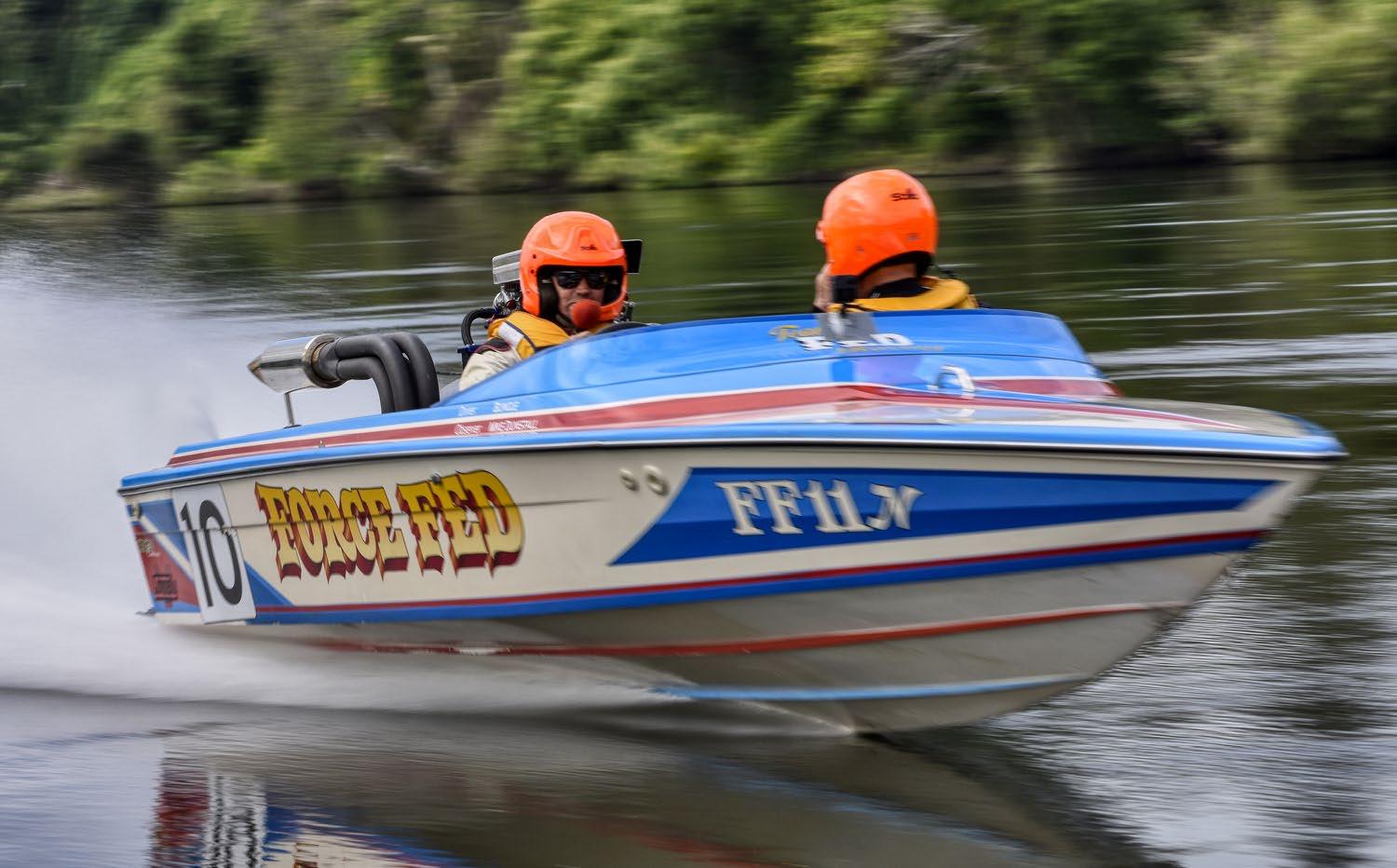
Sunday morning dawned a little overcast and with a bit of a chill in the air and first away was the powerboat sprint. Another fantastic innovation that only happens at this race with a lot of the ski race boats doing double duty in the boat race and then backing up for the ski race. In fact, it was a ski race boat that won the powerboat sprint. “Force Fed” a 19ft Connelly craft with a 8lt Chevy driven by Jeff Weake with Laurie Weake in the silly seat, who then refuelled and backed up in the open class of the ski race, towing Kyle Taylor and Mitch Horan. The action continued with thunder cats and jet skis, trying their luck on the mighty Waikato River.
Seeding for the main race on Sunday afternoon was completed, and it appeared Under Siege had their work cut out for them being down on time after leg one to Messiah by 14 seconds, so they had to battle through the wash from “Messiah,” “Raptor” and “Mayhem” if they wanted to achieve their goal of winning the 2022 NZ Bridge to Bridge.
First boat away was “Messiah” and they took full advantage of the clean river in front of them, storming from the start at Cambridge and charging their way down through the narrows and then on to Grantham Street where the crowd were on their feet. The 510cid twin turbo sounding amazing as Keven piloted the boat beautifully through the sweeping left then right sweepers through town.
Next through Grantham Street was “Raptor” in a stunning run but closely followed by the absolutely awesome “Under Siege” and “Mayhem”. “Nordic Racing” D. Mike Roger, O. Matthew Strong with skiers Connor Strong and Hayden Gunn, who had a nightmare time trial but were now coming on strong. Unfortunately for team “Mayhem” Cody Woodmass took a tumble and was unable to continue. He was checked out and realised from hospital that afternoon and later attended the trophy presentation.
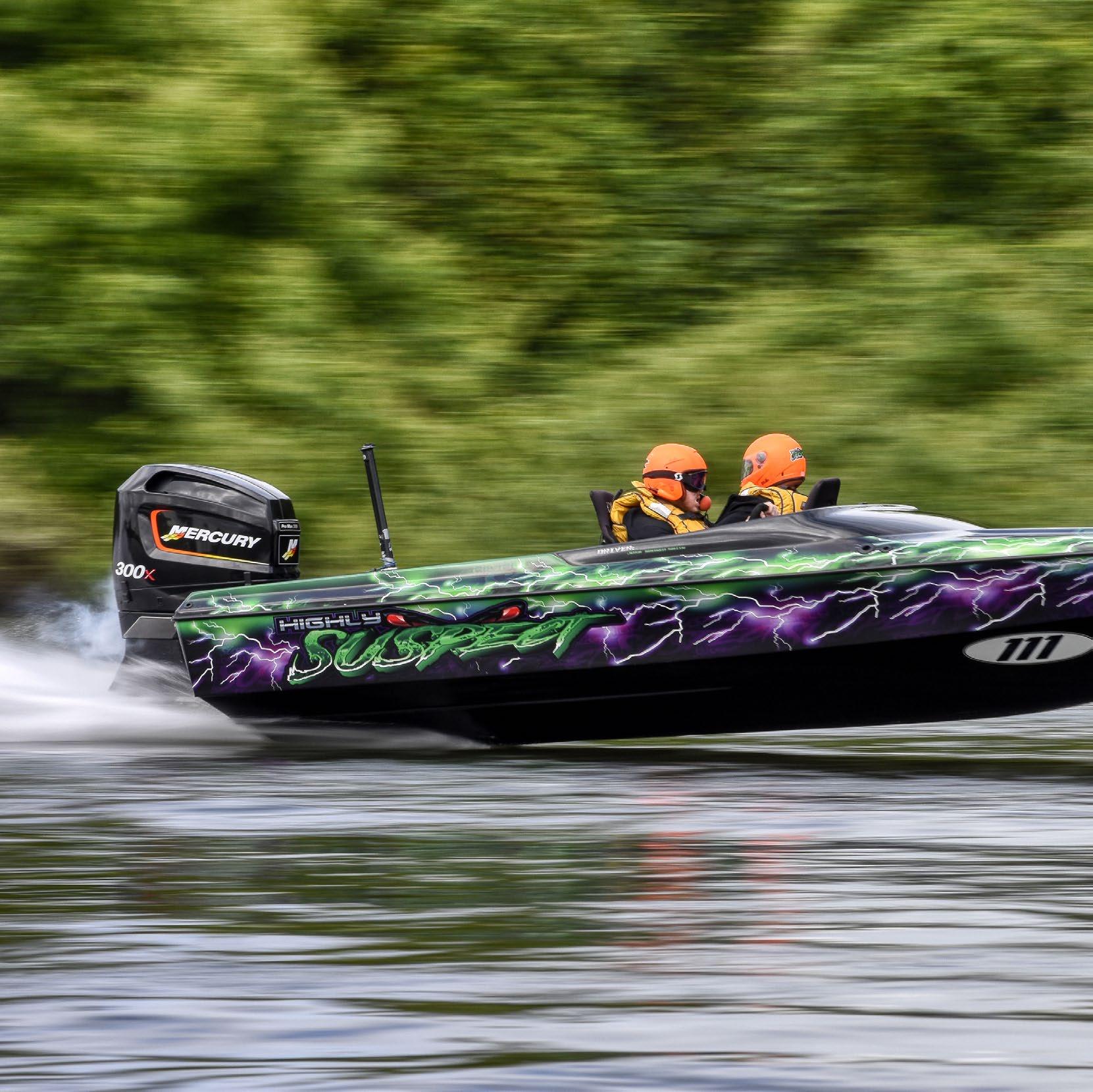
With only the return leg from Taupiri to Grantham Street left to run it was all before team Messiah to have a clean run home and try to hold off the hard charging “Under Siege”, (who had made time on them in the first leg). Unfortunately, the pressure proved too much and a missed start saw what had been a perfect weekend come to a grinding halt for the team of “Messiah”.
This left the door open for the “Under Siege” team to charge home and take a dominant win (point proven!) over “Nordic Racing”. The first outboard home was “Raptor”, appropriately powered by the major sponsors product Yamaha!
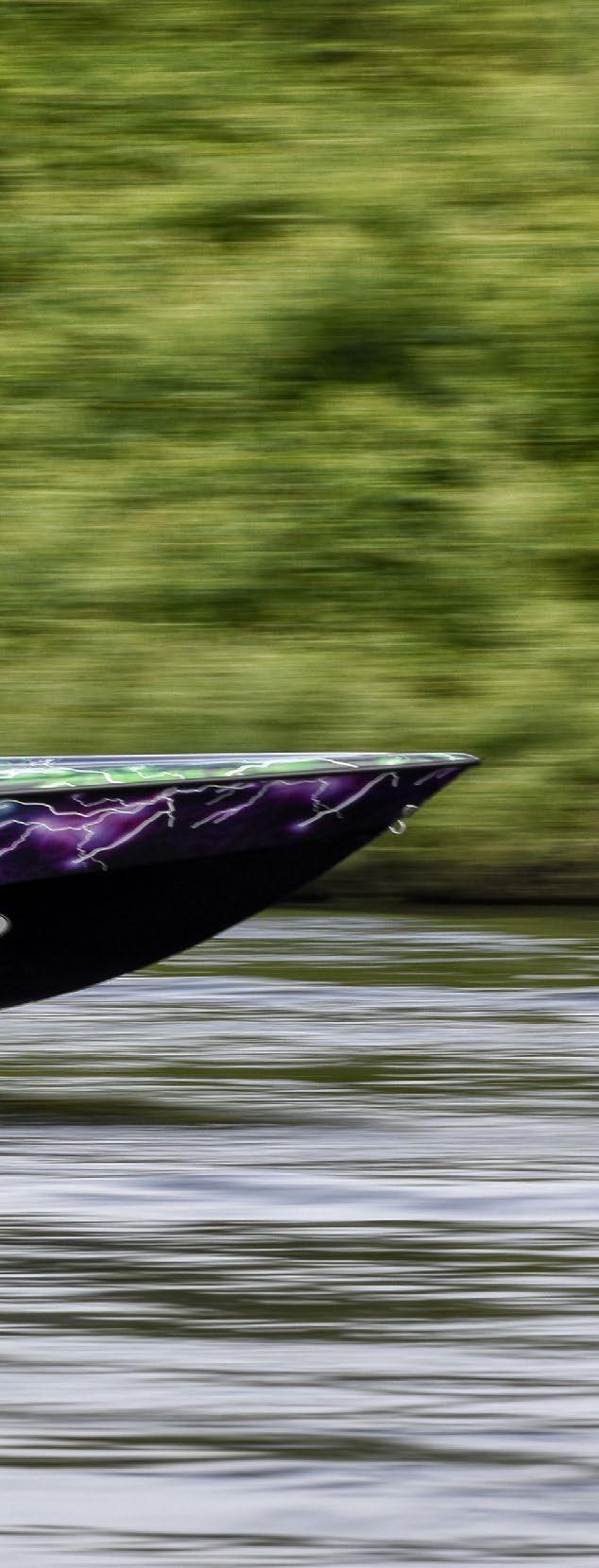
There were many stand out performances over the weekend, but for this commentator, it was the atmosphere and the camaraderie between teams and countries that stood out. The Australian TransTasman team did themselves proud and achieved some stunning results.
Full results will be posted to the NZ Water ski racing site at http://skirace.co.nz/
Team “Under Siege” dedicated their win to Daniel “Boon” Campbell and Zac Welch.
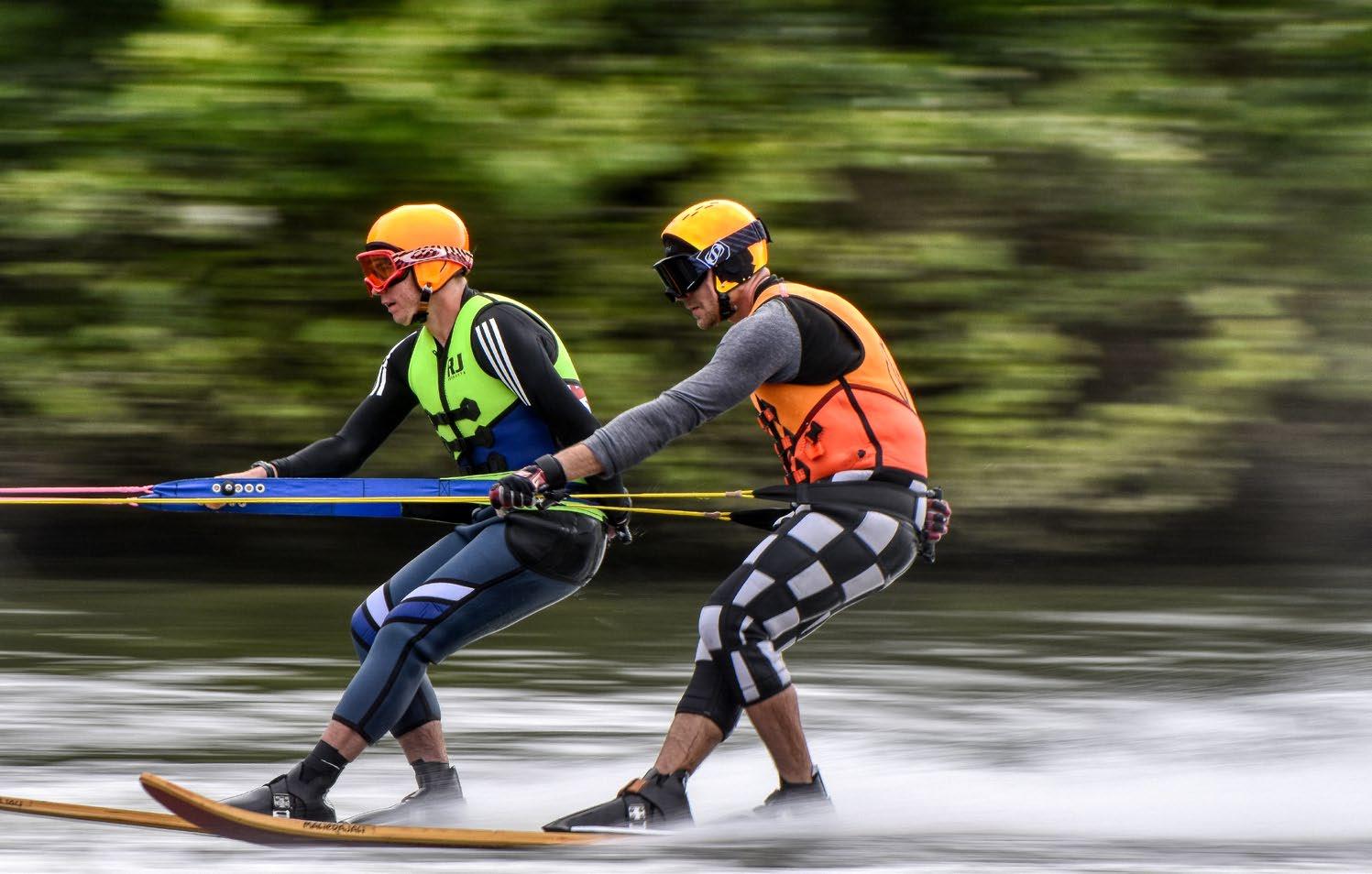

Melbourne based anchoring system manufacturers Lone Star Marine are proud to release the new HAULMASTER 1500 range.
The HAULMASTER 1500-PH features a proprietary 300mm power sheave and knurled capstan. The HAULMASTER power sheave grips rope from 6-14mm in diameter with zero slippage even when stopped, and has a retrieve rate up to 50m per minute. This self-tailing line hauler does not require tension from the operator for retrieval and lines can be coiled into a barrel or fish box to keep your deck tidy & clear.
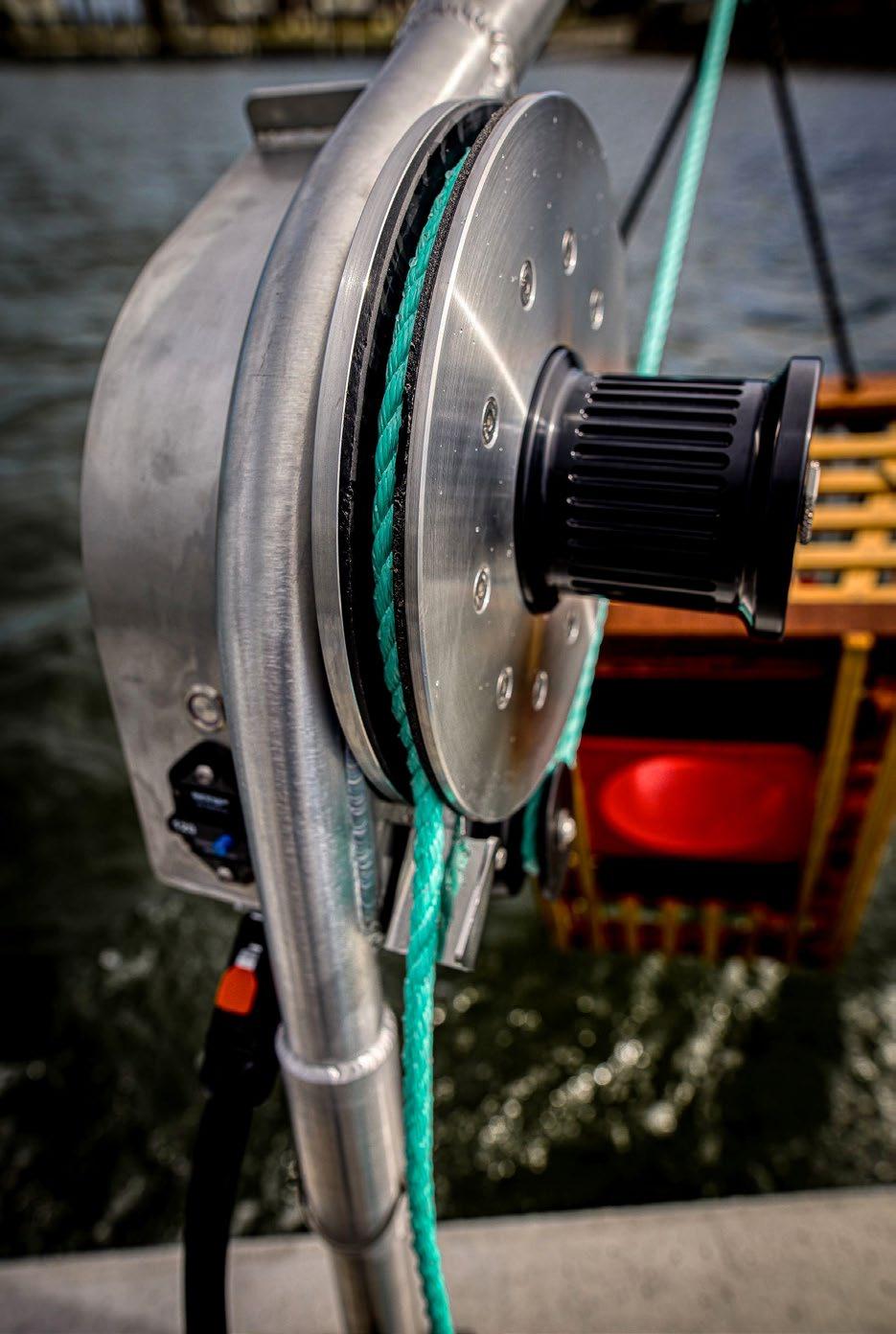
The capstan component can be used for a more traditional approach if a slower speed, extra heavy loads, or line slippage is required.
The HAULMASTER 1500 is a modular line hauling product capable of pulling pots, drop lines, long lines, deep dropping, and down rigging, all in the same unit. Long Line (with drag), Deep Dropping (with drag), and down rigging (fixed), spools are all available and duties can be swapped with 1 bolt in under a minute. This three-piece unit is very heavily built, featuring marine grade T5 aluminium with a 50mm OD frame with 6mm wall thickness. The frame post and boom can be shortened to suit your vessel and usage.
The HAULMASTER 1500-PH includes the main unit, removable boom, removable frame post. a 5-meter 120 amp capable lead with IP67 plug, pivot lock, pot hook, Folbe sheave, and all mounting hardware for both through gunnel or inside gunnel installation options. The unit is fully self-contained with no relays or switches hard wired to your boat.
The HAULAMSTER 1500 is available now through all authorised Lone Star Marine dealers.


For more information visit: www.lonestarmarine.com.au

See more and catch more with the new HDS® Pro, giving you the clearest and mostdetailed views with new, higher-resolution ActiveTarget® 2 Live Sonar and new, ultra high-definition Active Imaging™ HD.
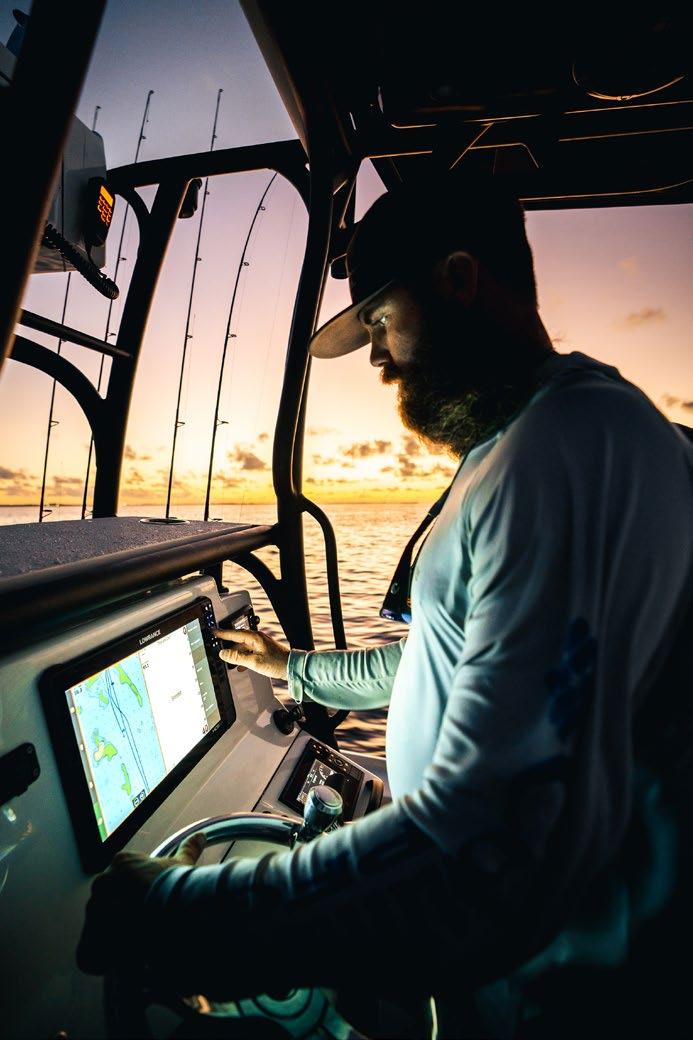
Our clearest sonar ever, Active Imaging™ HD delivers high-definition views of Lowrance CHIRP sonar, SideScan and DownScan Imaging™. FishReveal™ has also been expanded to be available on SideScan* and DownScan, making fish easier to identify to the sides and beneath the boat. (*Requires S3100 Module)
ActiveTarget® 2 Live Sonar provides higherresolution views of fish movement and structure. It also supports plug-and-play installation of two ActiveTarget® systems, making it possible to watch multiple views simultaneously, and to widen Front and Scout modes for better bait tracking.
The better your view, the better your fishing. From the high-definition touchscreen display to the high-level clarity of the newlyenhanced Lowrance sonar, HDS® Pro delivers a full range of meaningful underwater views that will take your fishing experience from good to great.

The SolarMAX™ HD touchscreen provides stunning images of fish, structure and chart details that are easy to see from any angle, in direct sunlight and through polarized lenses – a real difference maker on the water. See unmatched clarity on-screen with Lowrance’s superior, high-resolution Active Imaging™ HD sonar and ActiveTarget® 2 Live Sonar technologies.
For more information visit: www.lowrance.com



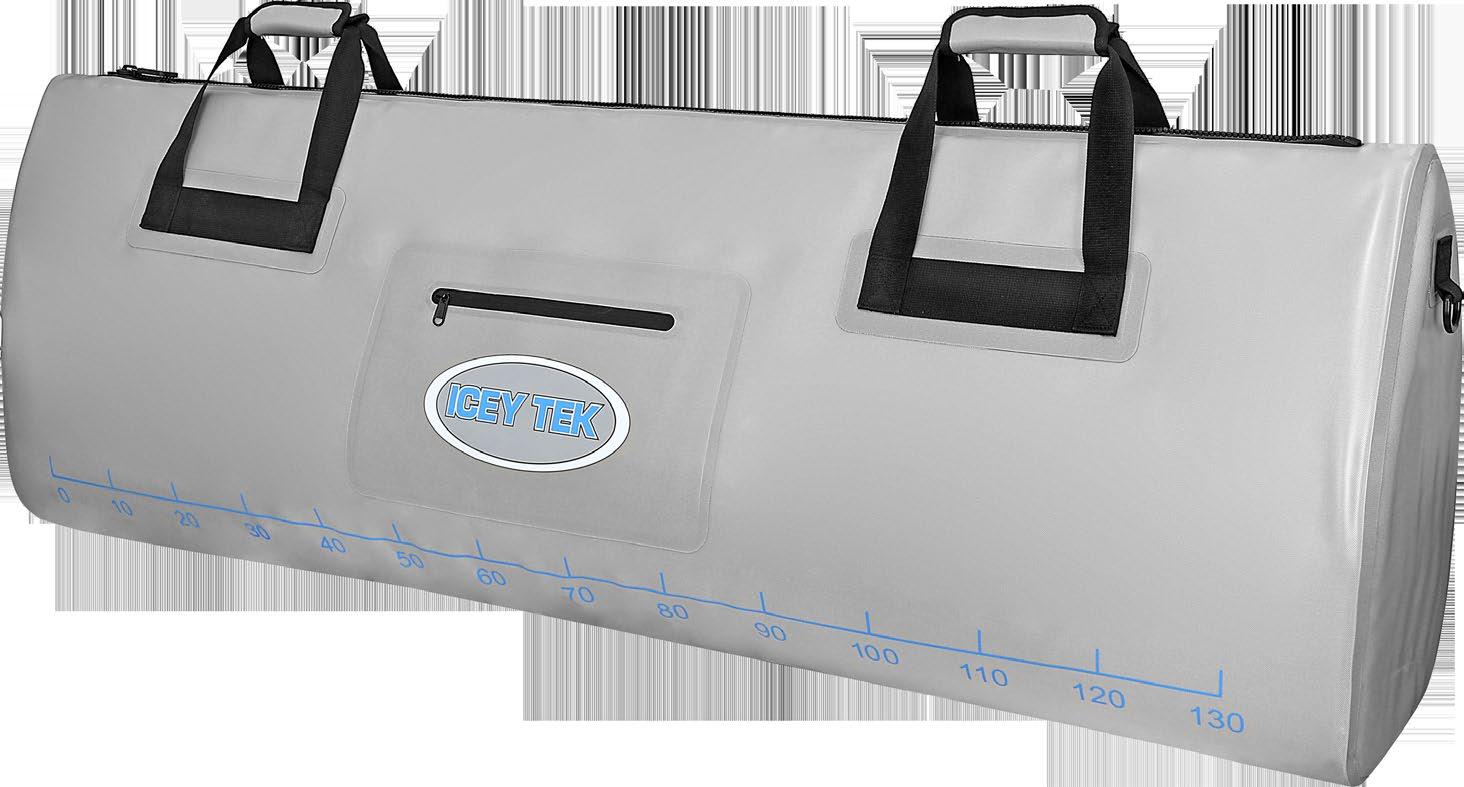


Mercury Marine, a division of Brunswick Corporation (NYSE: BC), introduced the industry’s first ever V10 outboard with the official launch of its all-new 5.7L 350 and 400hp Verado® outboard engines.
Consistent with the award-winning Verado brand, the new V10 engines are the quietest and smoothest in their class, running 45 percent quieter than a leading competitor at cruise. In addition to noise vibration harshness (NVH), the new Verado’s are compatible with the latest Mercury SmartCraft® technologies.
Mercury Marine President Chris Drees said, “The all-new Mercury V10 Verado outboards are exactly what boaters have been asking for in a 350 and 400hp platform.”
“They are powerful, smooth, and quiet. They have many of the same fuel efficiencyenhancing features that are synonymous with our high-horsepower line-up.”
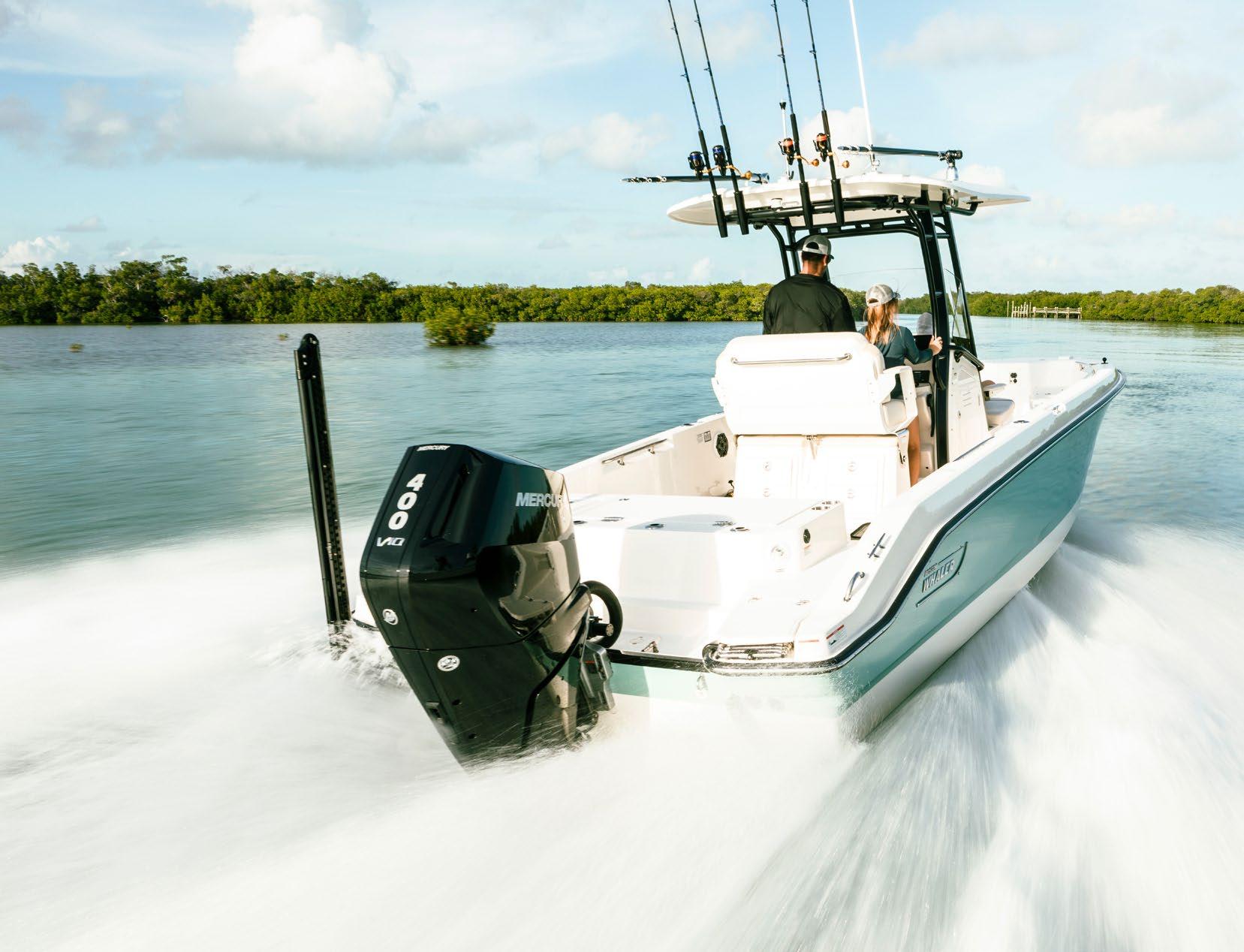
The V10 Verado outboards leverage many of the same market-leading features and technologies boaters love about the company’s popular V12, V8 and V6 platforms. The new V10 includes premium refinements and versatility for a wide range of applications, from large saltwater centre consoles to single-engine freshwater fishing boats to pontoons and smaller centre consoles.
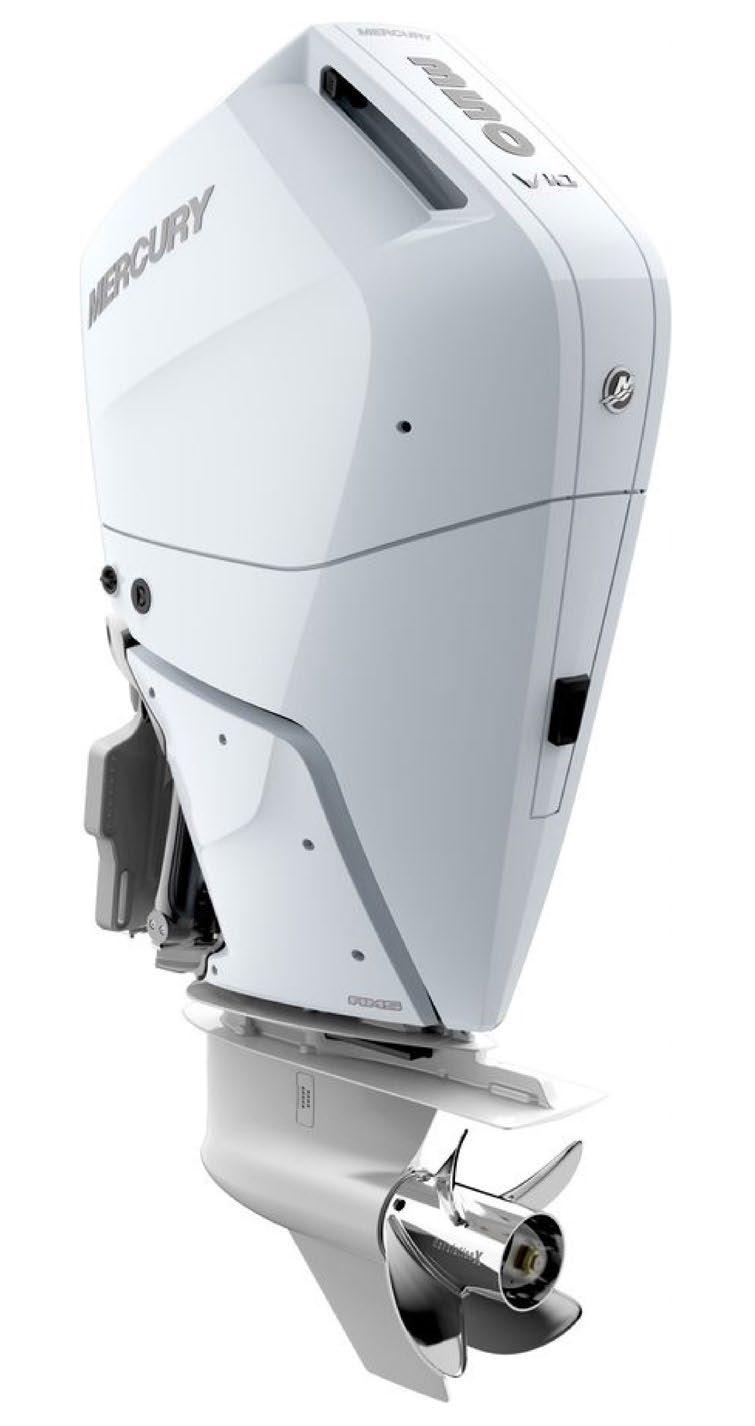
Weighing only 316 kilograms and with the same industry-leading 26-inch mount spacing as the V8 outboards, the V10 engines maximise compatibility with current boat designs. This lightweight, compact design provides the performance boaters are looking for and makes them perfect for multi-engine applications or re-powering vessels.

The New Mercury V10 Verados will be available in Australia and New Zealand from April 2023.
For more information visit www.MercuryMarine.com




